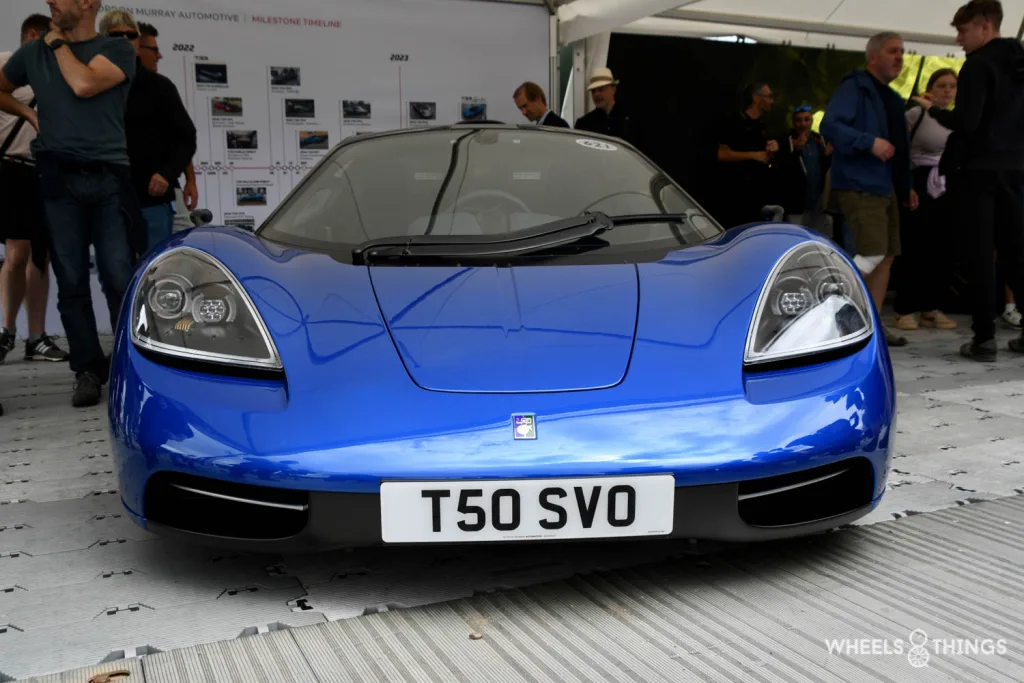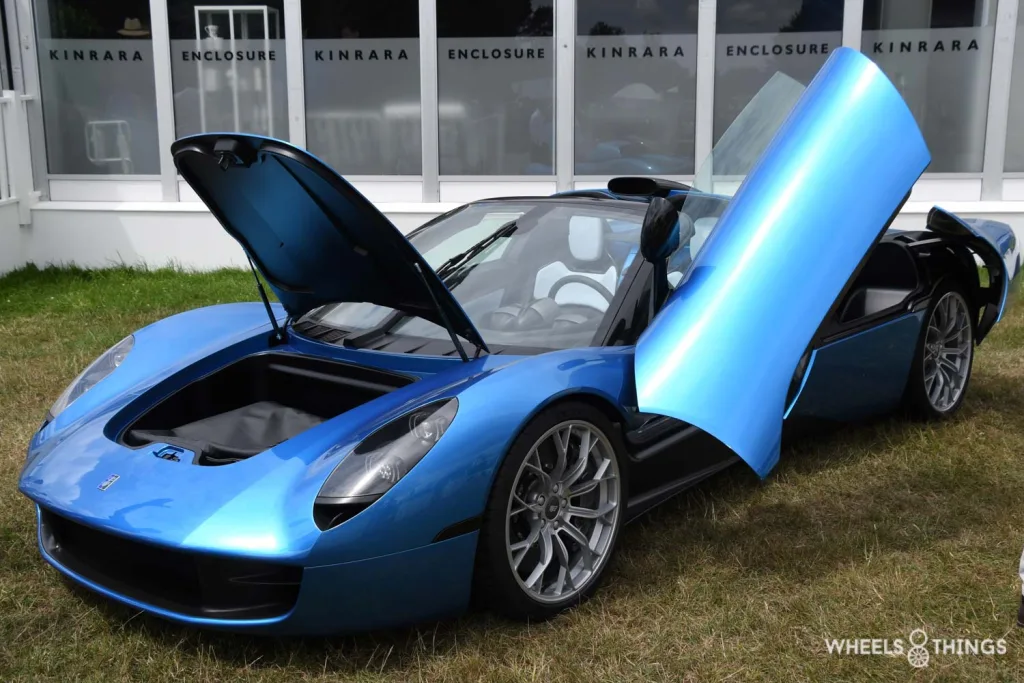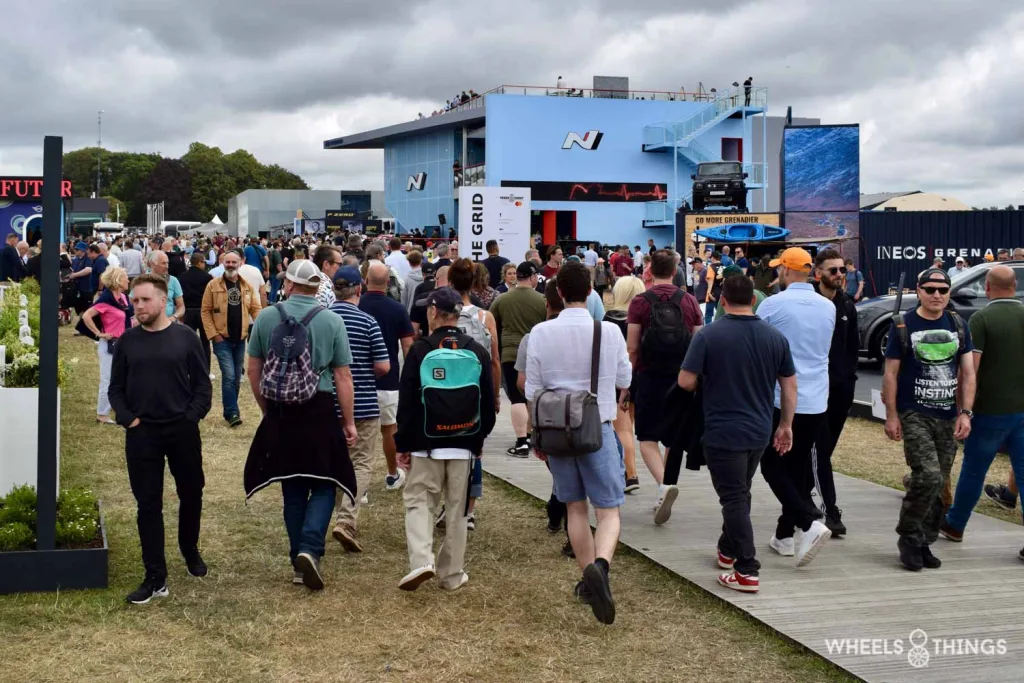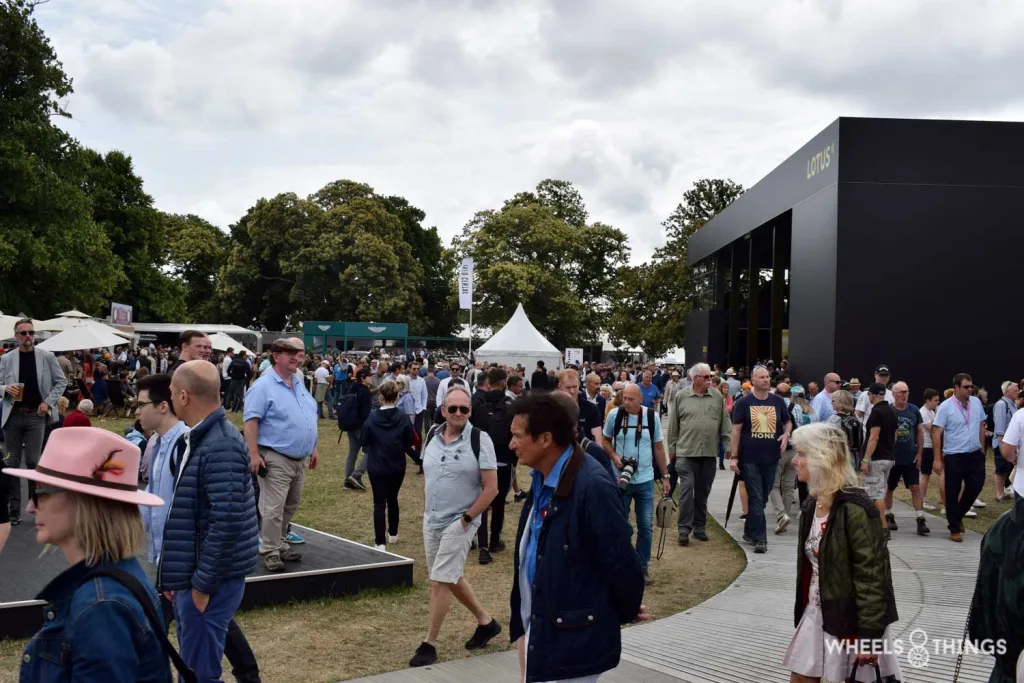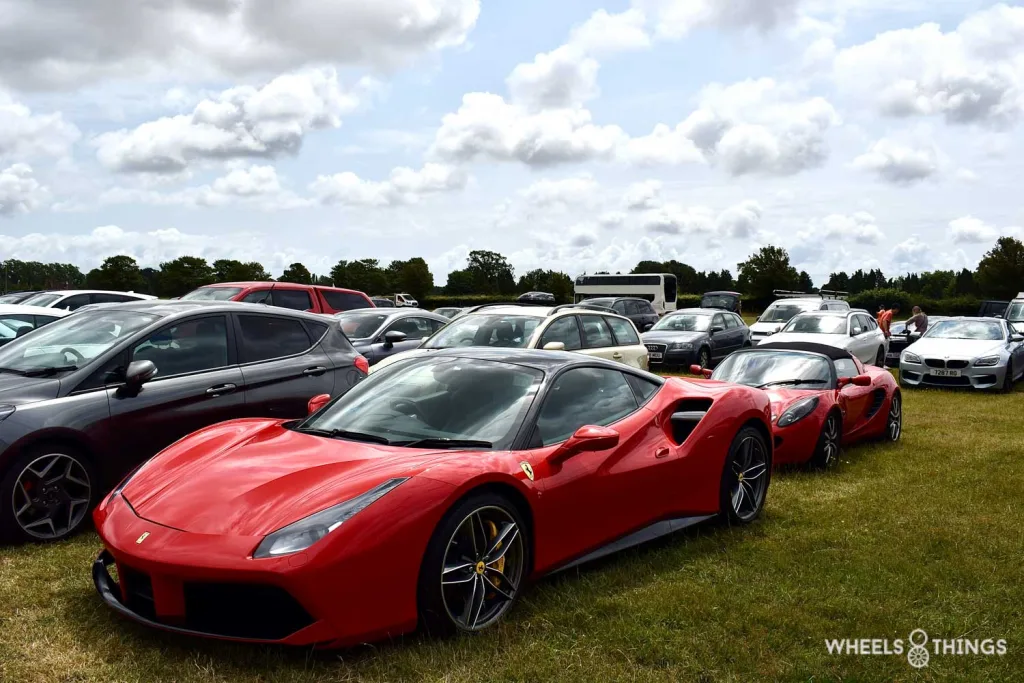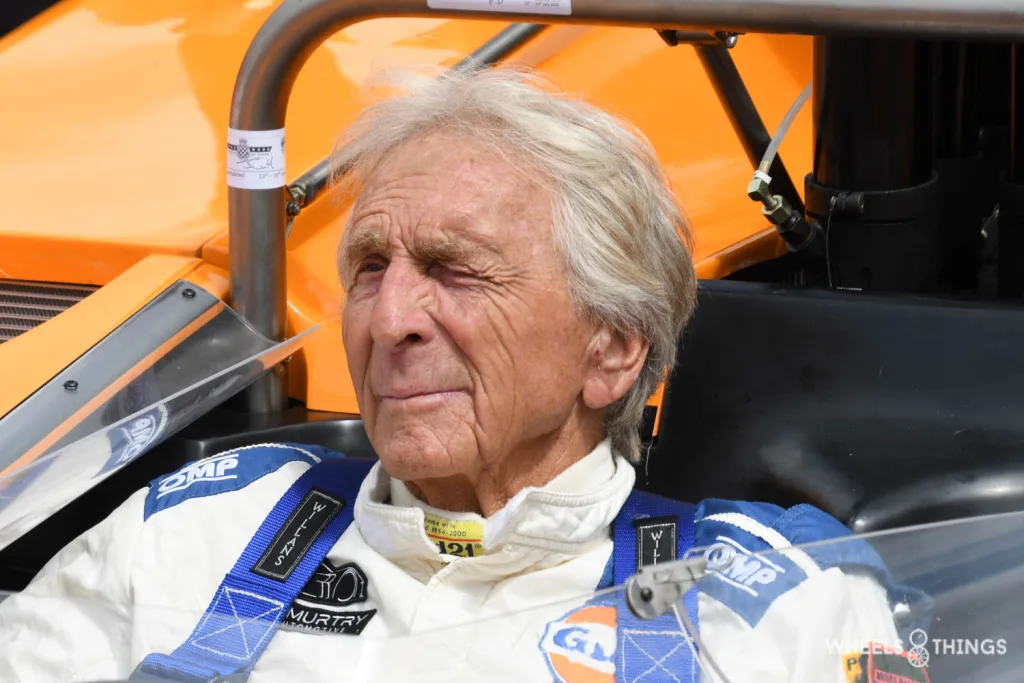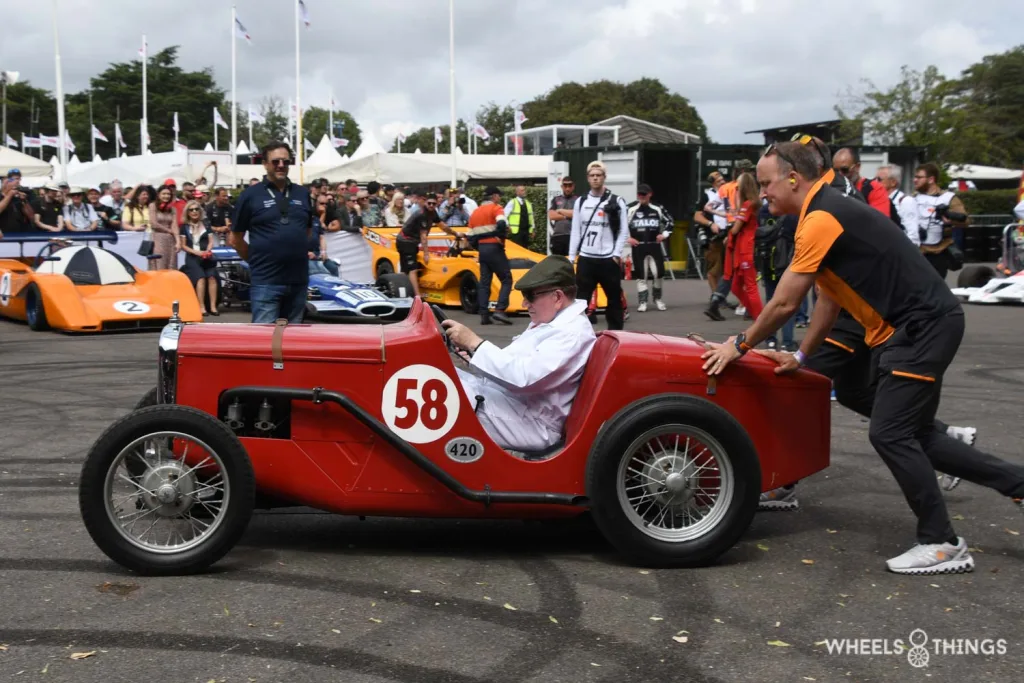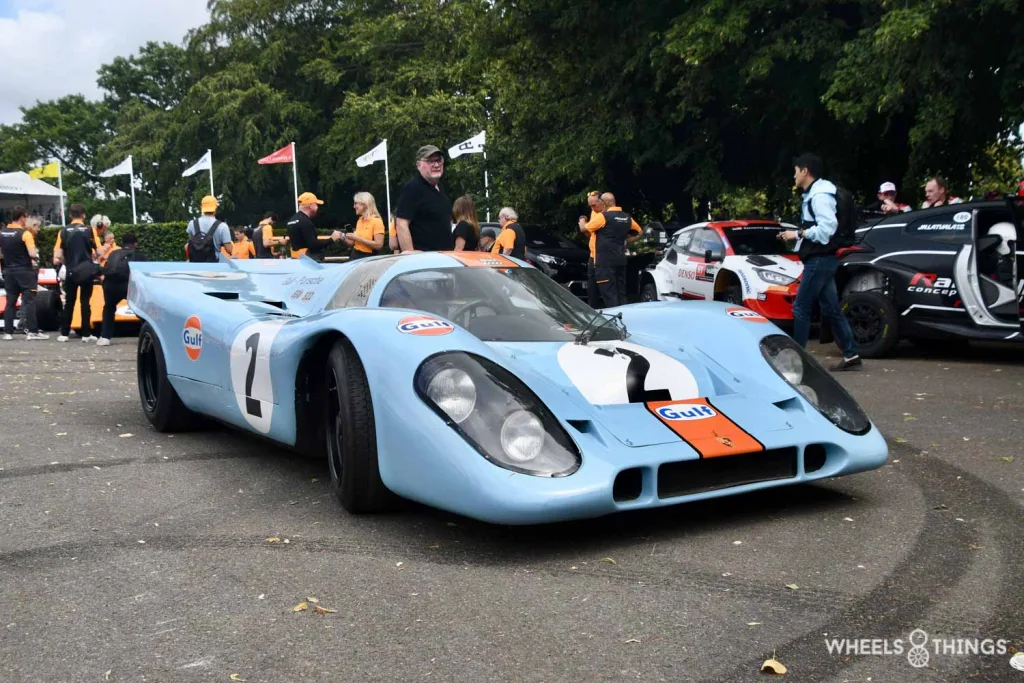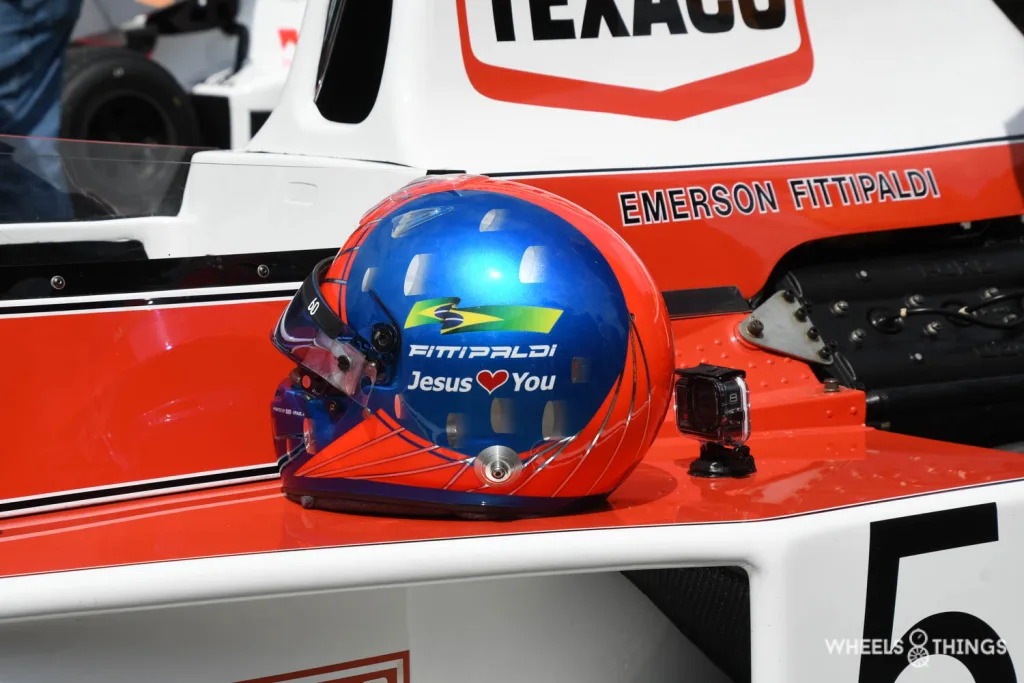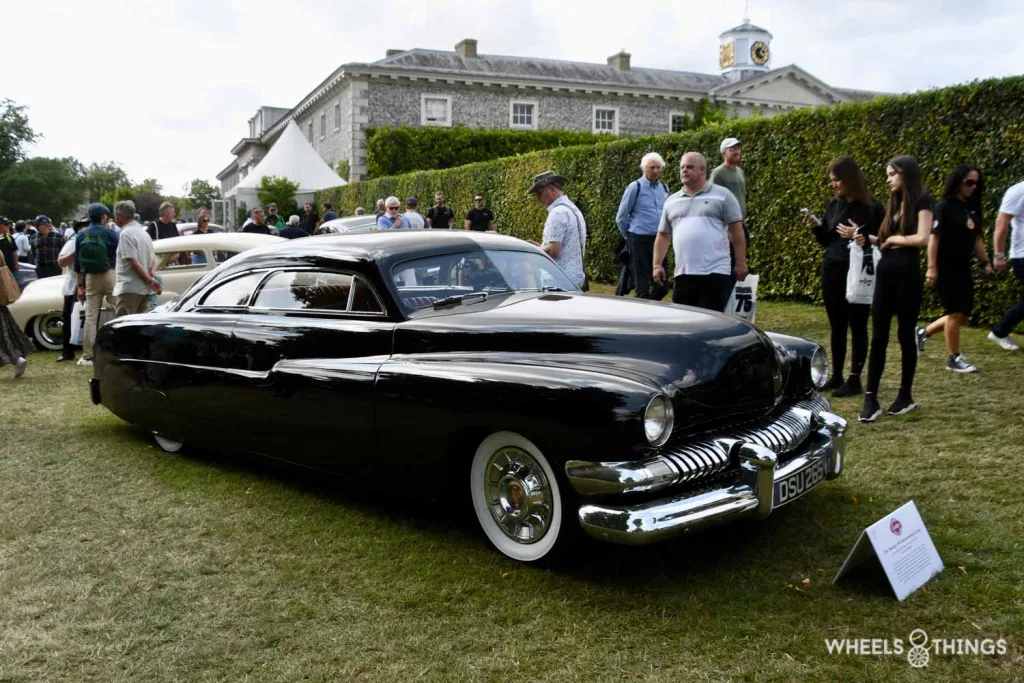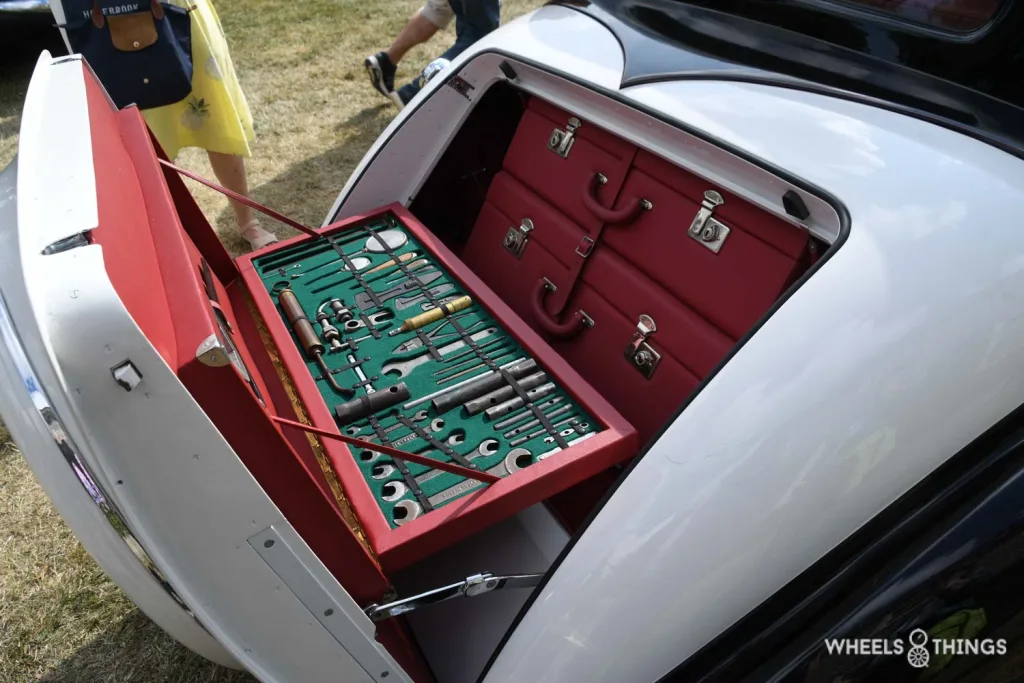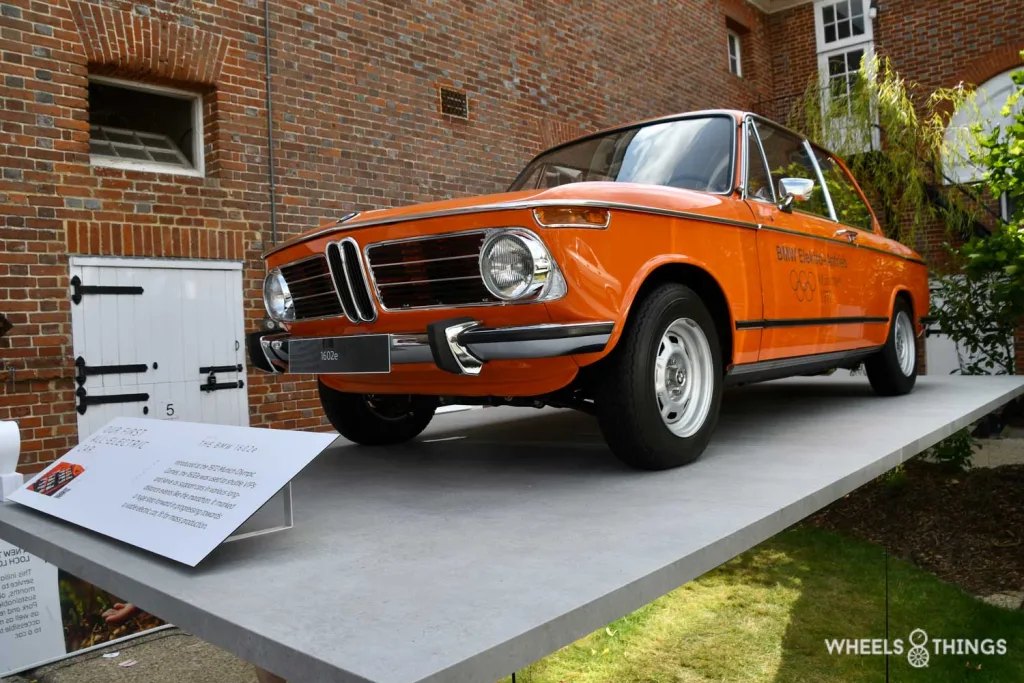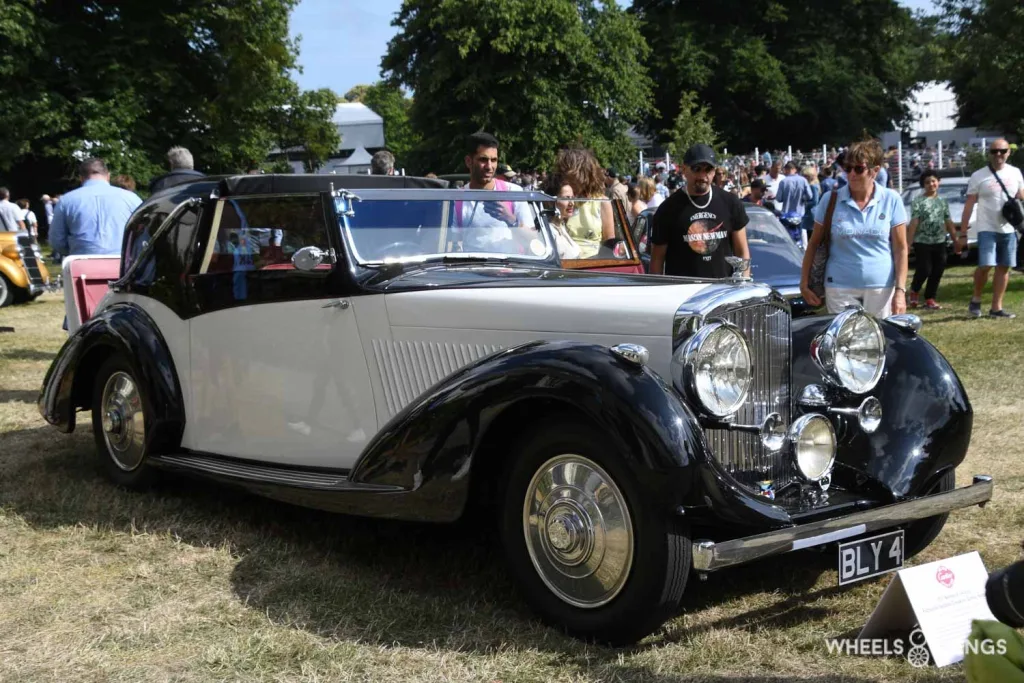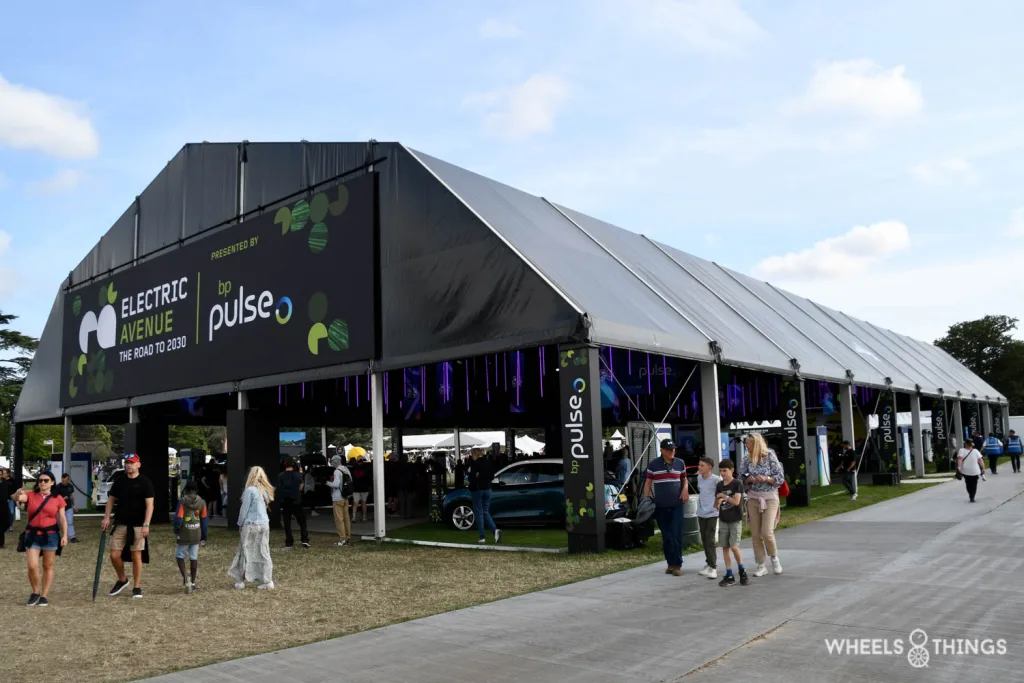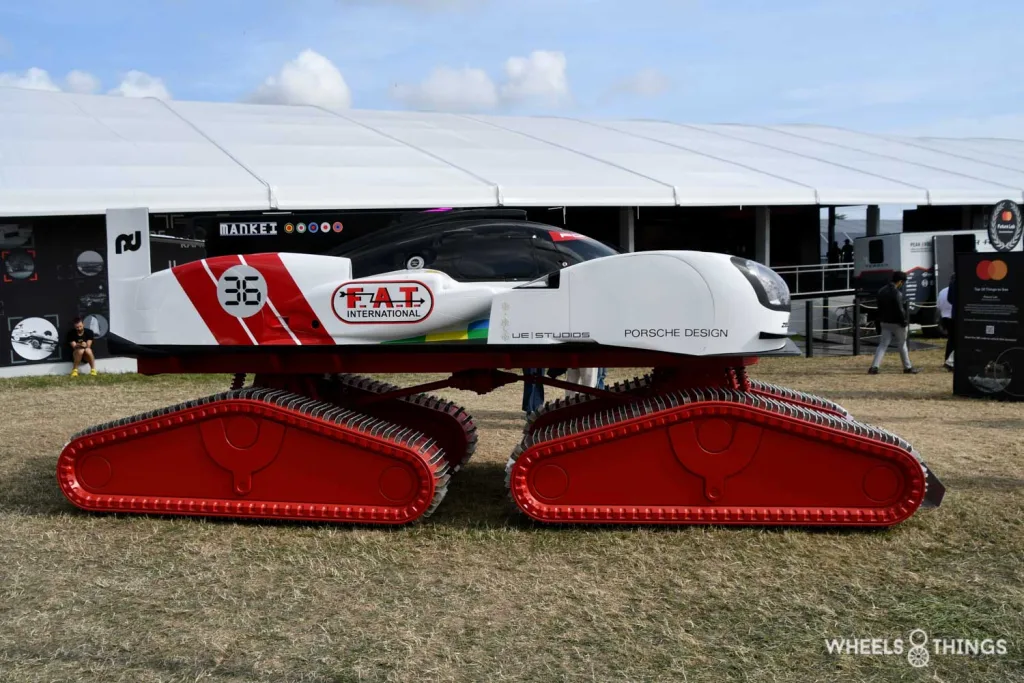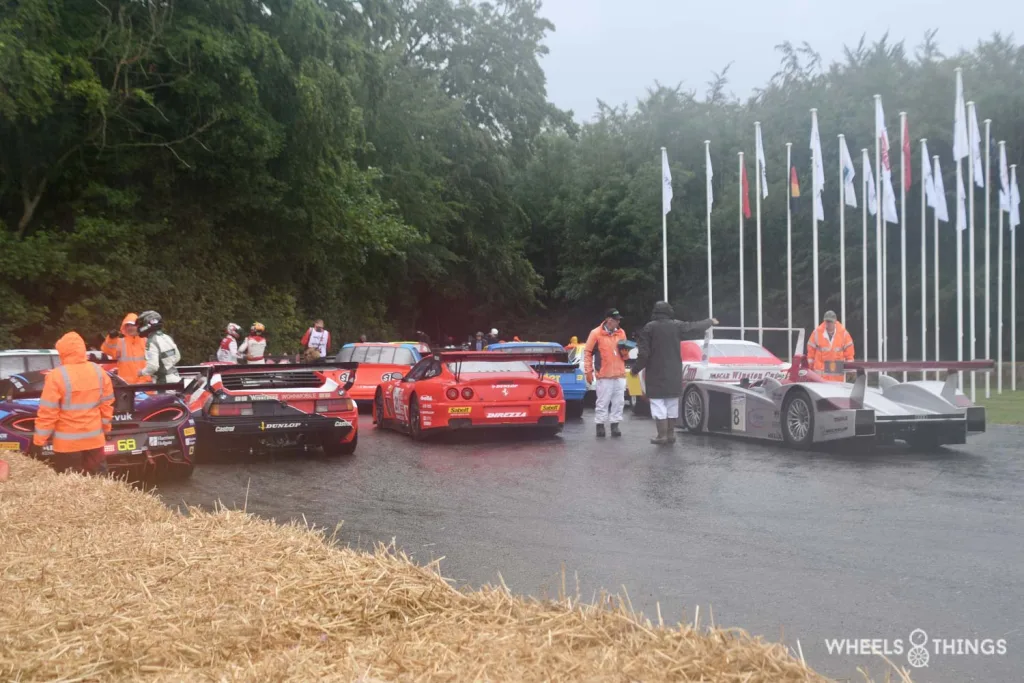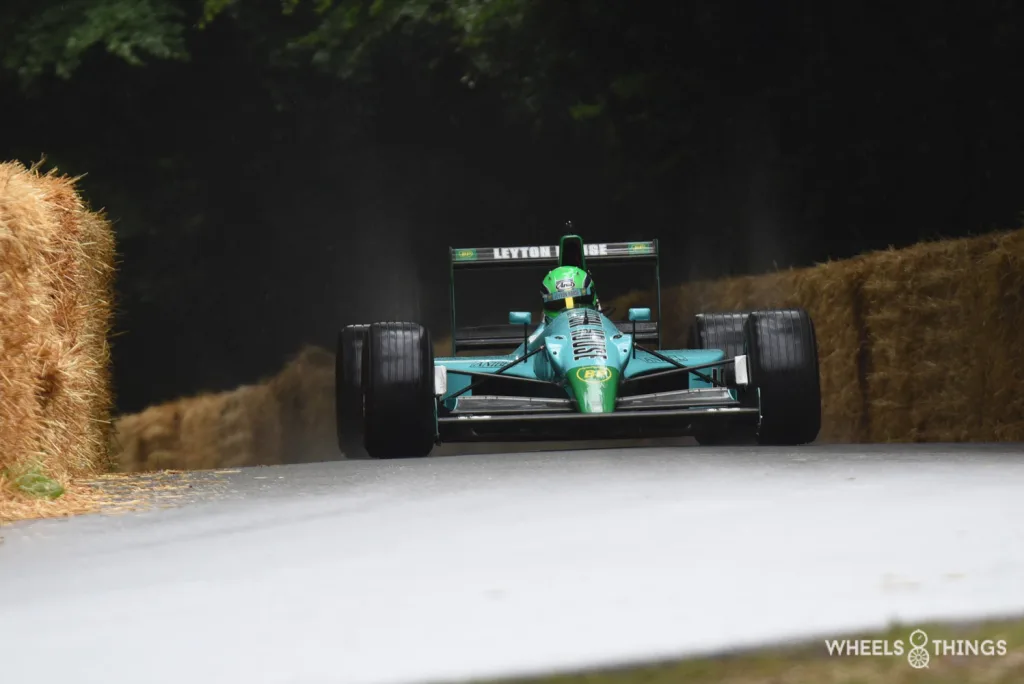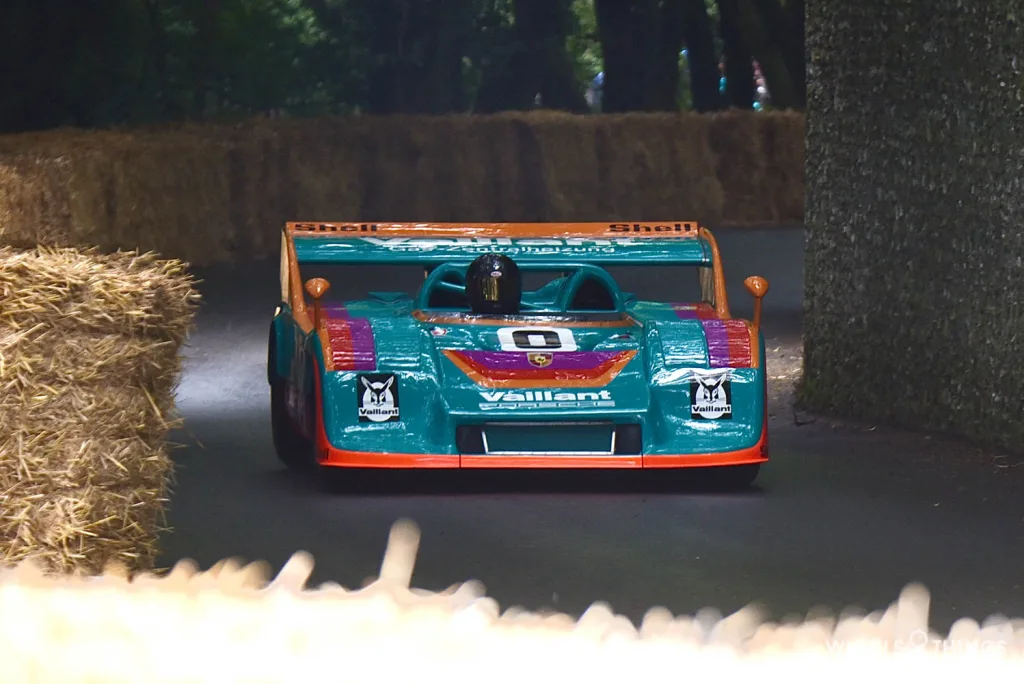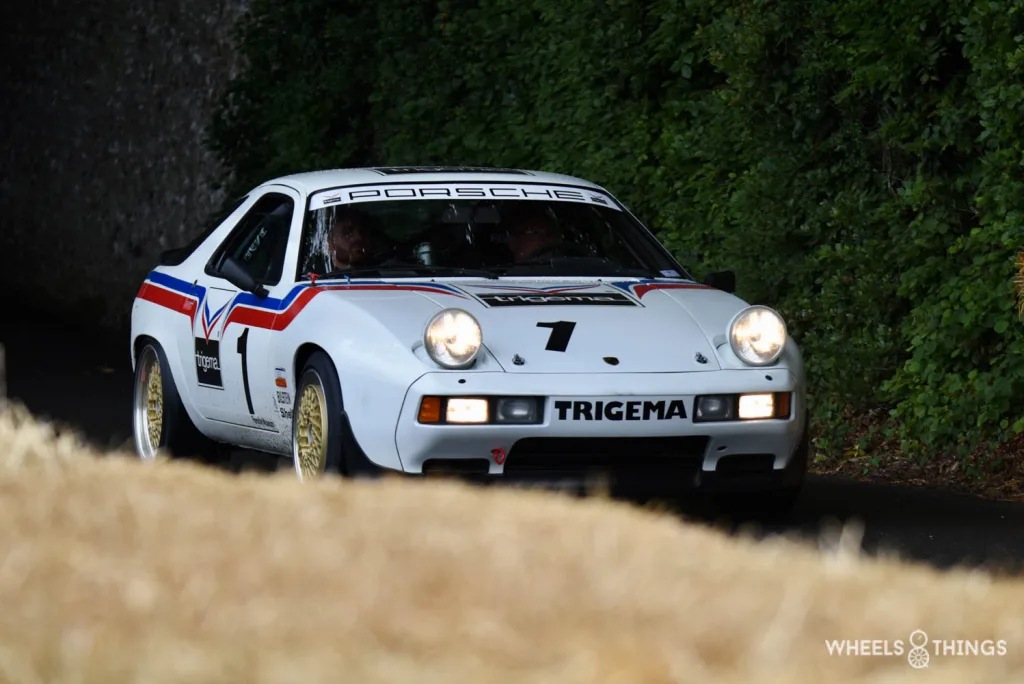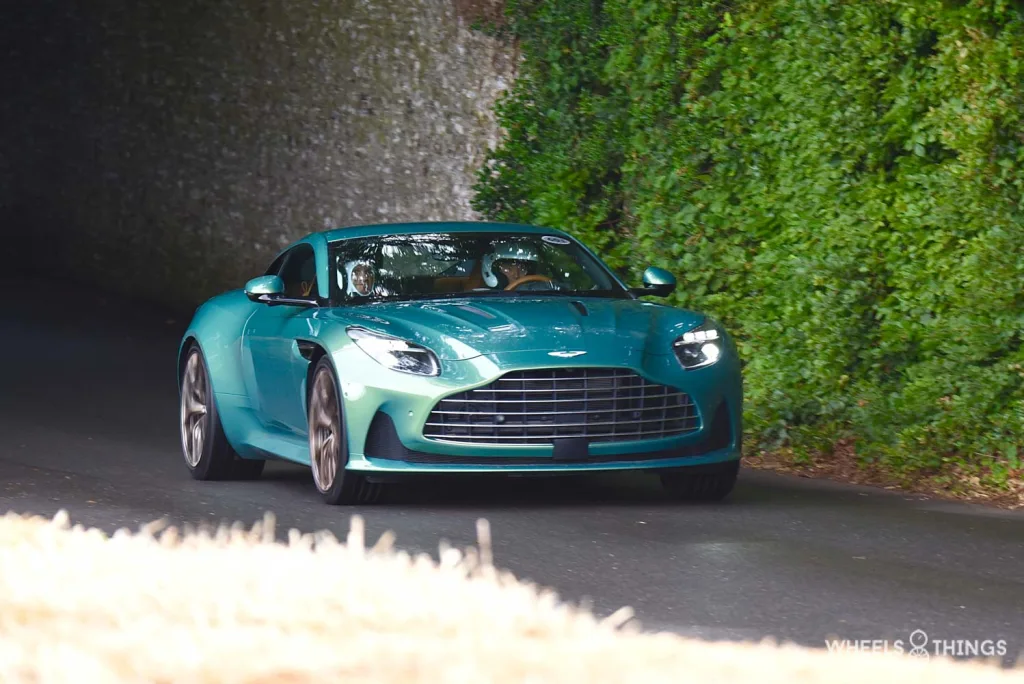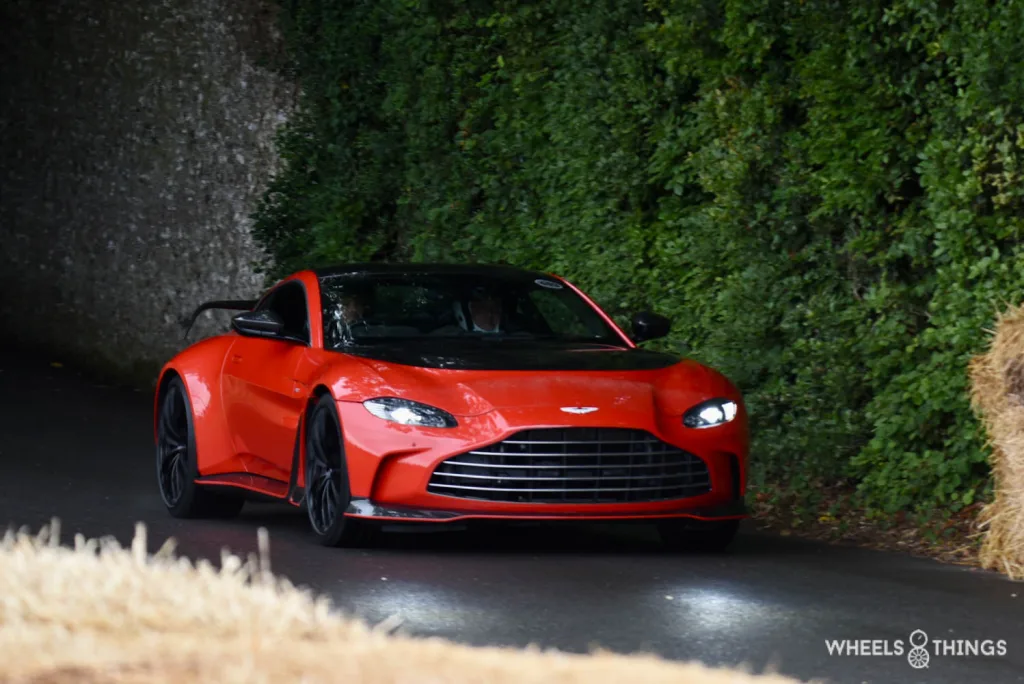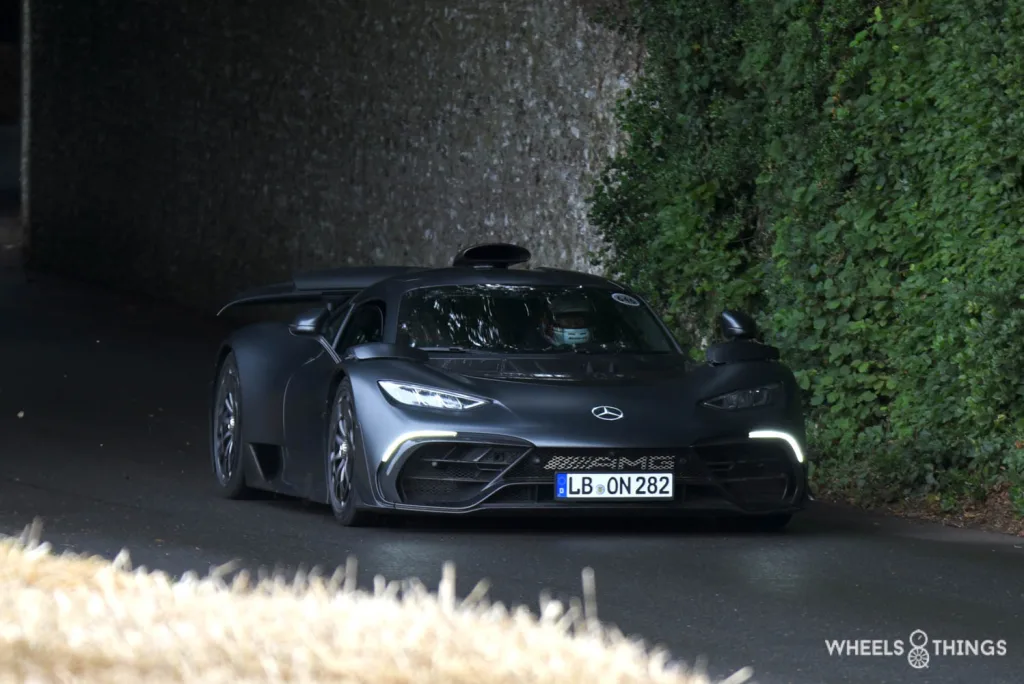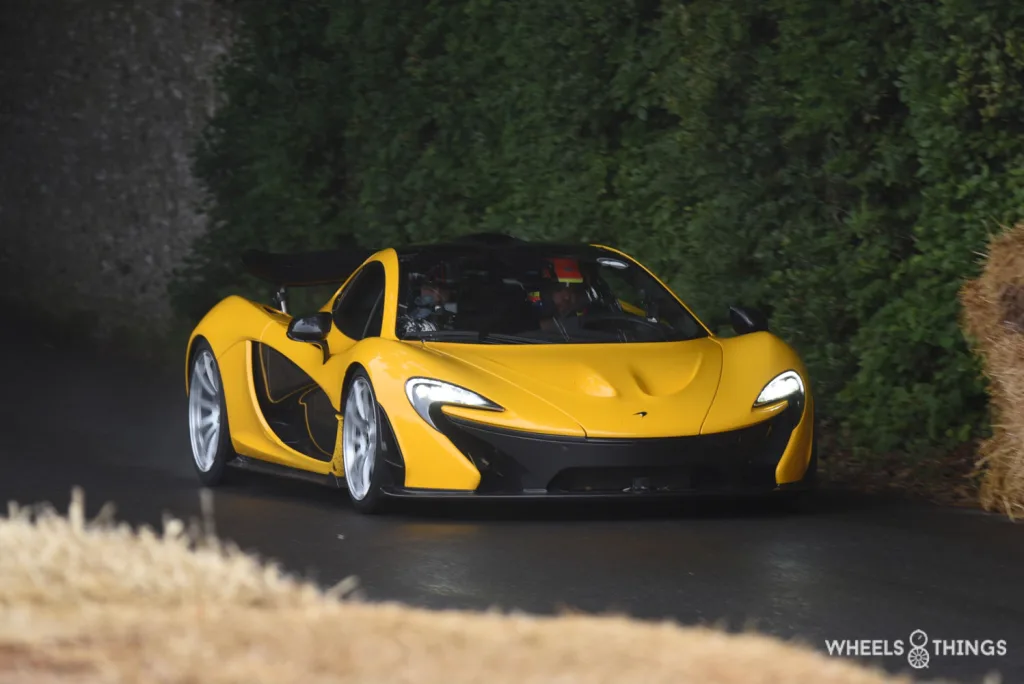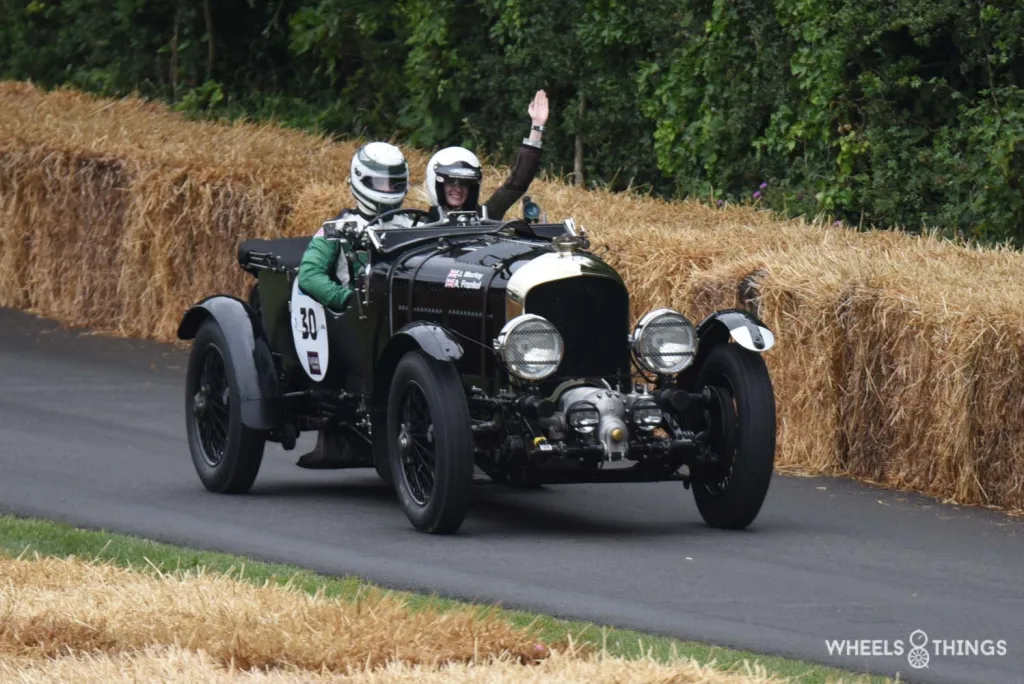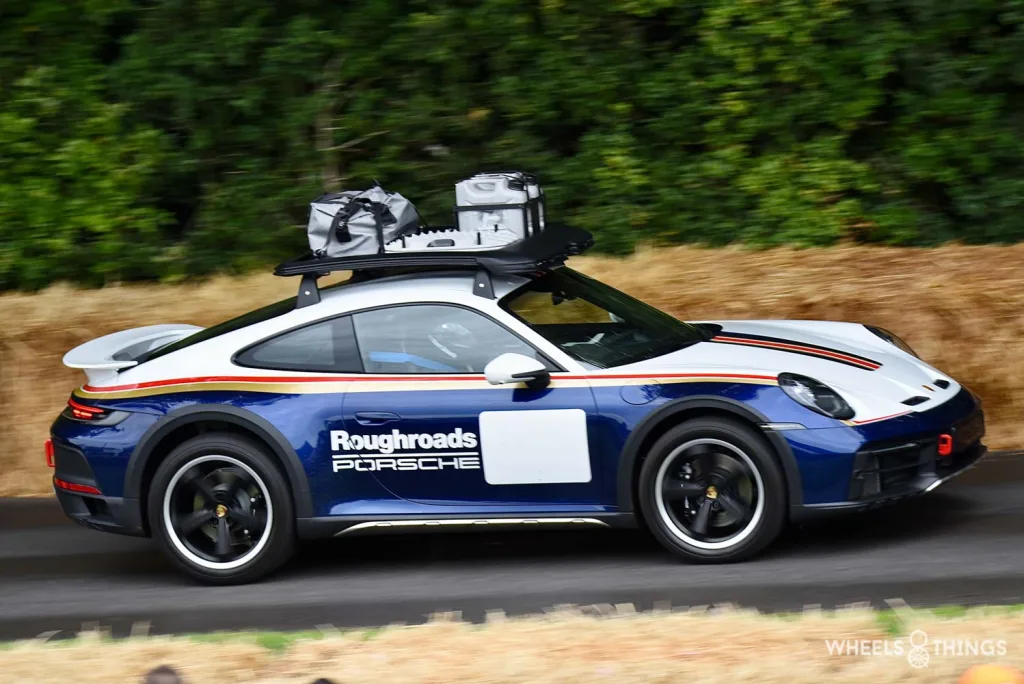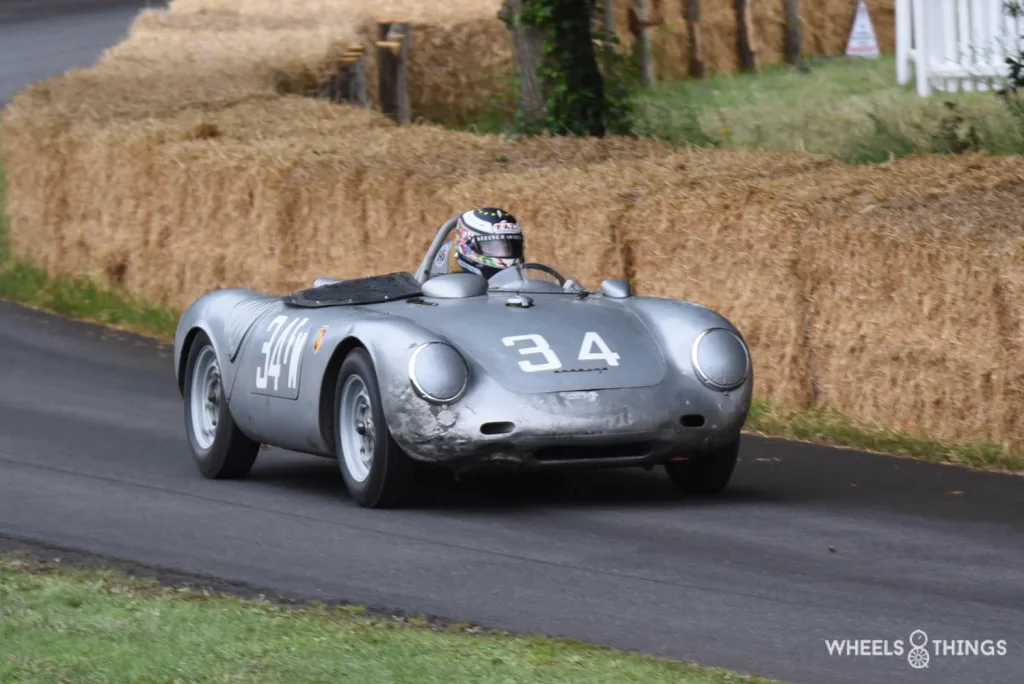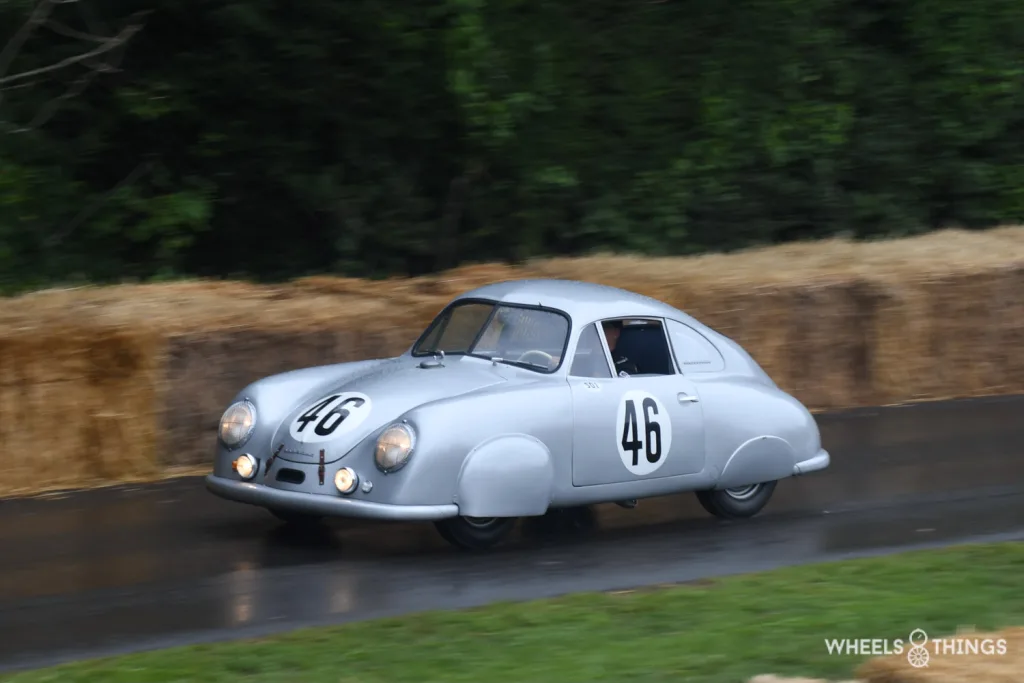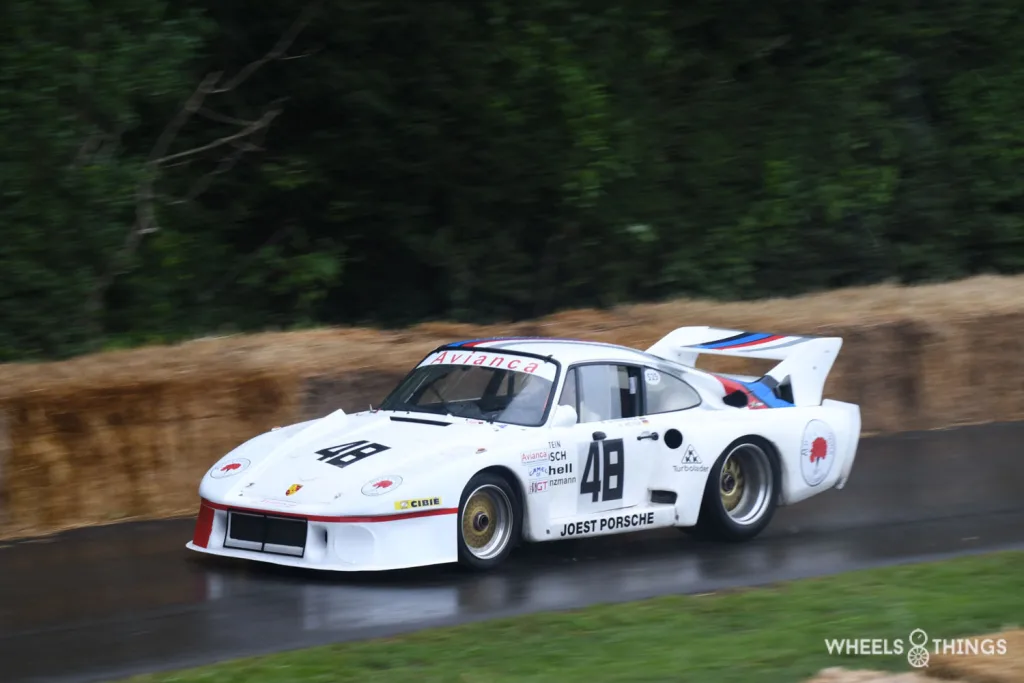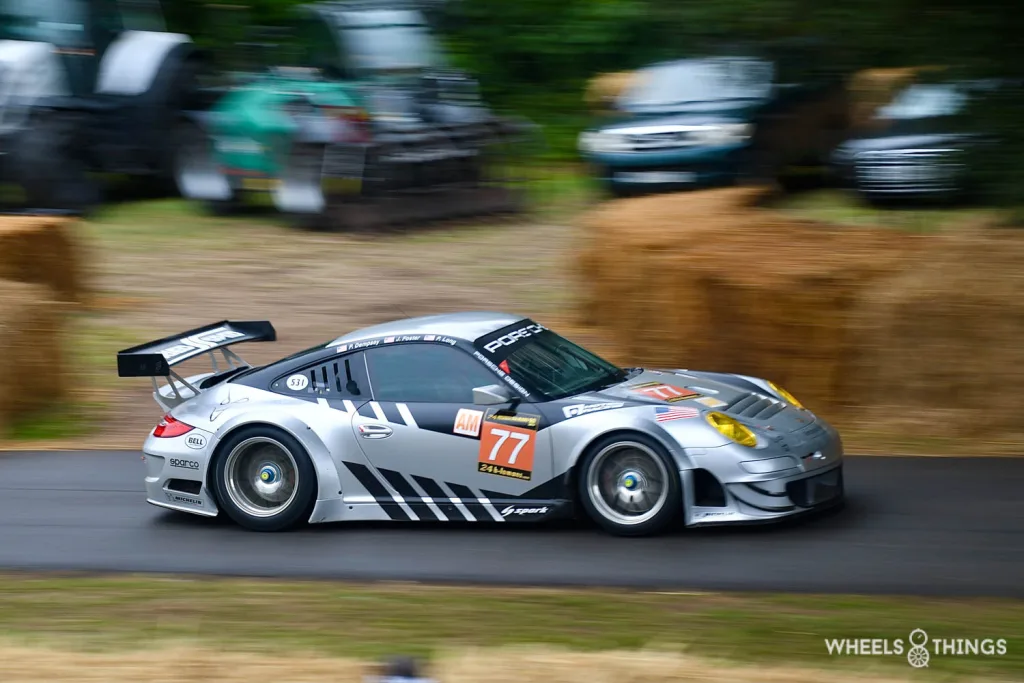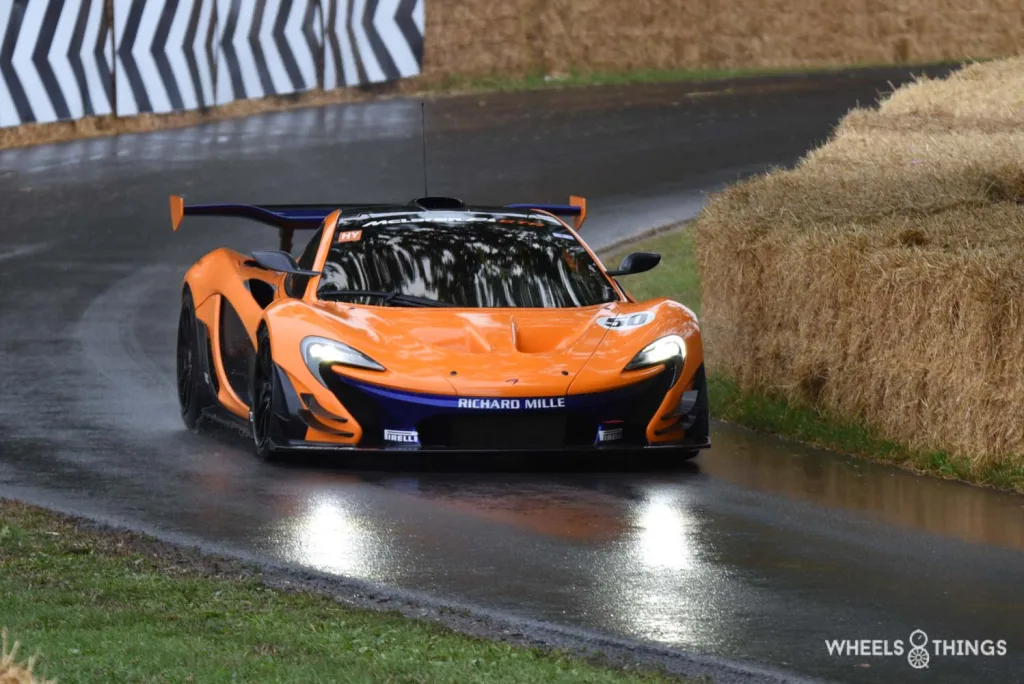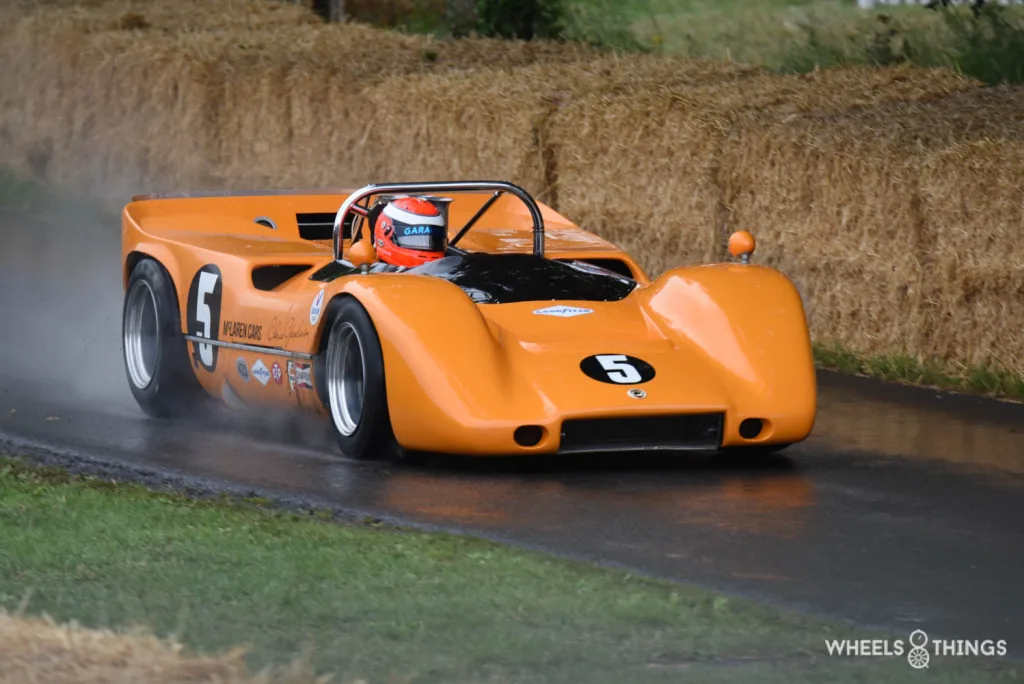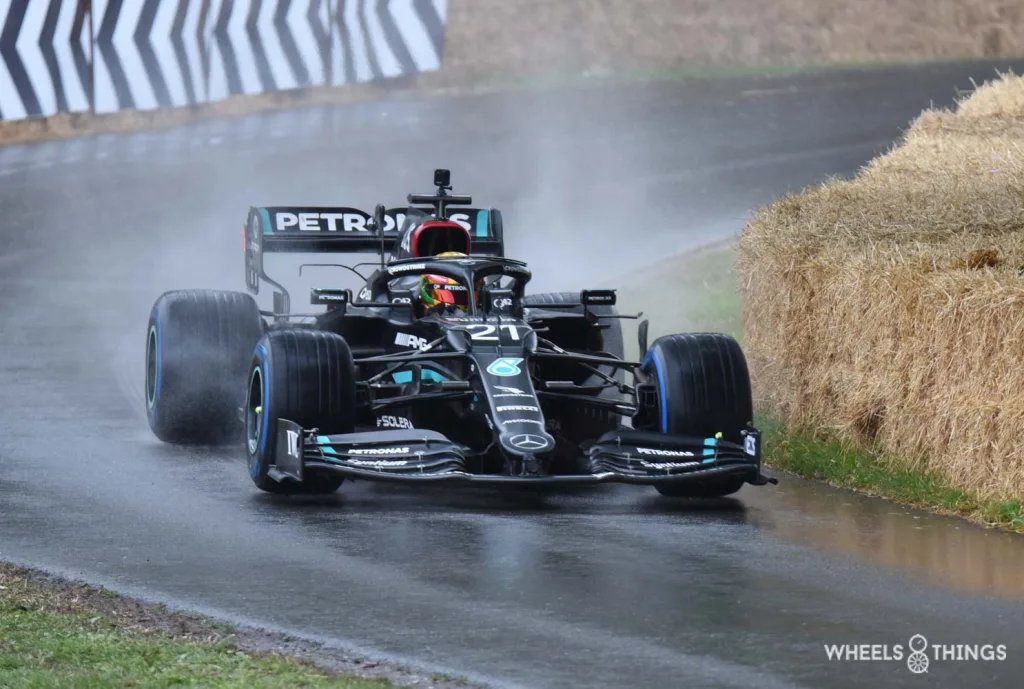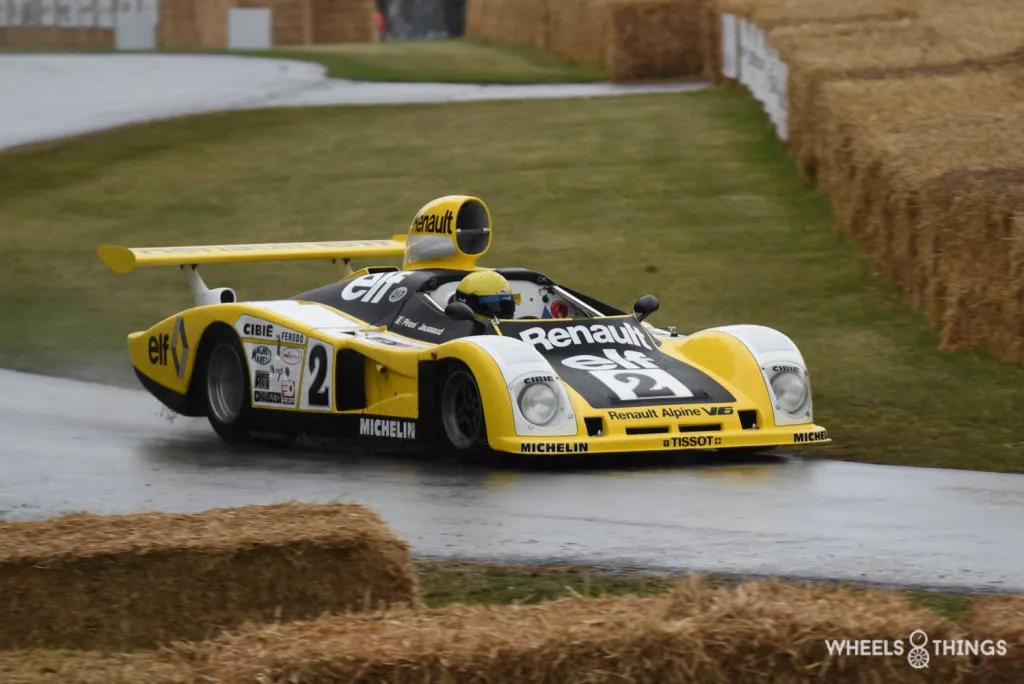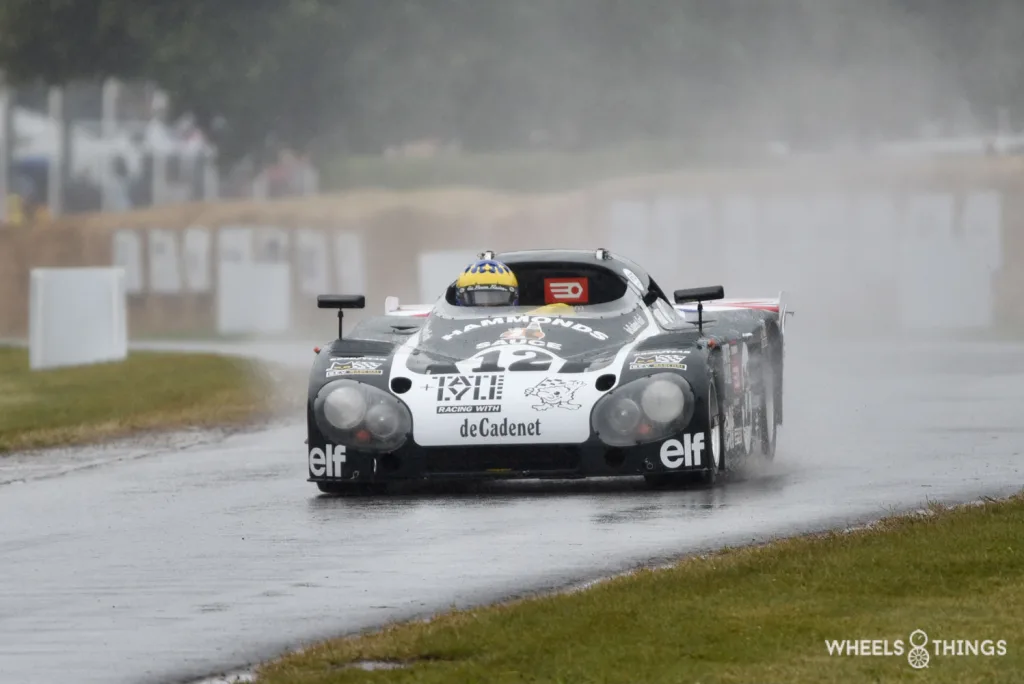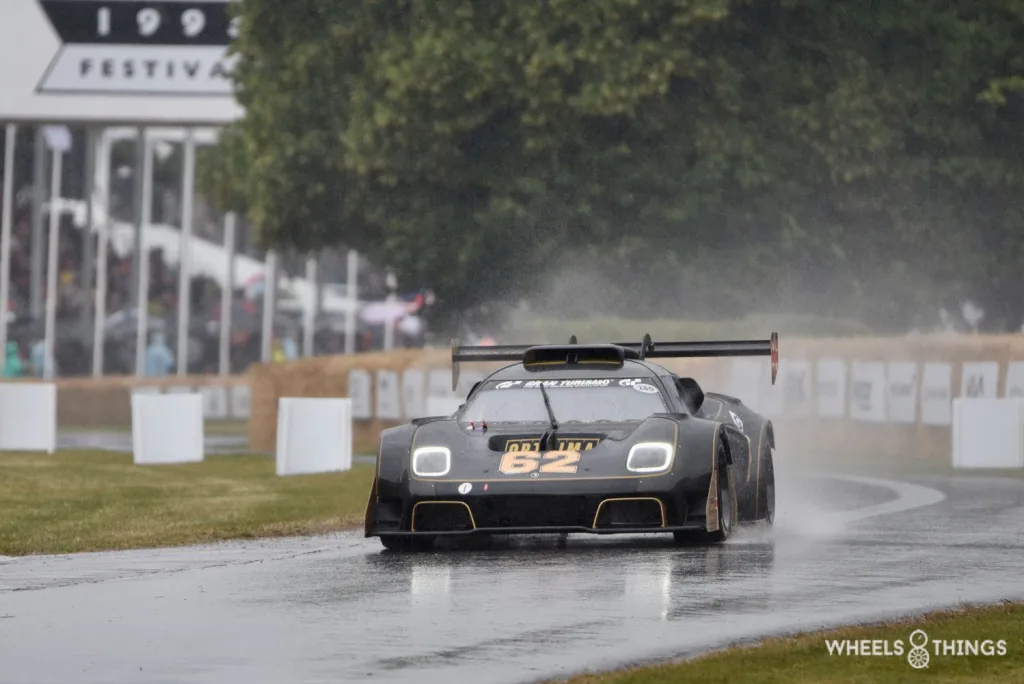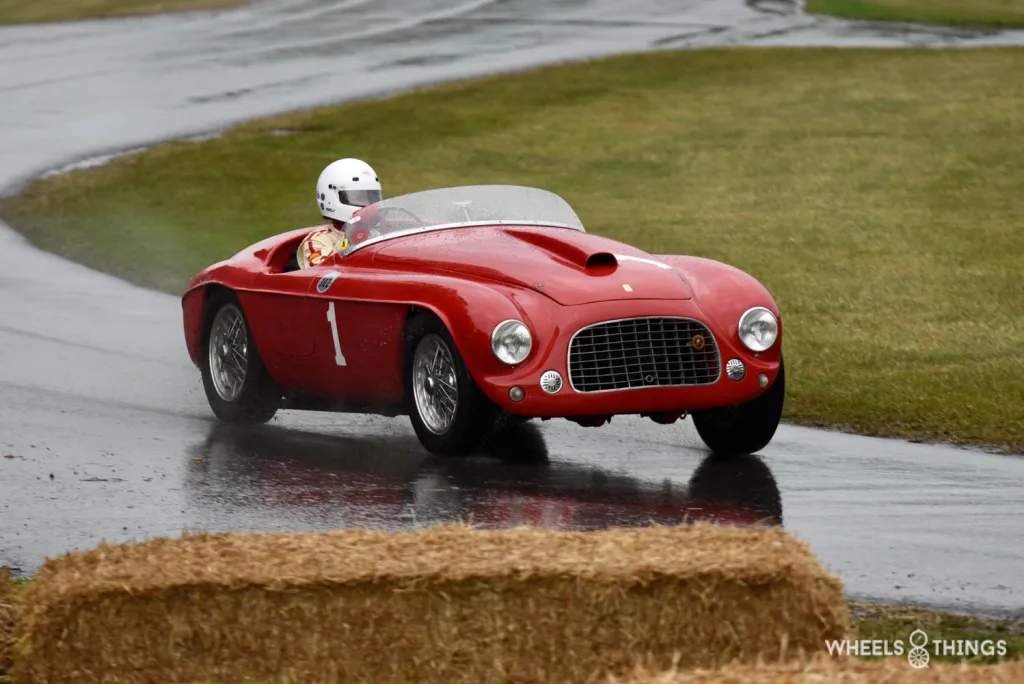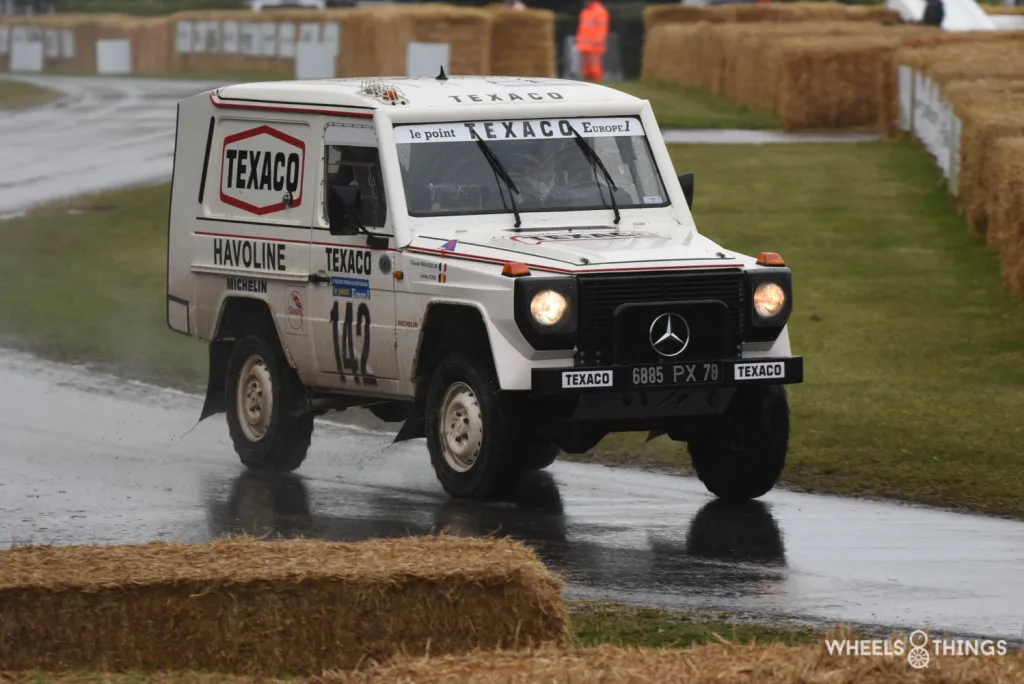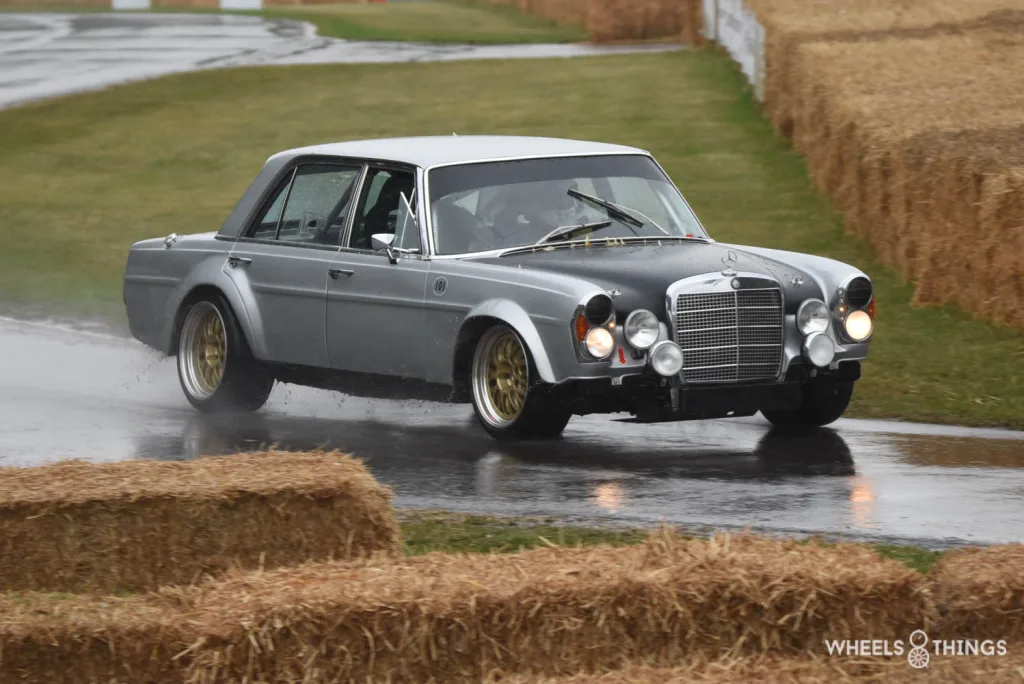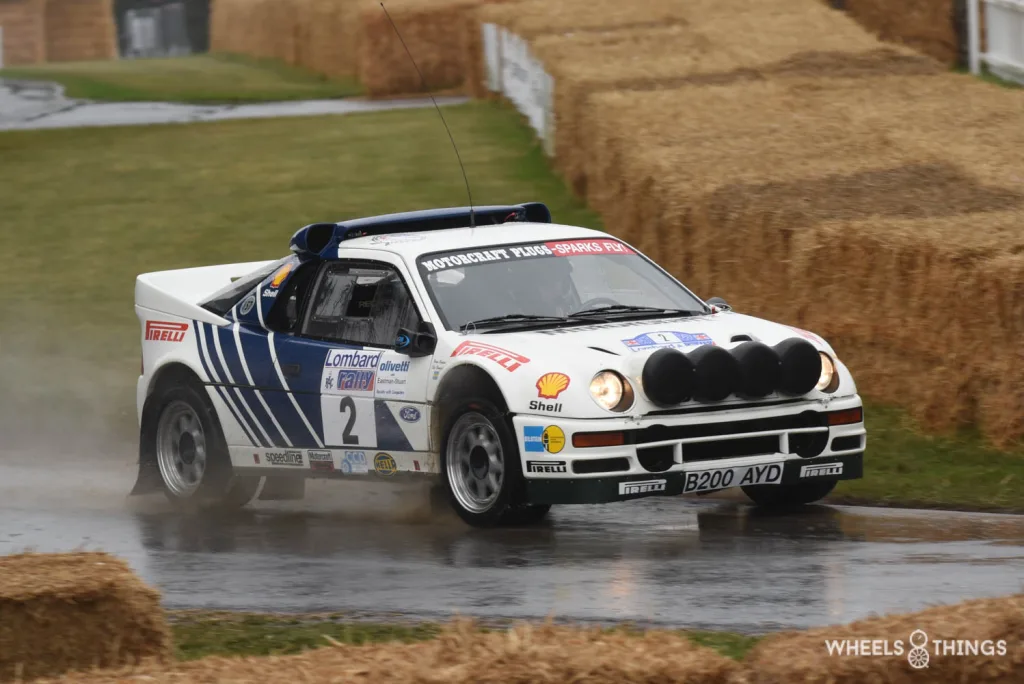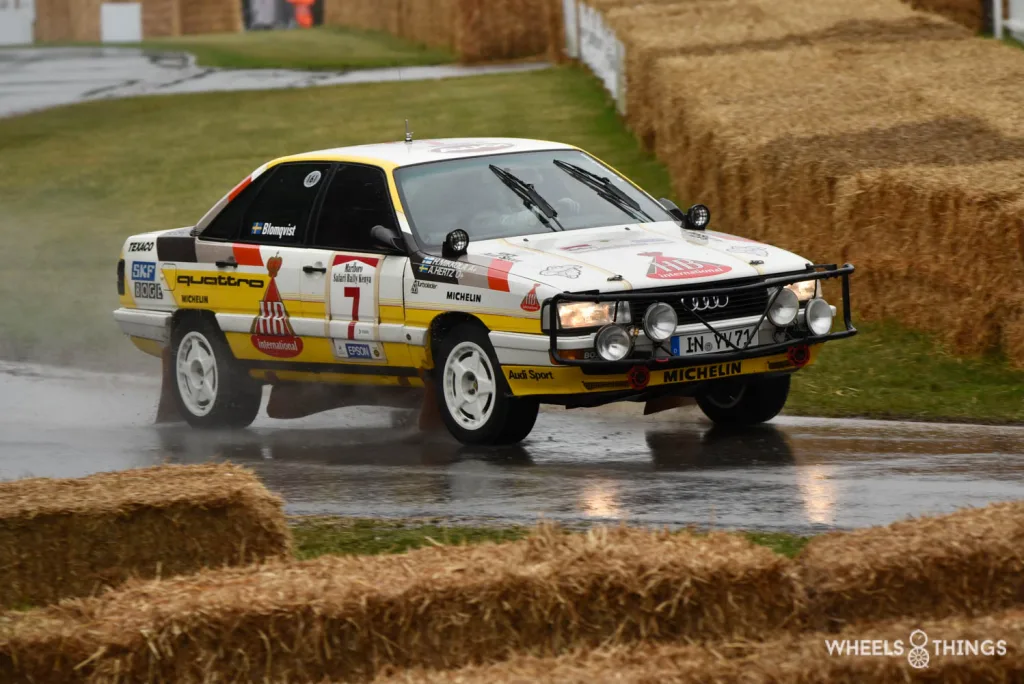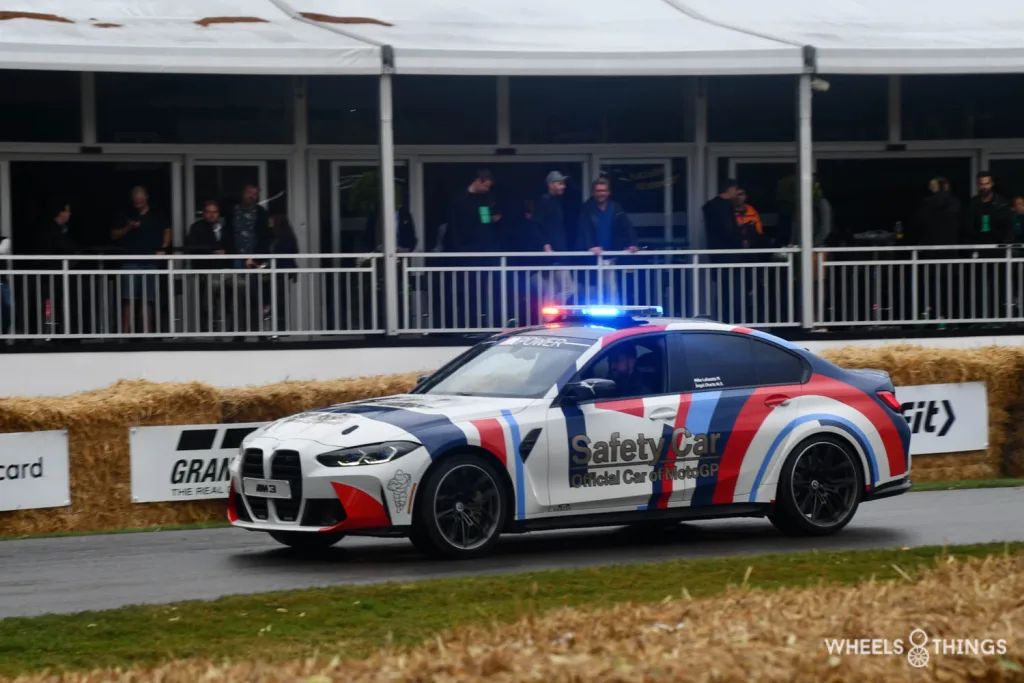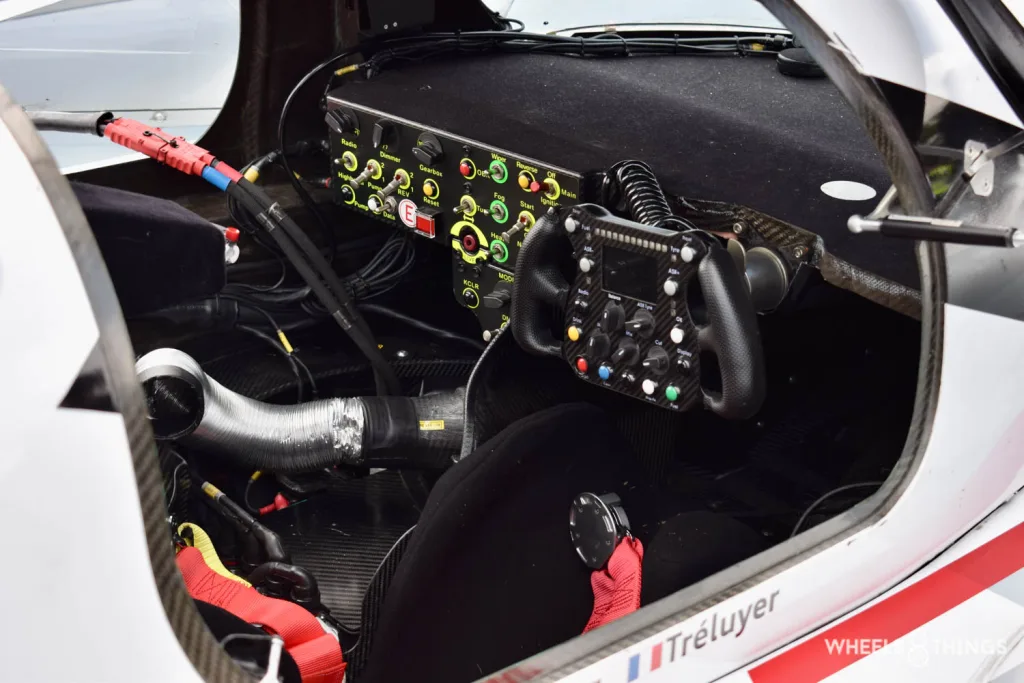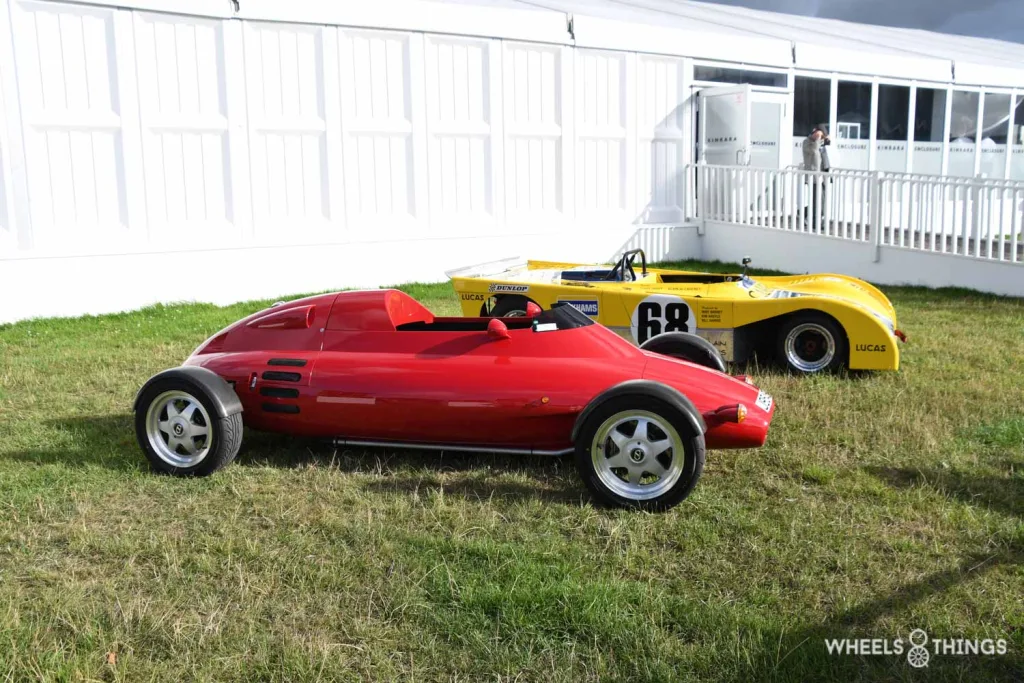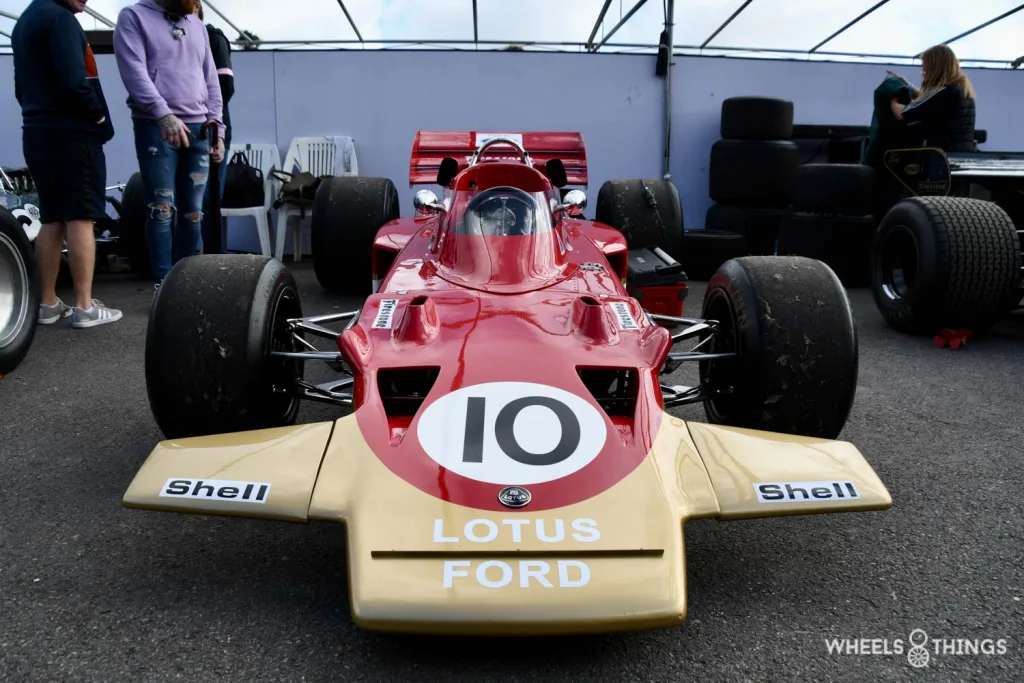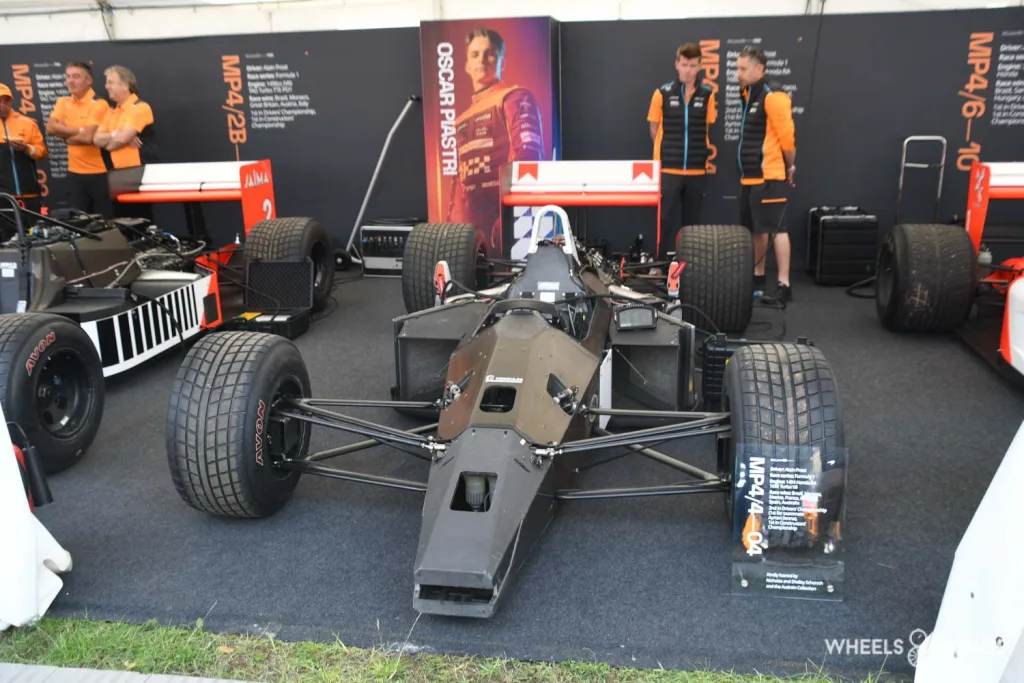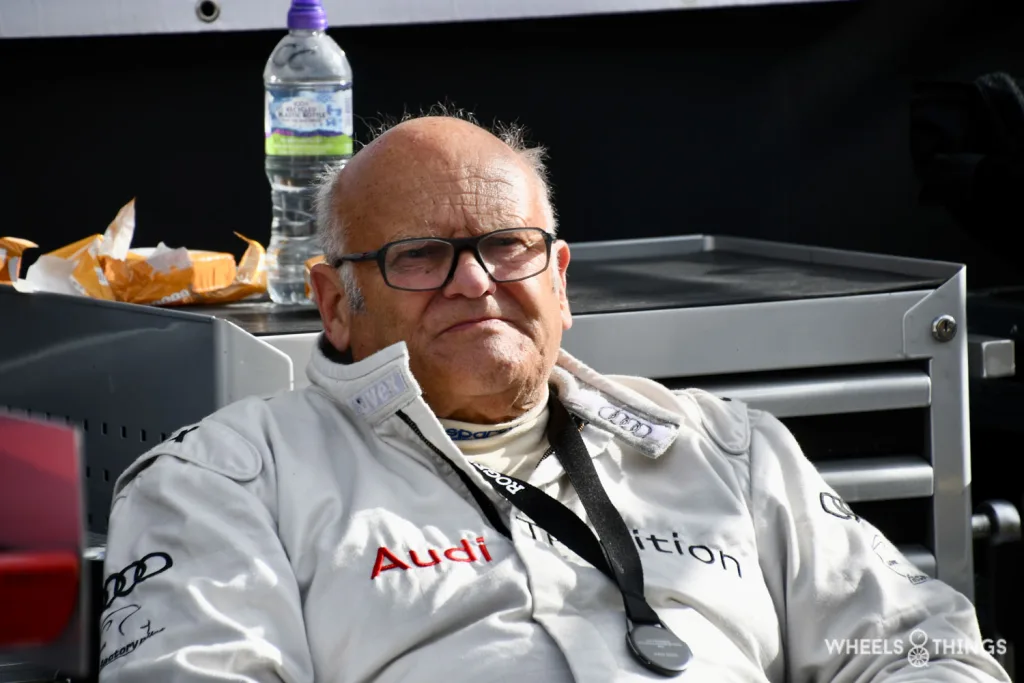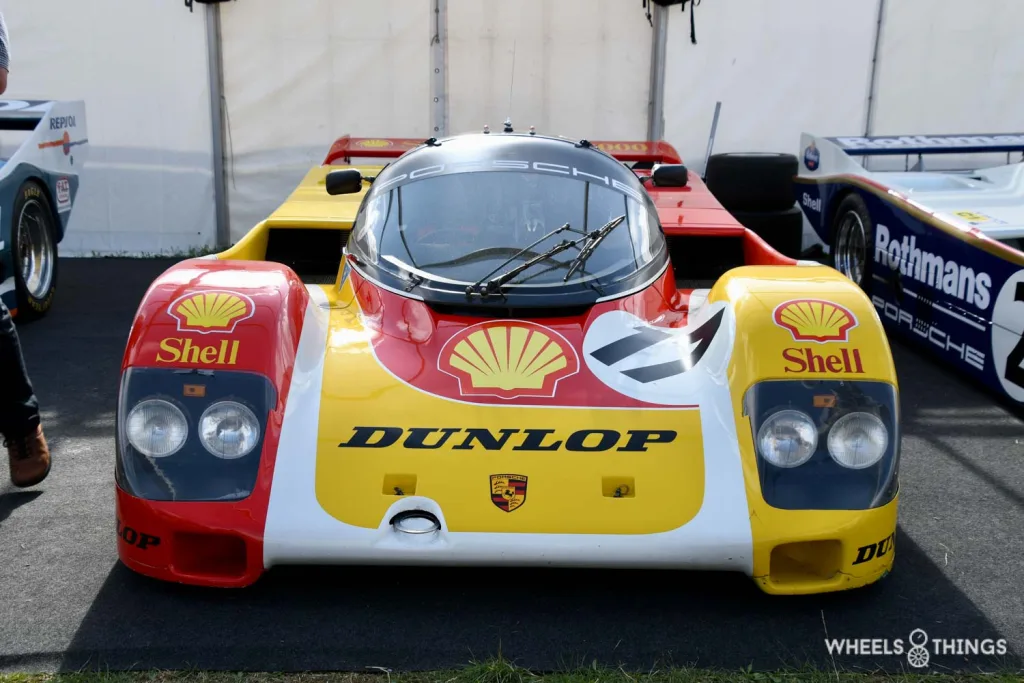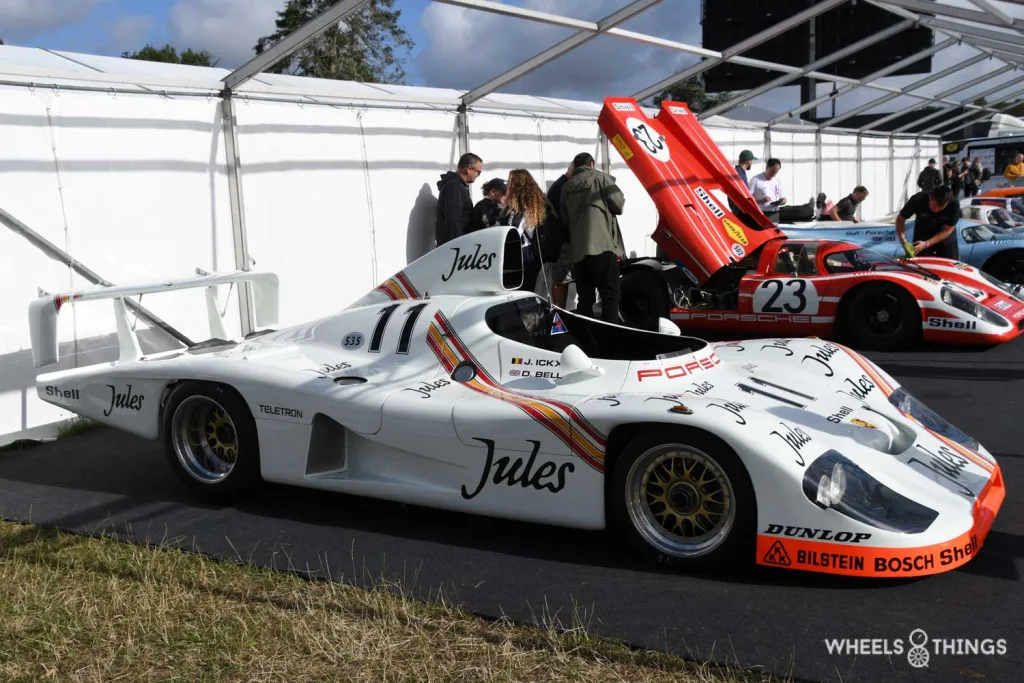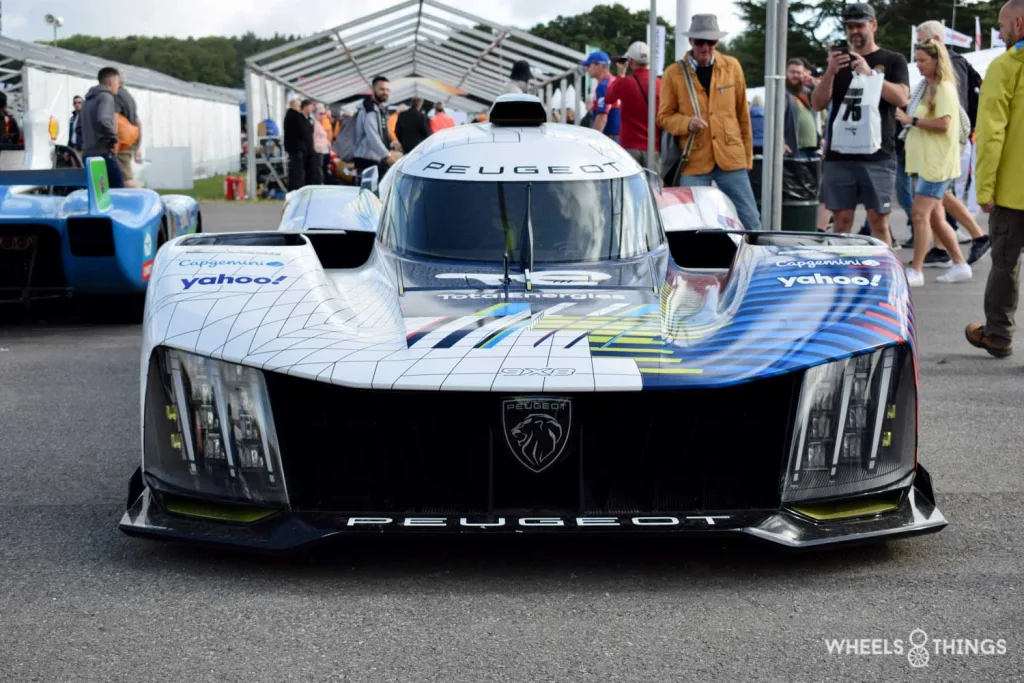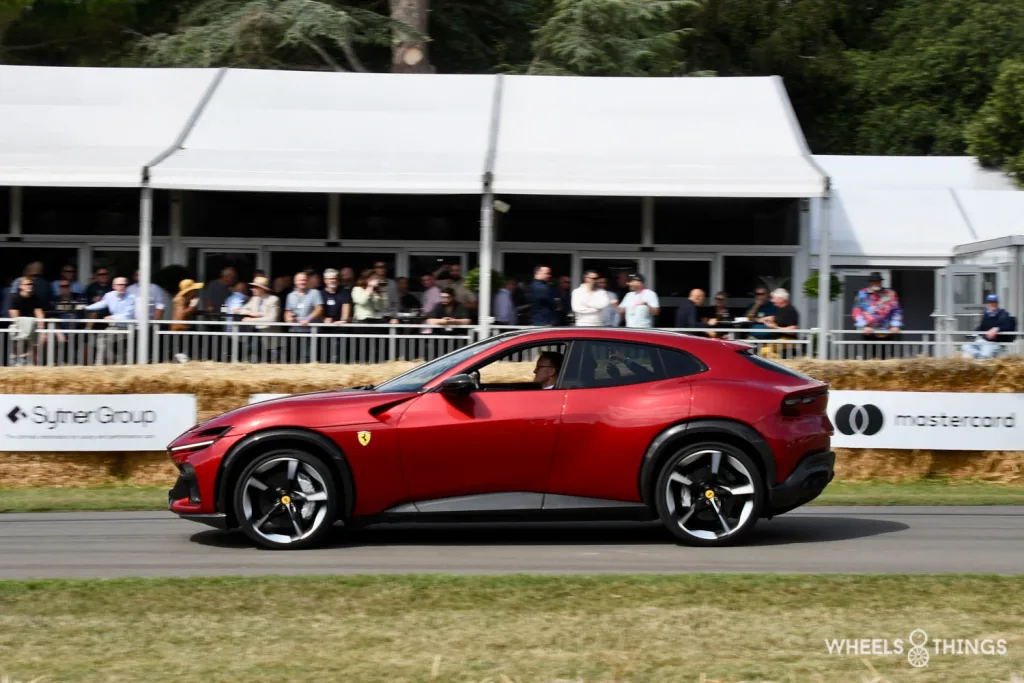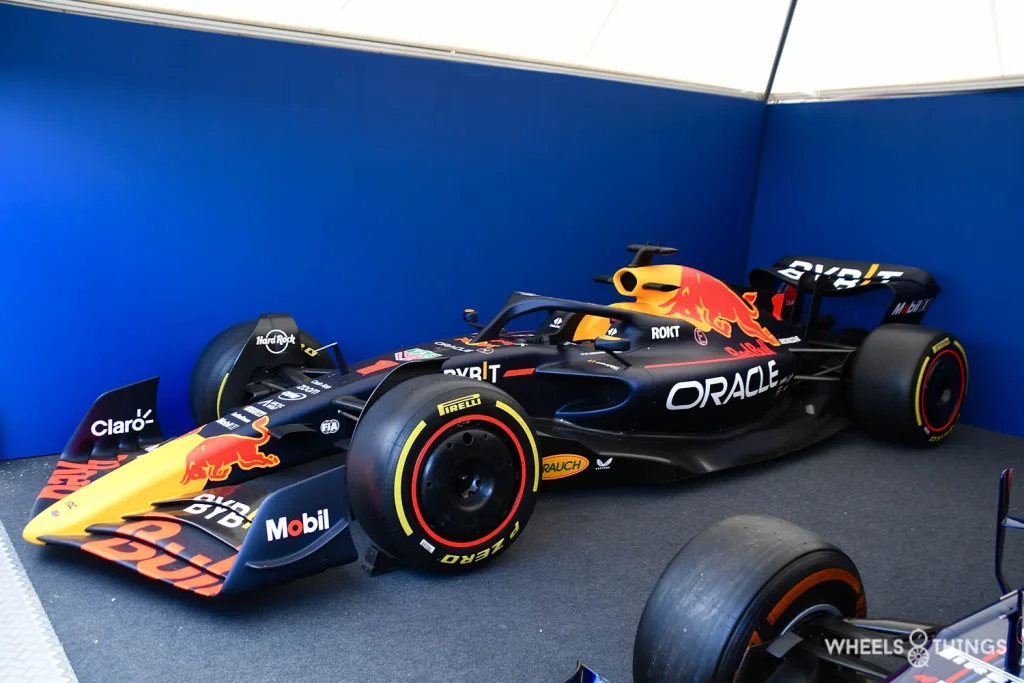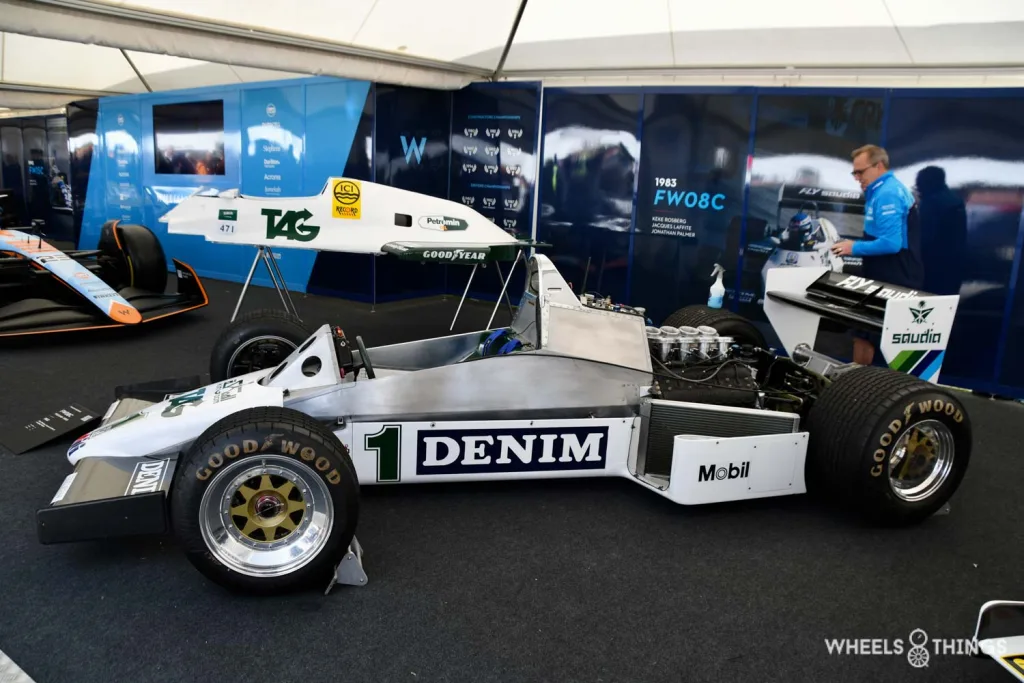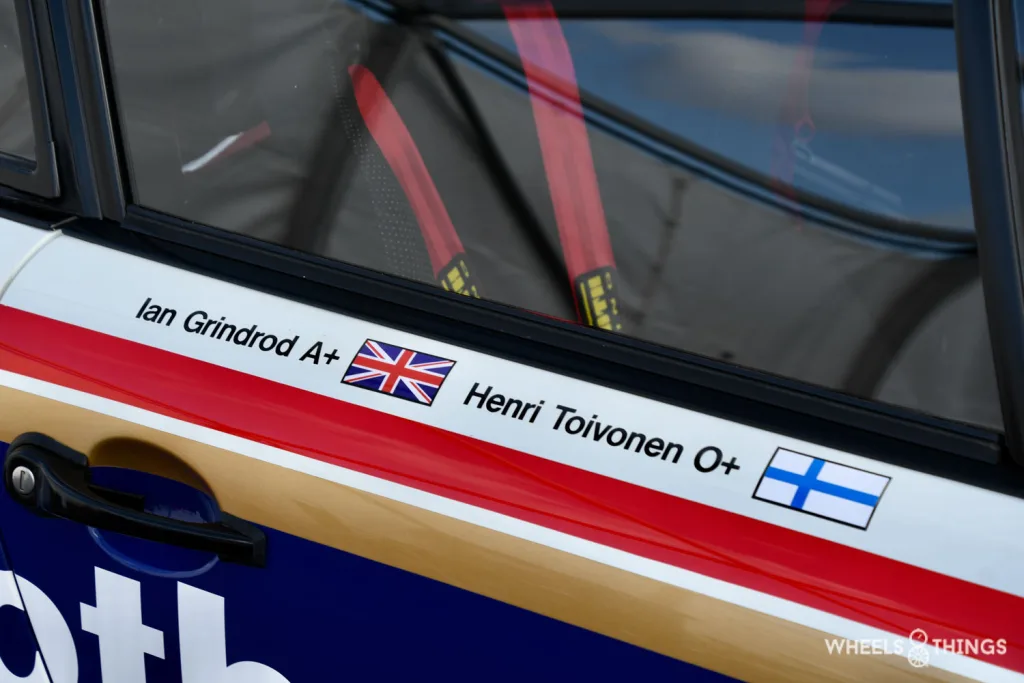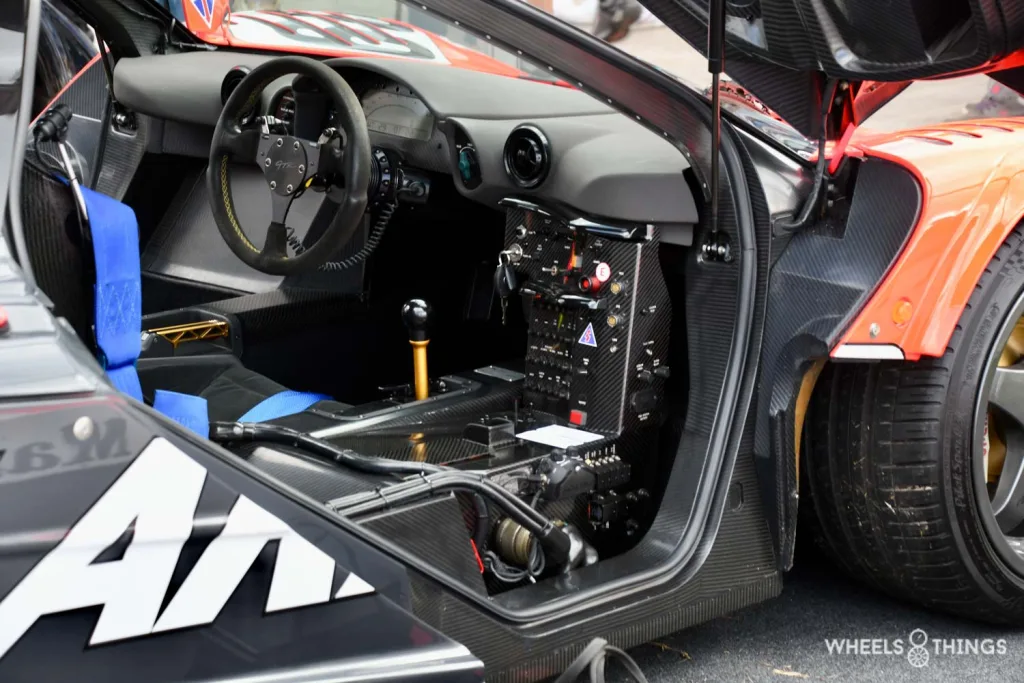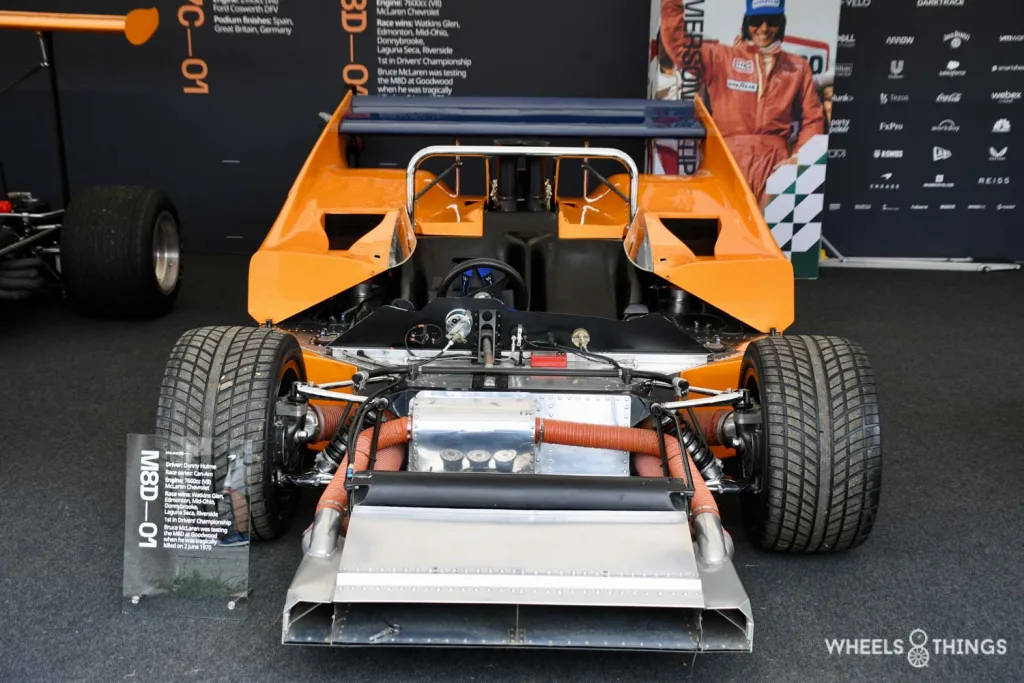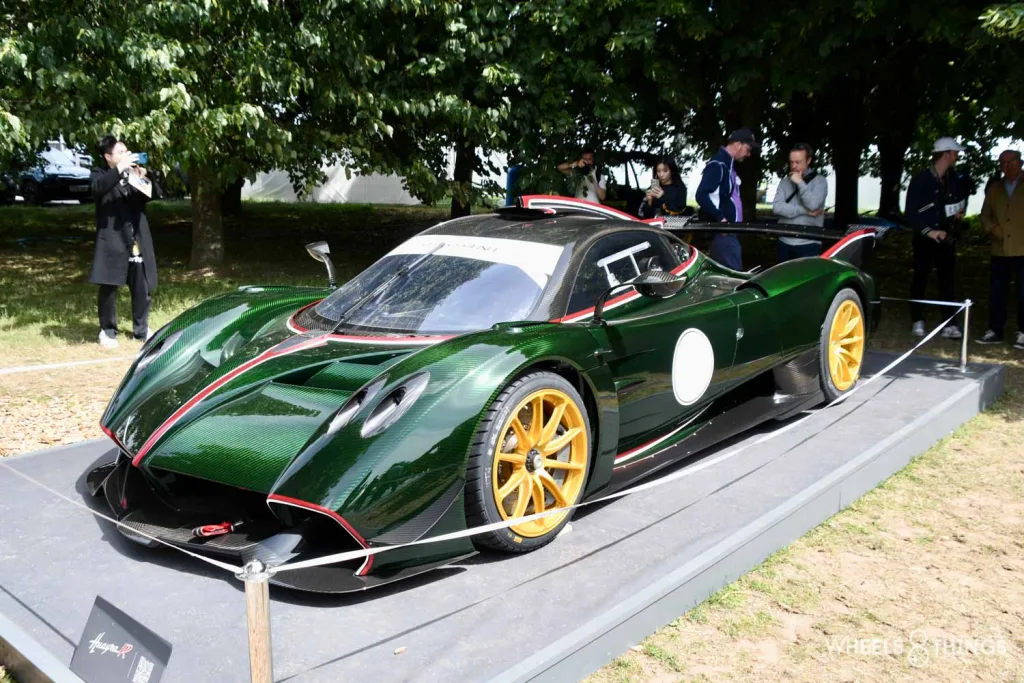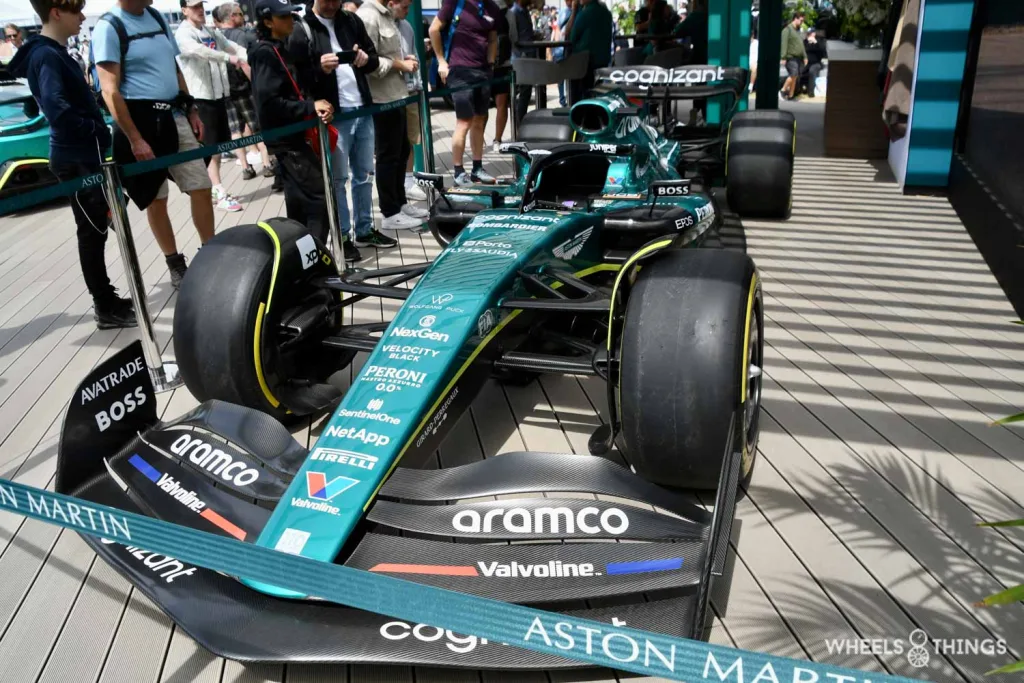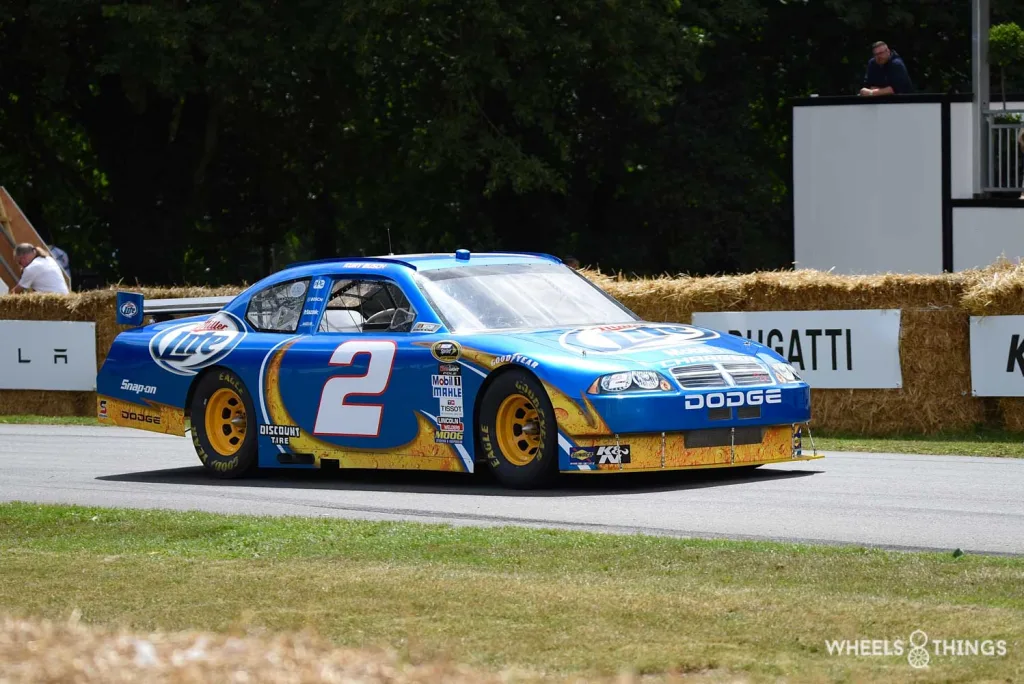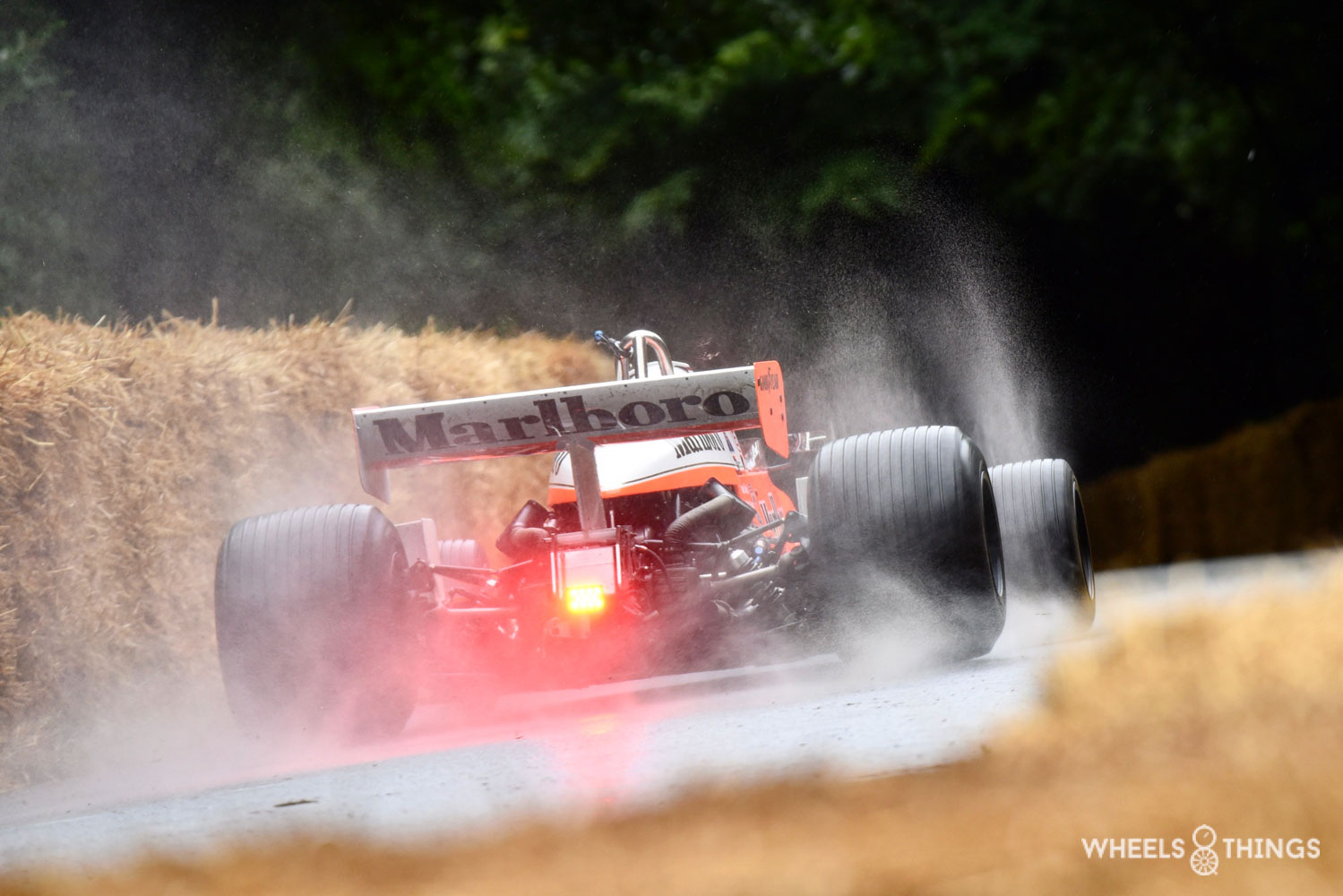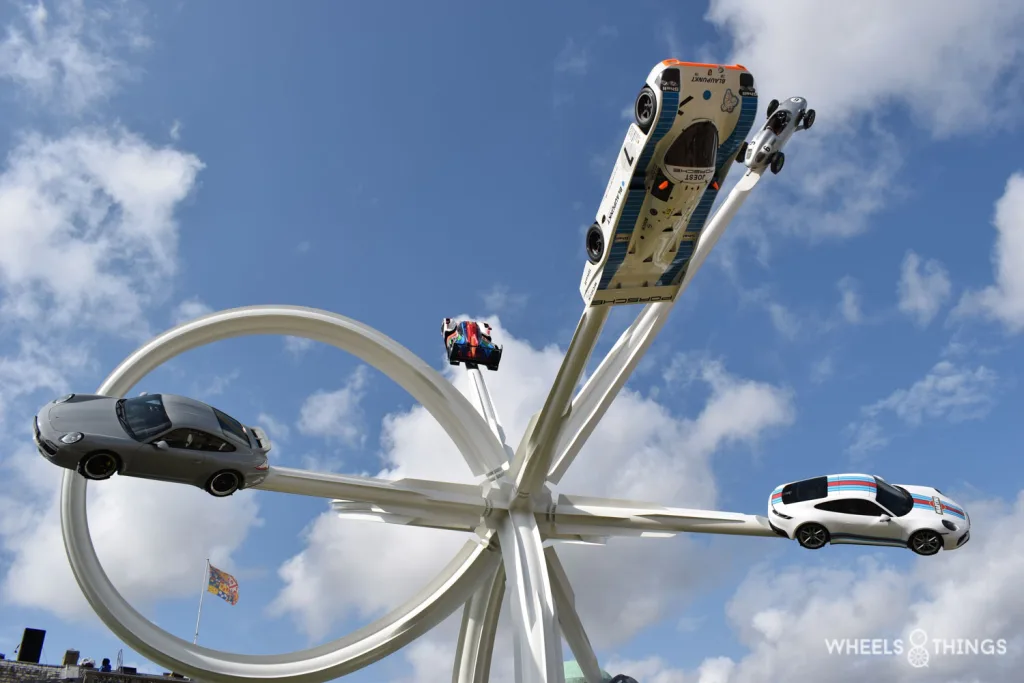
The Festival of Speed at Goodwood is the annual high mass for any respectable car and motorsport enthusiast. You’ll see things passing by that you won’t see anywhere else.
The past few years had been a little less so with the corona crisis and the Brexit, but since last year there had been a turnaround anyway. This had continued and it was once again “Full Speed” at the Festival of Speed with, returning from the past, participants from the USA, Japan and Australia.
75 YEARS OF PORSCHE
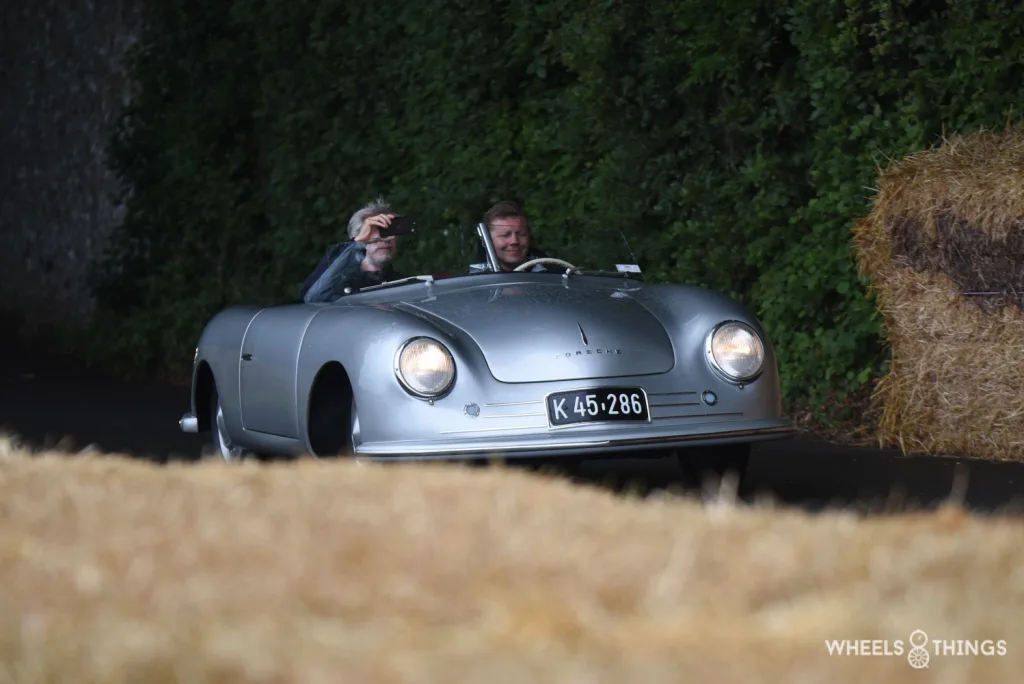
Traditional at the FOS are the numerous celebrations. Anniversary constructors or organisations are highlighted. And they just kept coming, one after another. We start with the central brand and this time it was Porsche, which gets to blow out 75 candles this year. On top of this, it has also been 60 years since their iconic 911 saw the light of day.
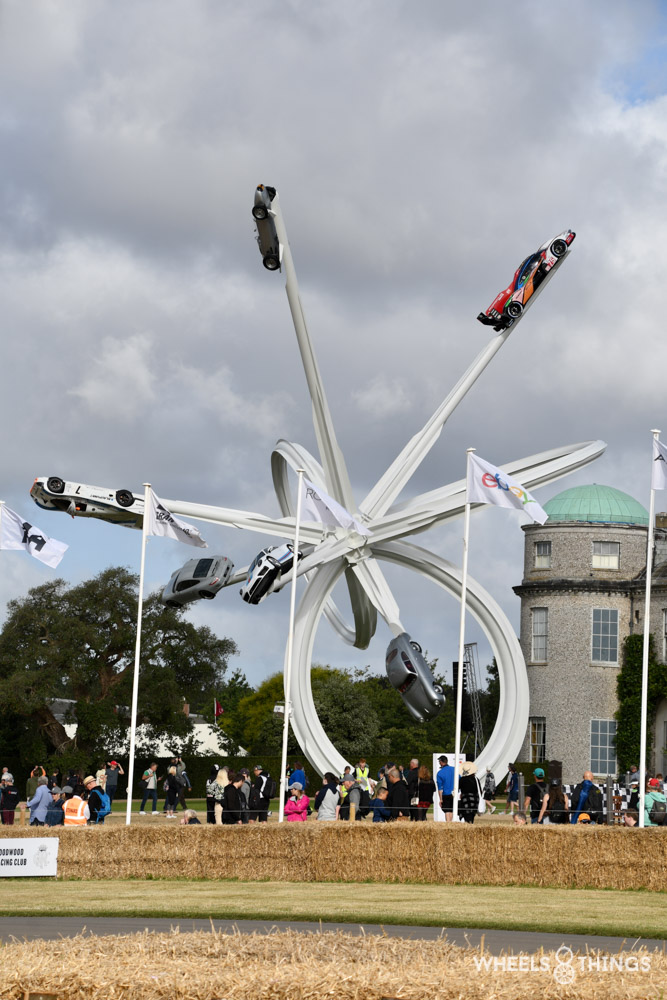
As a central brand, Porsche was also allowed to provide cars for the sculpture in front of Goodwood House. The sculpture, traditionally designed and built by artist Gerry Judah, displayed six Porsches nicely divided with three street versions and three racing cars. A 356 obviously could not be missing and two 911 versions were also allowed to take their place on it. A current 992 in Martini trim and a 997 Sport Classic with its typical “duck tail”.
The racing department had brought a new 963 LMDh from the WEC and the Classic department a 962 Joest Blaupunkt from the Group C period. Its brief participation in Formula 1 was also commemorated with the 718/2
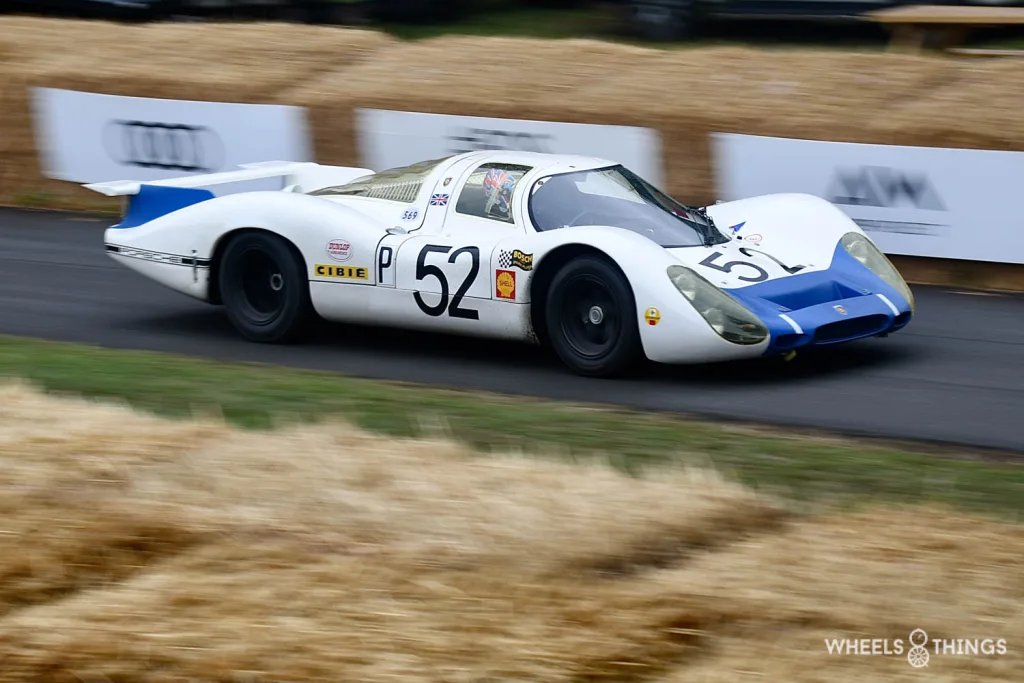
And Porsche obviously also had a whole collection of cars with it for the hill climb. Here we saw some 911 street versions pass by but it was mainly racing cars that were allowed to shine in this series. And who says Porsche naturally comes to the 24 hours of Le Mans. With 19 wins, Porsche is also the record holder. And all the main cars were present with the 917, 911, 935, 936, 956, WSC-95, and the 919 Hybrid coming from the Porsche museum or a private collection.
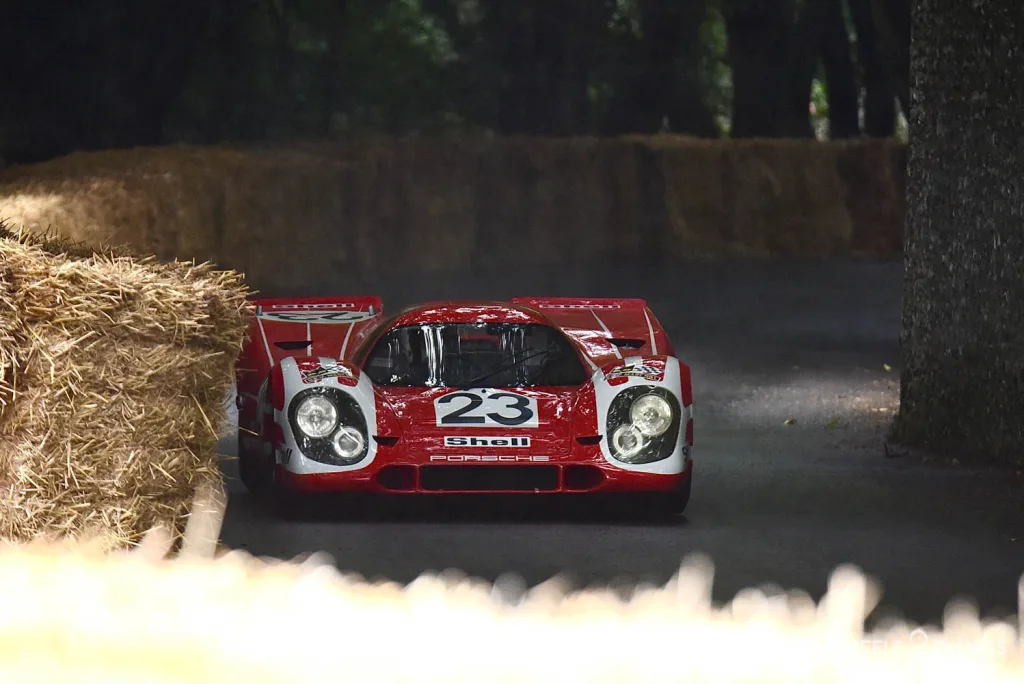
The 1970 917 opened the Le Mans series and this was the original car of the time. Porsche they themselves also have this version but that is a replica.
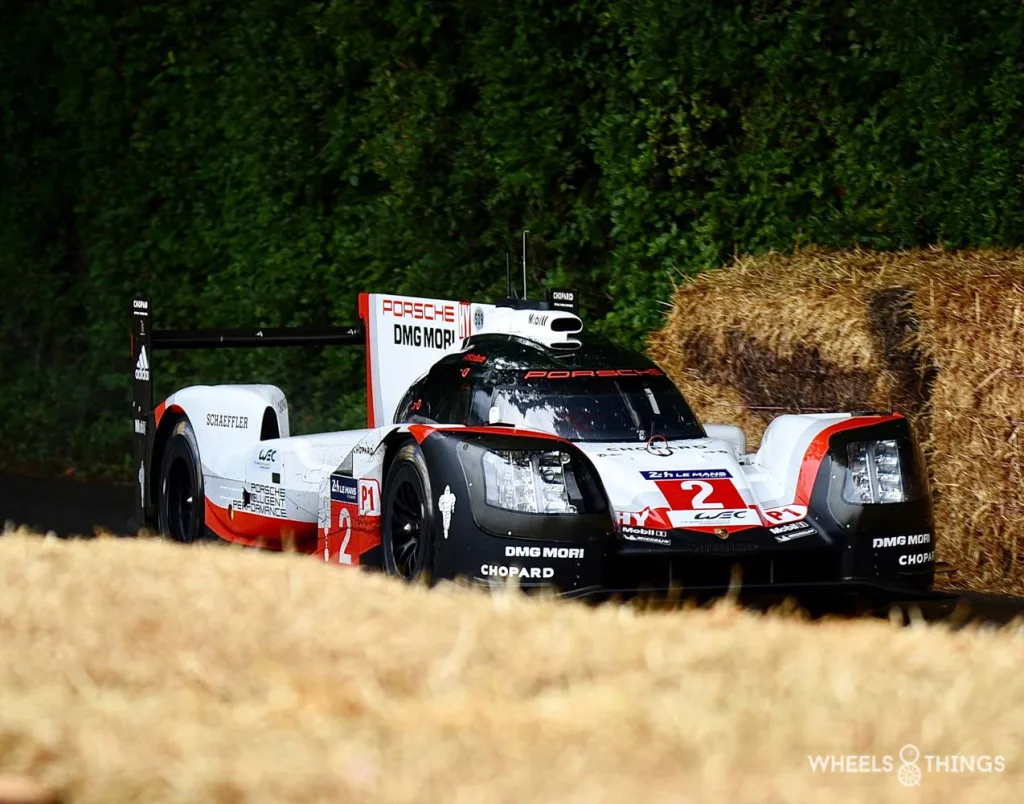
The last winning Porsche, the 919 Hybrid, was then allowed to conclude the series. This was also the original winner with also an original pilot, Timo Bernhardt, at the wheel.
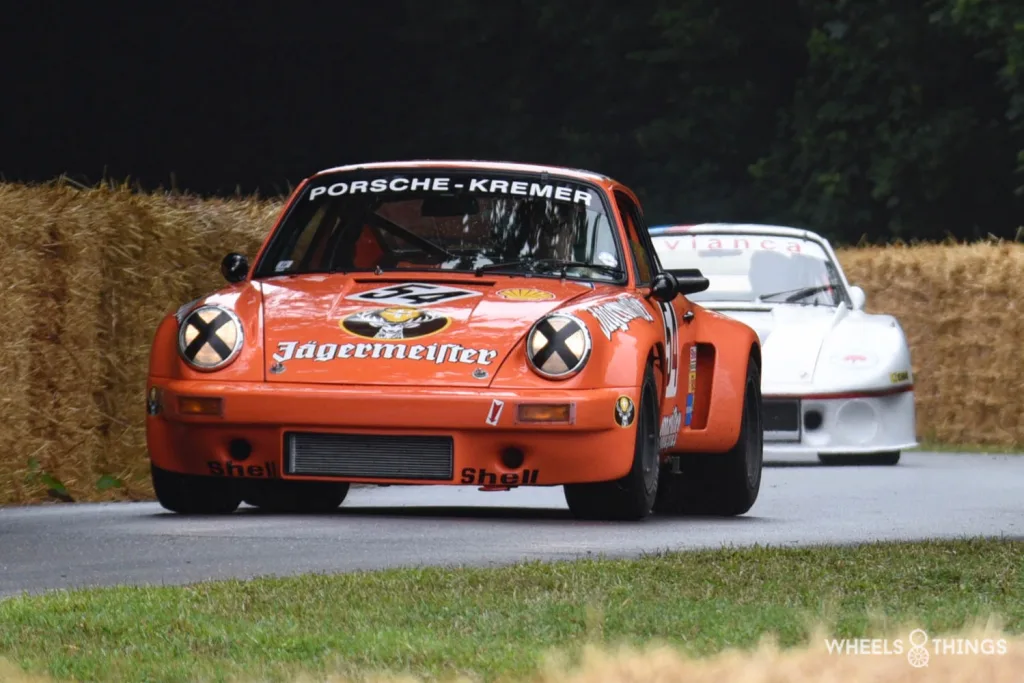
But the 911 was not forgotten either. We saw them in all variants from a still simple 911 Carrera of 1973 to the RSR of 1975. This Jägermeister Kremer was used in the DRM championship.
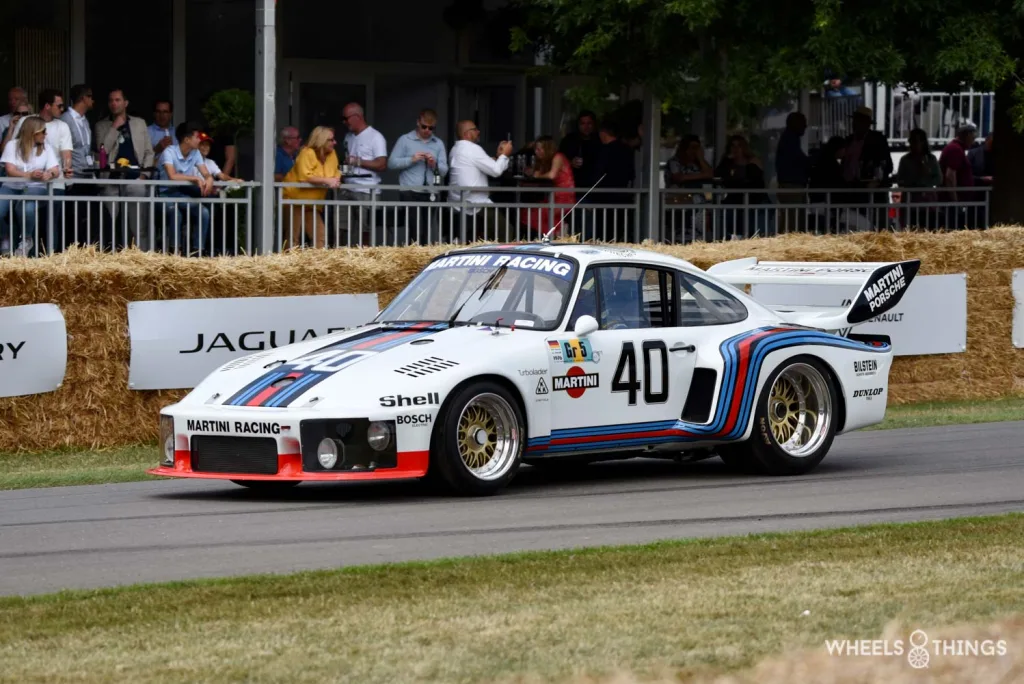
The Group 5 period was also there with the 935 turbo. Porsche even had the very first version with the 1976 Le Mans car ( with double headlights ). This was in the Mulhouse museum for many decades but has since been completely refreshed and made roadworthy again by Porsche Classic.
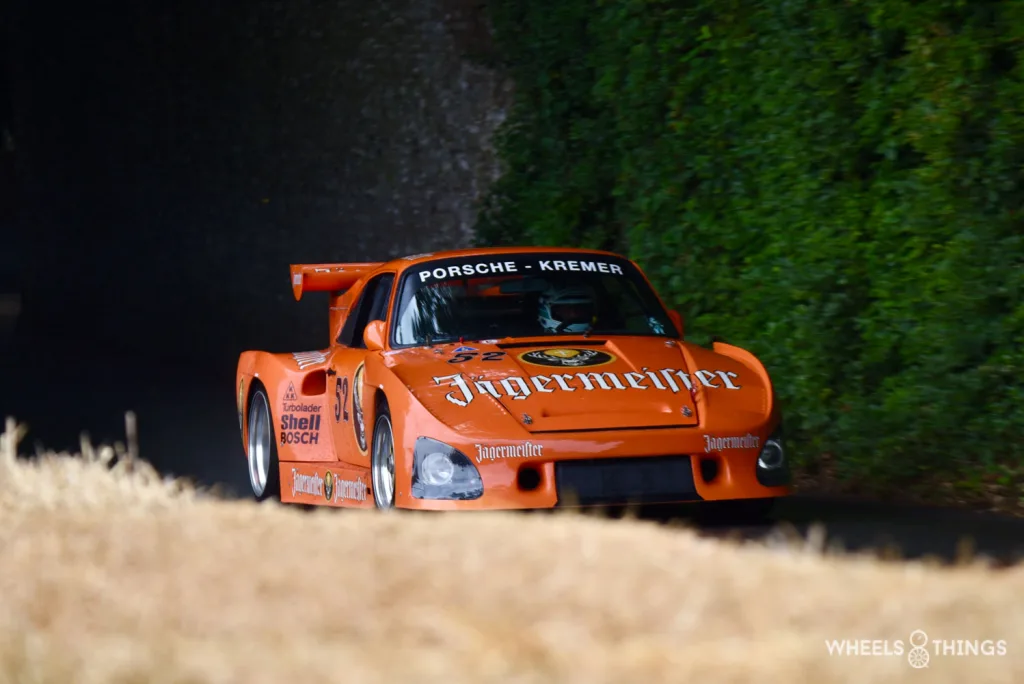
With the Kremer 935 K3, we are then back in the DRM of 1980. This Jägermeister version gave many enthusiasts unforgettable moments.
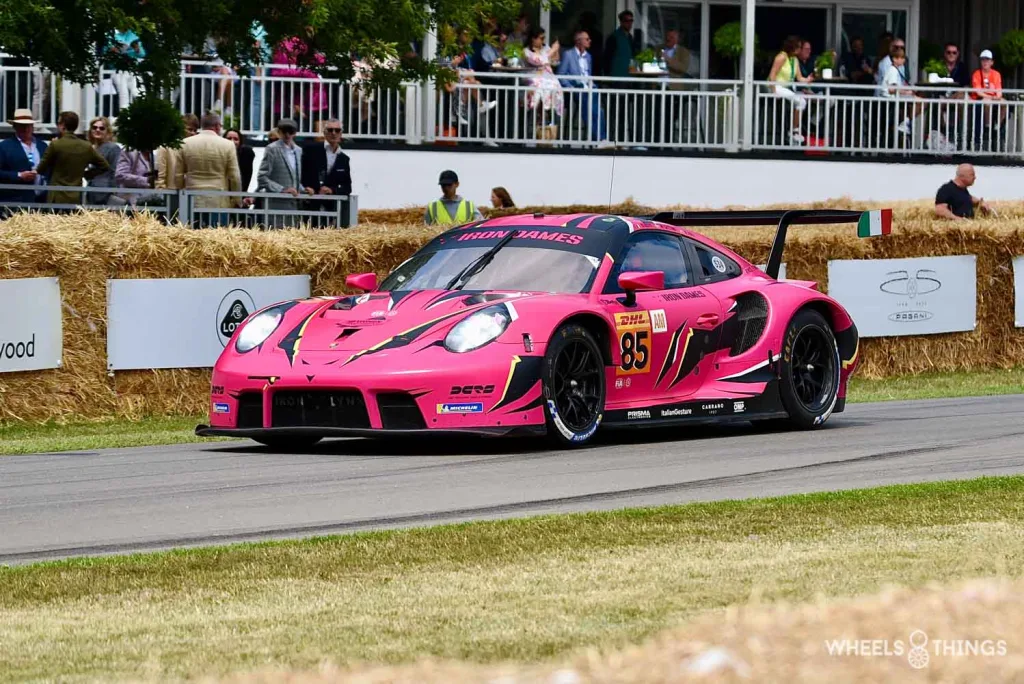
The Iron Ladies had their current pink 911 GTE RSR from the WEC with them. You can read more about these ladies in our Francorchamps WEC article.
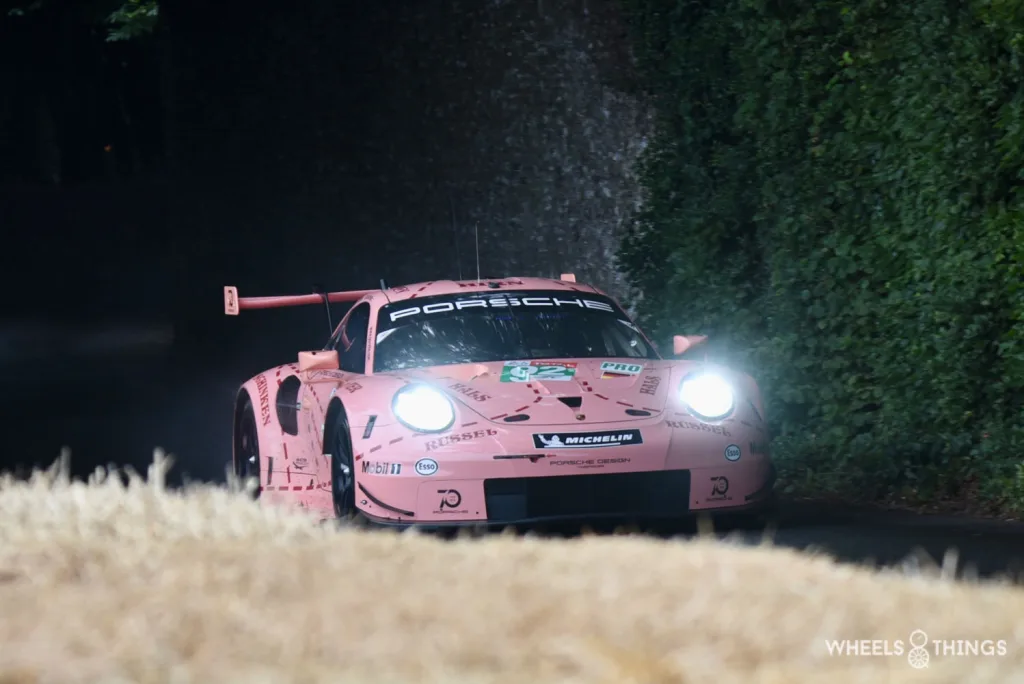
There was a similar one, with the now five-year-old, “Pink Pig” 911 RSR able to win the GT class at Le Mans in 2018.
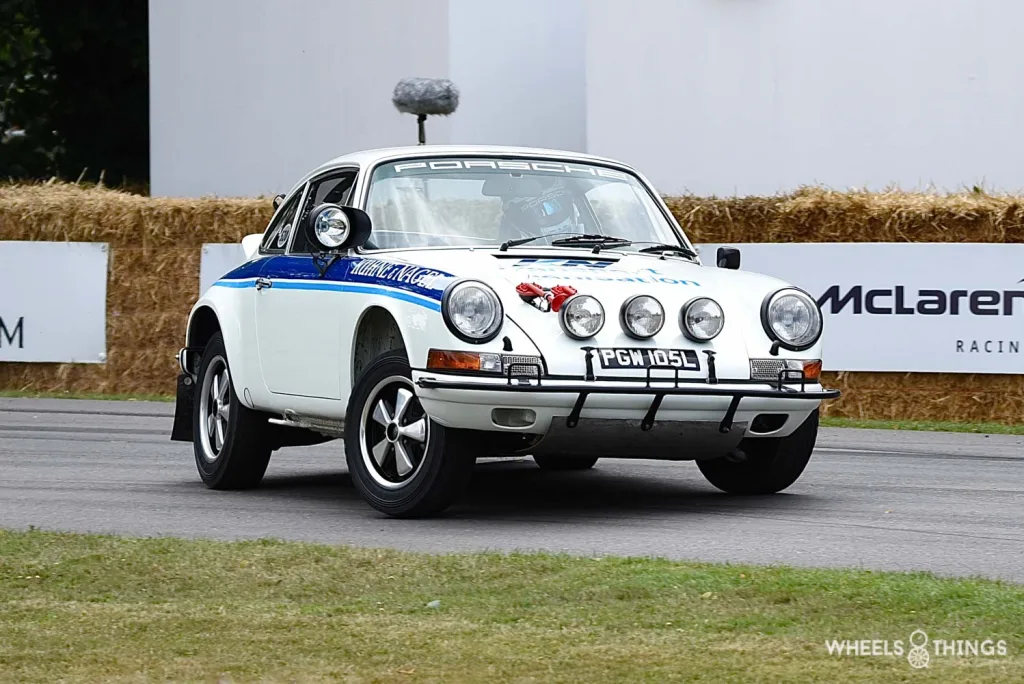
And the 911 was not just a track racer. It was also used regularly in rallying. The gruelling Safari rally in Kenya was almost tailor-made for this Porsche.
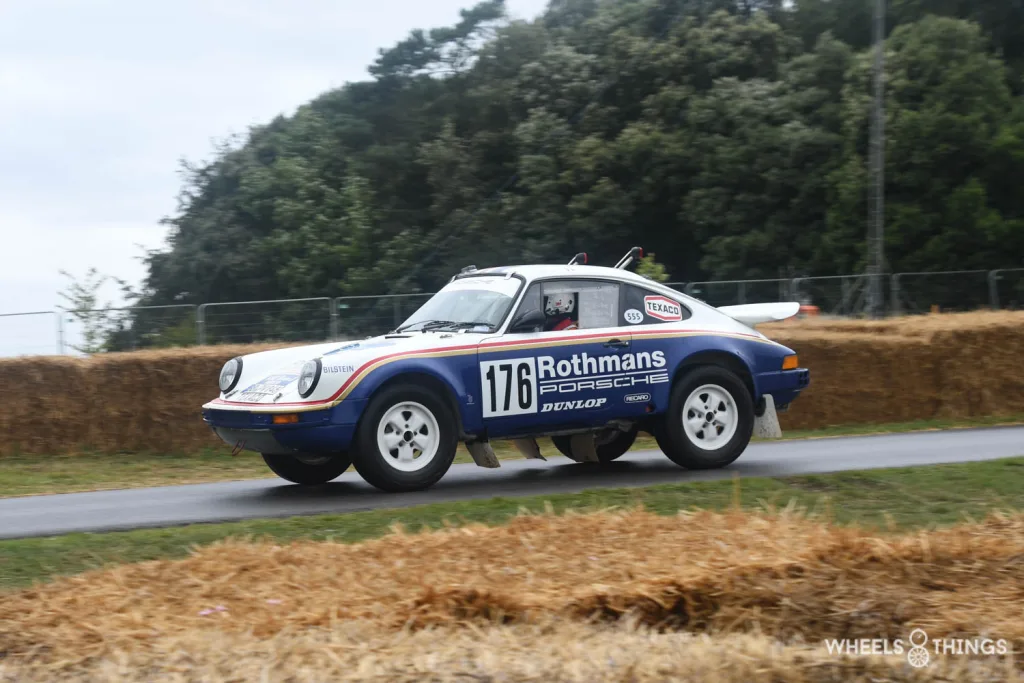
But things could be even rougher with the Paris-Dakar versions of the 911. First with the 953 and later the 959. A four-wheel-drive and raised 911 was able to win this rally raid in 1984 ahead of competitors with their typical “Jeep” models. In 1985 the new 959 did not succeed but a year later the 959 Rothmans ( with GPS system ! ) was allowed to drive over the Dakar beach as the winner.
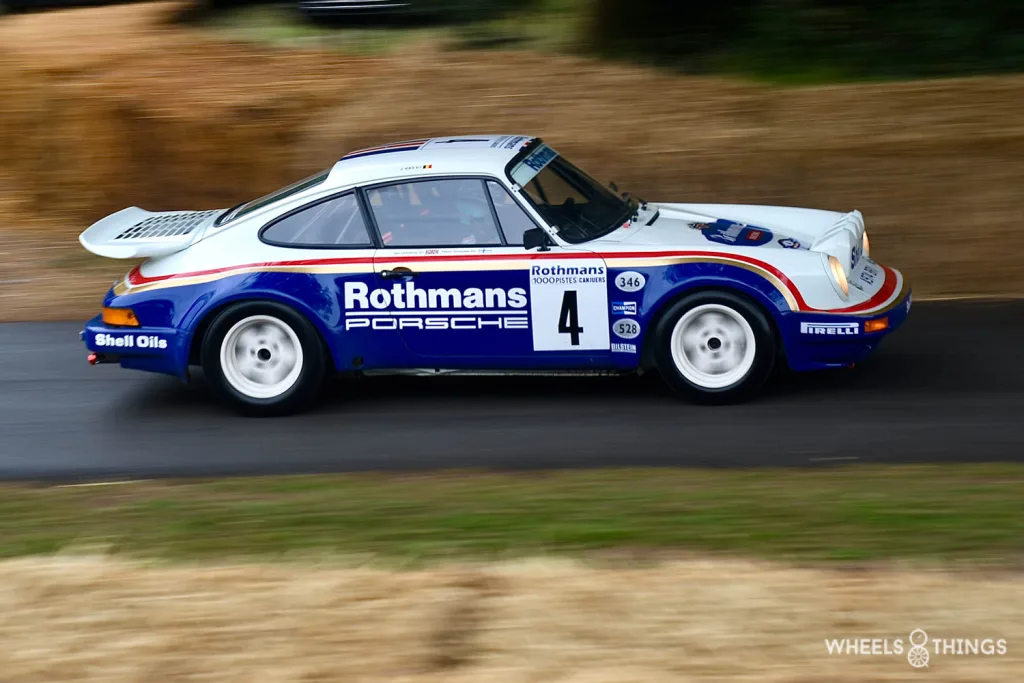
Also in Rothmans colours is this 911 SC RS Group B. Twenty examples were built. With us, they competed in the Belgian championship in Belga and Bastos colours. This Rothmans was used by Prodrive in the European races. A still young Henri Toivonen won the Costa Smeralda and the 1000 Pistes with it in 1984.
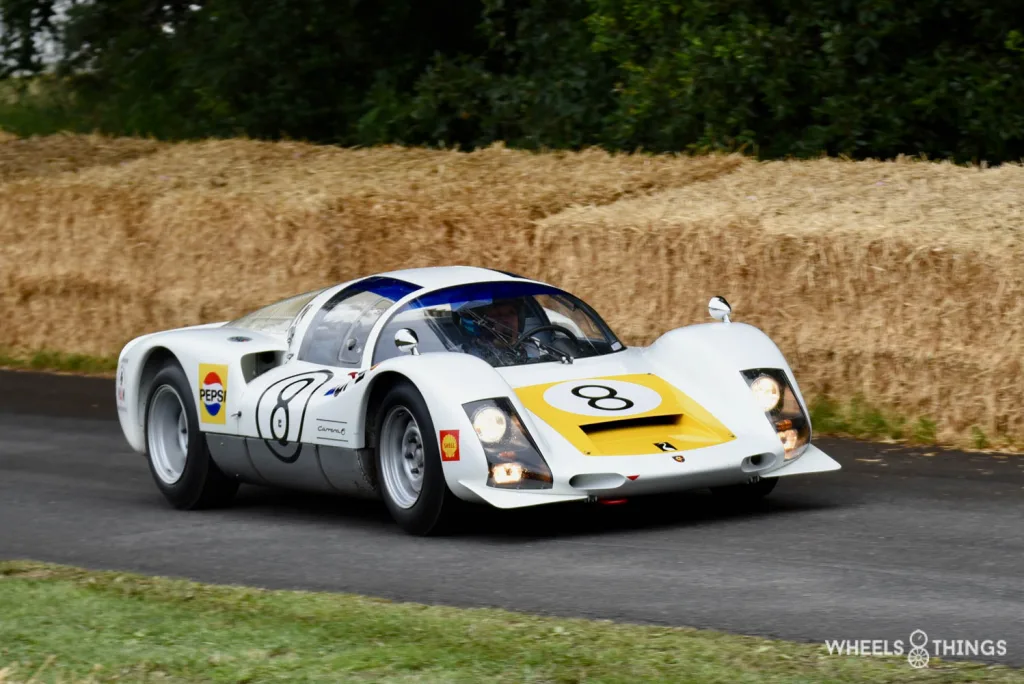
There was also a series of Porsche racing prototypes that started with the 550A Spyder and continued with the 718/8 RS Spyder, the 904 Carrera GTS, the 906, 908LH and various 917 and 956/962 versions. The 906 present even came over specially from Japan for this.
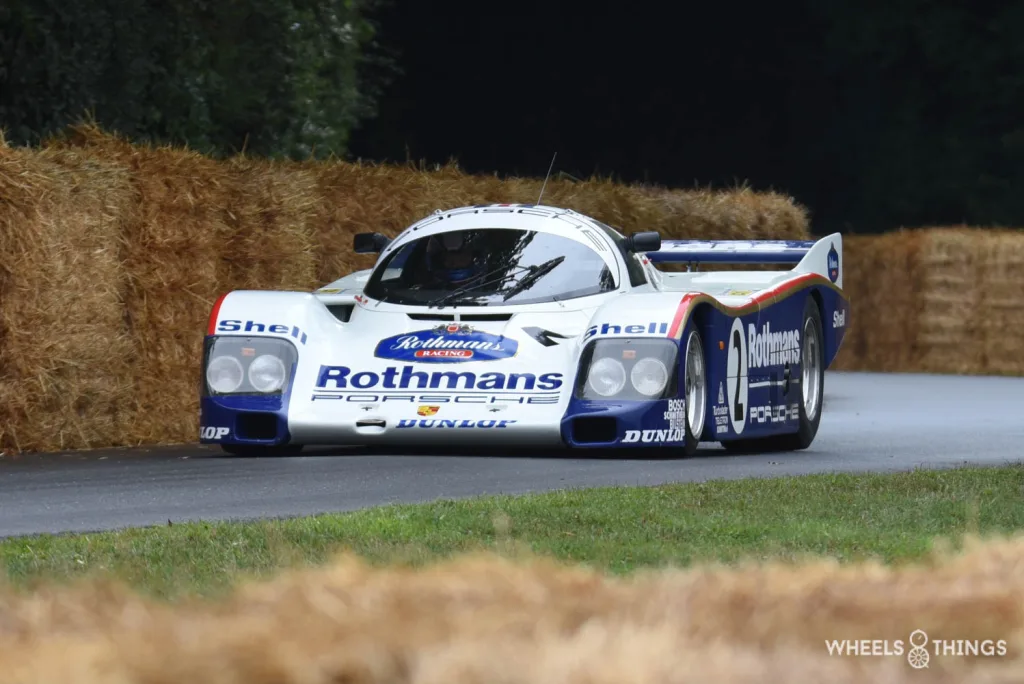
We had seen a beautiful Porsche collection five years ago during their 70th anniversary celebrations at the FOS and we were a bit worried that we would see the same again but except for five pieces, this was not the case at all.
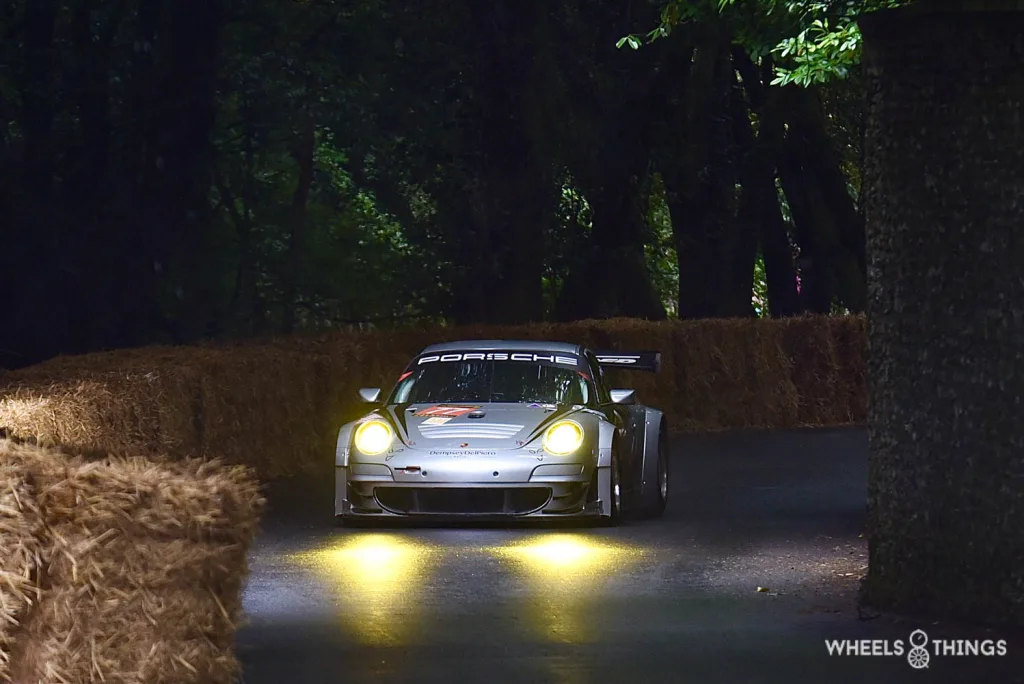
A wonderful and beautiful series.
100 YEARS OF 24 HOURS OF LE MANS
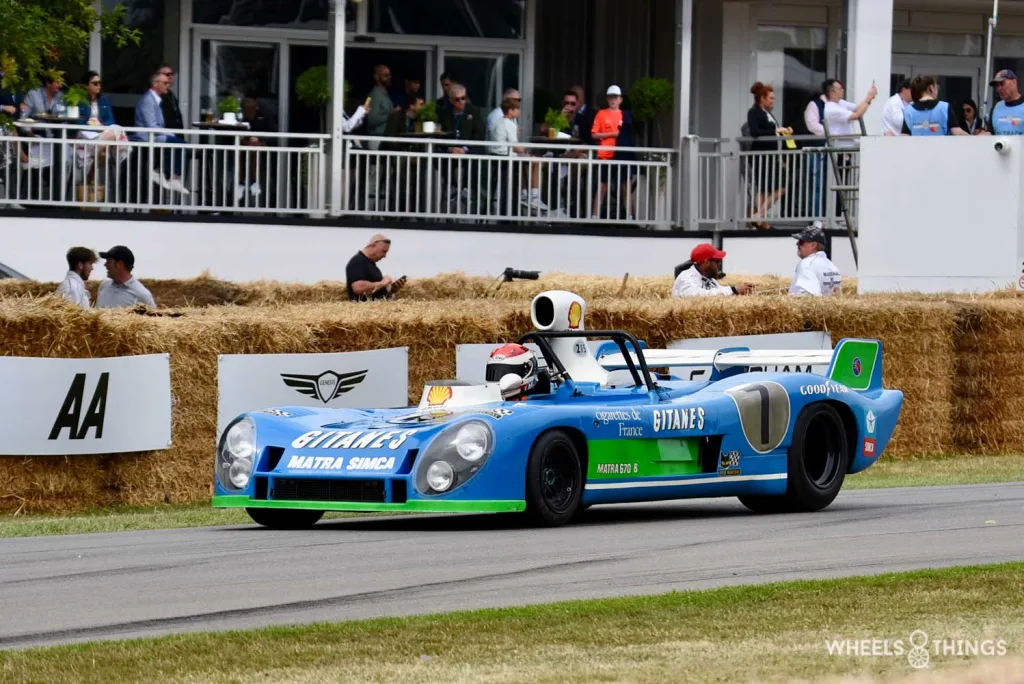
A theme that we really do see everywhere in 2023 ( and rightly so ) is the centenary of the 24 Hours of Le Mans. After the expo at Rétromobile – more info here and the festivities in the lead-up to the race itself and then Le Mans Classic, it was now Goodwood’s turn.
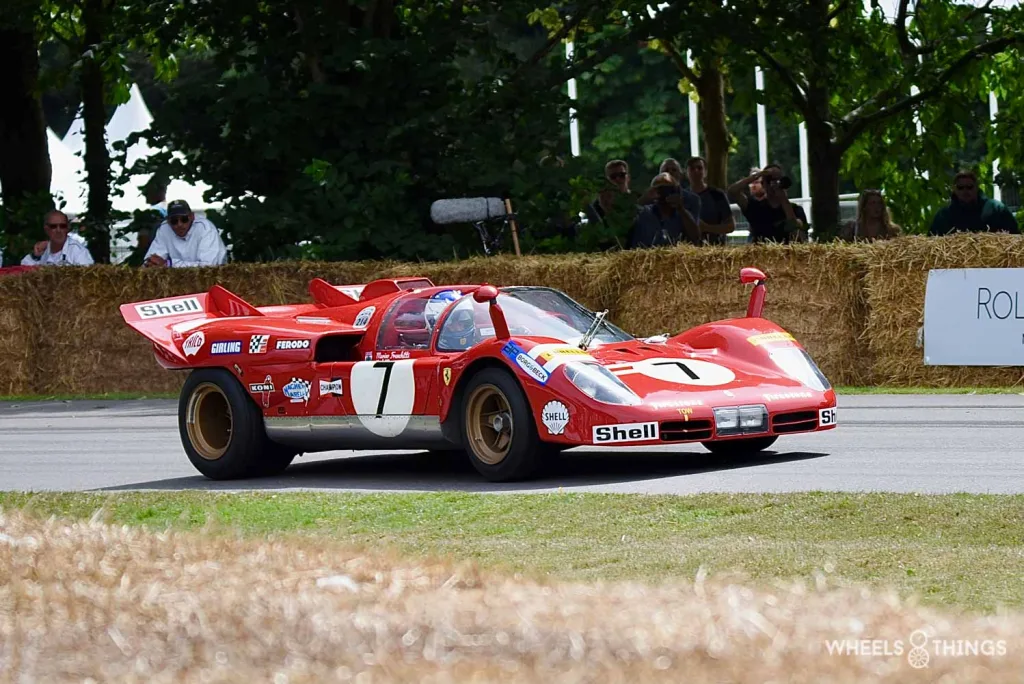
The FOS and Goodwood were obviously not to be missed and, in good Goodwood tradition, this Le Mans series was truly impressive. From every decade, we found winners, double winners and the most remarkable cars.
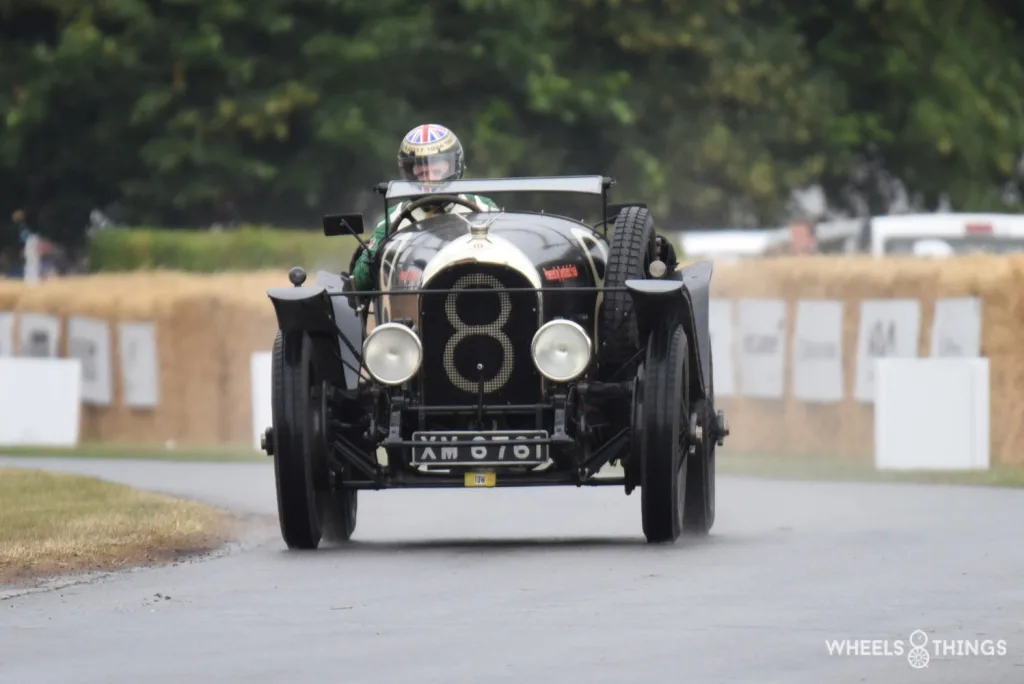
In the early years, it was the Bentley boys who provided the fine weather with their “3 Litre” and “Speed Six”. But the Alfa Romeo 8C 2300 MM and the Lagonda M4S Rapide also drew presence.
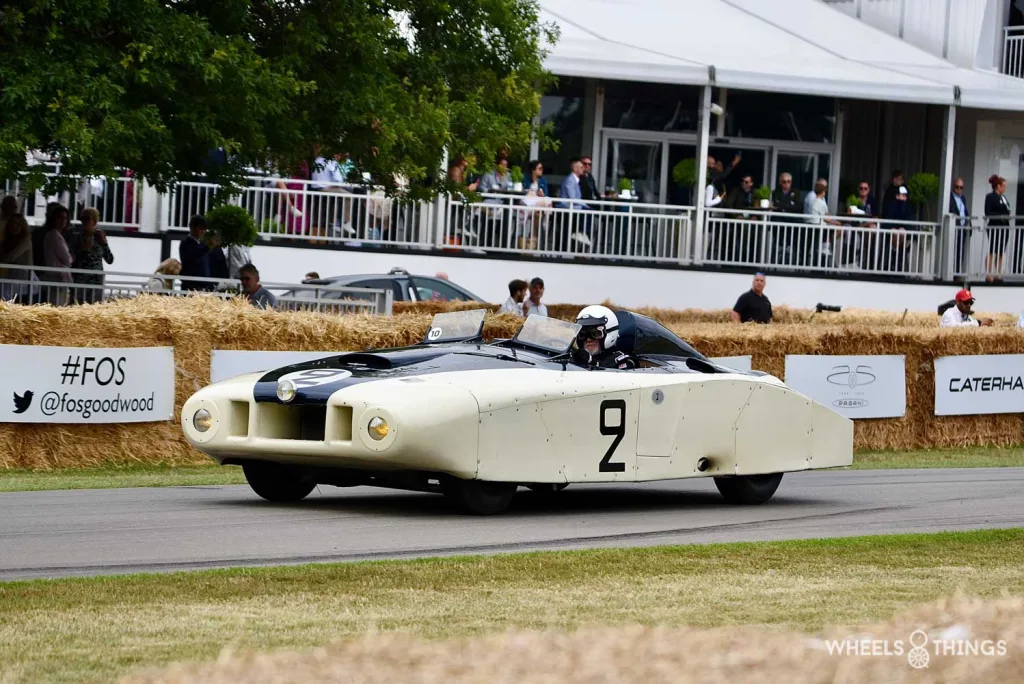
A real outlier from 1950 was the Cadillac Series 61 or “Le Monste”. The Cadillac was given this nickname as a gift from the French public of the time. This modified version, fitted with another aerodynamic bodywork of the 61, finished in eleventh place. A normal version did so one place higher in tenth place.
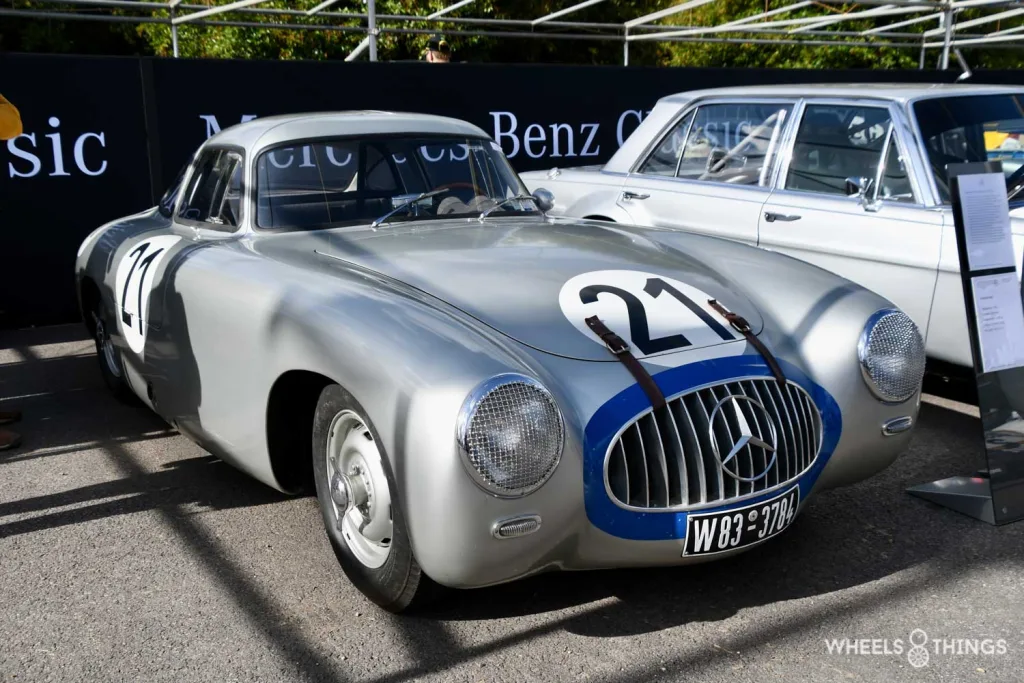
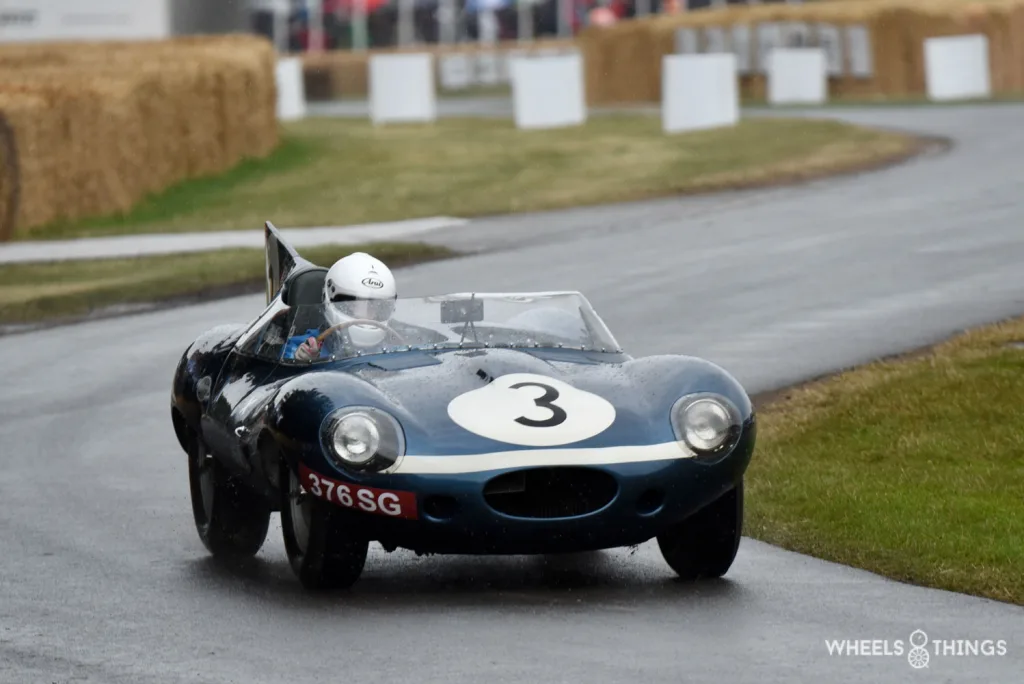
Mercedes won the 1952 edition with the W194 and the 1956 Jaguar D Type had come over from the Louwman museum in The Hague.
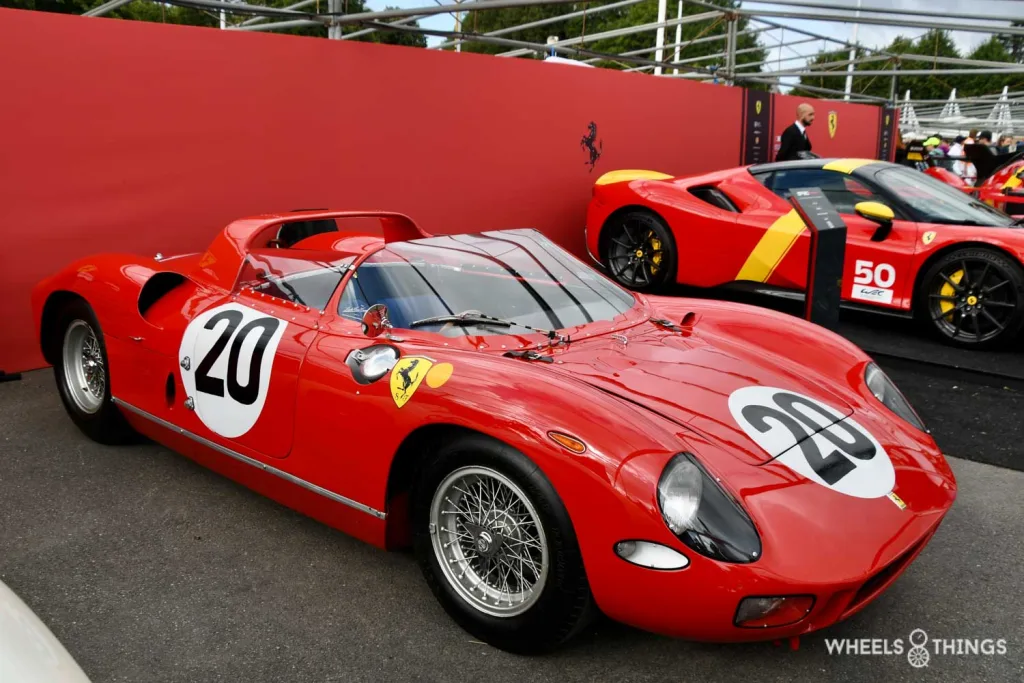
Ferrari could also win this French classic nine times until 2023. Their very first 166MM was not there but we did see the 250 TR, 250TR58 and 275P.
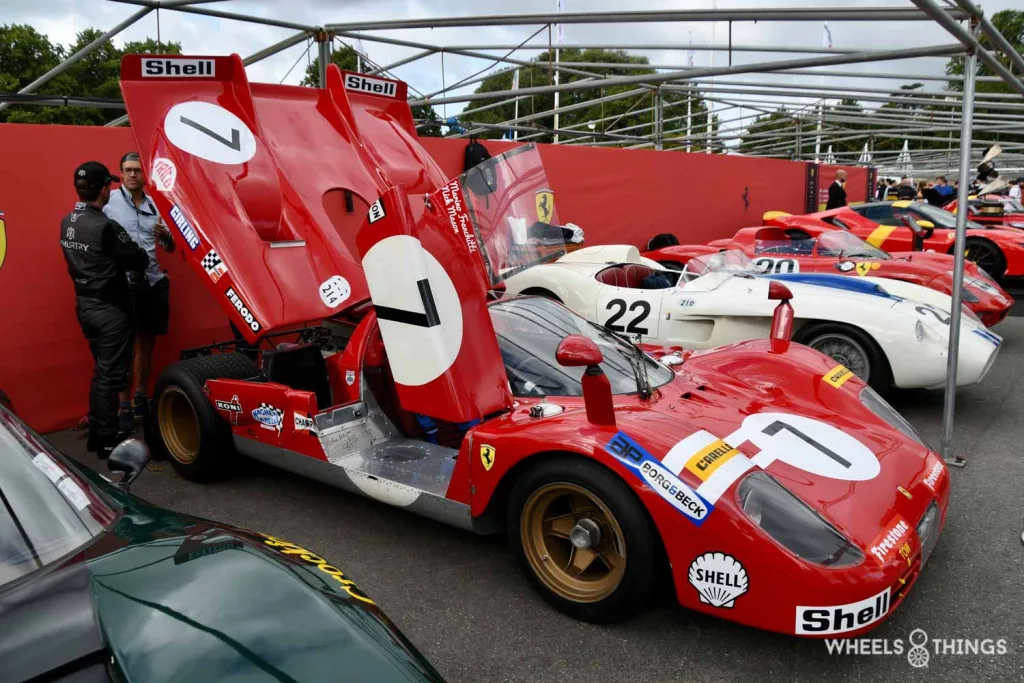
From a later period, we saw Pink Floyd drummer Nick Mason’s 512S. After a brief racing career, this Ferrari was sold to Steve Mcqueen’s film company Solar Productions and featured in his legendary Le Mans film that is definitely a must-see for motorsport fans.
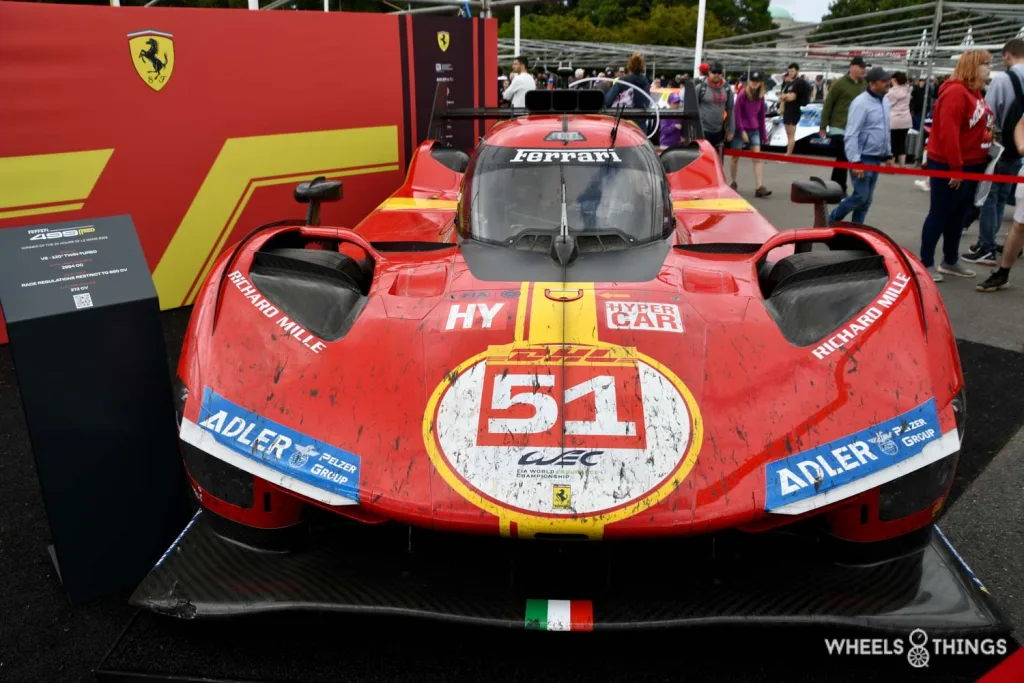
Their tenth win was also highlighted with the authentic winning 499SP.
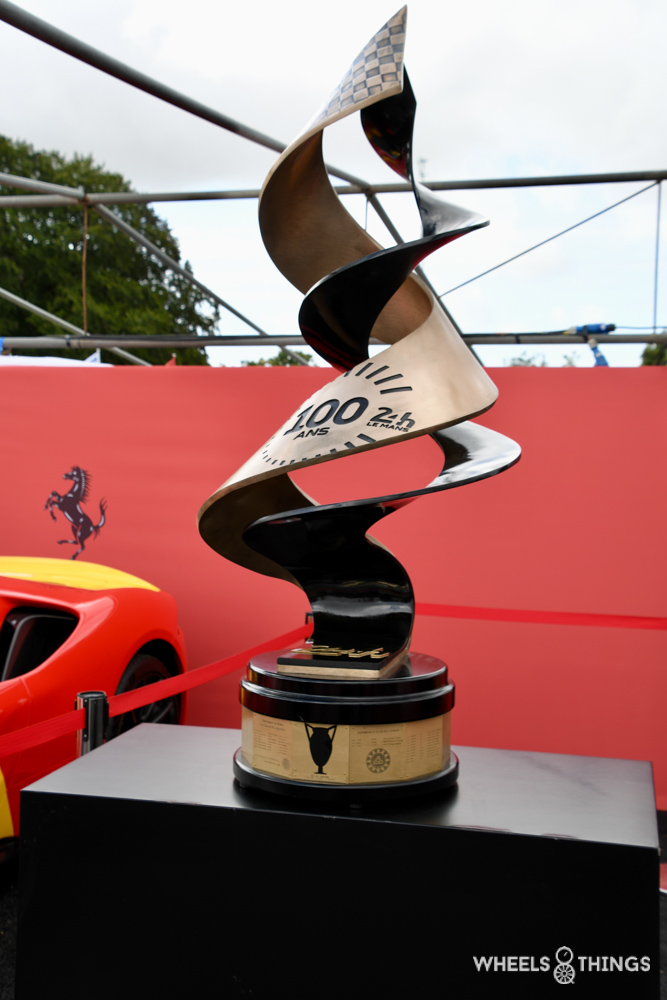
Beside the 499SP proudly flaunted the one-time 2023 victory trophy.
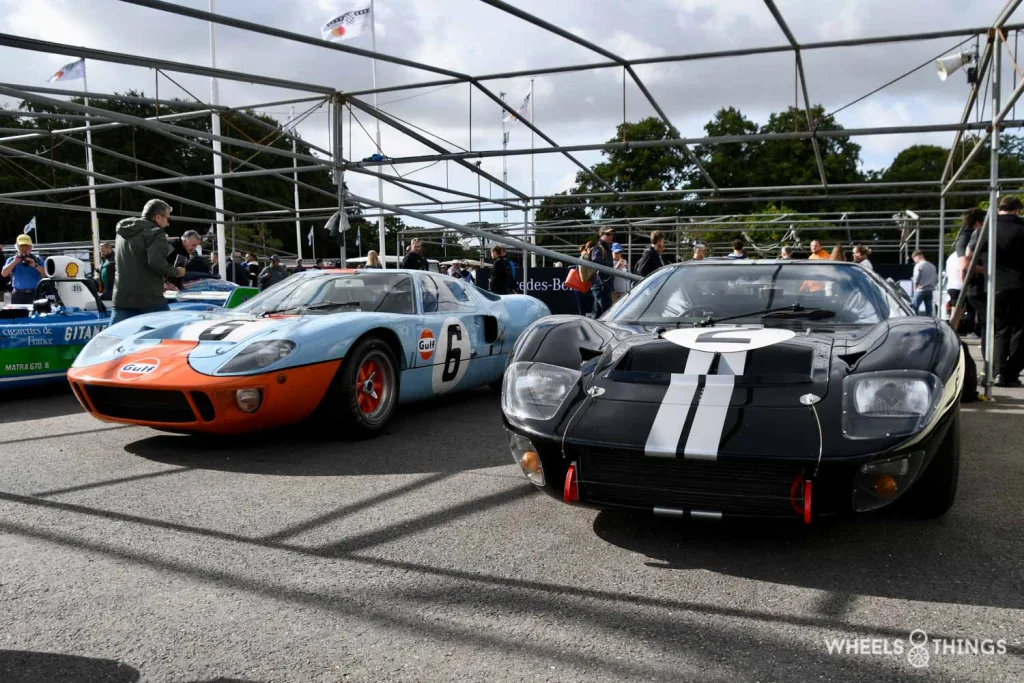
And those ten Ferrari wins could have been many more had it not been for one Henry Ford who decided to teach Enzo a lesson after negotiations for Ford’s takeover of Ferrari were halted by a decision by Mr Ferrari.
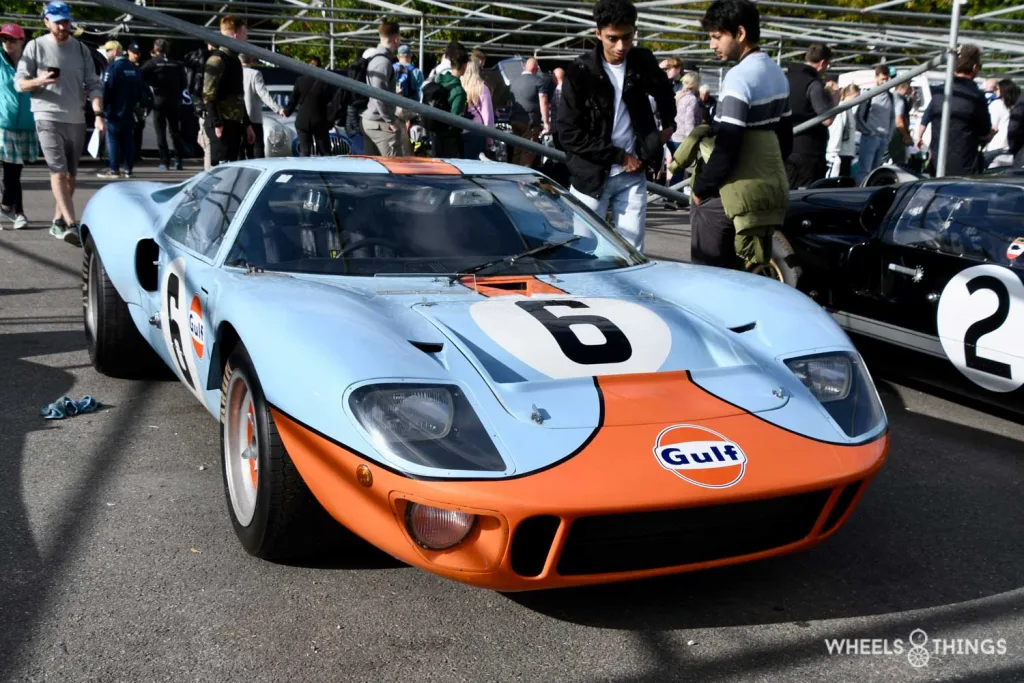
Ford built its own car for Le Mans and the GT40 was born. After a few difficult years, victory came in 1966. Bruce Mclaren and Chris Amon drove their black GT40 to victory. The next three years too, the win was for Ford. In 1968 and 1969 even with the same car from the Gulf John Wyer team. Chassis 1075 is one of the few double Le Mans winners. Of course, 1075 was on the FOS. Unfortunately only static. You can read more about the 1969 victory with our compatriot Jacky Ickx at the wheel here.
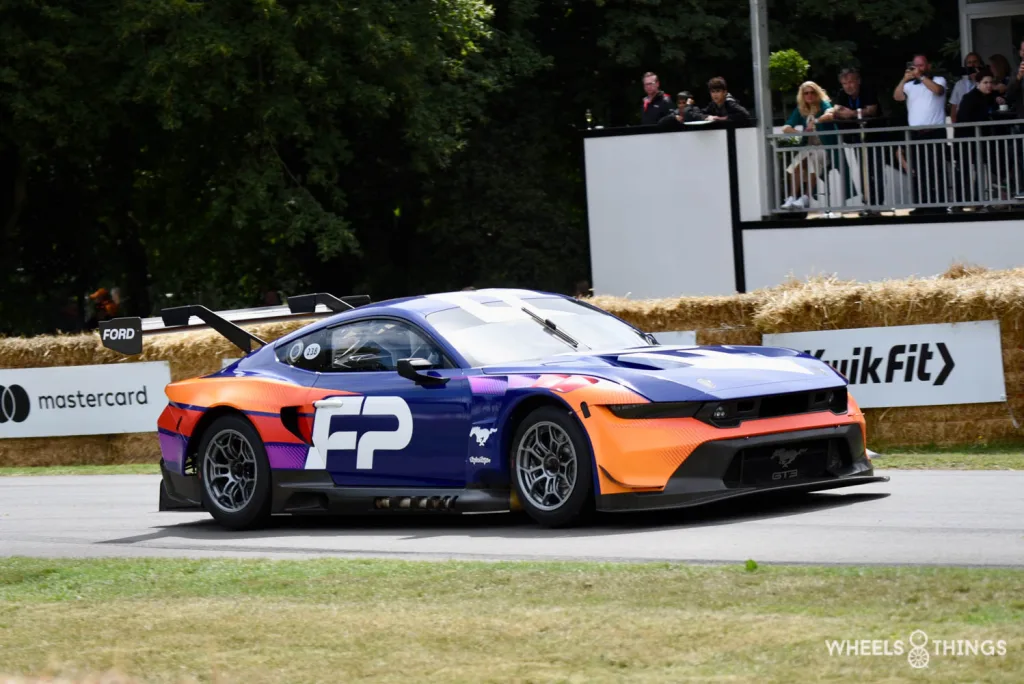
Ford had also brought along its, recently presented, latest new Mustang GT3. This Mustang will be able to be used from 2024 in all GT3 championships and in the new Le Mans GT class. And being Americans, they obviously opt for a fat 5.4-litre atmospheric V8. Yes, it is clearly an “American”. Keep it coming we would say. This Mustang is a collaboration between Ford Performance, Multimatic ( chassis ) and M Sport ( engine ).
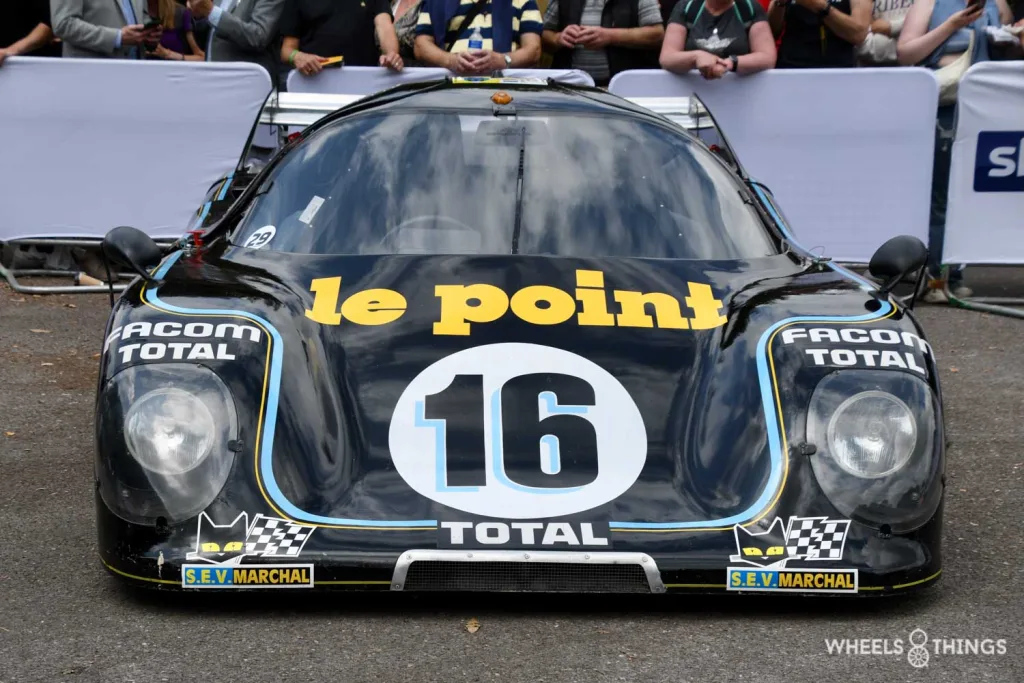
There was also a French contribution with winning examples from Matra, Renault and Rondeau. Rondeau’s story was covered with us earlier and you can read it again here.
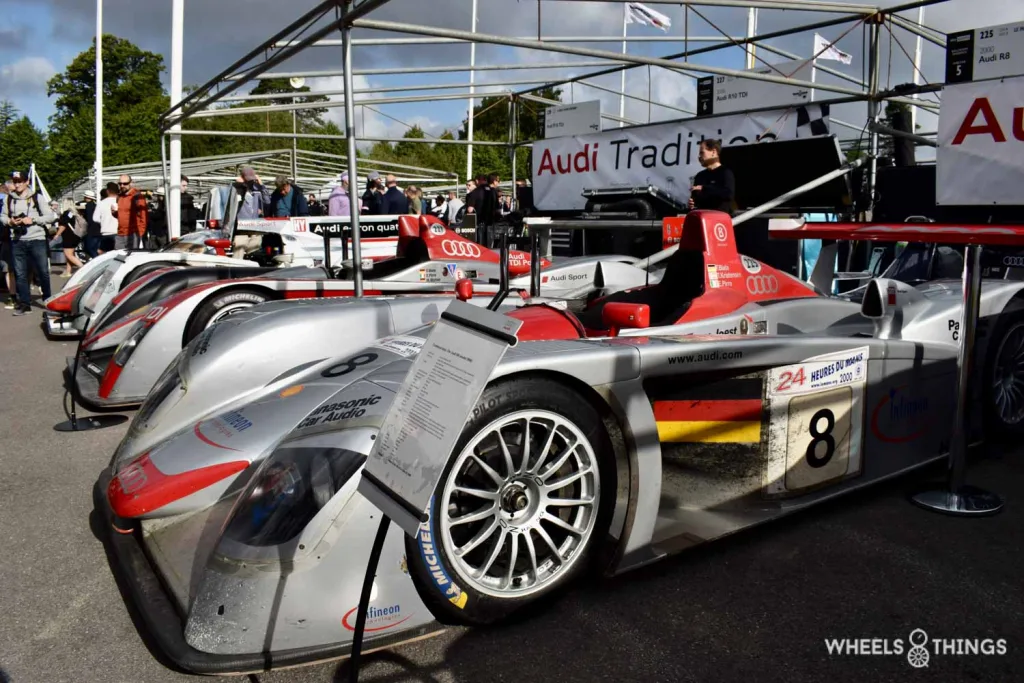
After the turn of the century, there was a dominance by Audi at Le Mans. From 2000, there were nine consecutive wins by their R8 and R 10 TDi.
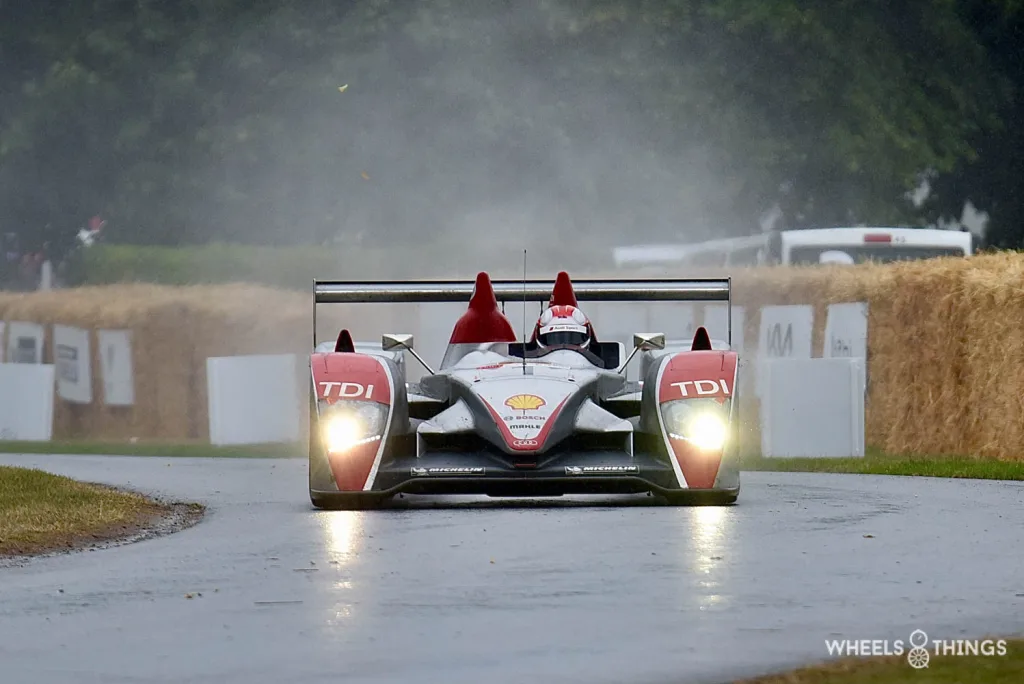
Only in 2003 did they have to let Bentley win with the Speed 8. But this was entirely planned. Audi did not send a factory team that year and the Bentley was in fact an Audi with a different bodywork. A very nice bodywork, though.
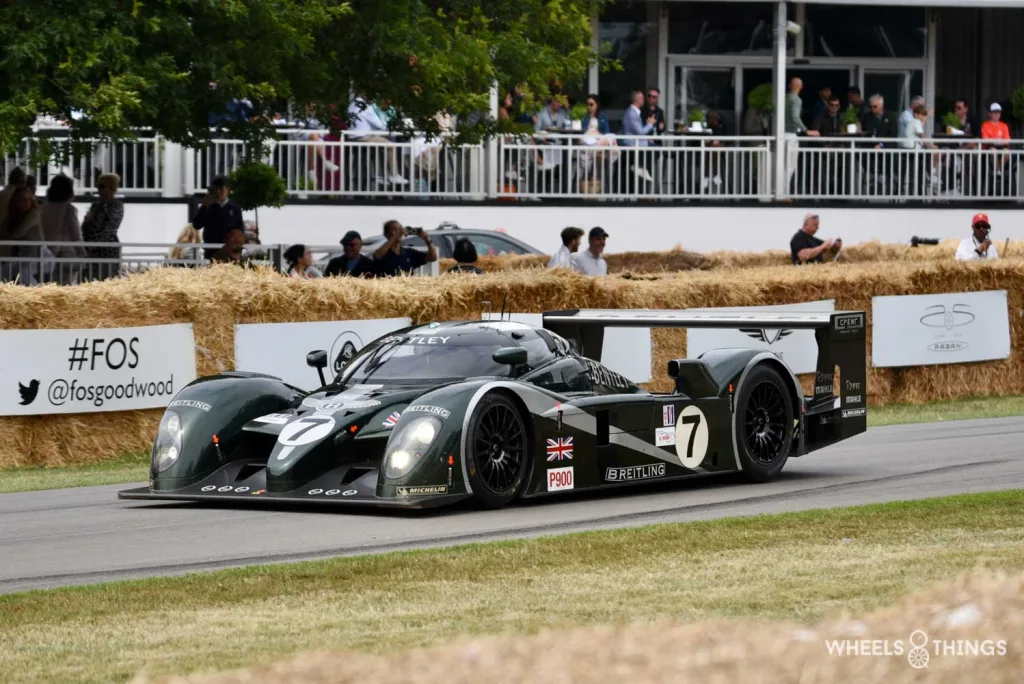
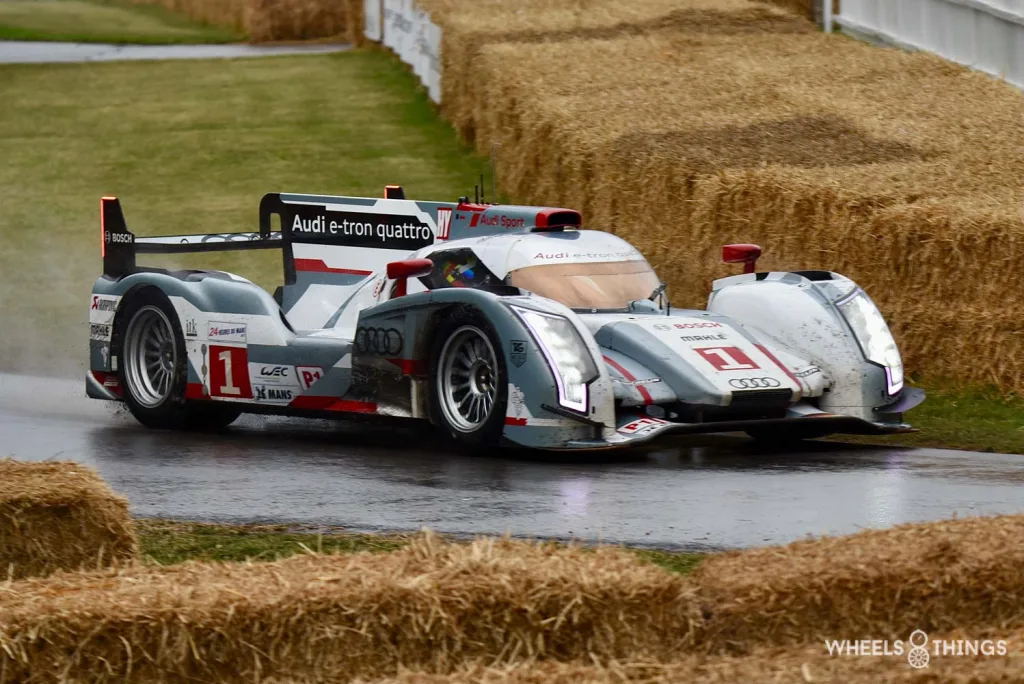
After a Peugeot victory in 2009, Audi added five more. First with the R15 Tdi and then four with the R18 e-tron quattro hybrid. And as befits a good hybrid, it fell silent on the uphill climb. They were complex cars even then, and even now they prove difficult.
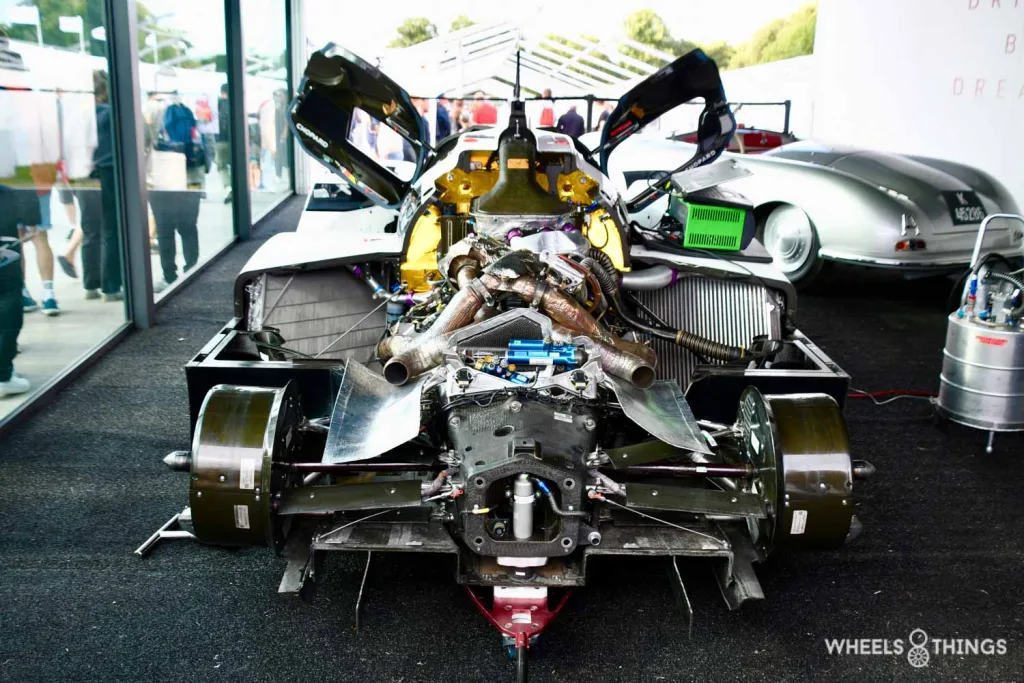
At Porsche it was no better. The equally complex 919 hybrid had to be pushed along several times by the mechanics. And yes, this one also refused service several times. We had also seen this 919 driving at the FOS in 2018. Then around 30 people were there to make it happen. This time there were only about five and the missing 25 were clearly perhaps needed anyway.
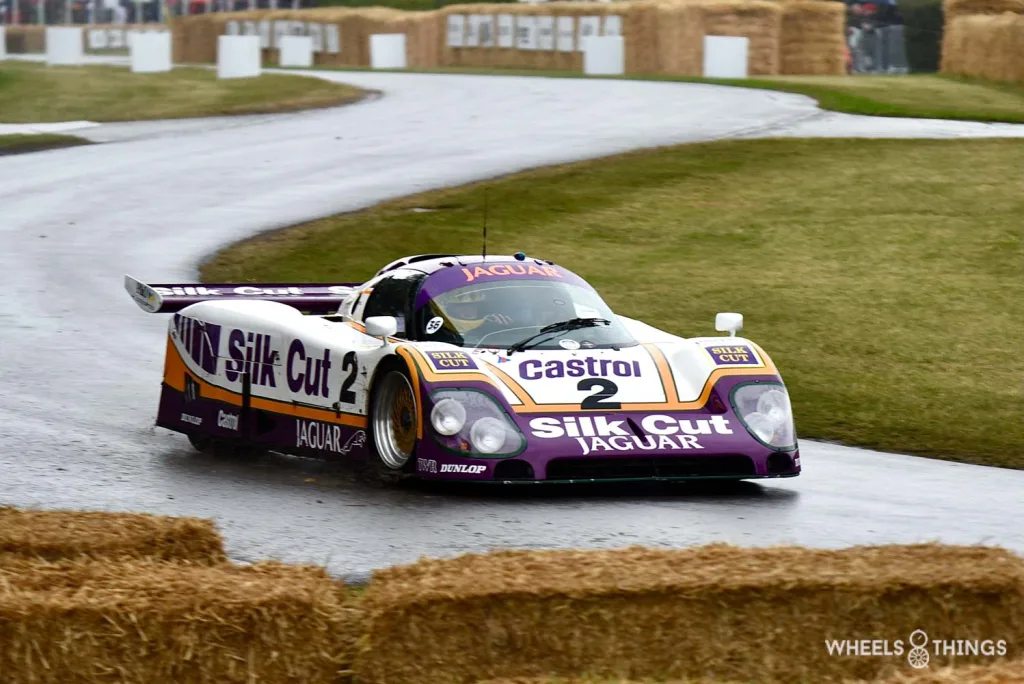
Needless to say, Jaguar could not be left out of this series. The D Type was already featured and in the Group C period, the Coventry-based marque won twice with the XJR 9 in 1988 and the XJR 12 in 1990. The stunning Silk Cut version of the first win had been brought out once more by Jaguar Heritage from the premises of their Heritage Trust. Incidentally, it is the only TWR Group C Jaguar that is part of their collection. All the others are with private owners.
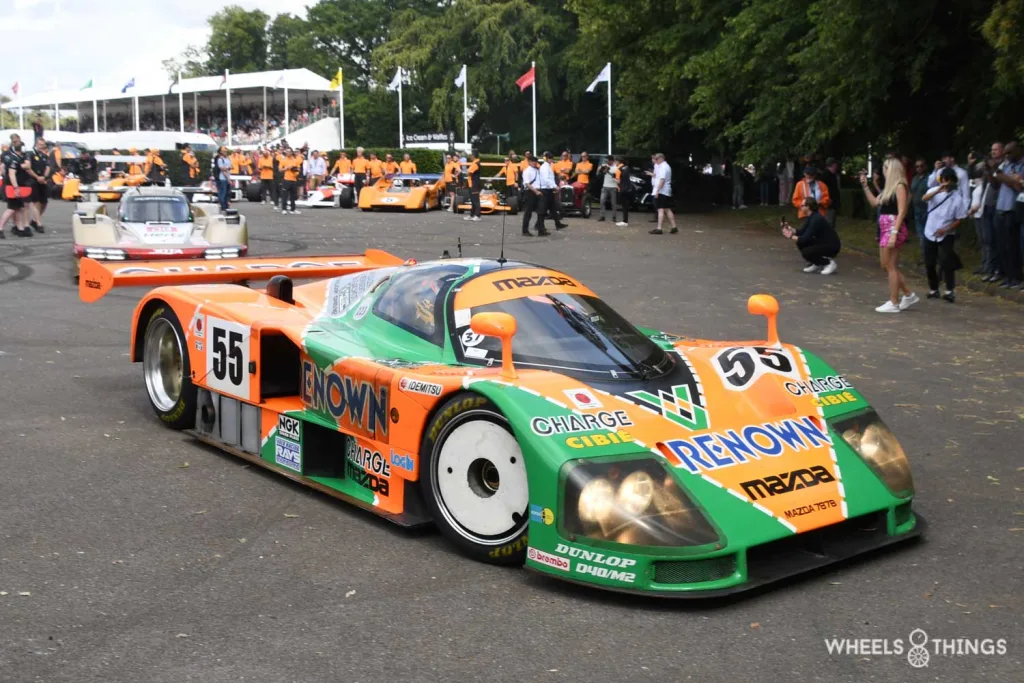
Then again, the winner of the 1991 edition, the Mazda 787B with its wankel engine, provided the most noise. This 787B was the original Le Mans winner that had come over from Japan especially for the celebrations at Le Mans and Goodwood. Then winner Johnny Herbert had the honour of getting back behind the wheel of the Mazda.
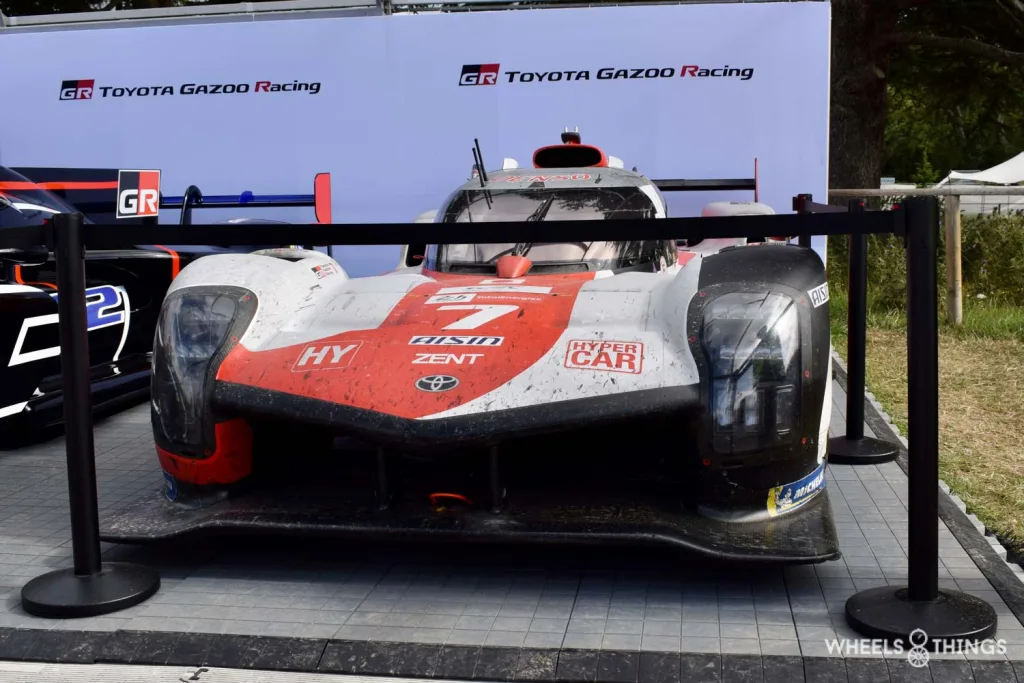
Then again, fellow Toyota drivers had brought their latest Le Mans winner, the GR010 Hybrid. This one was on static display in the paddock.
75 YEARS OF NASCAR
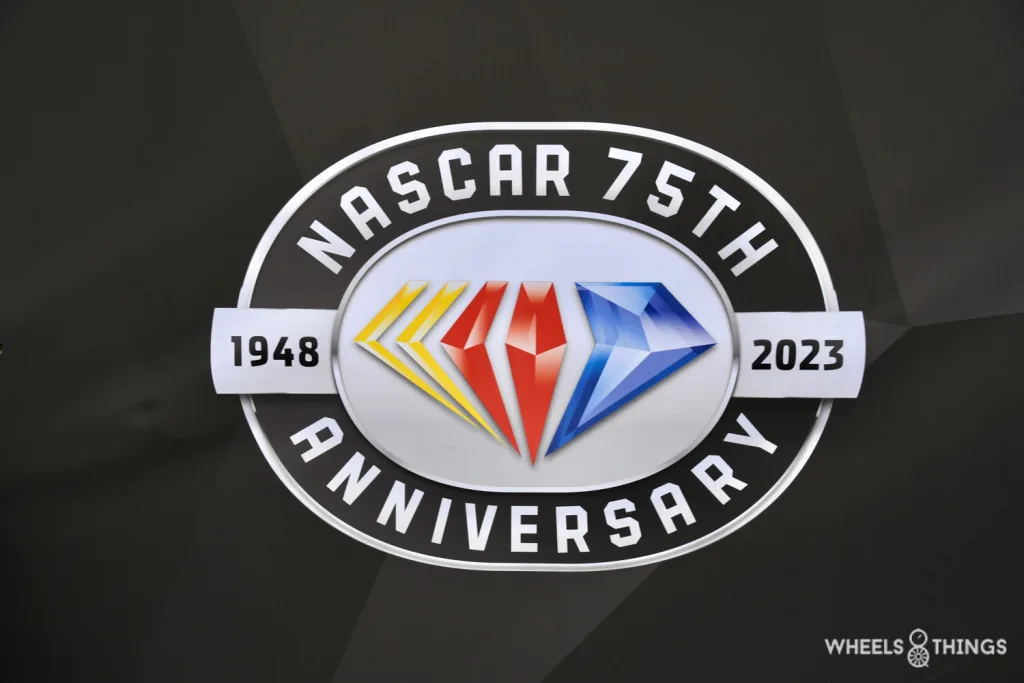
Besides Le Mans, there was another organisation that could blow out 75 candles: American Nascar, best known for its races on specially built oval circuits.
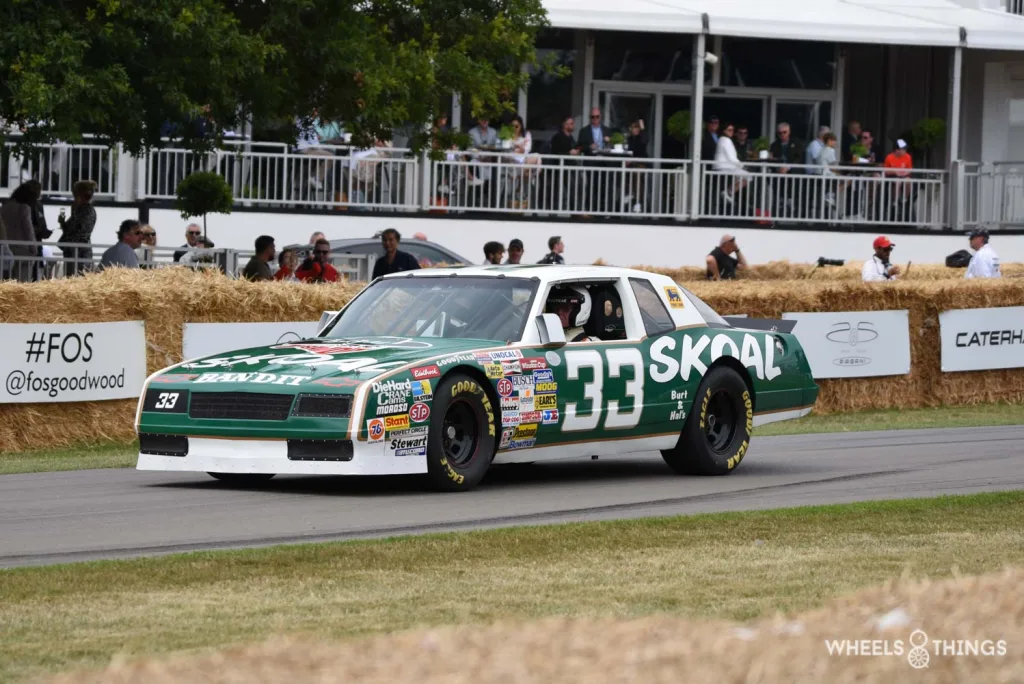
All major American brands such as Pontiac, Chevrolet, Buick, Chevrolet, Dodge and Ford participate or once participated in it. Nascar is one of the most popular sports in America
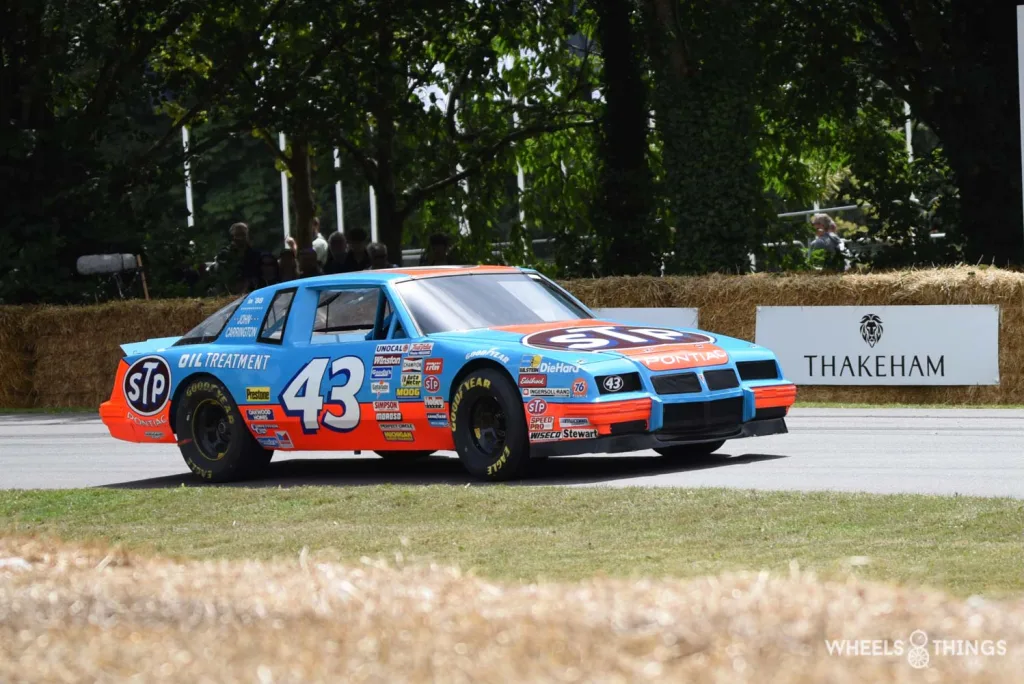
The circus travels all over the United States from early February to early November to finish a race every week. It is a spectacle motor sport that may be a bit boring for Europeans, but Americans enjoy it to the full.
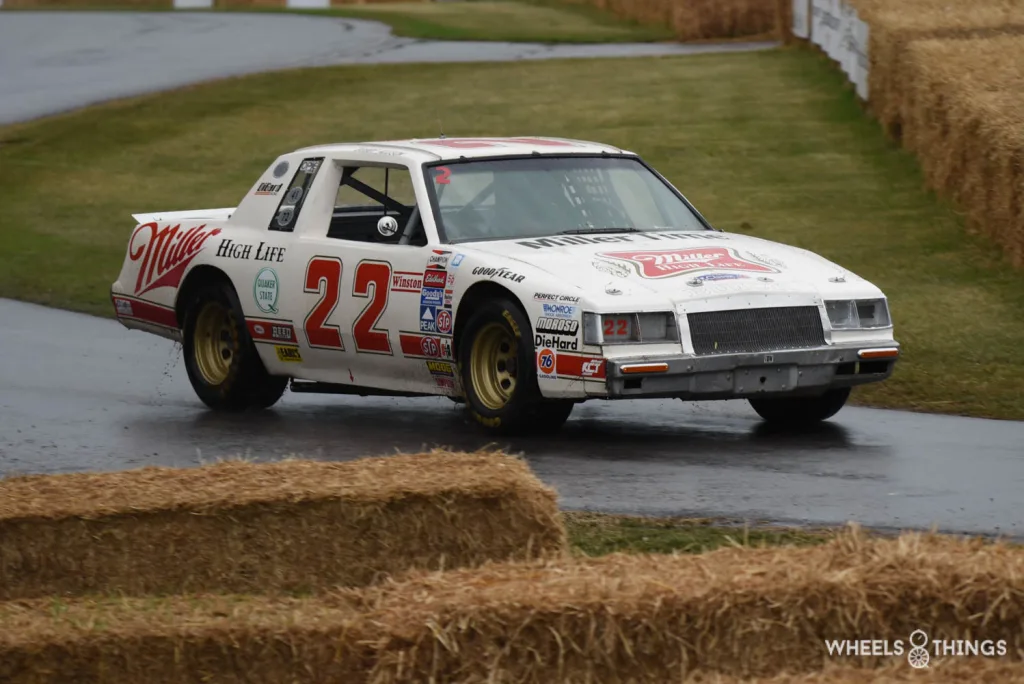
The evolution is clearly noticeable. Whereas the oldest models were still derived from a series car, including e.g. the chrome bumpers, nowadays they are tube frames fitted with a plastic bodywork on which even the headlight is a sticker.
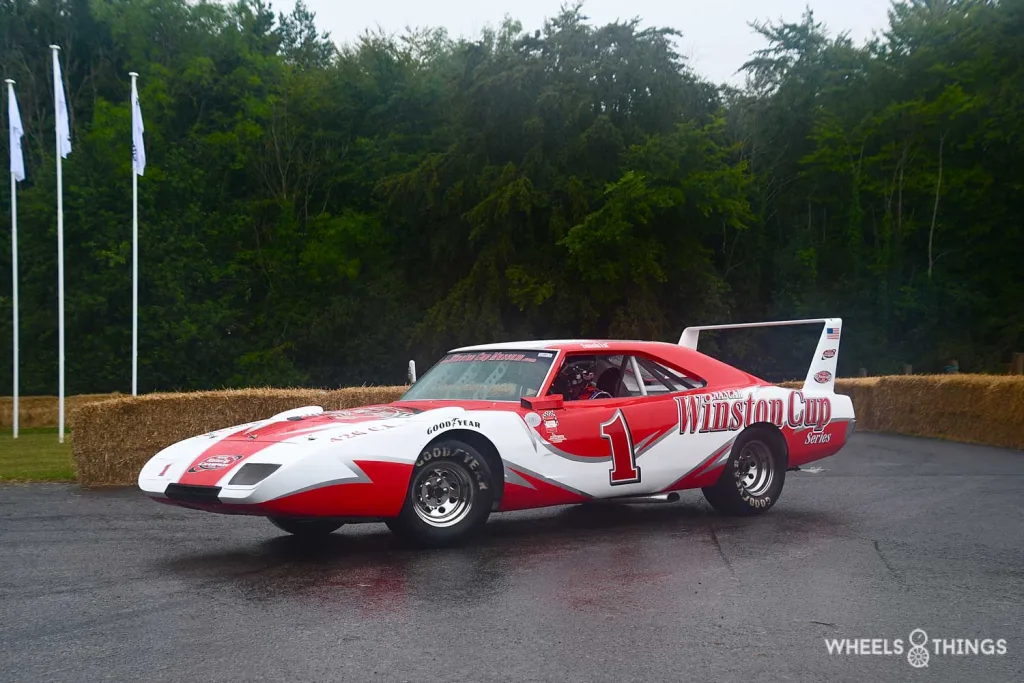
One of the most imposing Nascar cars undoubtedly remains the Dodge Charger Daytona with its imposing rear wing.
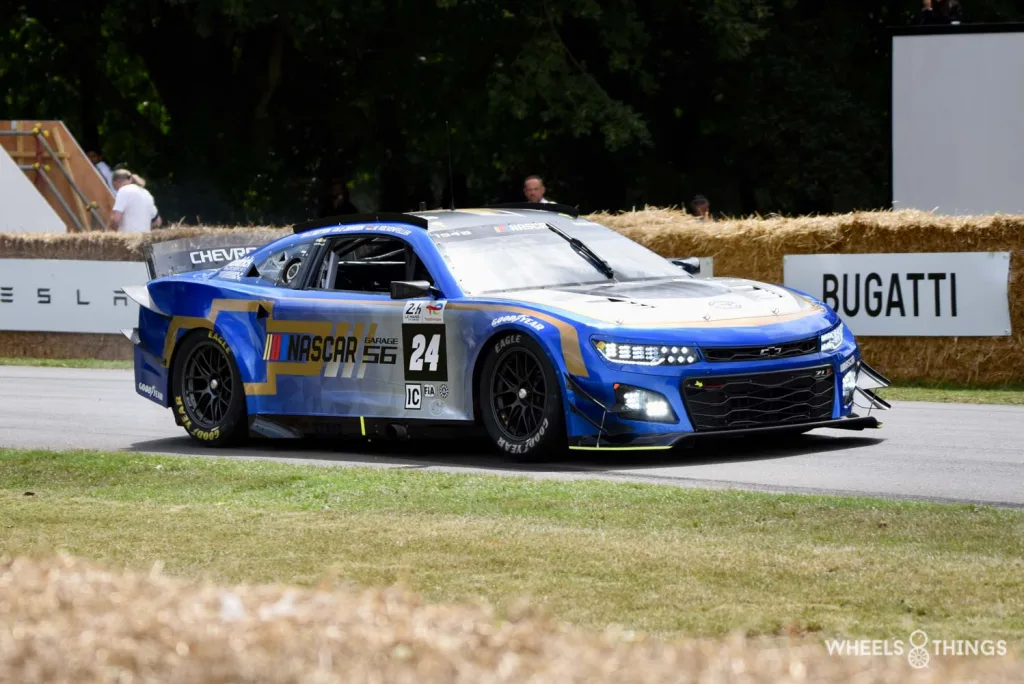
The main attraction in this stretch was Hendrick Motorsport’s Chevrolet Camaro ZL1, which had just raced in the 24 Hours of Le Mans to mark its 75th anniversary. This did require the Camaro to be completely taken in hand and modified in many areas. For example, a Nascar car has no headlights and these are very important in a 24-hour race.
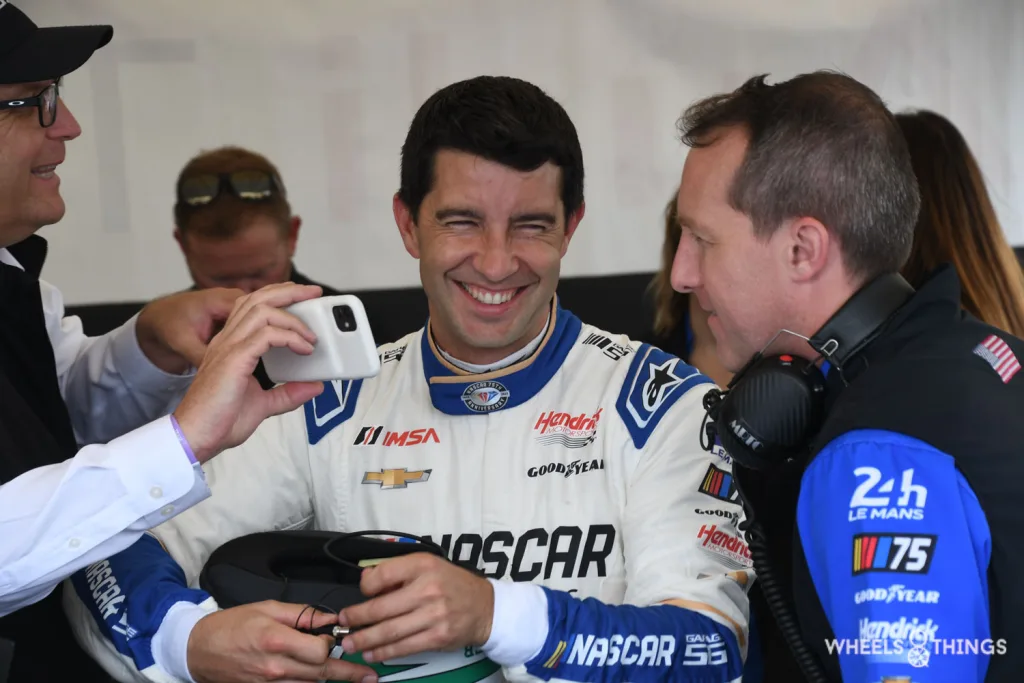
Hendrick Motorsport had the Le Mans car with them which was static in the paddock. The hill climb was done with a their spare car that perfectly conformed to the original. Ex F1 world champion Jenson Button and ex Le Mans winner Mike Rockenfeller, who had both driven it for 24 hours along with Nascar legend Jimmie Johnsson, were behind the wheel of this fantastic-sounding V8 Camaro. All in all, the participation at Le Mans was not really bad. On a lap, the ZL1 was even faster than the GT cars of Porsche, Ferrari, Aston Martin and Corvette. On the straights, the speed was even only slightly less than an LMP2 car. In the corners, it was a bit different: it remains an American “muscle car”. Fast on the straights but slow in the corners.
50 YEARS WRC
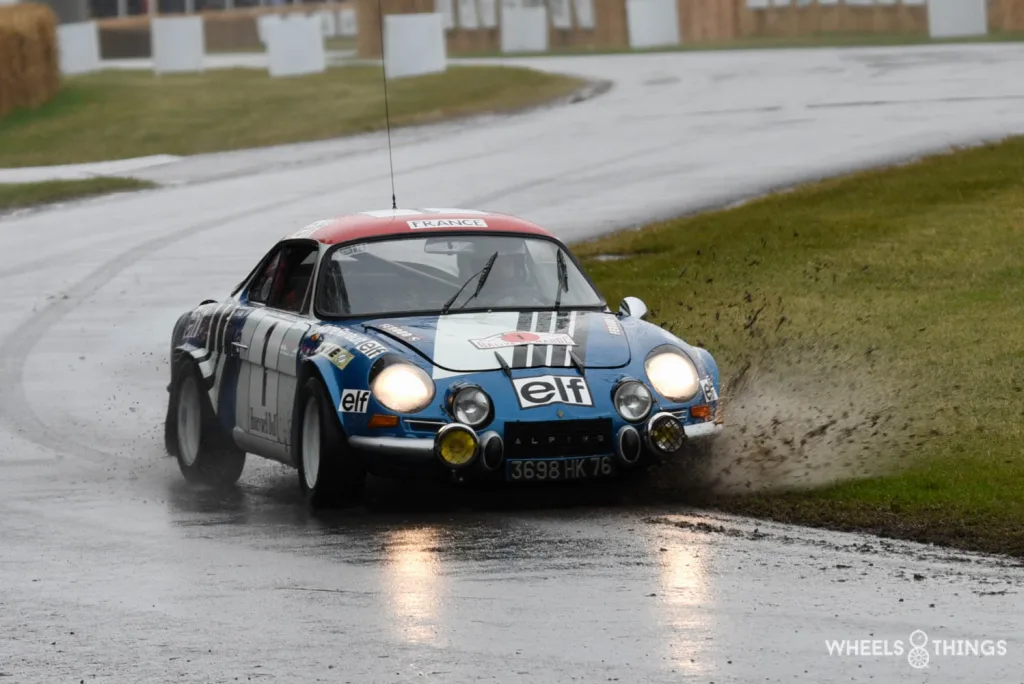
And as already cited: the celebrations just kept on coming. In 2023, it will be 50 years since the World Rally Championship saw the light of day. For the first few years, there was only a constructors’ championship for brands and the first world champion was Alpine-Renault with their berlinette A110.
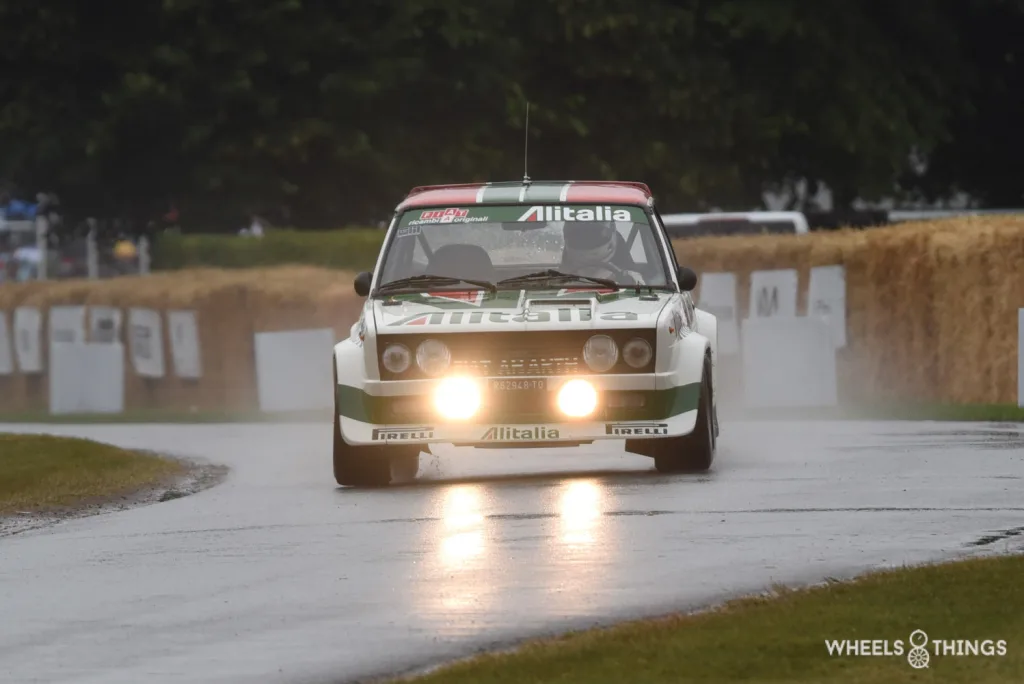
Four years later, there was also a world drivers’ title and it went to legendary pair Sandro Munari and his Lancia Stratos HF. The world title for the makes did go that year to sister brand Fiat with their 131 Abarth.
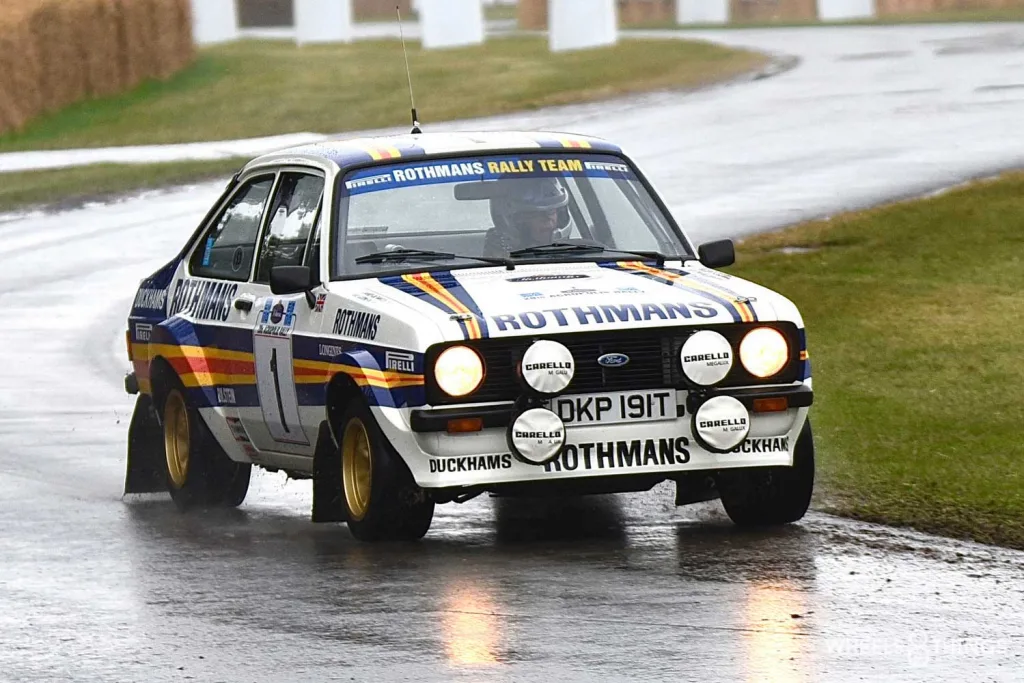
The Ford Escort is also a real rally machine. In 1981, Ari Vatanen together with Dave Richards ( the later boss of Prodrive ) won the championship with this Ford Escort 1800 in Rothmans trim.
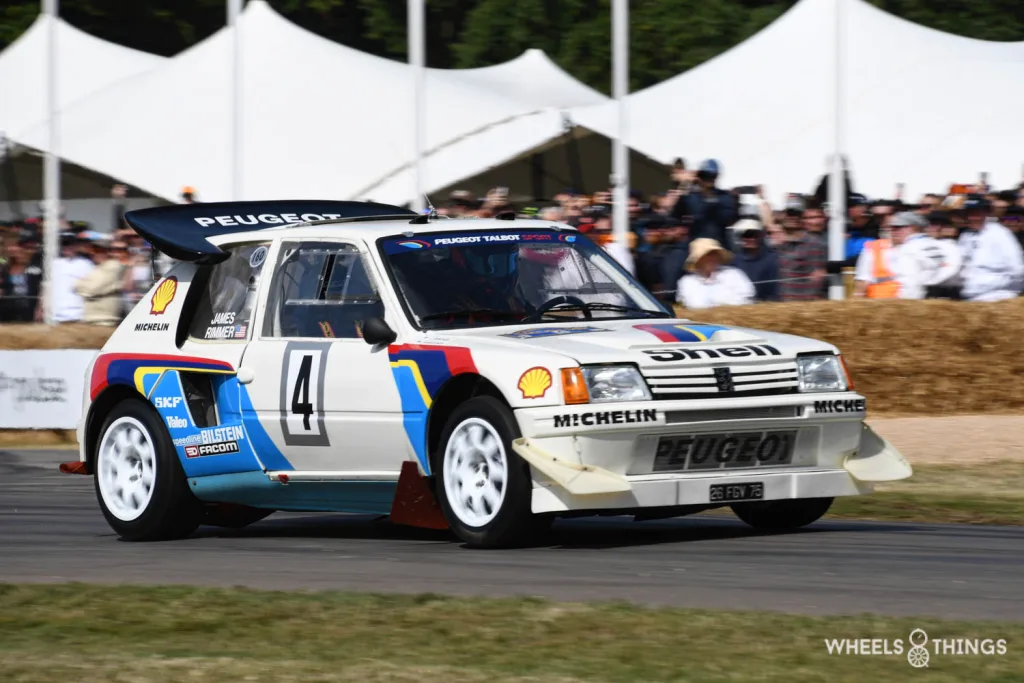
The most legendary rally cars are still the famous “Group B” monsters. Lancia Delta S4, Audi Quattro Sport, Ford RS 200 or this Peugeot 205 T 16 Turbo Evo 2 are just a few examples of how things were back then. This Group B was dropped by the FIA at the end of 1986 due to being too fast, too dangerous and too many fatal accidents.
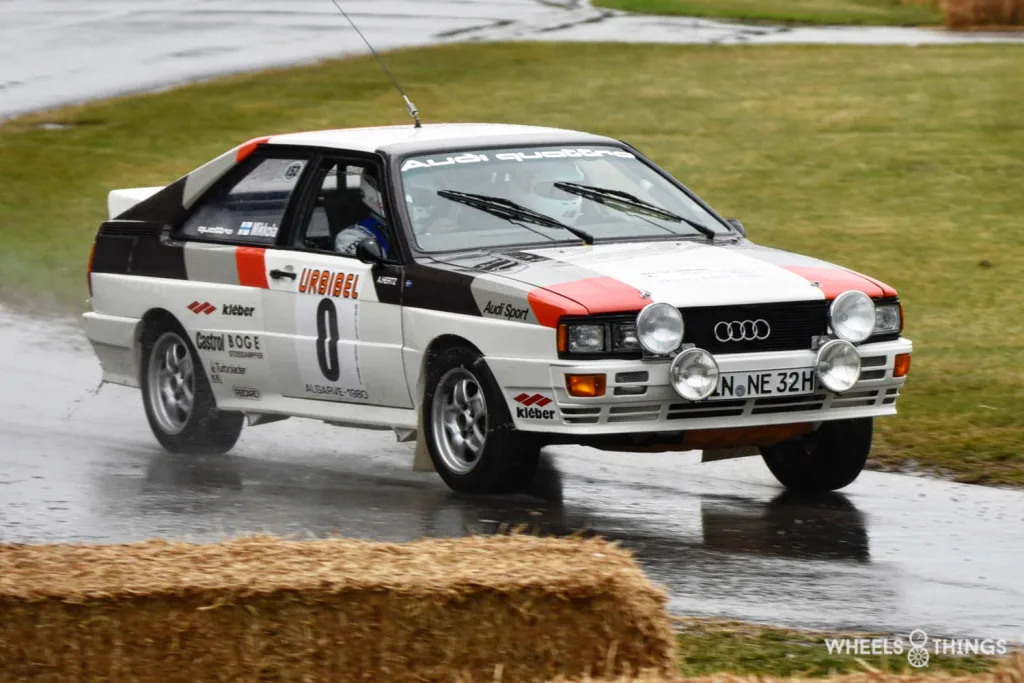
Of course, the Audi Quattro was not to be missed. Audi introduced four-wheel drive to rallying. Certainly efficient but a two-wheel-drive Escort or Lancia Stratos still provided much more spectacle. Audi Tradition had brought its very first Quattro to the FOS. It was driven by the sons of then Audi pilot Hannu Mikkola.
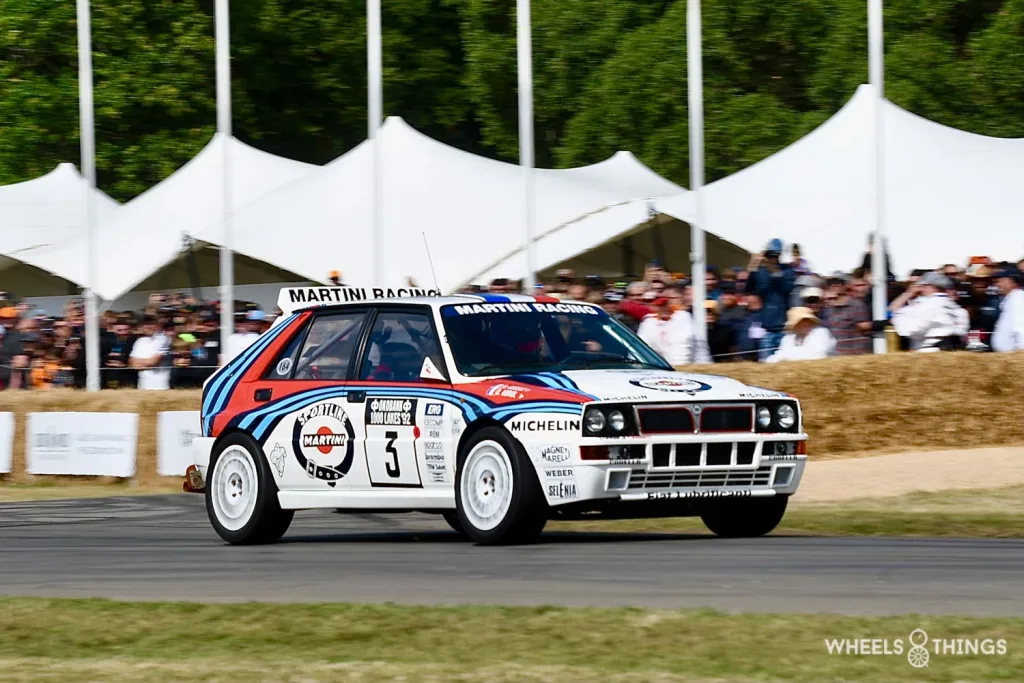
From 1987, the Group A comes to replace these monsters. The Lancia Delta Integrale is the new dominator, winning six consecutive World Championships with Miki Biasion, Carlos Sainz and Juha Kankkunen at the wheel. These Martini Lancias are now legendary.
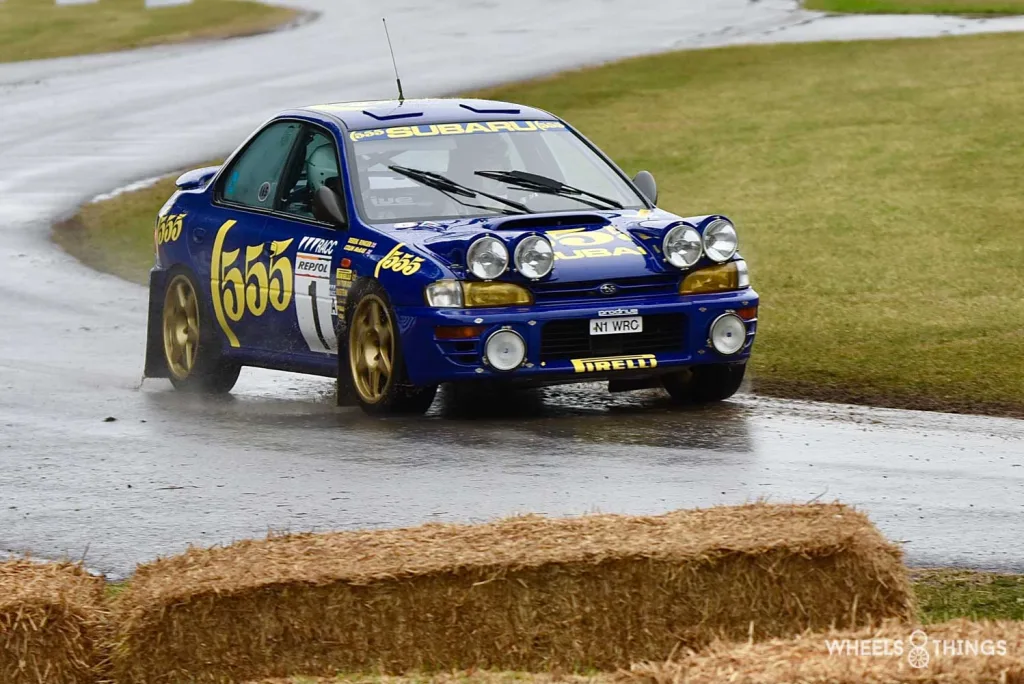
Equally legendary are the Subaru’s Impreza with which Colin Mcrae ( 1995 ), Richard Burns ( 2001 ) and Petter Solberg ( 2003 ) won the World Championship. Prodrive, which was the preparer of these Imprezas at the time, is even releasing a new and limited to 25 series of these iconic Subaru under the Prodrive P25 designation. With a price tag of £460,000 + VAT and only to be immatriculated on public roads in the UK.
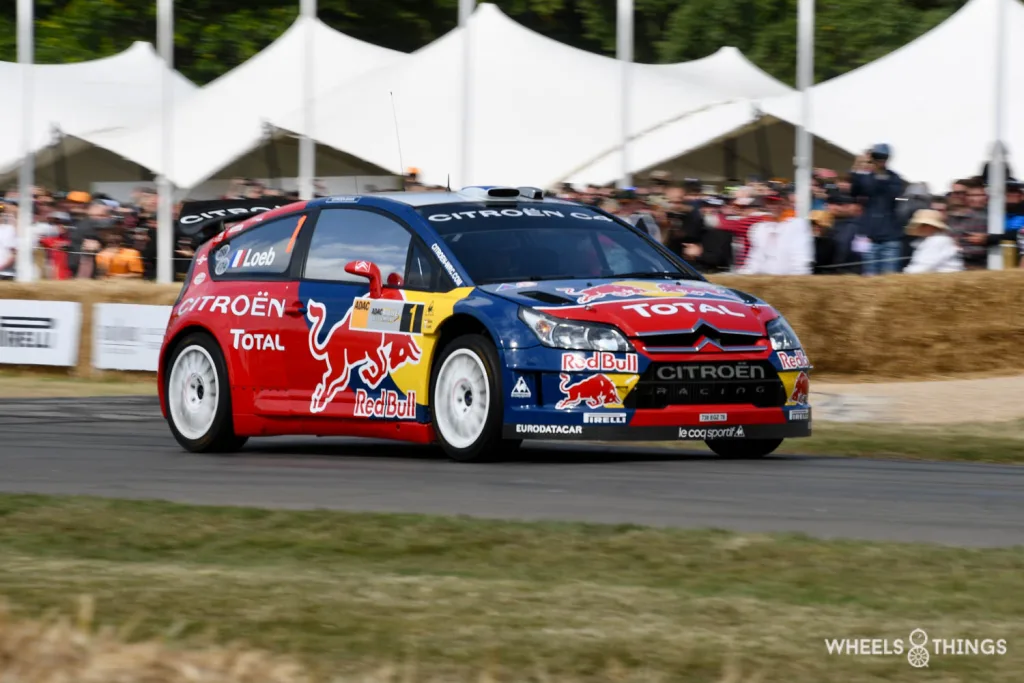
During this period, the regulations also changed from Group A to the WRC formula still used today. Frenchman Sébastian Loeb was then unapproachable with 9 consecutive titles with Citroën. He was then succeeded by his compatriot and fierce rival Sébastien Ogier who took 8.
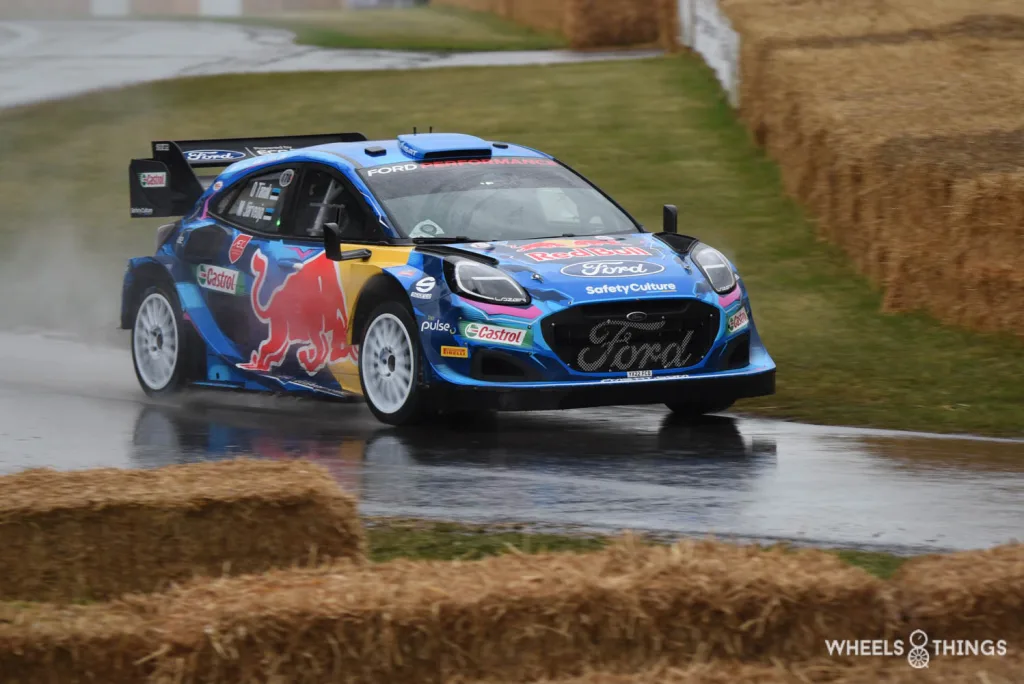
Today, hybrid technology also made its appearance in the WRC. This Ford Puma will compete against the Toyota GR Yaris and Hundai 120N.
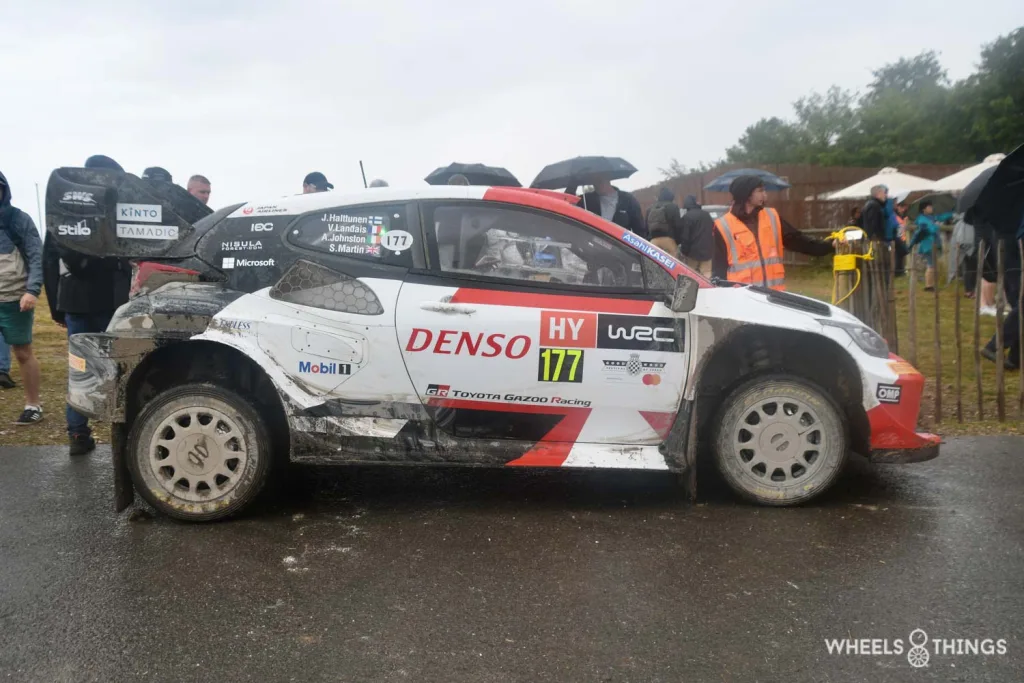
The WRC is still a hotly contested championship that, like Formula 1 today, is much more professionally handled by the teams and the FIA.
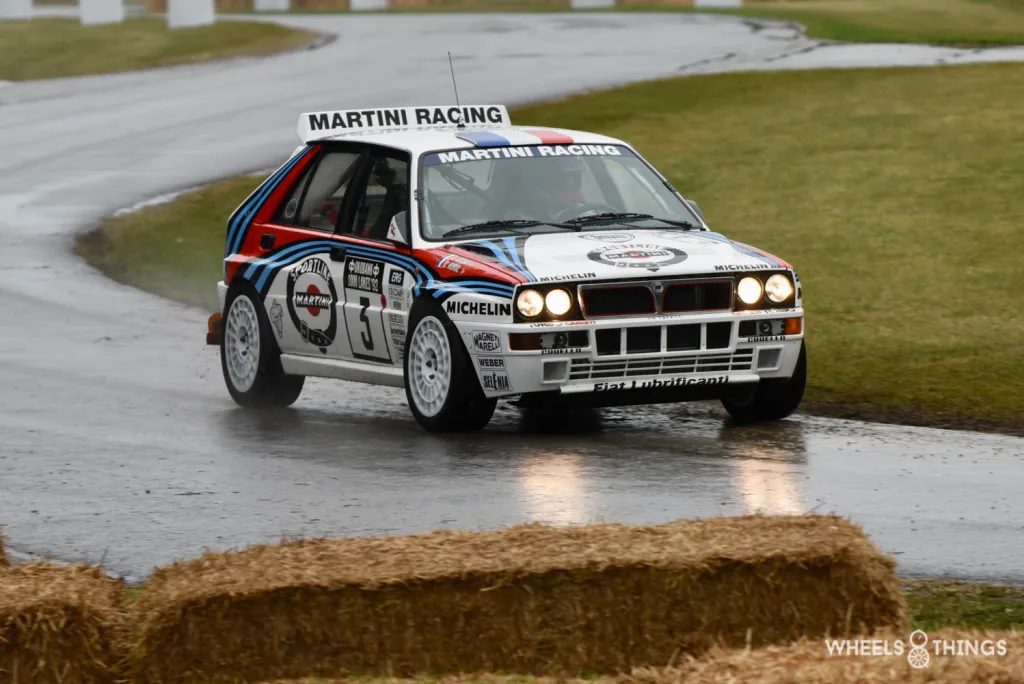
The charm level has declined a bit over the years but the races themselves still remain very spectacular. Still, the future for the WRC does not look very bright. New brands don’t really seem interested in this formula.
75 YEARS OF GOODWOOD
And the organiser also had a birthday party to celebrate and even a double with 75 years of motorsport at Goodwood and 30 years of Festival of Speed.
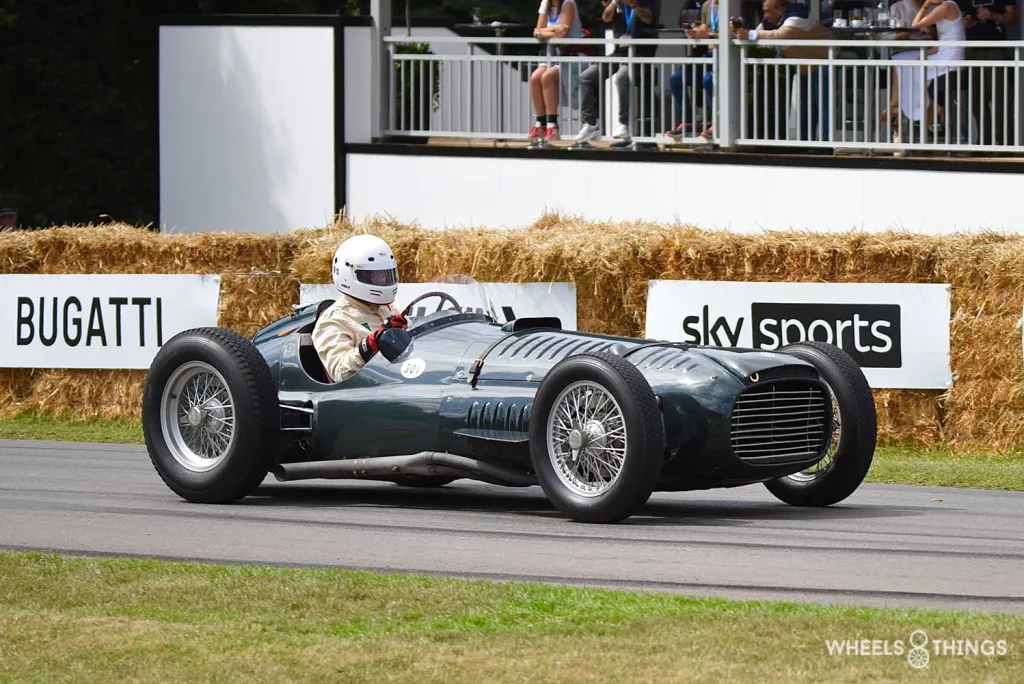
Indeed, the history of the Goodwood circuit was started in 1948 with a race track on the remains of the RAF’s Westhampnett airfield. Legends of the time were once again allowed to make their appearance in this series. Among others, we saw the impressive BRM 15 V16, various Aston’s such as the DB3 and DBR2 and the Ferrari 250 GTO and 250GTO/64
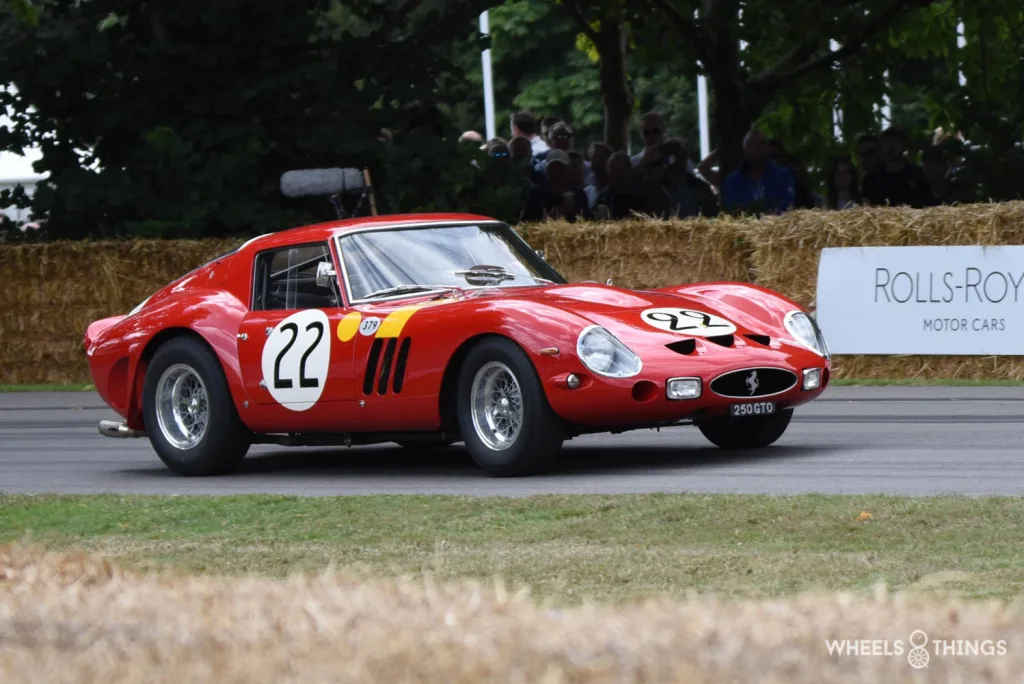
But it did not stop there. From 1966, although there were no more races at the track, it remained available for test drives.
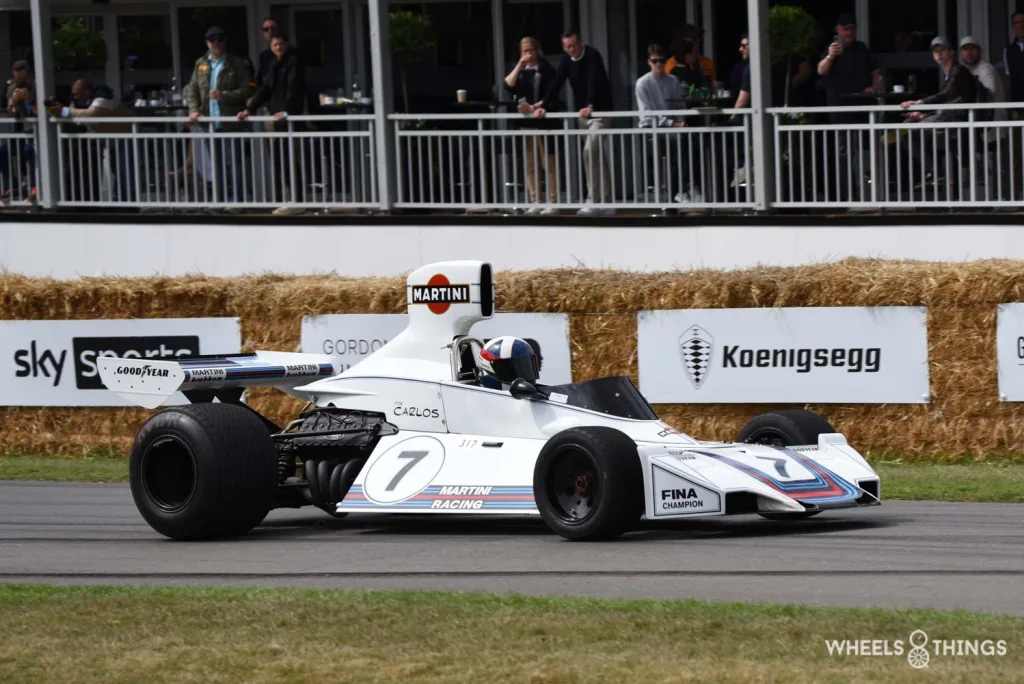
Several F1 teams used it regularly. One of these teams was Brabham but Mclaren or Tyrrell were also regular visitors. Gordon Murray’s GMA team had specially brought its Martini Brabham BT44 for this, with three-time Indy 500 winner Dario Franchitti at the wheel.
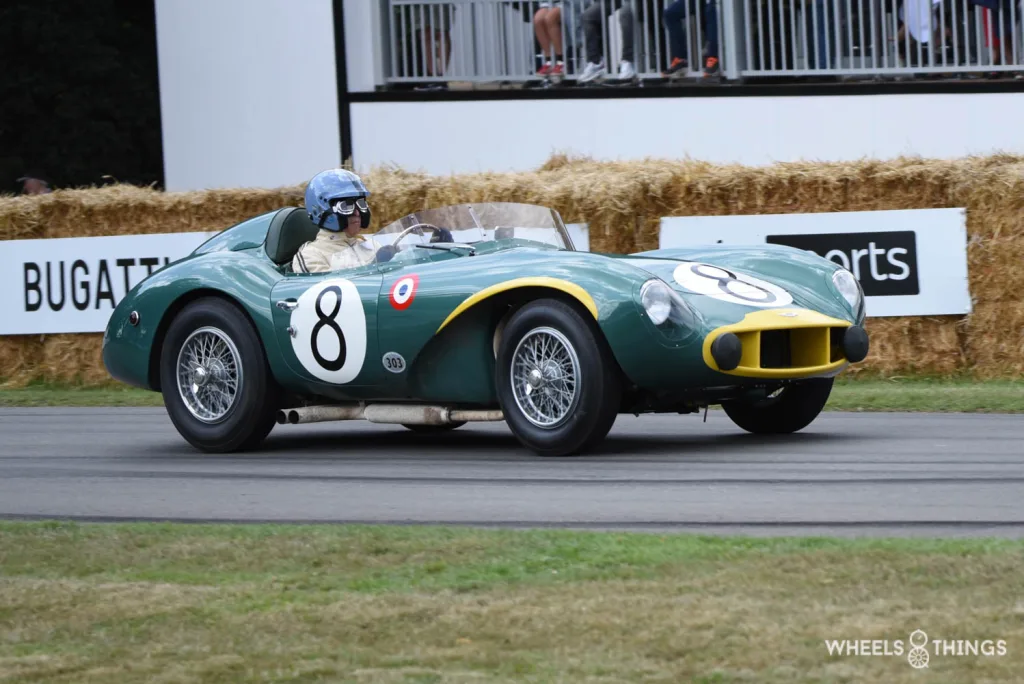
The circuit was then closed until it was restored in the mid-1990s. The renovated circuit, still in the atmosphere of the 1960s, first became the venue for the Goodwood Revival and later revived the Members Meeting.
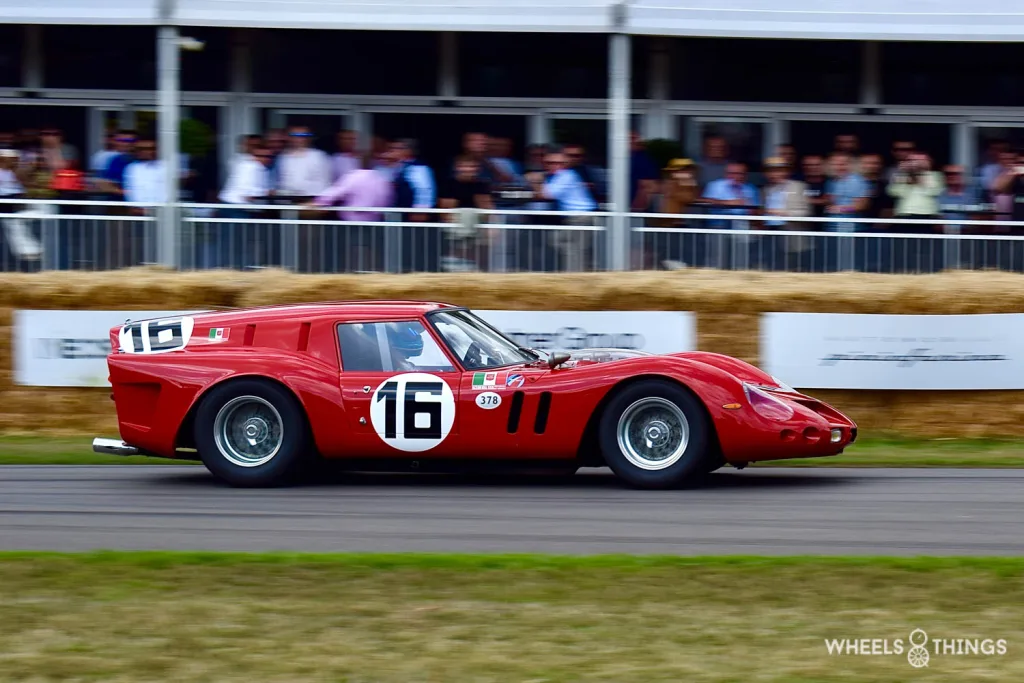
Several cars from these events drove by. The nest restored Ferrari 250 GT Breadvan was one of the crowd favourites from the Revival Meeting.
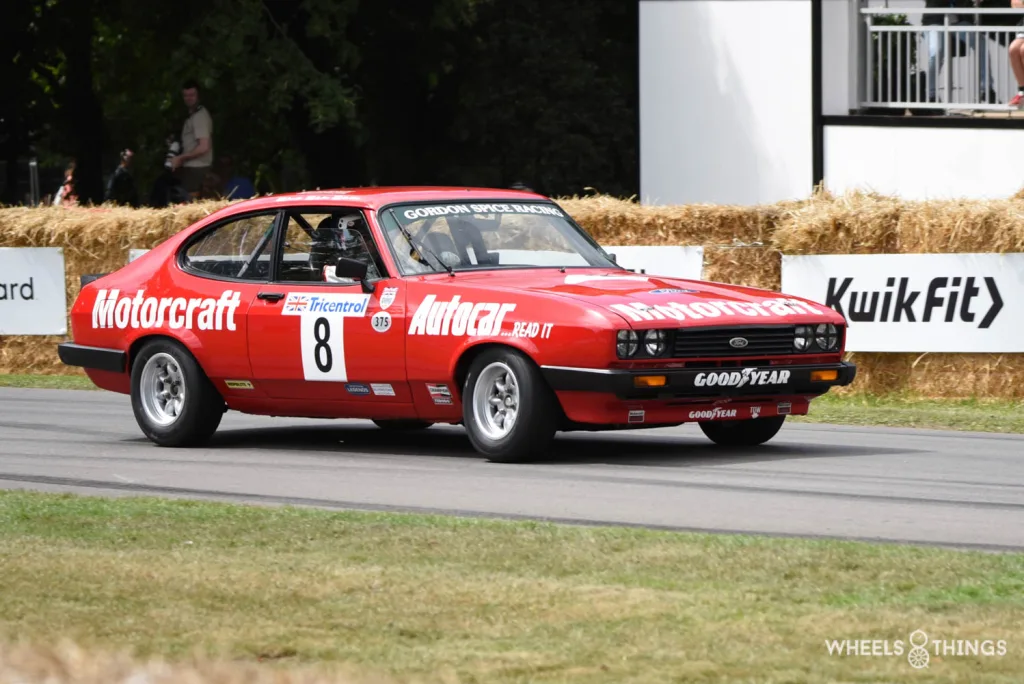
Then again, the Ford Capri 3.0 S is one of the crowd-pleasers from the Members Meeting.
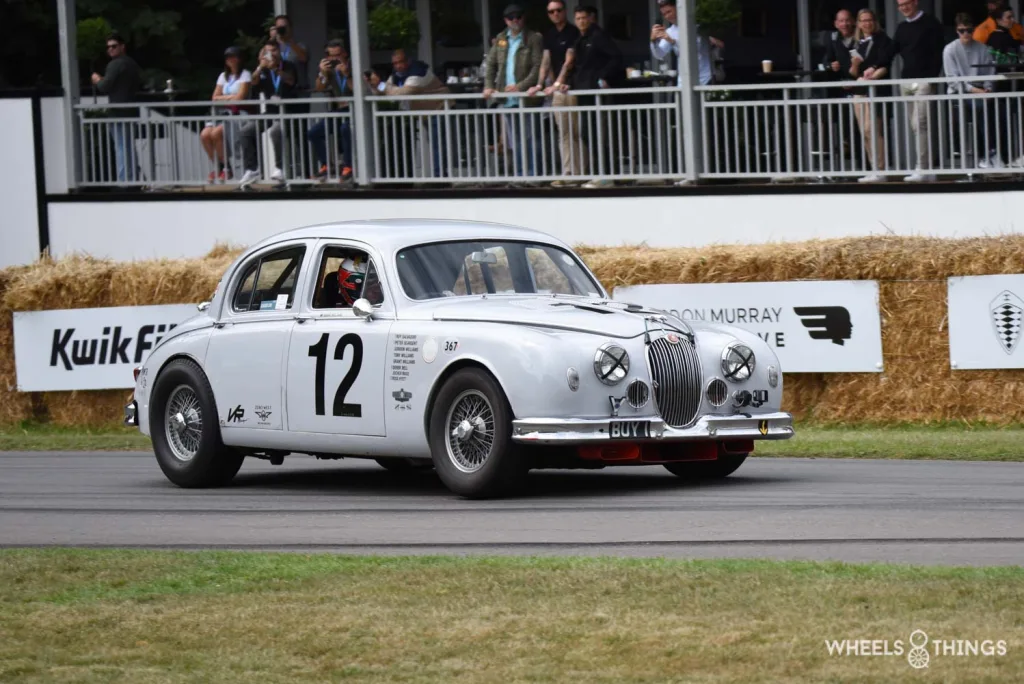
The FOS or Festival of Speed is also celebrating its 30th anniversary. As there was no permit to reuse the motor circuit at the time, this concept came out as an interim solution. The small-scale garden party ( though already with the hill climb ) grew into a world-class event in just a few years.
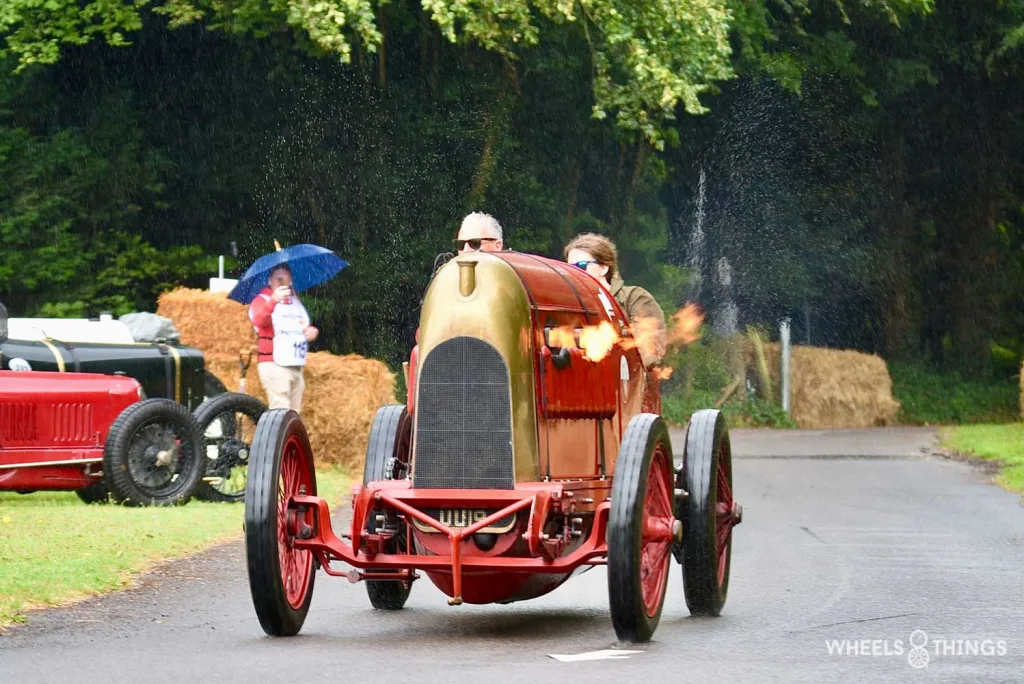
Several participants from this thirty-year period made their reappearance. Meanwhile, the fire-breathing Fiat S76 or “Beast of Turin” is a regular annual attraction.
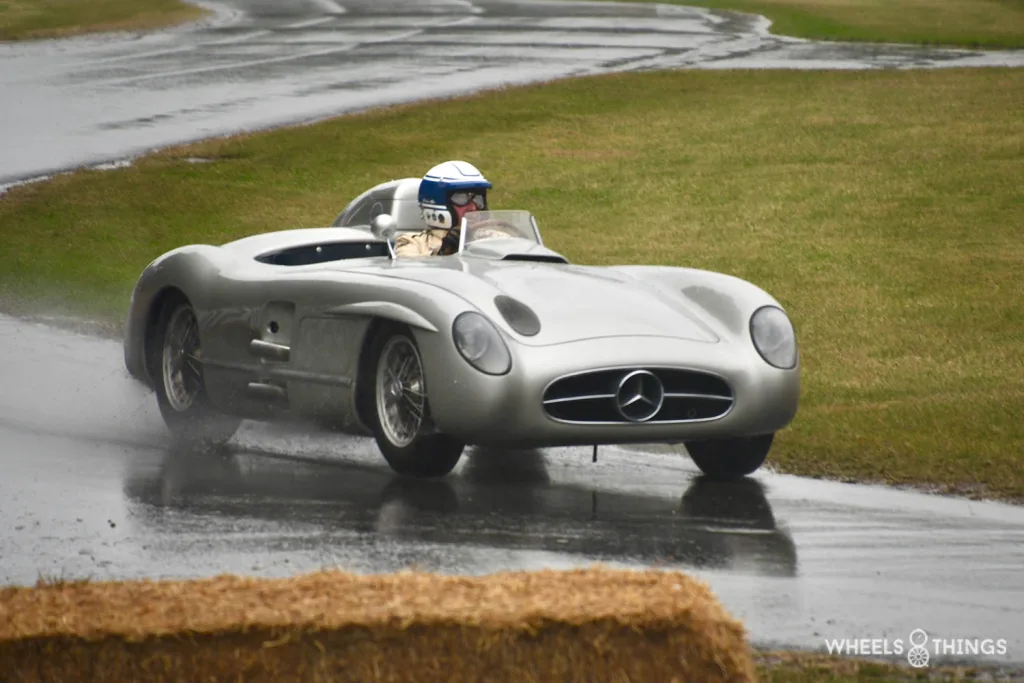
But a Ferrari GTO or the Mercedes 300 SLR are also regular visitors.
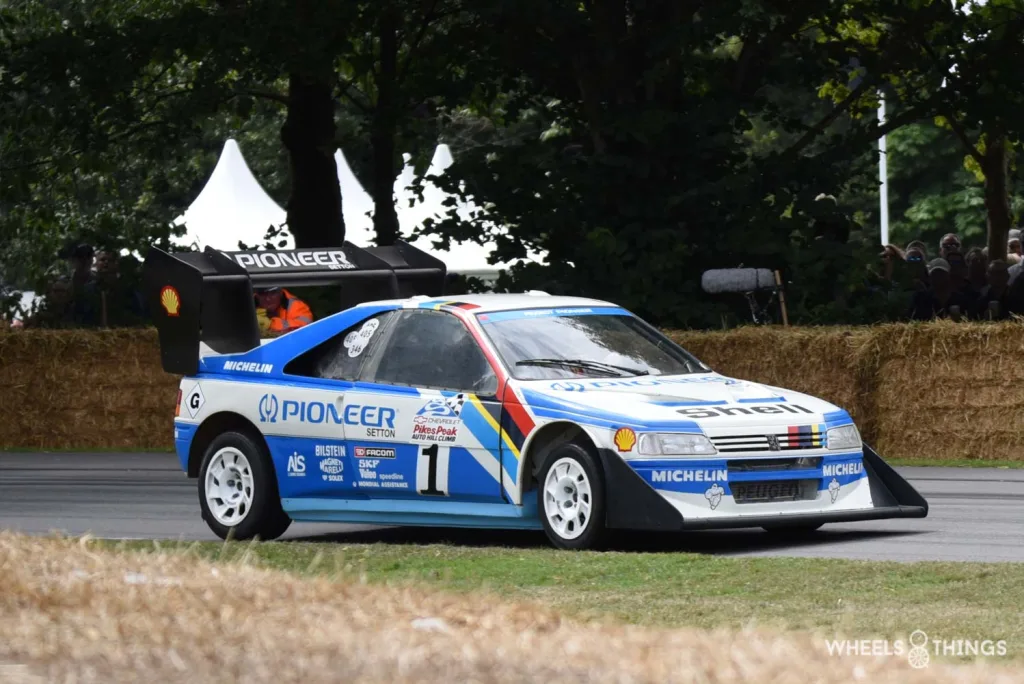
And the participants come from the most diverse disciplines. Proof of this is this Peugeot 405 T 16 that Ari Vatanen once drove the Pikes Peak hill climb with.
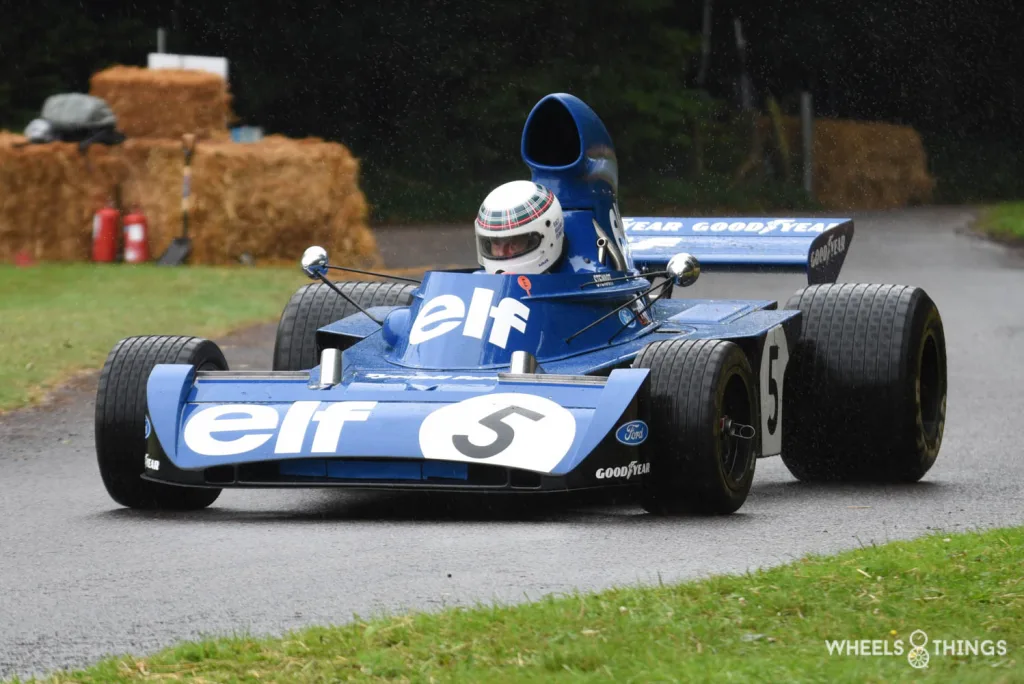
And of course, Formula 1 is also well represented here, including an ex Jackie Stewart Tyrrell 006 or a replica of the Ferrari 156 “Sharknose”.
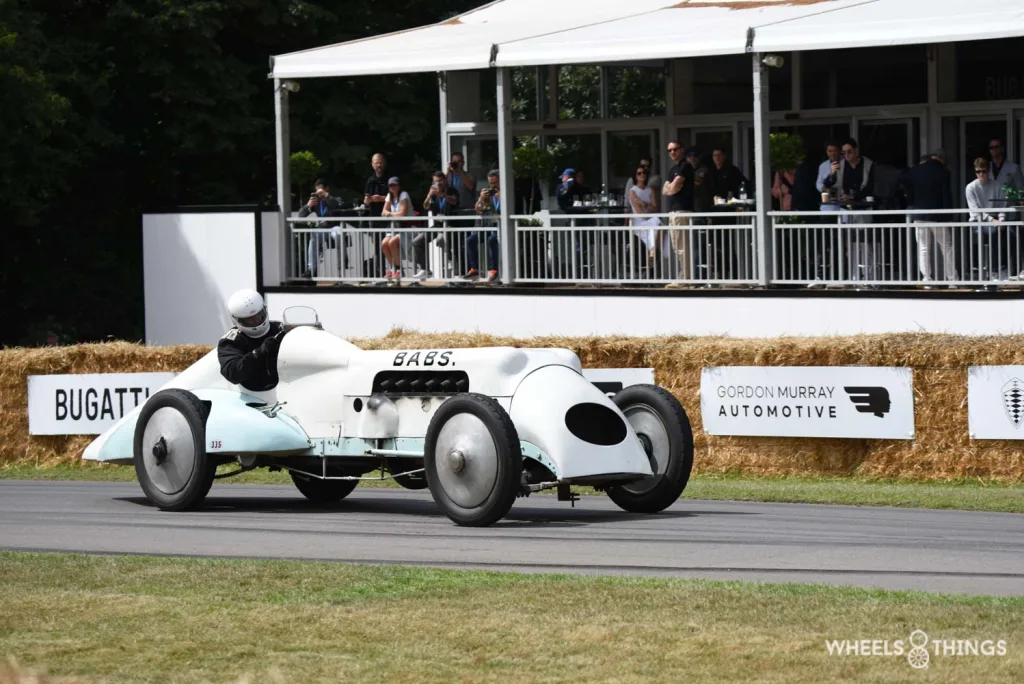
But we also saw land record cars pass by like the Fiat S76 mentioned earlier or this Thomas Special better known by its nickname “Babs”.
SEBASTIAN VETTEL
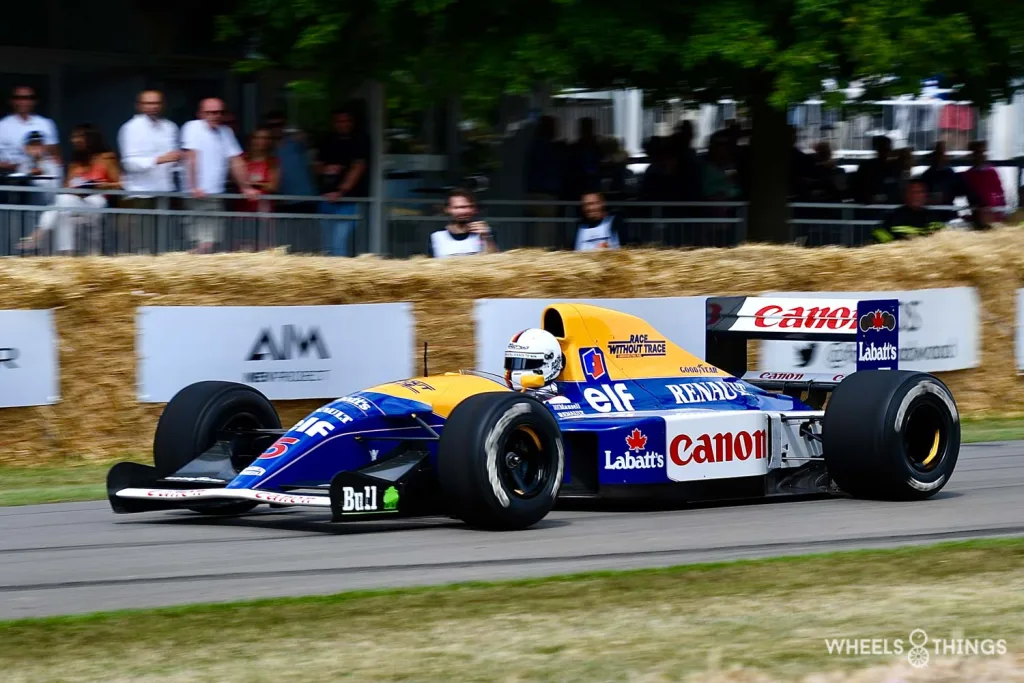
Guest of honour at this edition was the just-retired four-time Formula 1 world champion Sebastian Vettel. He had brought along two legendary Formula 1 cars from his private collection.
Showpiece was certainly the Williams FW14B Renault ( Red Five ) with which Nigel Mansell won the 1992 World Championship title and saw the chequered flag as winner nine times.
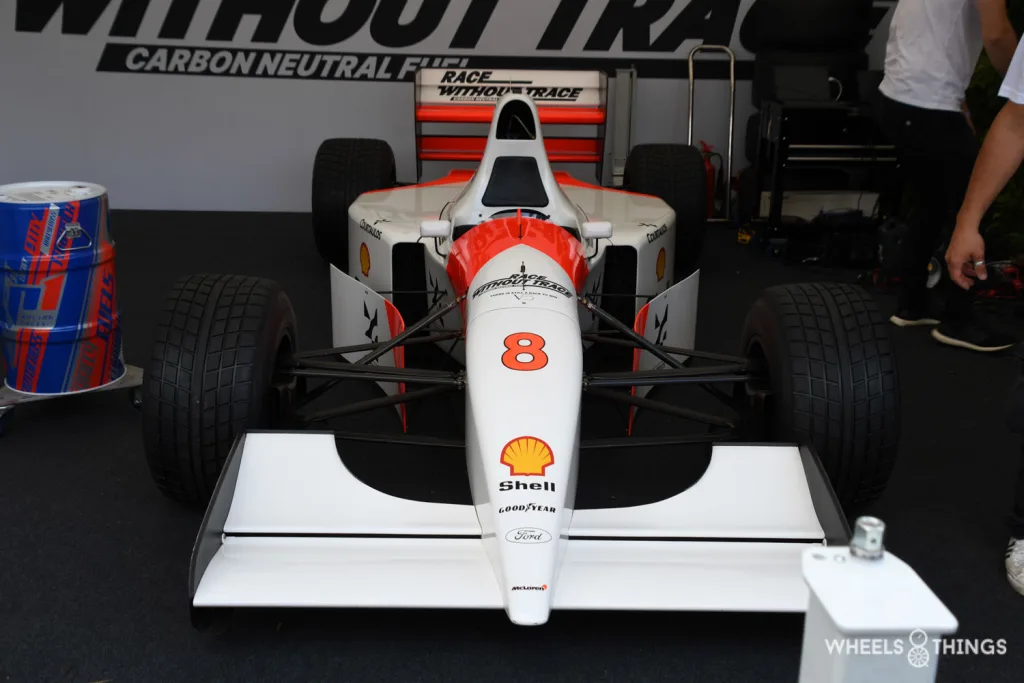
Vettel drove both cars for one run in the Formula 1 batch. Lucky he was there because this year only the F1 teams of Ferrari and Mercedes were present for the hill climb. Red Bull was there but only statically.
The second car in the Vettel collection was the 1993 Mclaren MP4/8 Cosworth. The great Ayrton Senna then provided the necessary defence against the supreme Williams team in which Alain Prost was making his comeback. The MP4/8 was not as fast as the Williams FW15 but Senna often made the difference and especially in difficult conditions like the European Grand Prix at Donington. There he drove both Williams drivers from pillar to post in very wet and variable conditions and this without traction control, something the Williams already had at the time.
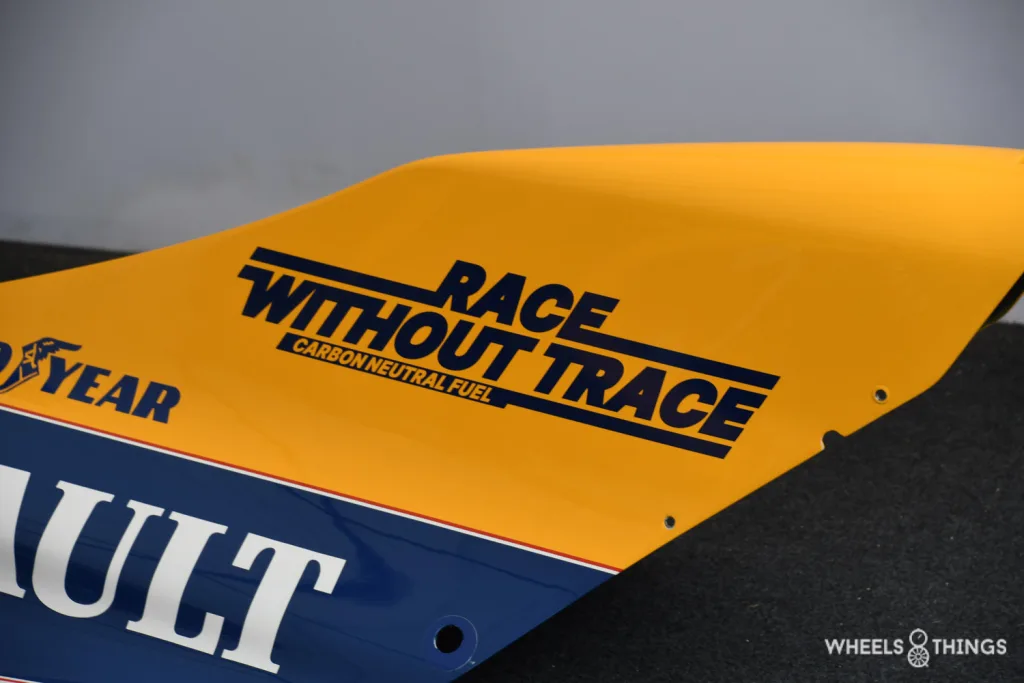
It is no secret that Sebastian has been increasingly concerned about our environment in recent years. Previously, he launched a “Save the bee” campaign and now he continues with the another “Race without trace” or racing without leaving a trace by using carbon neutral fuel or CNF. This sustainably produced fuel leaves no CO2 traces in the air. And as we could notice, the V8 and V10 engine ran with it without any problems.
ENVIRONMENTALLY FRIENDLY FUELS
But Sebastian was not the only environmentally conscious at Goodwood. Twenty per cent of the participating cars ran on an eco-friendly alternative. Most on electricity but seeing it produced by a diesel group, it is still not the ideal solution.
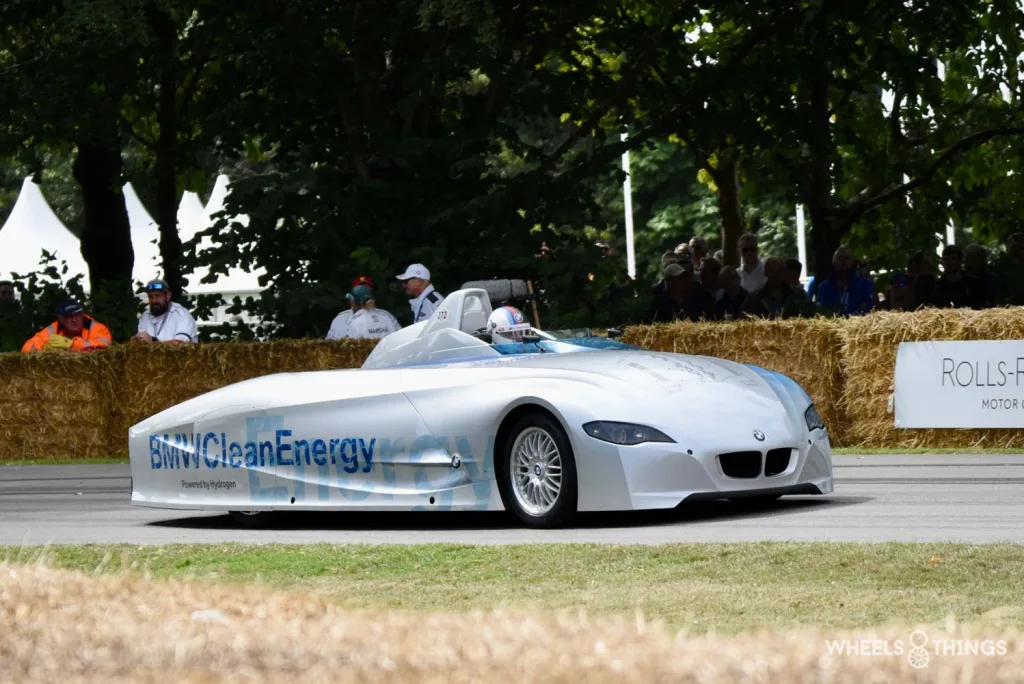
BMW had brought its prototype H2R, presented in 2004, for the occasion. This somewhat by now forgotten concept features a 6-litre V12 combustion engine operating on hydrogen. And the sound this V12 makes is certainly comparable to a “fat” 6-cylinder engine with sports characteristics on traditional petrol. Now it is not mum’s most beautiful car but the sound on hydrogen was definitely ok.
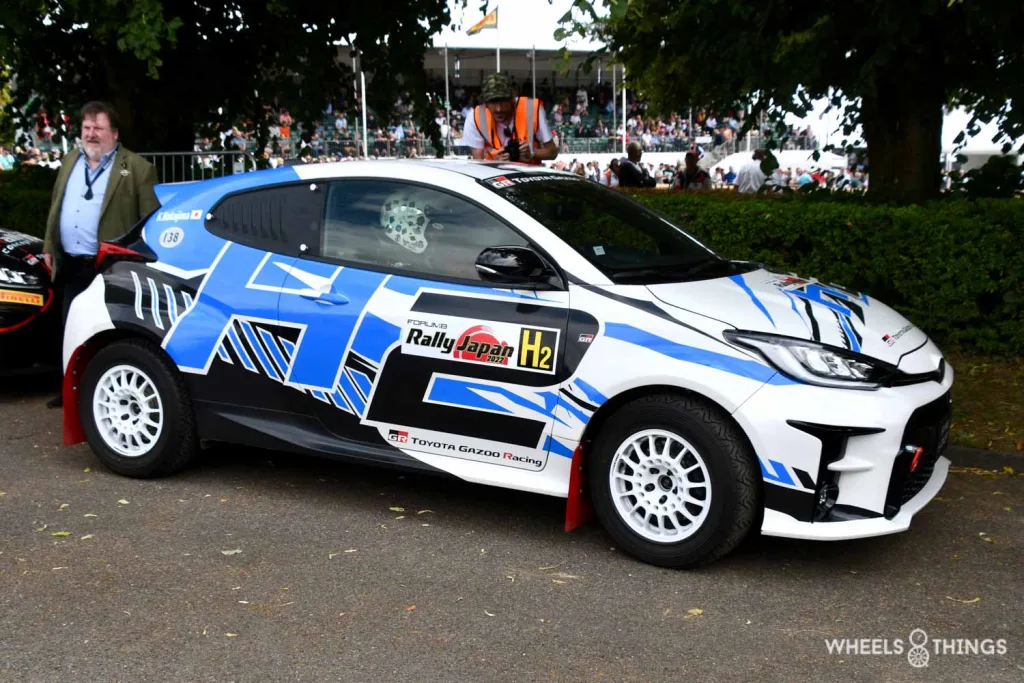
Toyota, like BMW, is also a hydrogen pioneer from the very beginning. Both brands have even signed a cooperation agreement for further development of hydrogen projects. Toyota Gazoo had brought along a Yaris rally car. Rowan Atkinson “Mr Bean” was one of the chosen few who got to drive it up the hill.
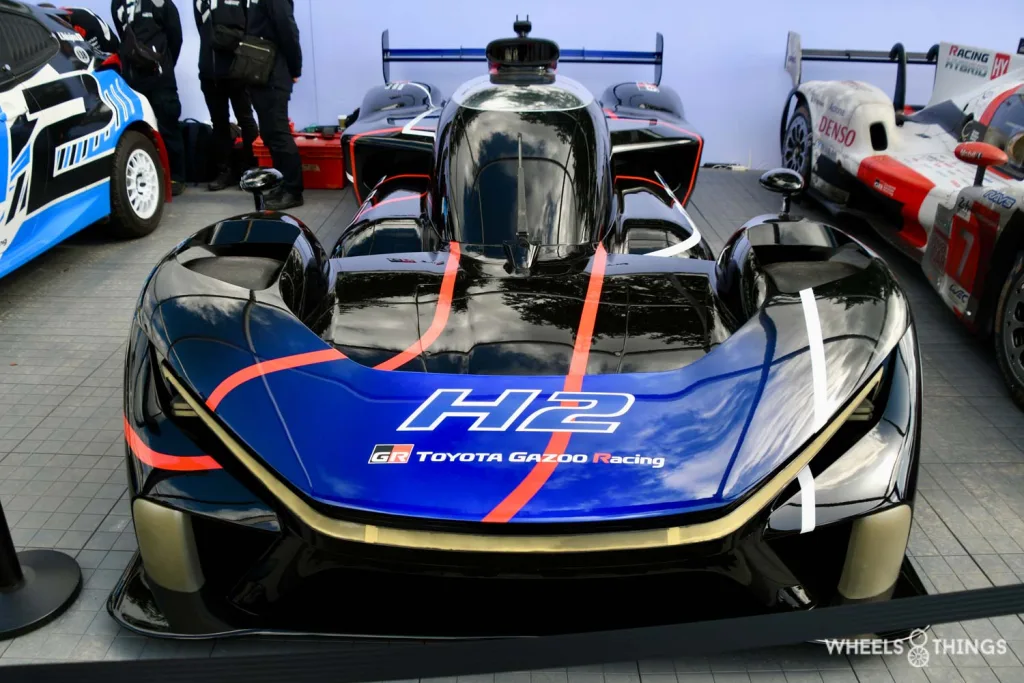
But it doesn’t stop there: Toyota also had its GR H2 Racing Concept with it. A Le Mans prototype that should debut in the endurance race from 2026.
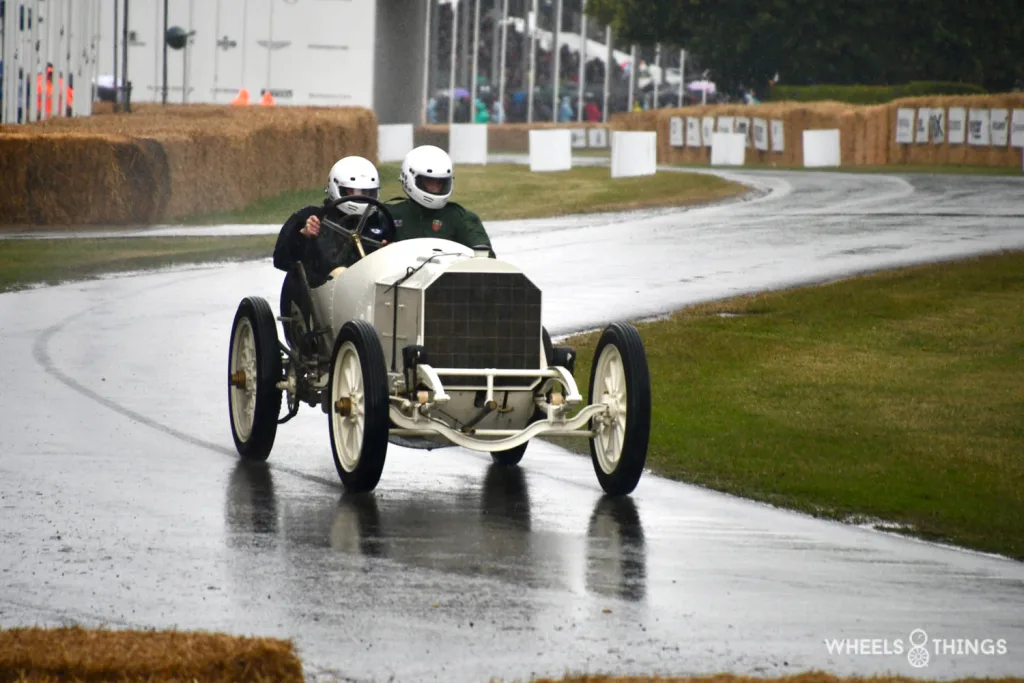
And old men also joined in to ensure a better environment. Both the oldest car at the meeting, the 1908 Mercedes Grand Prix, and the 1913 Fiat 76S drove around on synthetic fuel. How beautiful it can be when the past shows the way to the future!!!
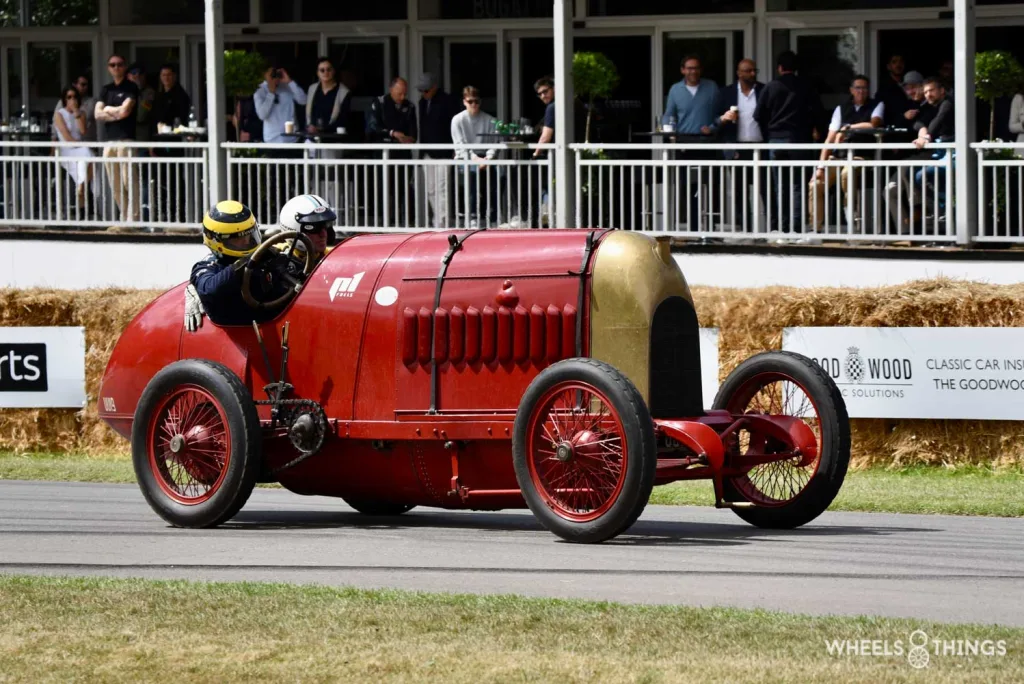
Moreover, Duncan Hamilton told us he needed one less fill-up to drive from his home town to Goodwood. And the flames from the exhaust were still there and even this time seemed slightly bigger than before.
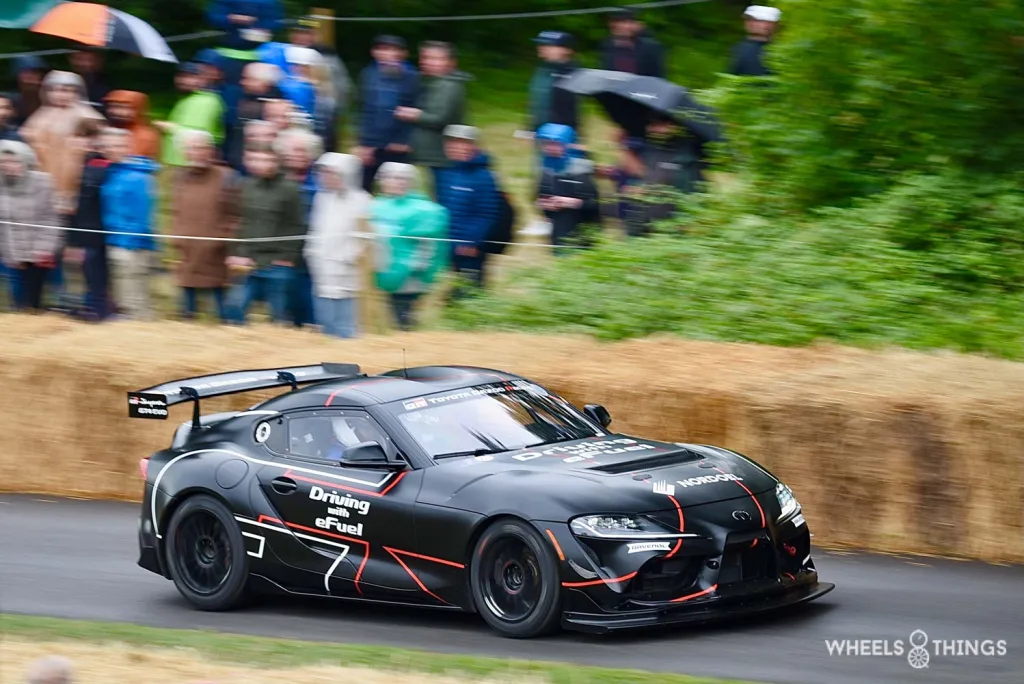
The constructors also did their bit. Toyota circulated its Supra GT4 evo ( a race car ) with e Fuel.
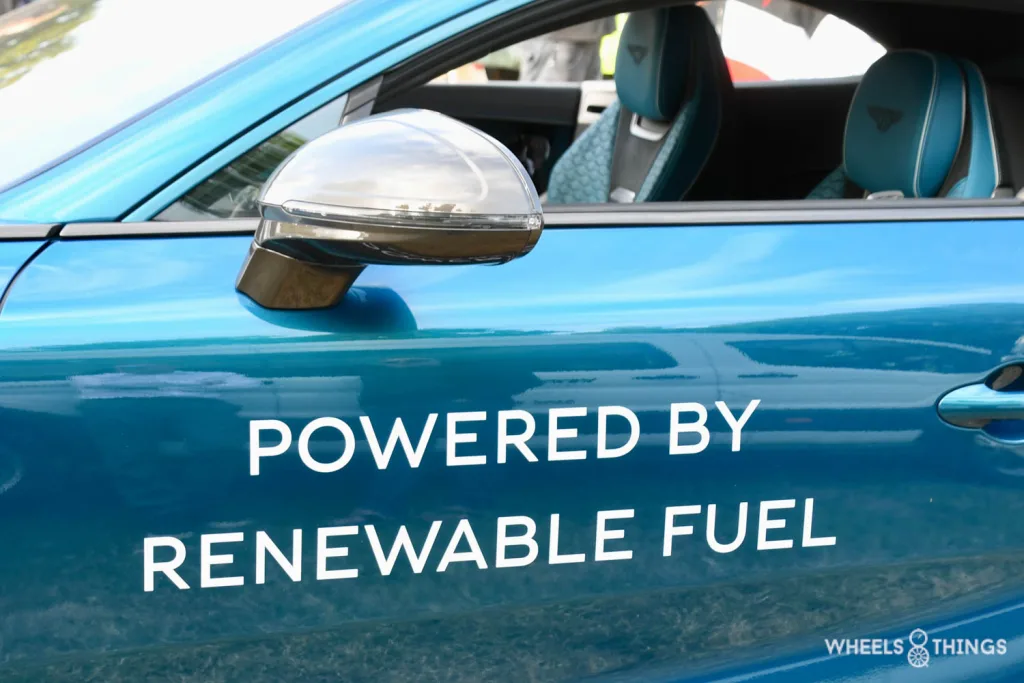
And all Bentley did so with renewable fuel.
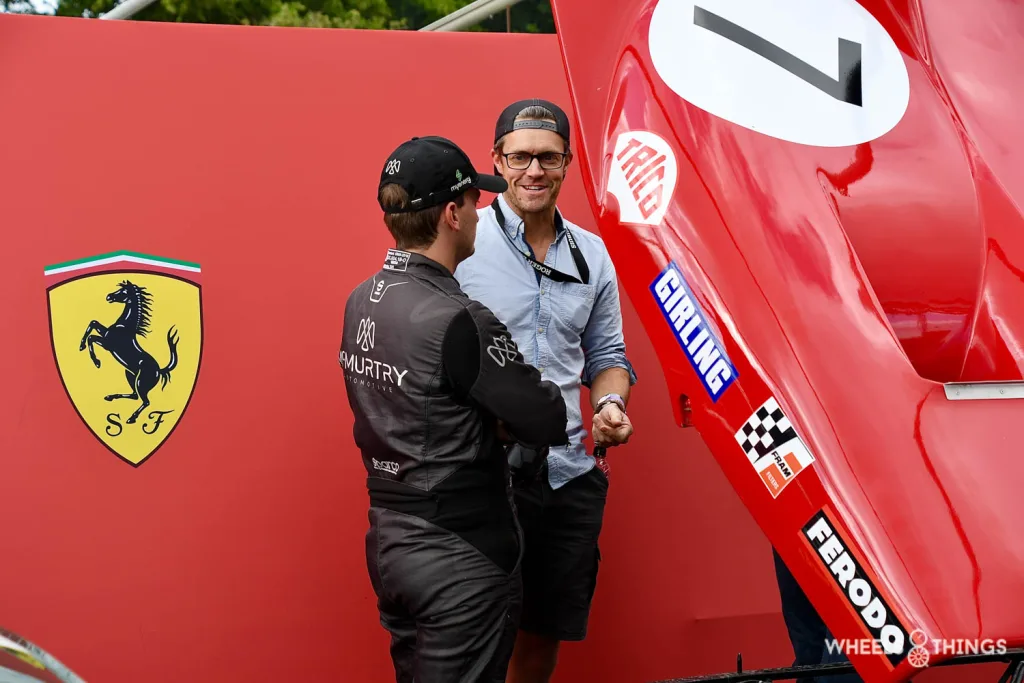
And they may be driving around with an electric one, yet one of the McMurtry’s pilots stood on Sunday morning admiring the V12 of the Ferrari 512S. He does not find such magnificence in his car.
75 YEARS LOTUS
The 75 birthdays were numerous this year. Besides Porsche and Goodwood itself, Lotus also got to blow out 75 candles.
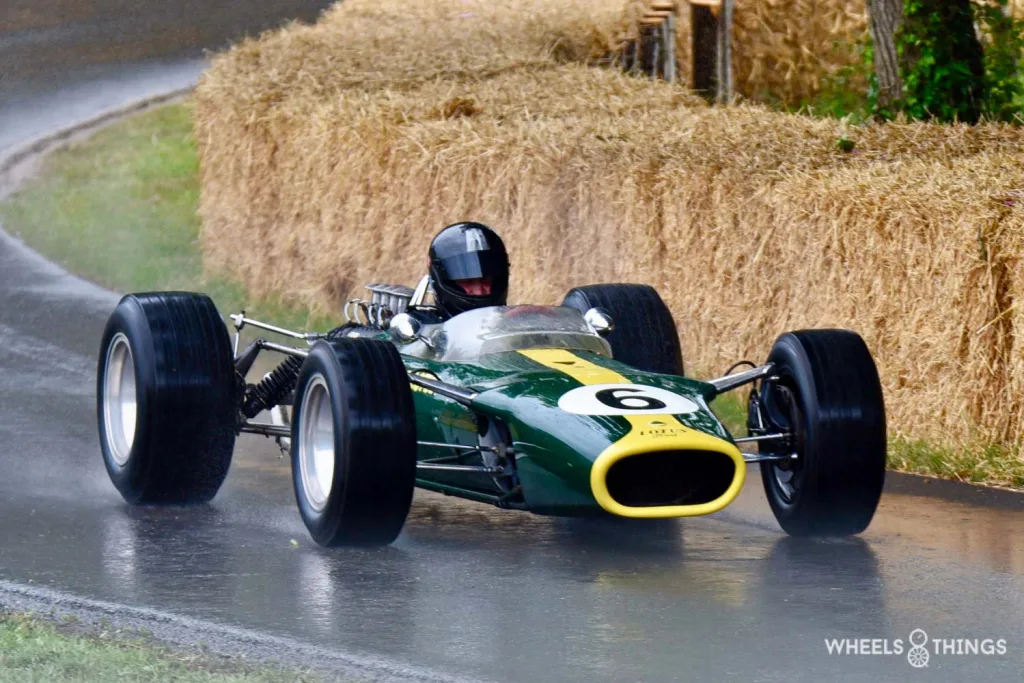
Indeed, it was in 1948 that Colin Chapman founded the marque and built the Lotus Mk 1. Chapman was a genius at building successful racing cars and sports cars. He built them according to the principle: “Less is more” which meant that less weight is an asset to generate speed.
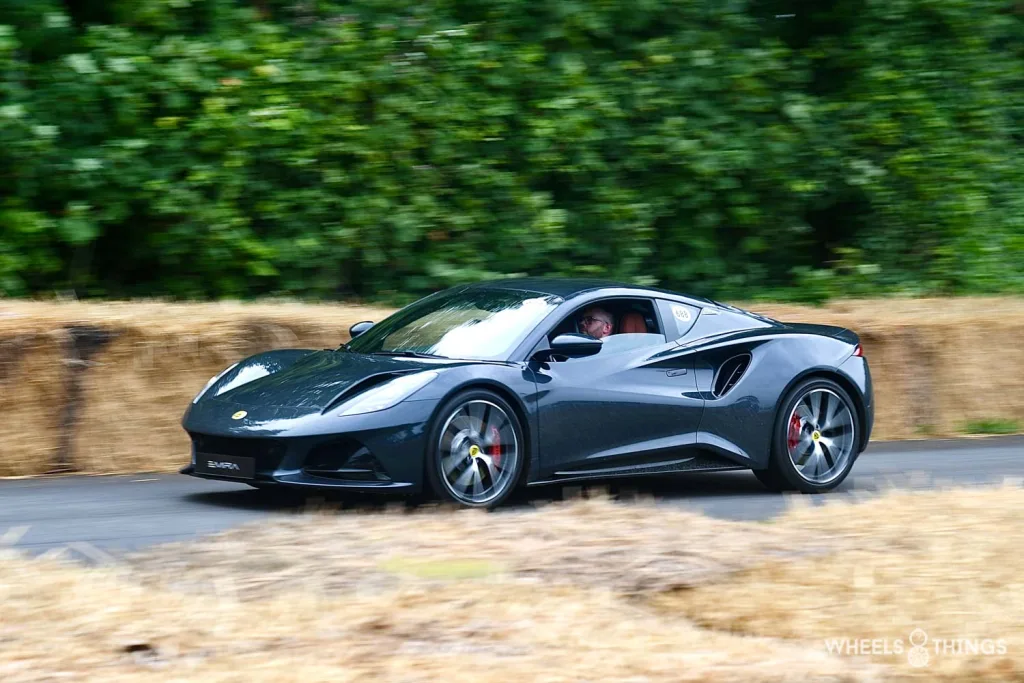
The Lotus Esprit is perhaps the best-known series car but the Elan, Europa, Eclat, Exige and the two-year-old Emira are also definitely among the classics.
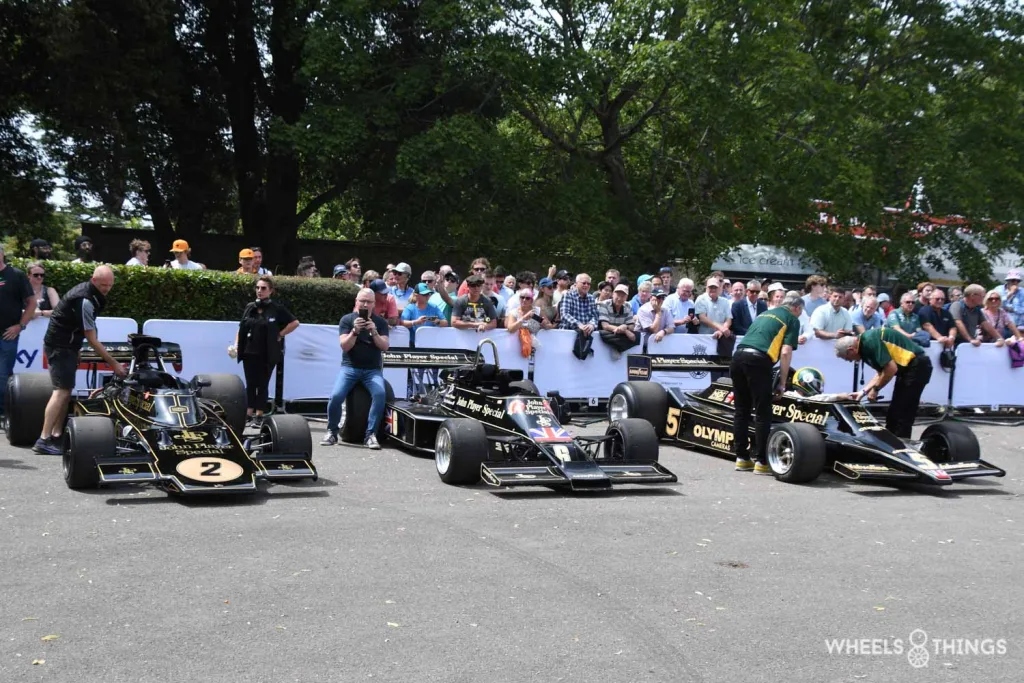
But whoever says Lotus automatically enters Formula 1. With world champions such as Jim Clark, Jochen Rindt, Graham Hill, Emerson Fittipaldi and Mario Andretti, we are already in elite company. On top of that, other great drivers like Ronnie Peterson, Gunnar Nilsson, Jacky Ickx, Ayrton Senna, Nelson Piquet, Sterling Moss also drove for Lotus.
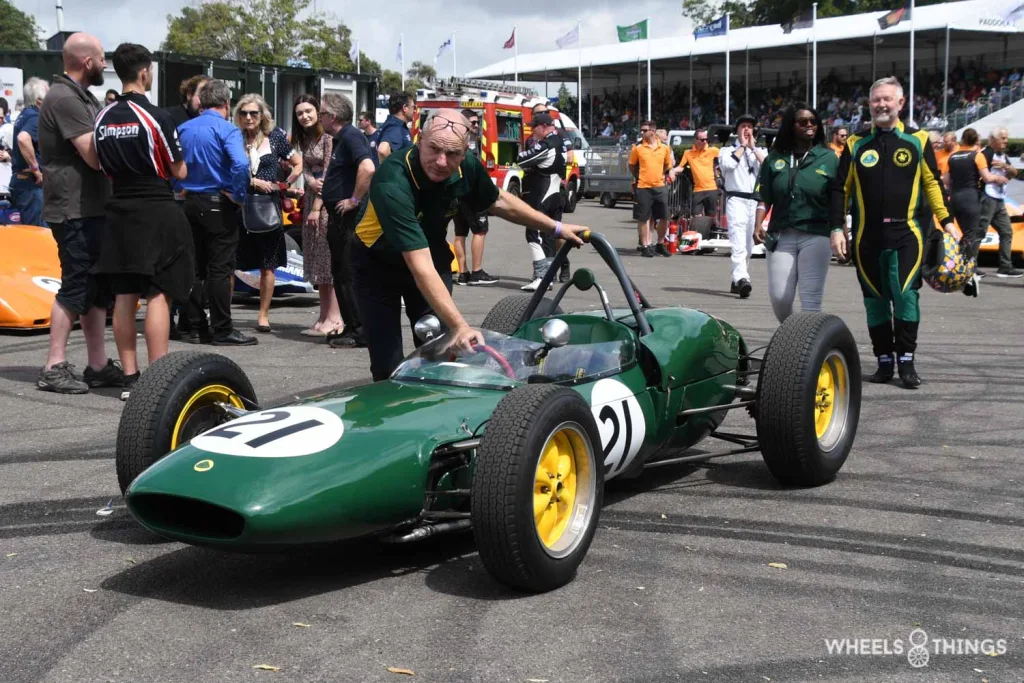
Besides the drivers, meanwhile, the cars have also become legendary. Jim Clark’s Lotus 49 was among them. This 49 provided the Cosworth V8 engine’s first-ever victory in the Dutch Grand Prix at Zandvoort. Jim Clark also became world champion with it after having done so with the Lotus 25 a few years earlier.
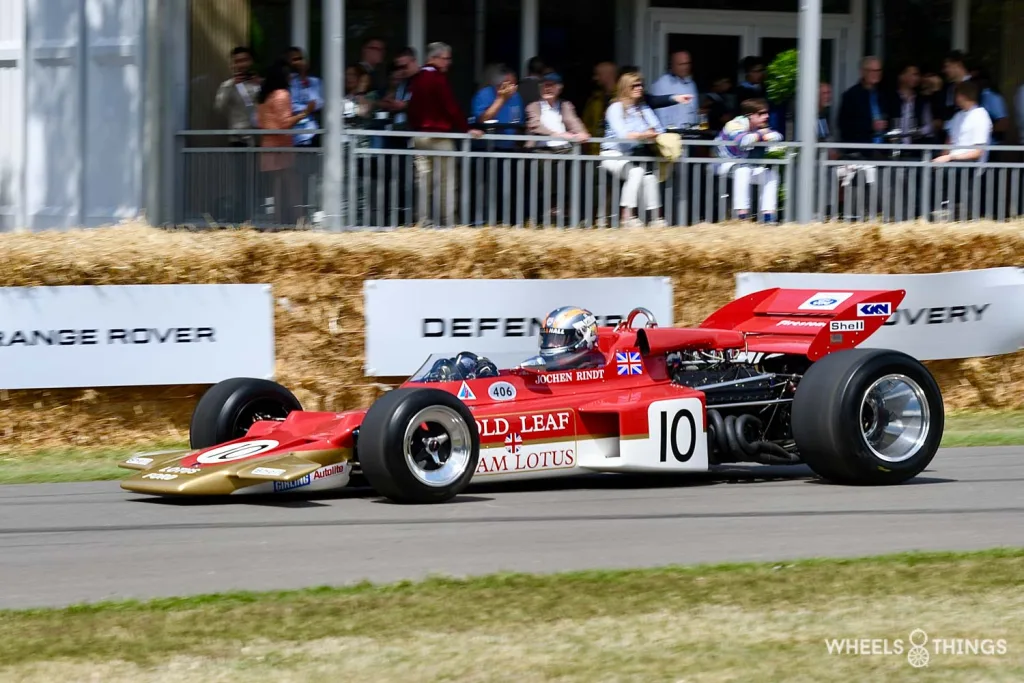
One of the most legendary Lotus models is undoubtedly the 72 F1 car. For six years, the career of perhaps one of the most beautiful Formula 1 cars ever lasted. The 72 debuted in the Spanish Grand Prix and 1970 and Jochen Rindt, in that year, posthumously became world champion with it. It was also one of the first cars to feature sponsorship. Cigarette manufacturer Gold Leaf ( a brand of Imperial Tobaco ) provided an extra budget.
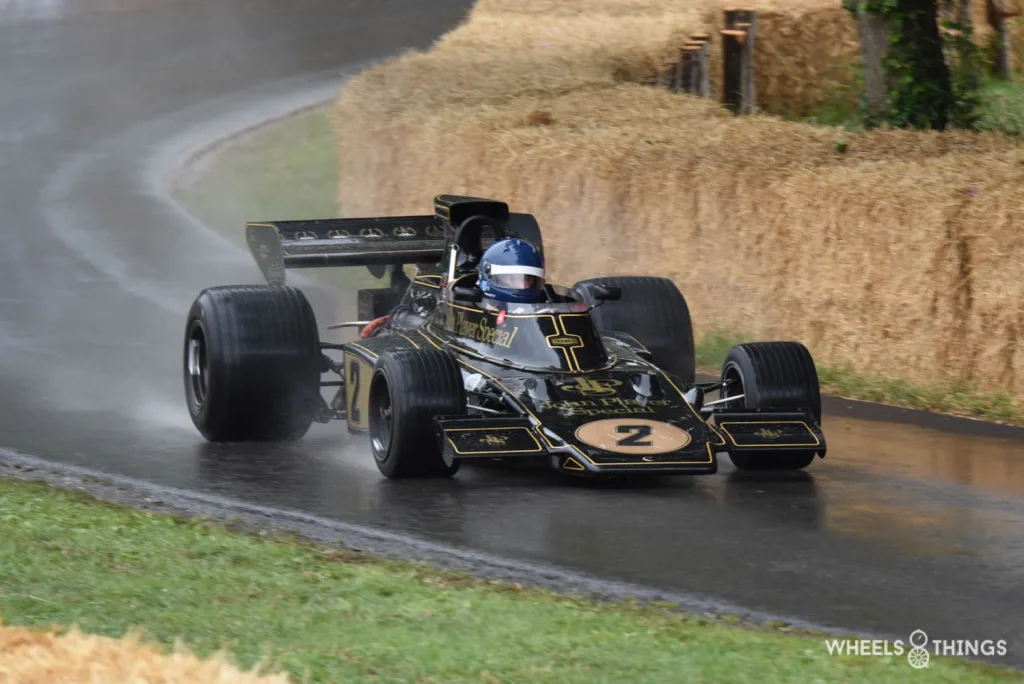
Imperial Tobaco also launched a new cigarette brand in 1971 with John Player Special, through Lotus. The Lotus 72 will now become a true icon. The black paint with the gold logos of JPS will become unforgettable in motorsport.
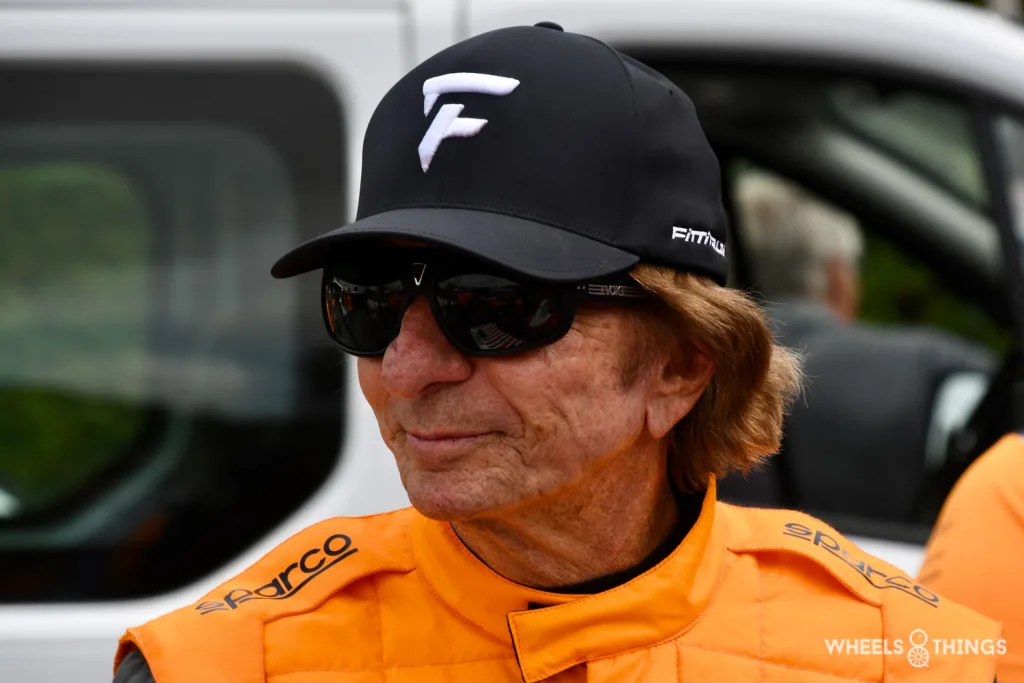
Emerson Fittipaldi becomes the youngest ever Formula 1 world champion in 1972 at the wheel of a JPS Lotus 72. This 72 will remain highly successful in 1973 as well. Emerson Fittipaldi cannot extend his title due to a bad accident in the Dutch GP. He is not really fit in the following races and sees Jackie Stewart win his third and final title.
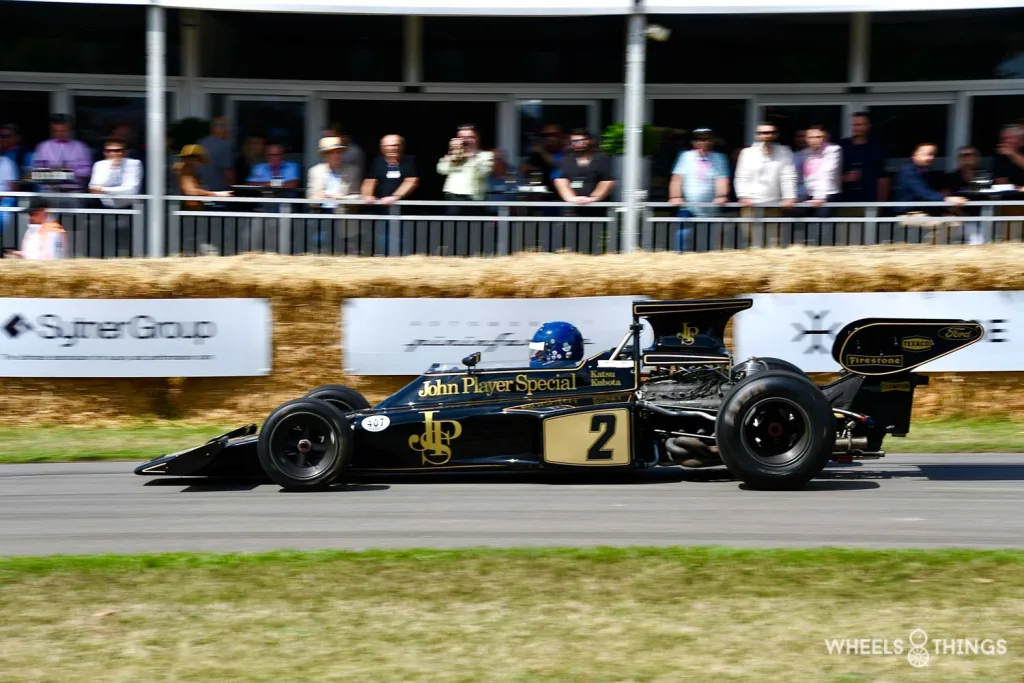
For 1974, Chapman proposes the new Lotus 76 with even a double rear wing. However, this is not a success and the old 72 is taken out again. Ronnie Peterson actually wins the GPs of Monaco, France and Italy with it. Our countryman Jacky Ickx, replacing Fittipaldi who left for Mclaren, wins the outdoor championship race “Race of Champions” at Brands Hatch. This Ickx also provides the last podium for the 72 at the Monaco GP one year later.
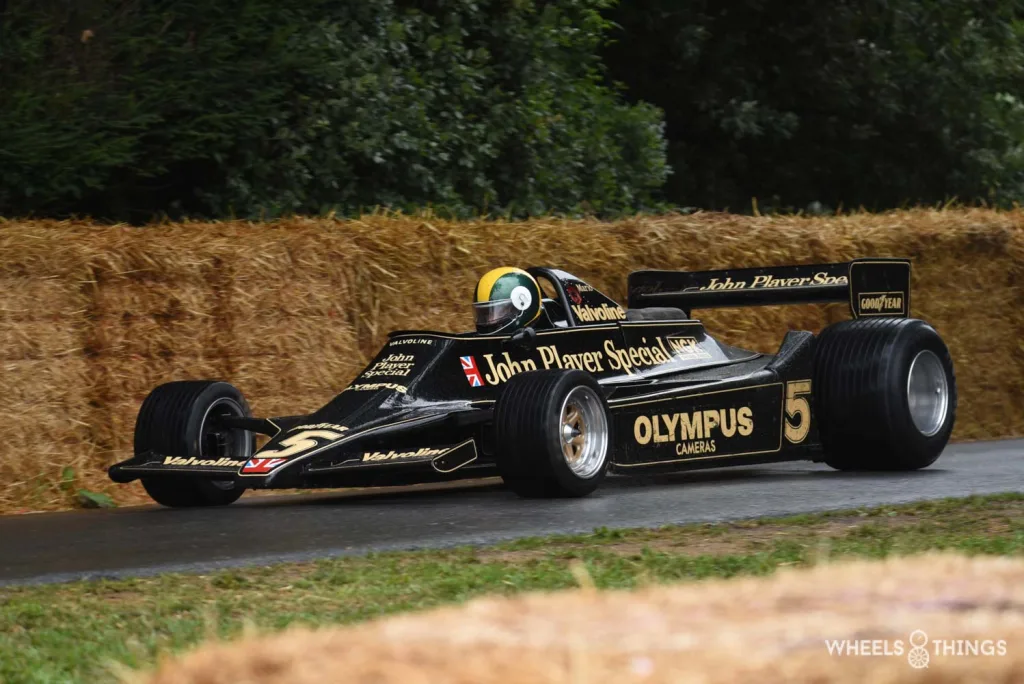
With the Lotus 79 comes a new evolution in F1 in 1978. Chapman had fitted his design with side slats that sucked the car down, so to speak. The 79 with Mario Andretti and Ronnie Peterson was the new benchmark in the F1 world. First pilot Andretti gets to be world champion and Peterson, as it was contractually stipulated, stays behind Mario. Lotus pulverises the competition and Andretti and Peterson finish most races as one and two. Peterson mostly just behind Andretti. The races in which Andretti dropped out were then usually won by Peterson. The Italian GP at Monza did turn into a drama for Lotus. Ronnie Peterson was killed in a severe starting crash. With him disappeared one of the most likeable and especially fastest drivers of his era. His nickname wasn’t “Super Swede” for nothing.
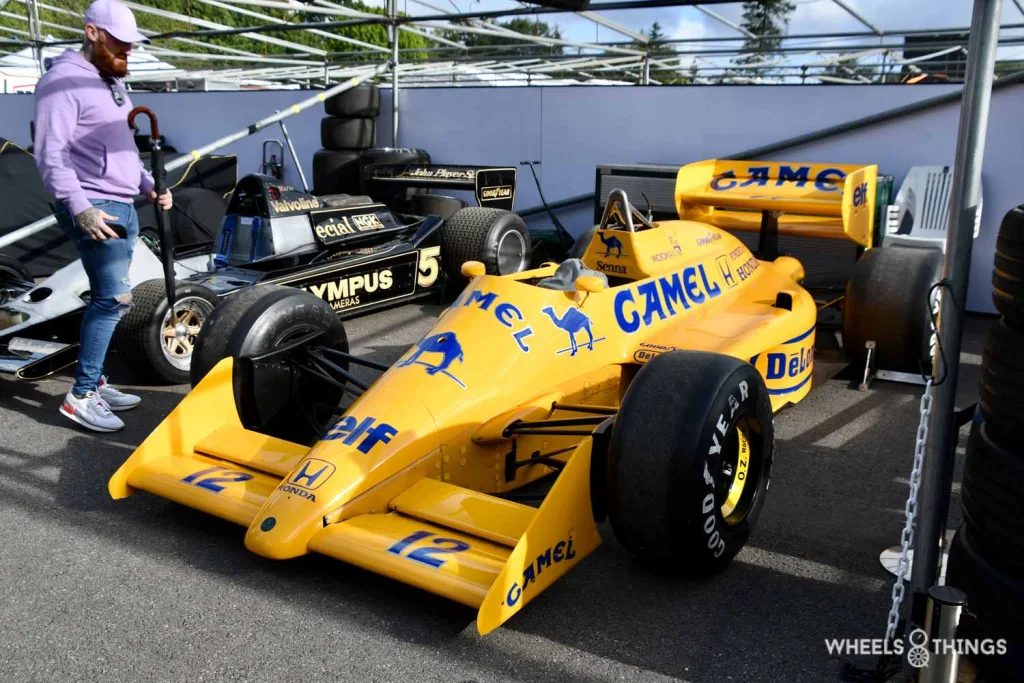
The great Ayrton Senna also experienced great moments in the Lotus team. His 99T Honda in Camel trim was static in the paddock. Like the Williams then, the Lotus was equipped with the Honda V6 turbo but was the first F1 car to have an active suspension. The Lotus was slightly slower than the Williams but its suspension made Senna unbeatable on street circuits. He won both city races in Monaco and Detroit. Ayrton also became the best non-Williams driver with third place in the final standings.
60 YEARS OF MCLAREN
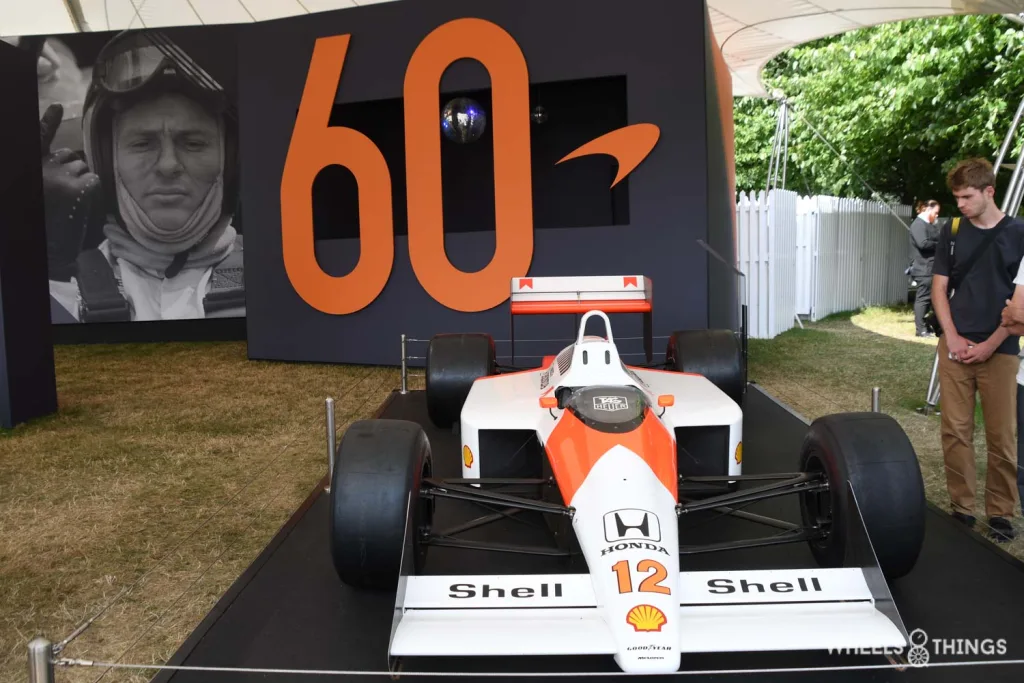
Fifteen years after Chapman founded Lotus, a New Zealand kiwi did the same. One Bruce Mclaren, who defected to England, founded a racing team with his own name. Even more than Lotus, Mclaren will become one of the top teams in F1.
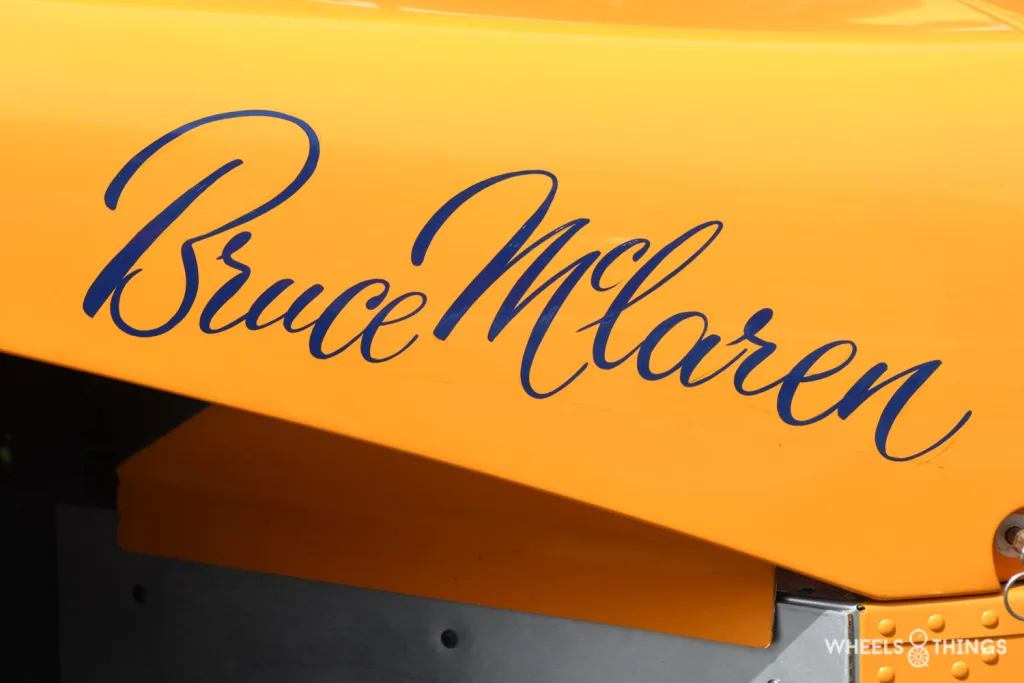
Bruce possesses multiple abilities. Besides being a designer and technician, he is also a fine pilot. At first, he drives Cooper cars but after eight years he designs and builds his own cars.
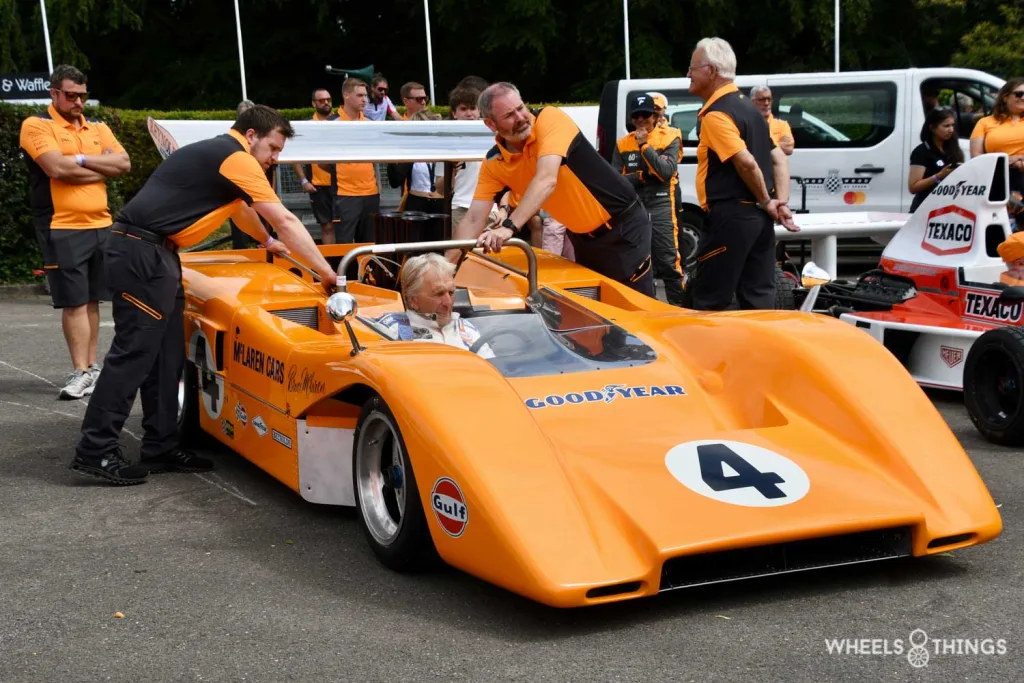
And it is not just Formula 1 that is on its programme. Mclaren also builds Formula 2 cars, Formula 5000, Group 7 protos, Indycars and Canam cars. You can read all about the latter in our article on the Canam.
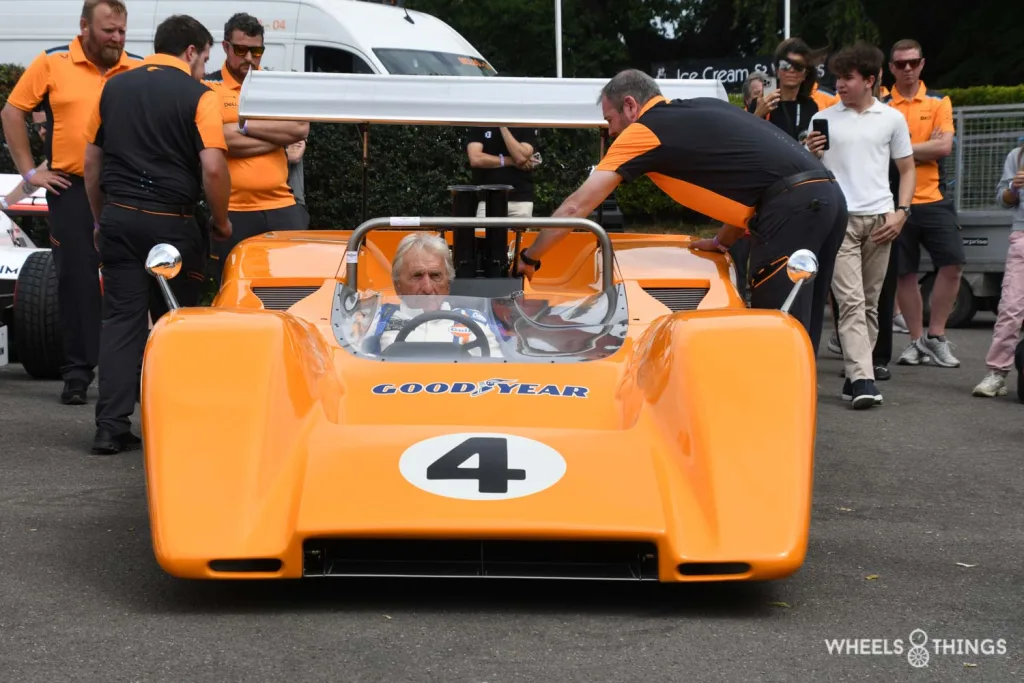
In it, you can also read that Bruce Mclaren crashed on the Goodwood circuit at the age of 32 while testing one of those Canam cars.
Mclaren had really pulled out all the stops to make it a big party. More than 30 unique pieces that came both from Mclaren itself or from private collections.
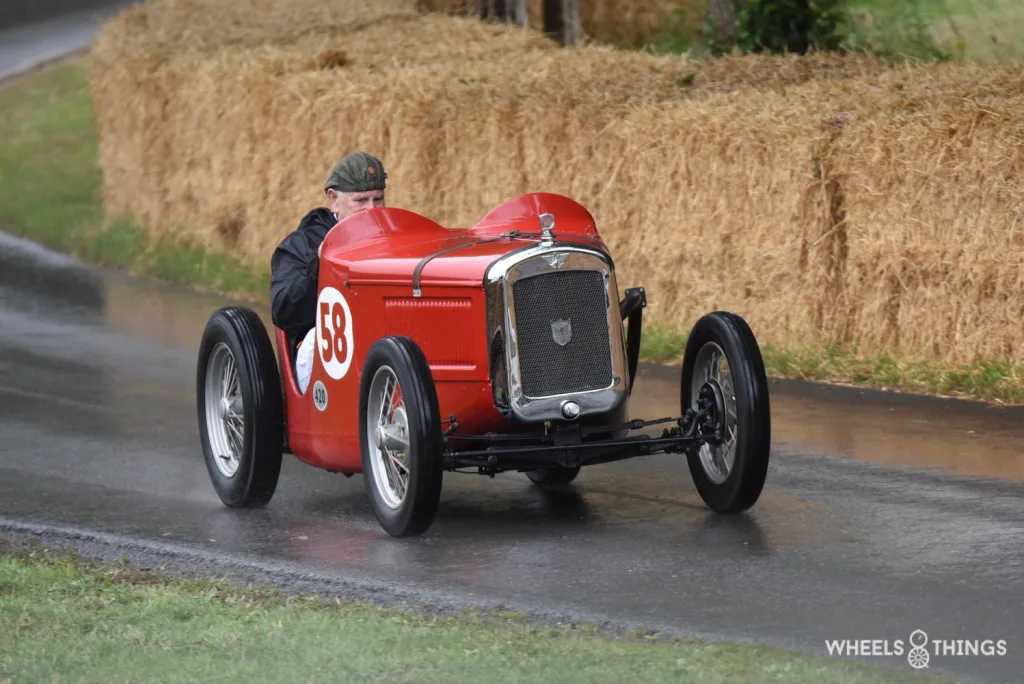
They even carried the car that once started it all: an Austin Ulster 7 driven by Bruce’s father, which son dearest had helped build. At the age of 15, Bruce won his first race at the wheel of this Austin. Former Mclaren designer and director Neil Oatley had the honour of driving this Austin up the Goodwood hill.
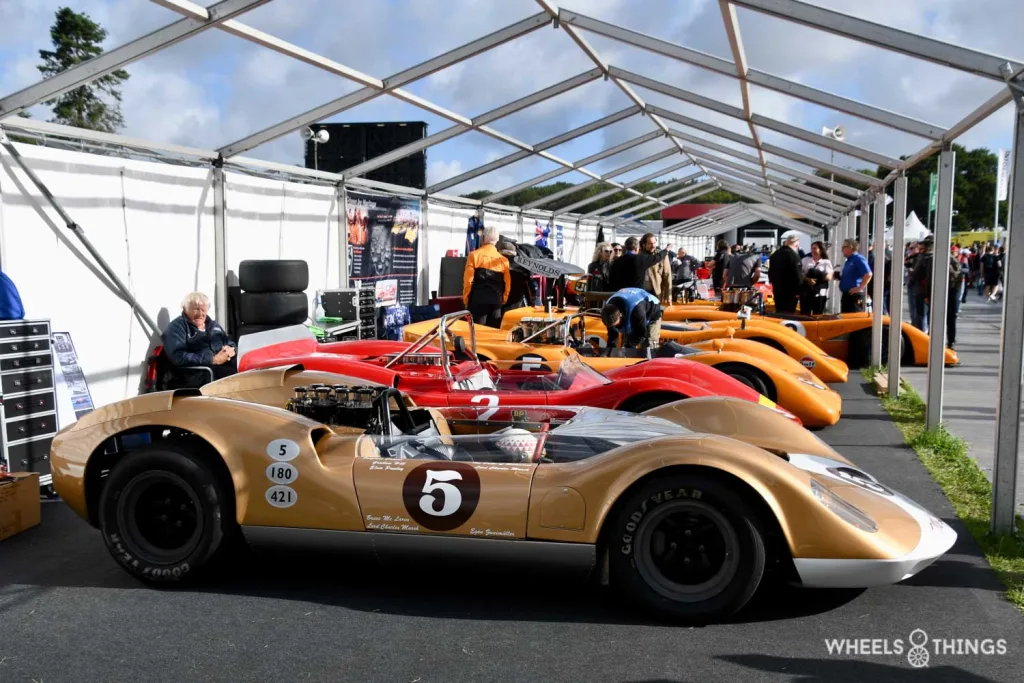
Also among the attendees was the very first car built by Bruce Mclaren, a 1964 M1A Oldsmobile. On his debut at Canada’s Mosport, Bruce broke the lap record seven times. Bruce did not need more publicity as the orders came in naturally. This M1A was later even sold to one Elvis Presley. “The King” aspired to a racing career as well as a singing career but at his record company they really didn’t fancy it. So the car figured in some of his films.
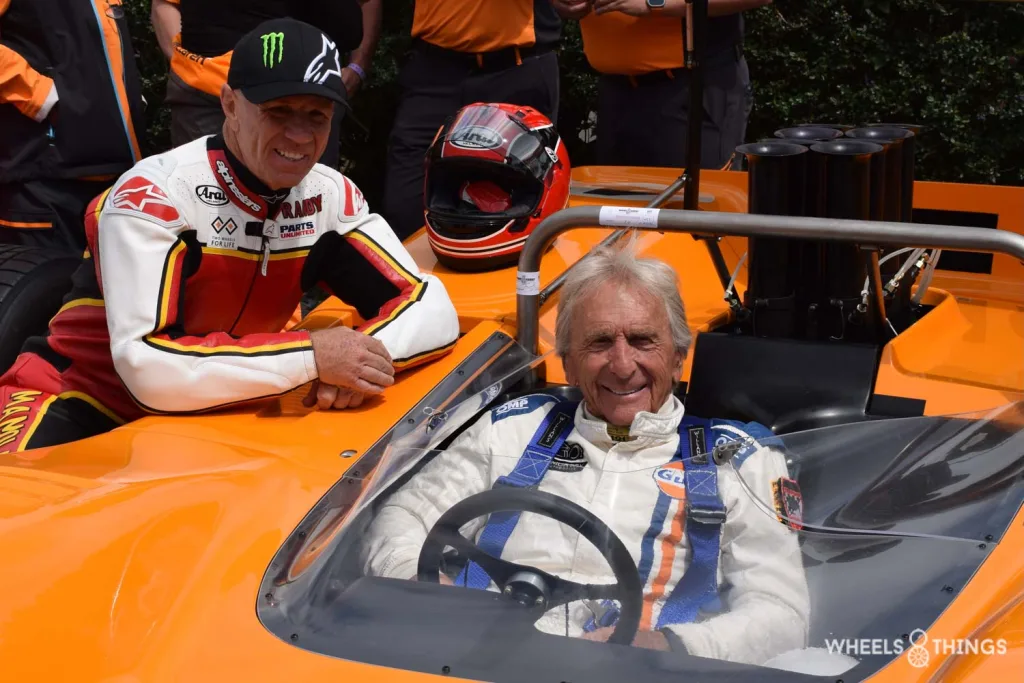
Derek Bell was also honoured to take the wheel of a Canam Mclaren M8B. The ex Bruce Mclaren car was the dominator in the 1969 Canam championship. Bell said he had also once driven some races with this type of car.
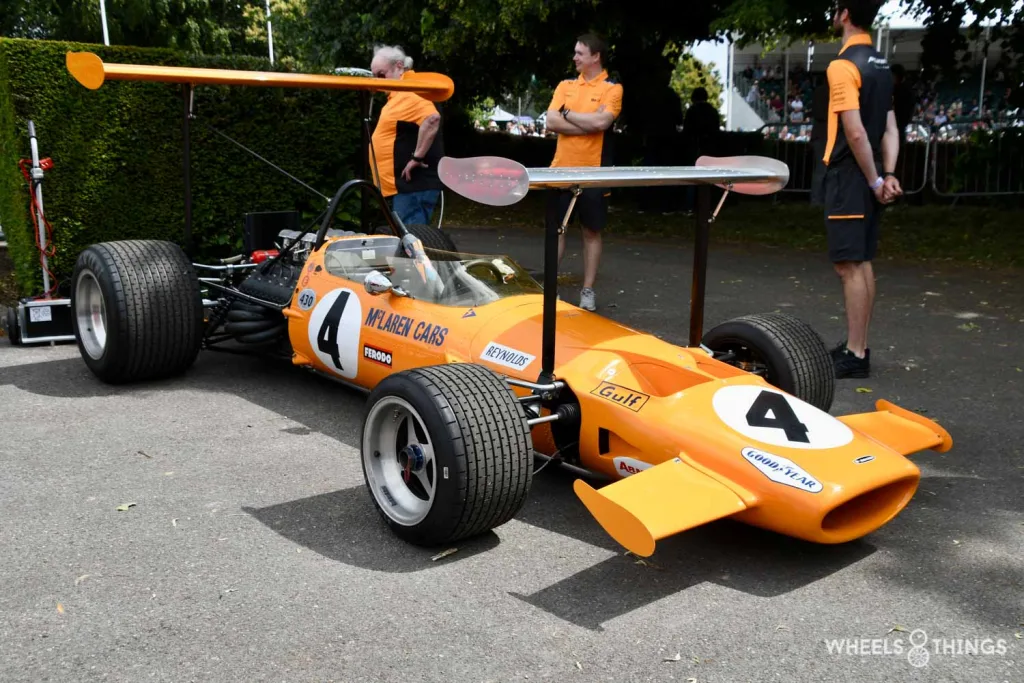
Another unique case was the Formula 1 M7C Cosworth of the same year. A car from the brief period when both front and rear wings were allowed. Wonderful to see passing by.
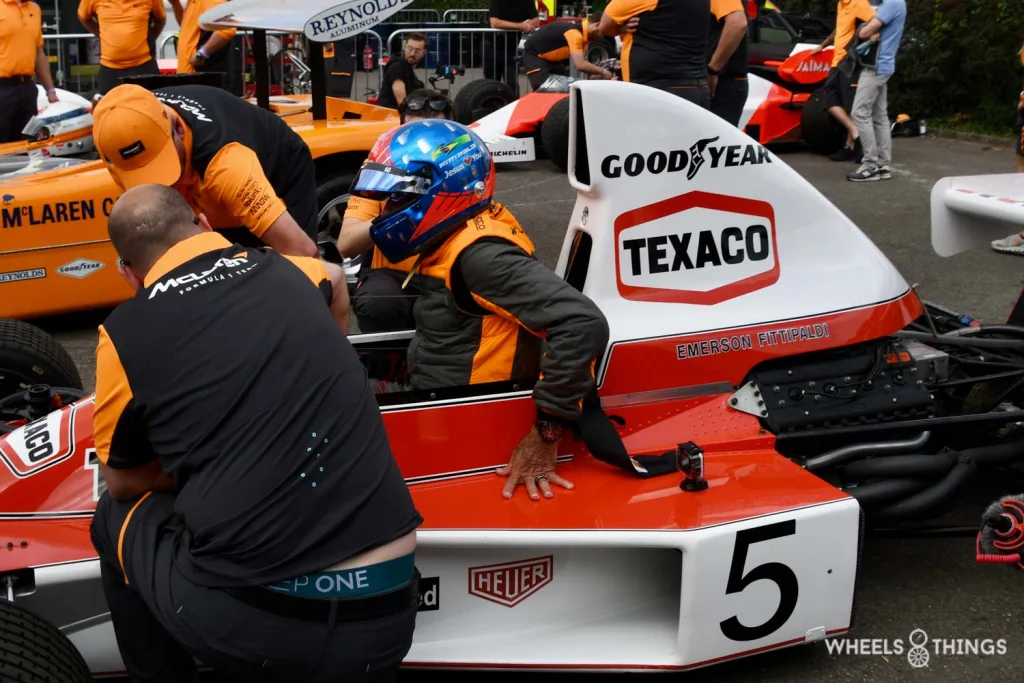
After the death of Bruce Mclaren, there is first Teddy Mayer and then Ron Dennis who will be responsible for the team’s great successes. Mayer takes over from Bruce Mclaren and secures the first Formula 1 world title with the Marlboro M23 with Emerson Fittipaldi at the wheel. Two years later, this M23, now with James Hunt, wins its second world title.
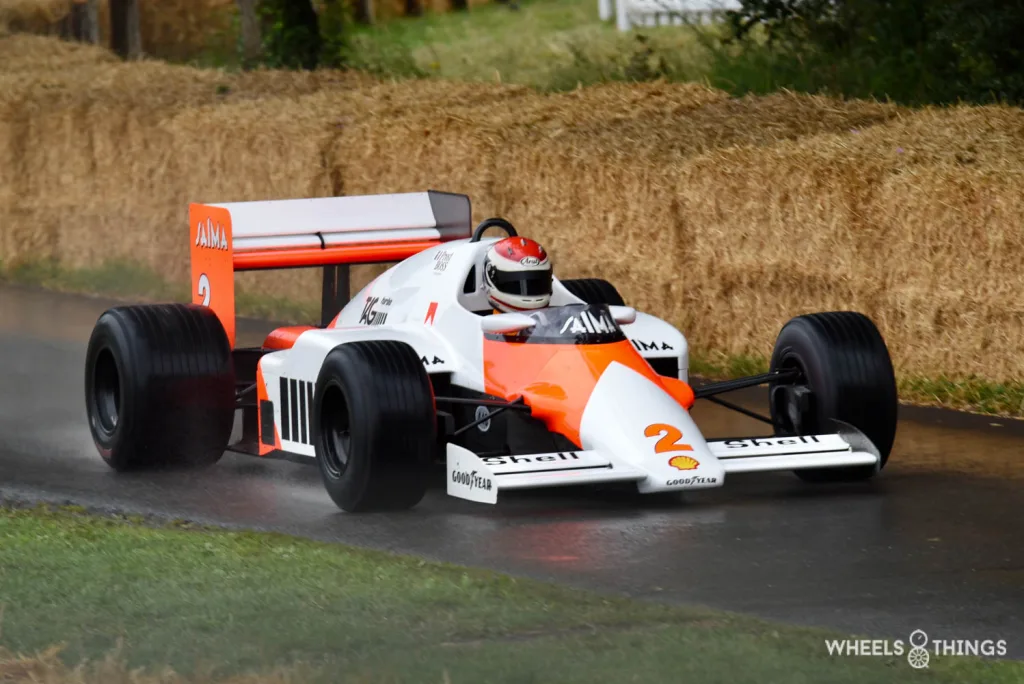
In the first half of the 1980s, a new successful period begins with turbocharged engines coming from TAG-Porsche. Niki Lauda and Alain Prost win three world championships. The MP4/2 Tag was driven by former Mclaren test driver Emanuele Pirro. So the name of the engine was indeed Tag and not Porsche. Tag had the engine developed and built at Porsche and simply paid the invoice for the cost.
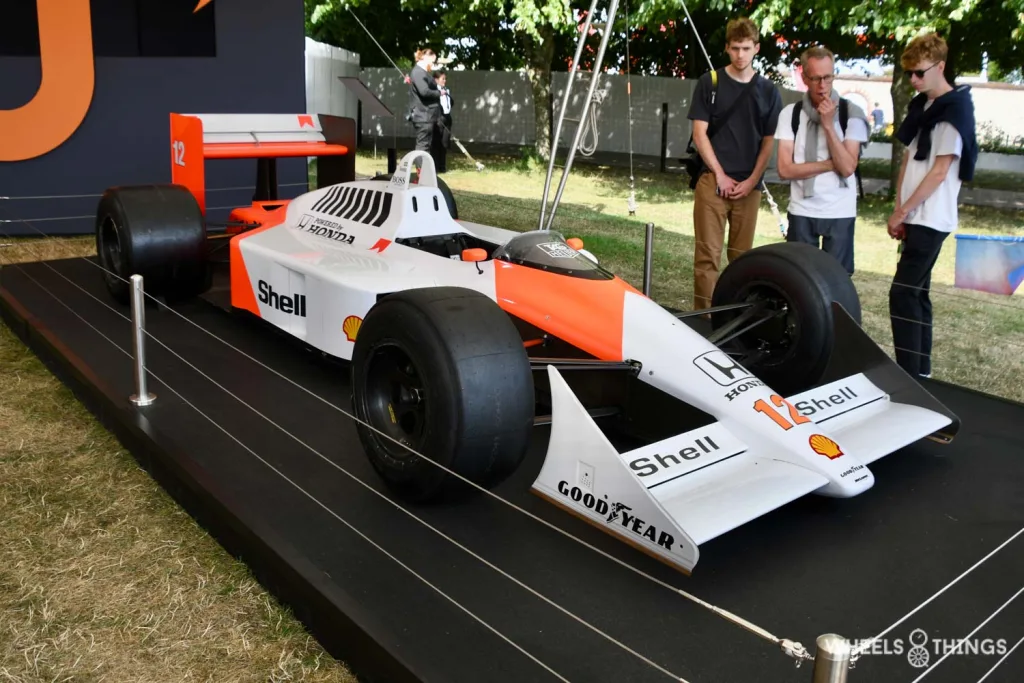
After the TAG era, a new era begins with Honda as engine supplier. Alain Prost is still with the team but he now faces stiff competition from one Ayrton Senna. In 1988, Prost can still boss the young Senna but after that, the Brazilian wins three championships in a row. One of them in the MP4/4. A design by the great Gordon Murray and the Senna/Honda/Murray combination produced the same effect as Red Bull and Verstappen, still with Honda, in 2023.
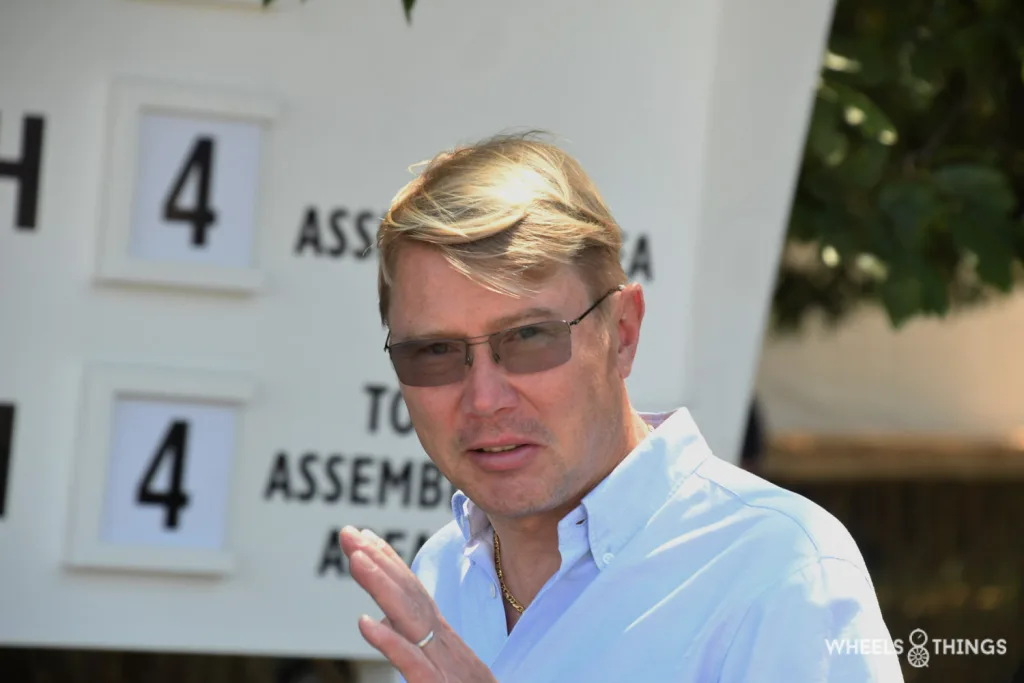
Mercedes came forward as the new engine supplier from 1994 and after a few trial years, Mika Hakkinen could win the championship twice in 1998 and 1999. Mika himself was also behind the wheel of his West Mclaren Mercedes MP4/14. Nine years later, Lewis Hamilton, with the MP4-23 Mercedes could do the same and take his first world title.
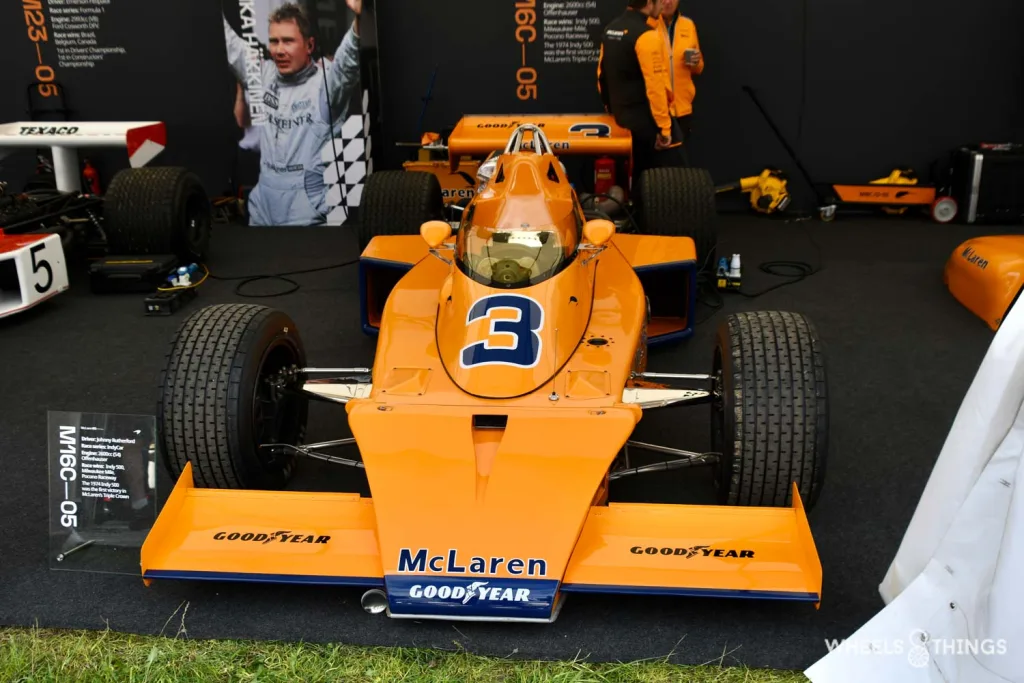
But Mclaren is not just Formula 1. They also won the Indy 500 three times in 1972/1974 and 1976. The 1976 M16 Offenhauser also paid tribute to these successes. The M16 was driven by its original pilot of the time: Johnny Rutherford. We previously met Johnny at the FOS with his Chapparal 2K during the 2018 edition. You can read this article again here.
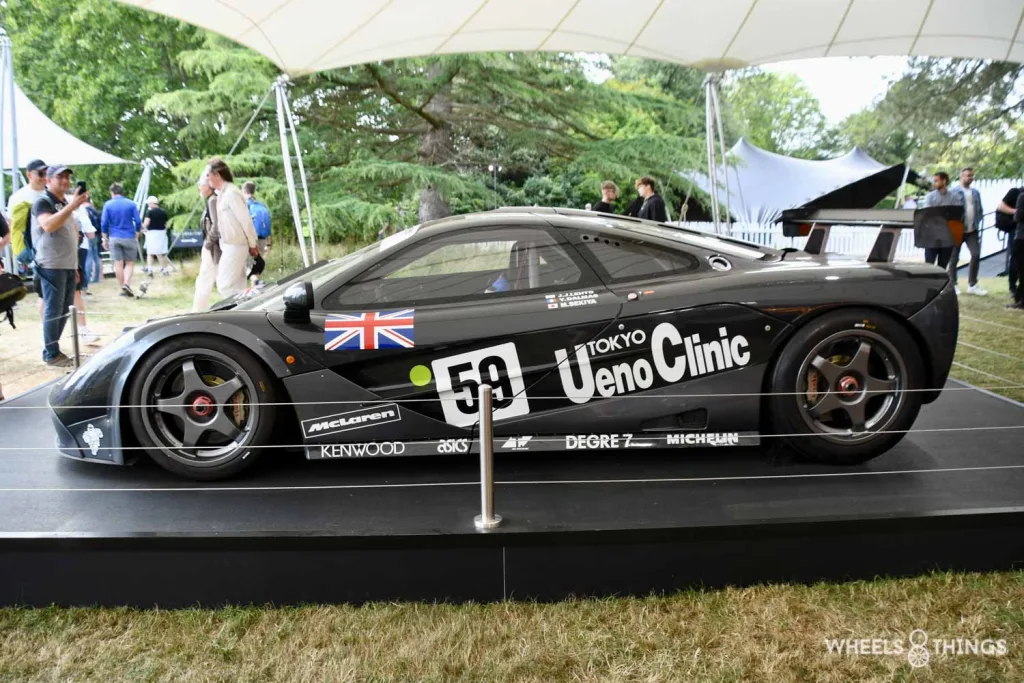
And Mclaren is the only constructor to also have the 24 hours of Le Mans to its name. In 1995, they won the French 24-hour race on debut with their F1 GTR BMW. You can read this story in our report on Richard Mille’s Mclaren Expo at Rétromobile 2018.
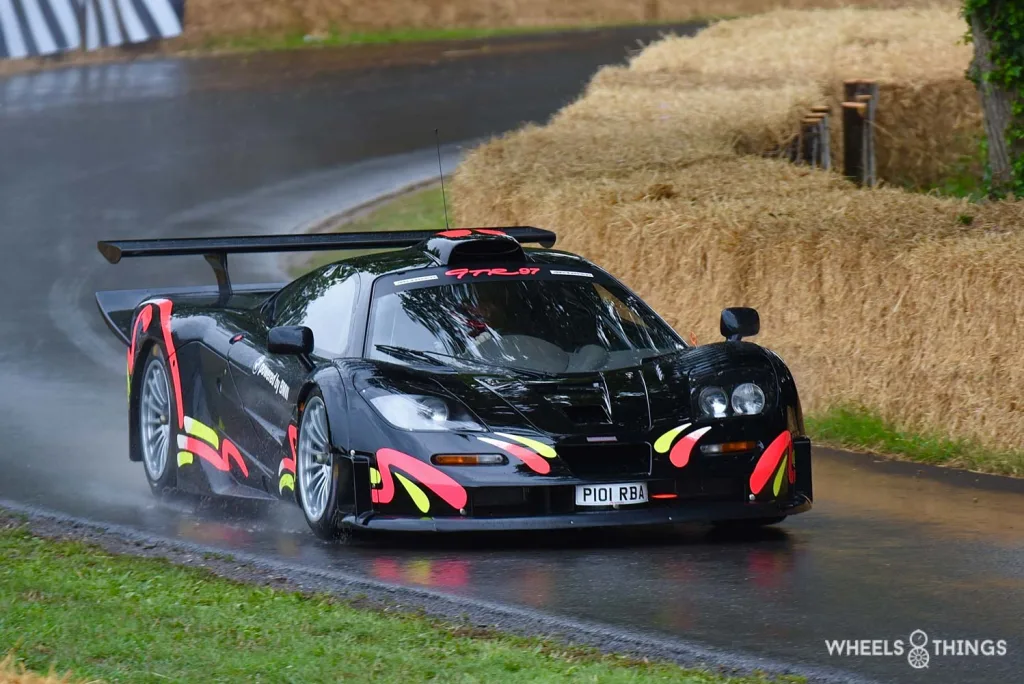
Mclaren had brought the original Le Mans winning F1 GTR and it was displayed on their beautiful stand. Two other F1 GTRs competed in the hill climb. The very first “Longtail” development car and a Japanese “short” Lark F1 GTR. You can read the story about the Longtail version in our article on the 1997 season here.
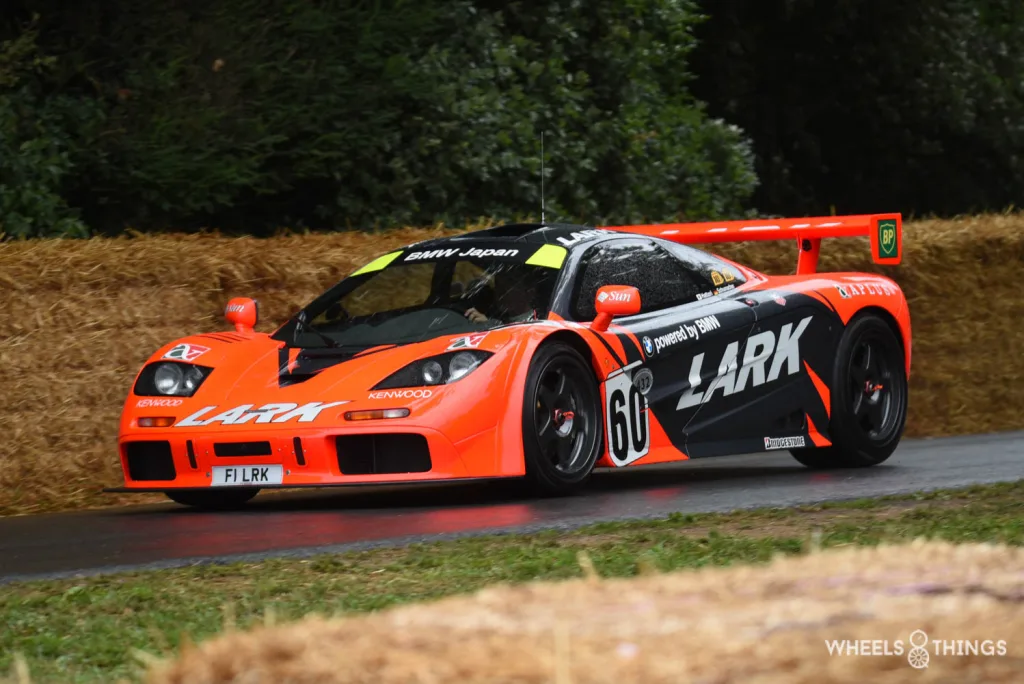
Unfortunately, this Lark version ended up against the straw bales in the famous Malcomb bend on Sunday. Everyone knows it is difficult but every year several pilots still let themselves get caught on it.
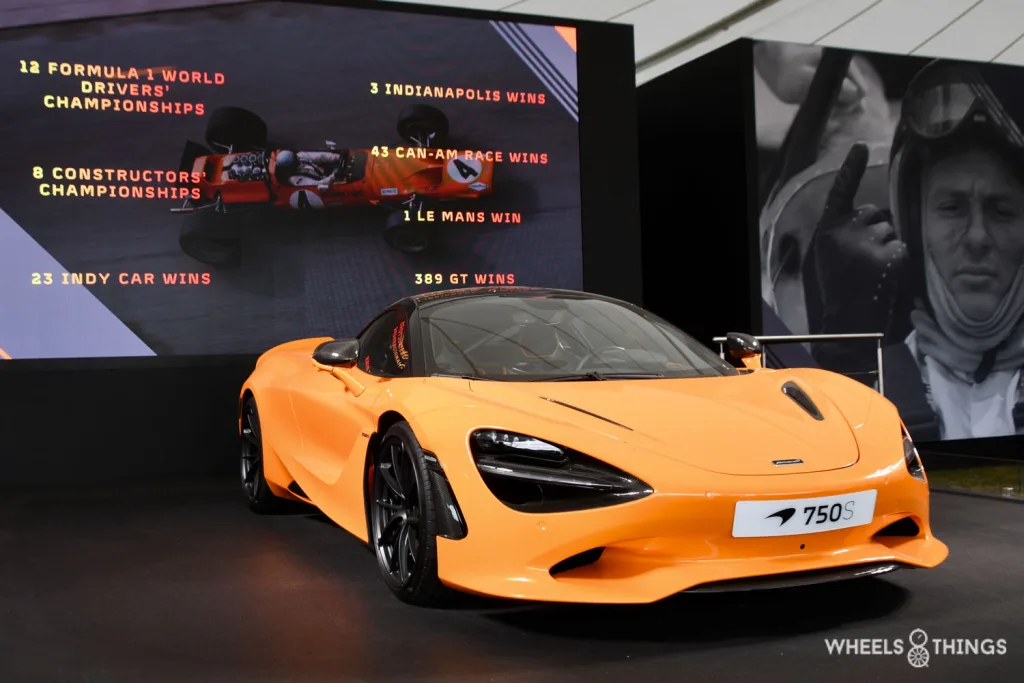
NO SATURDAY
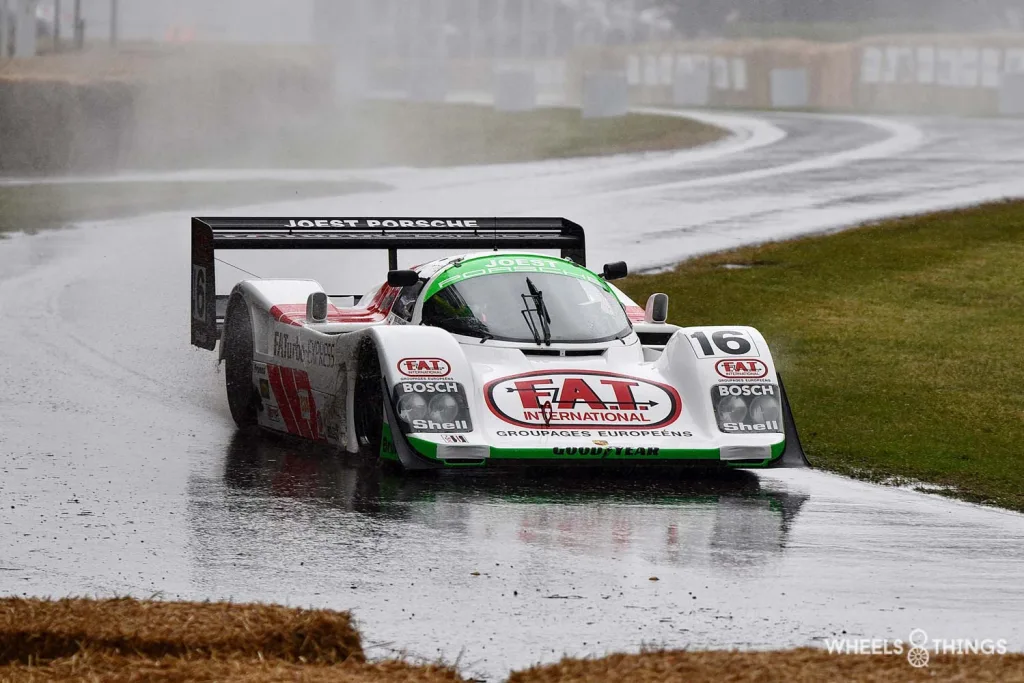
For the first time in the 30-year history of the FOS, the organisers had to decide to cancel a day because of the heavy storms on Saturday. After already a heavy Friday with pouring rain and some wind, it was too dangerous to allow such a crowd on the grounds around Goodwood House.
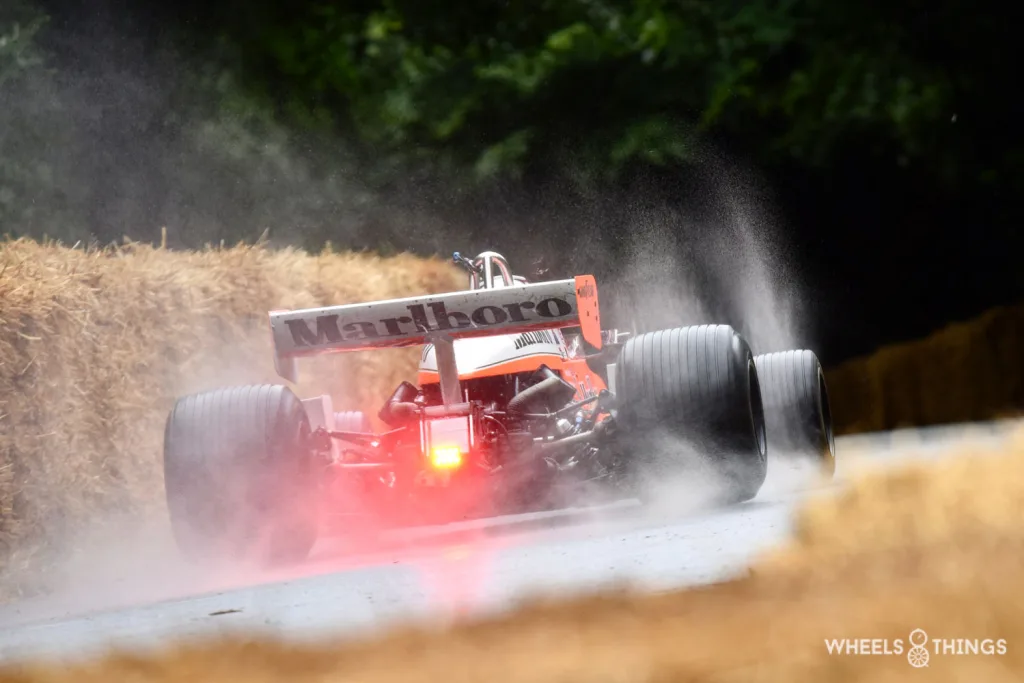
But credit where credit is due: the organisation and provision of information went perfectly. On Friday evening there was already notification to await further news. Then a few hours later came the announcement that Saturday was cancelled and immediately it was reported that all tickets would be refunded.
Now, such a storm is certainly not an exception in that region. In June 1944, Operation “D Day” also had to be postponed for two days due to stormy weather.
SHOOTOUT
With the cancellation of Saturday, the original timing did run into trouble. The practice runs for the shoutout were thus considerably shortened, though.
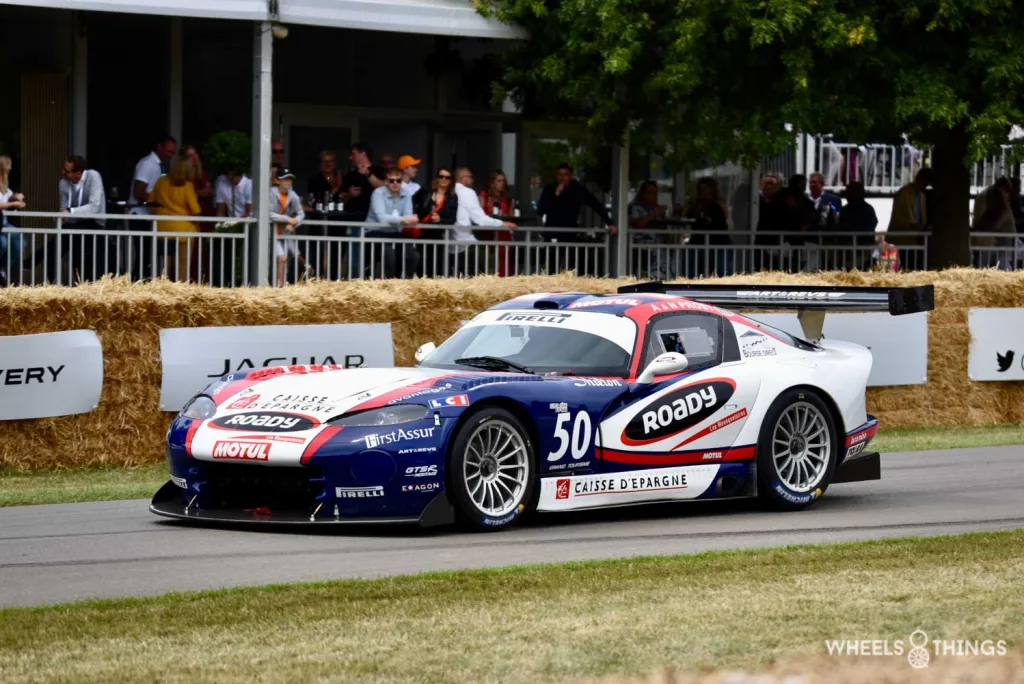
A totally different time table also had to be drawn up for Sunday. In each series that took place, a number of participants from the shootout were added at the back each time. As every year, this is a motley mix with cars from 1907 to 2023. Sebastian Loeb’s Lancia Delta Evo E-RX was not among them, though. This electric remake of the Lancia Delta S4 had not made it to Goodwood. Perhaps it was best because a week later the entire team went up in flames on the Lydden Hill circuit during a battery recharge.
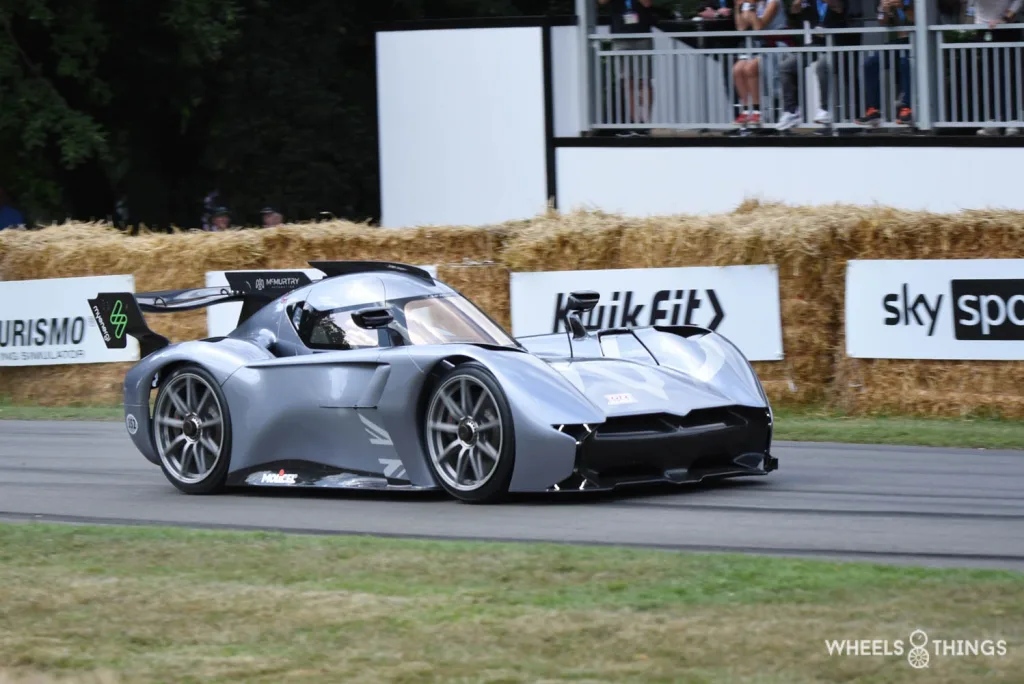
The record-holding McMurthy participated but only as a demo.
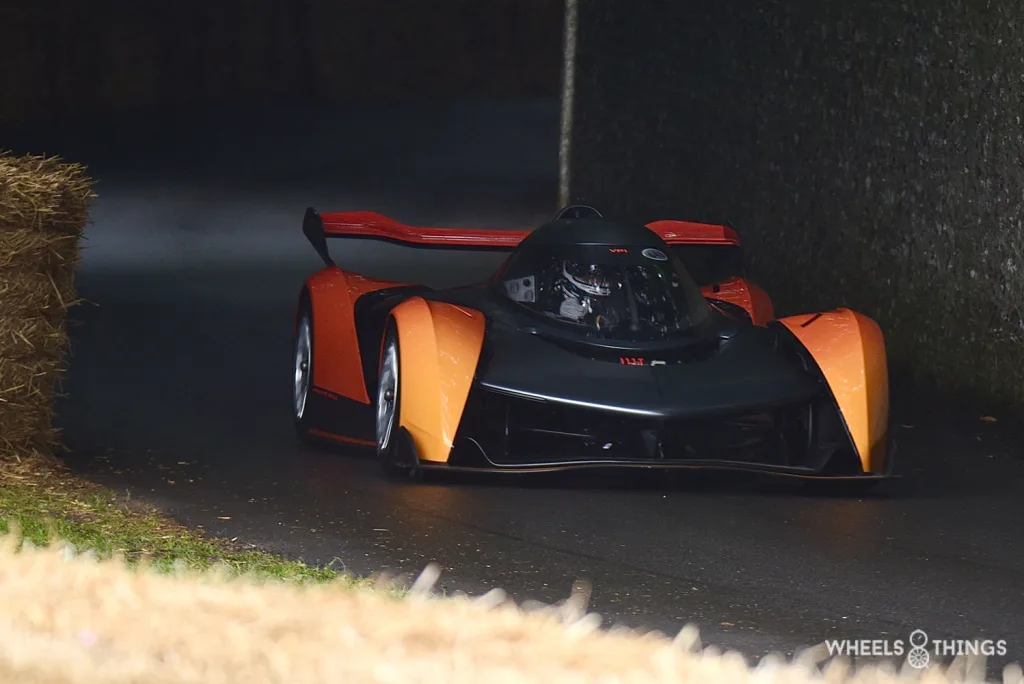
This in turn made for an exciting battle in which the fight for victory was at the cutting edge. Martin Kirchhöfer’s new Mclaren Solar won the duel with a time of 45.34.
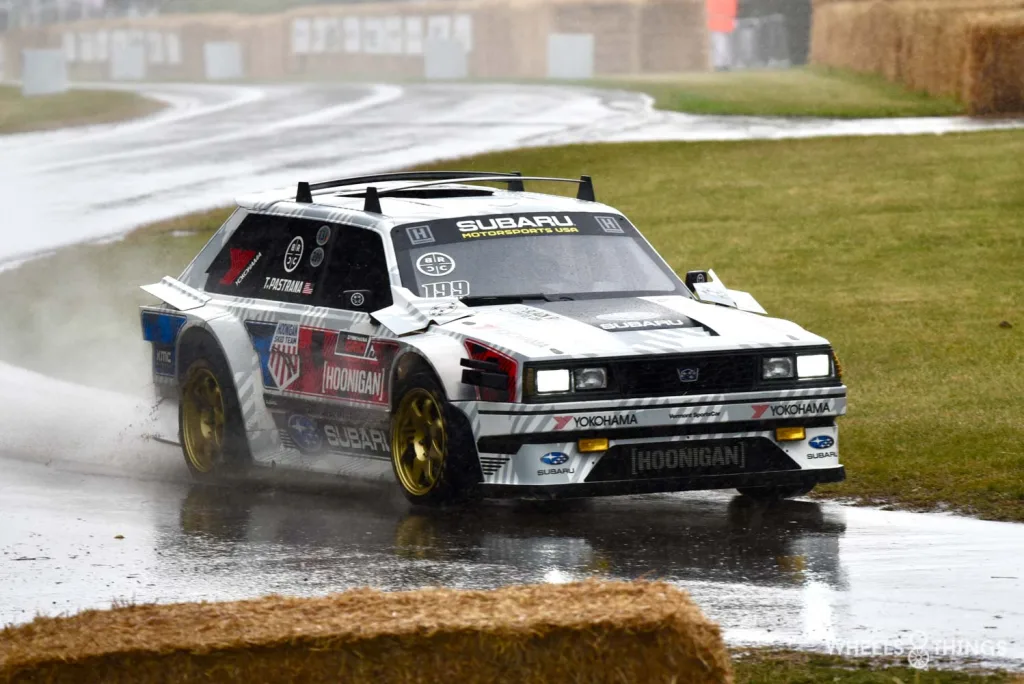
This makes him just one second faster than the Subaru GL Family Huckster of now legendary stunt driver Travis Pastrana.
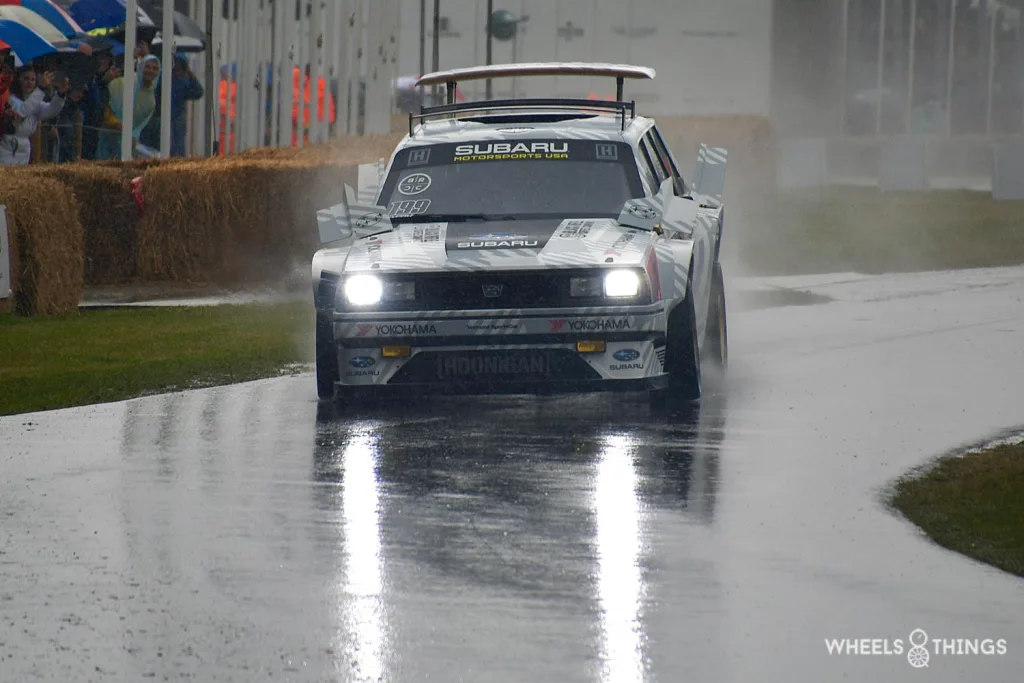
Pastrana had even fitted his Subaru with aerodynamic braking attachments. These activated automatically as soon as the brake pedal was applied. A system like it was once used at Le Mans on the 300 SLR. Well executed and spectacular to see this in action.
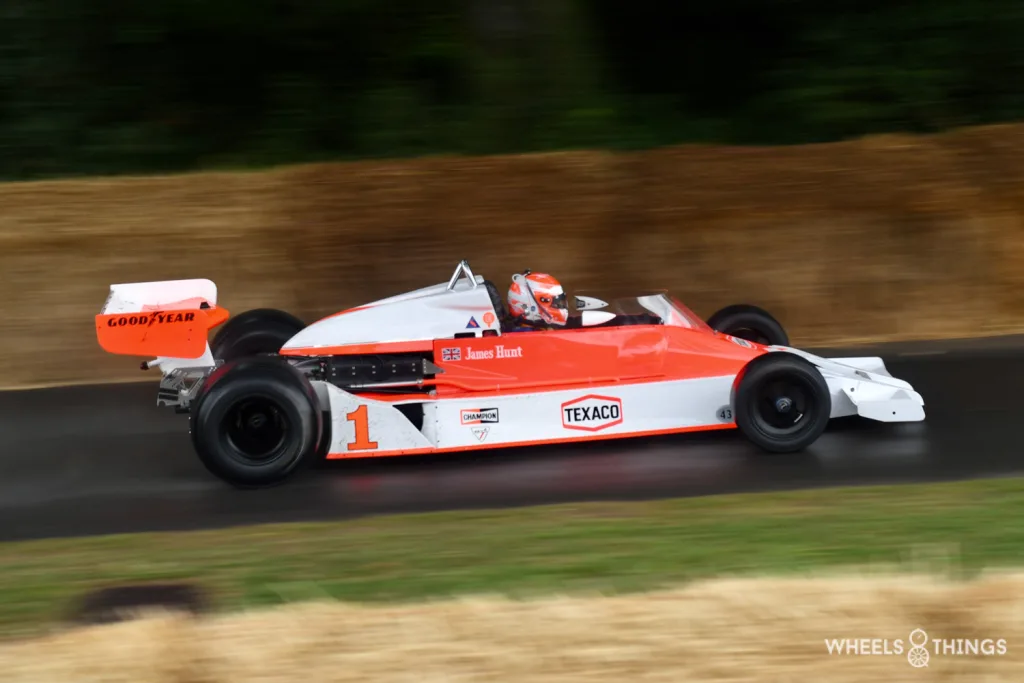
A good old Mclaren M26 Formula 1 joins Michael Lyonns to complete the podium.
LAMBORGHINI
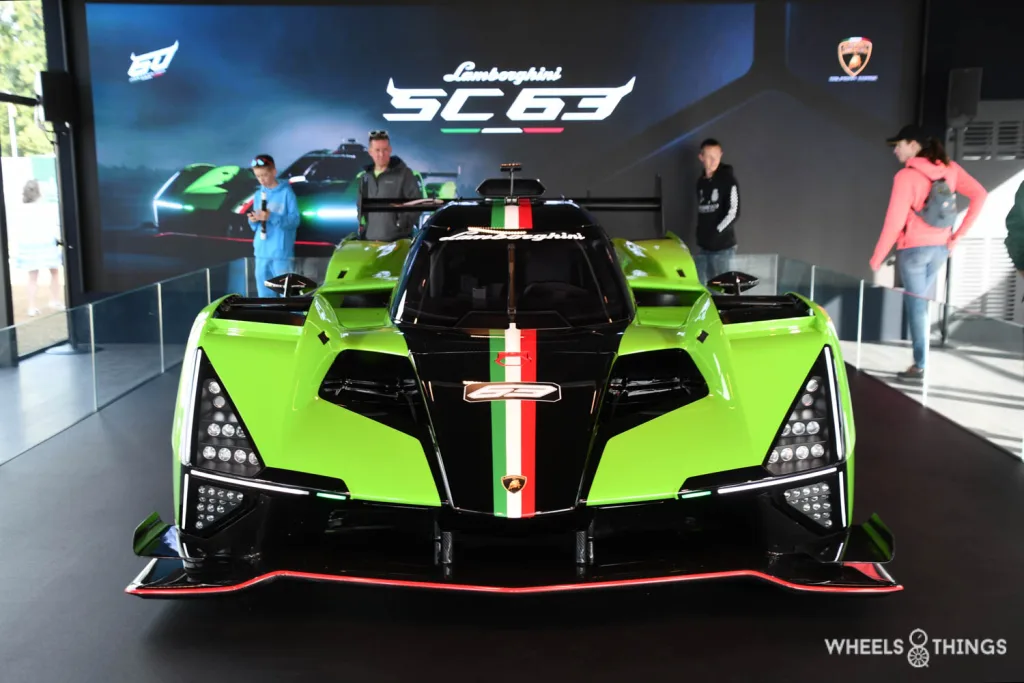
That Lamborghini will compete in the WEC and the 24 hours of Le Mans next year you could already read in our article on the WEC. Not read it? You can find all the info here.
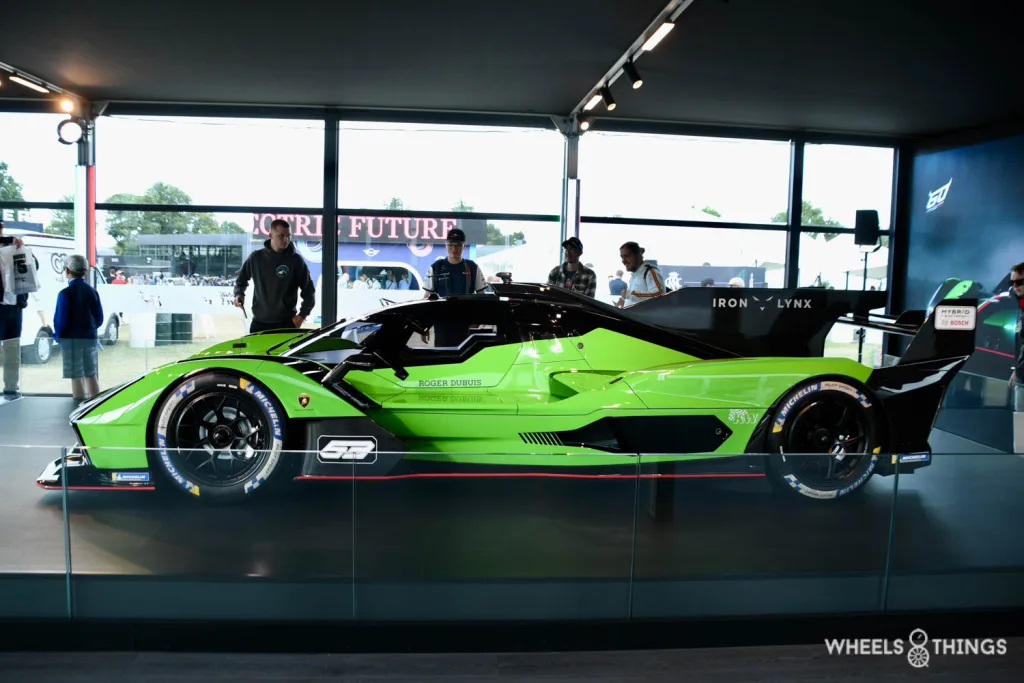
The Italian brand from Sant Agate Bolognese presented its new Le Mans Hypercar at the FOS. CEO Stephan Winkelman pulled the curtain off this SC 63, the most advanced Lamborghini to date, on Thursday. The Lambo has since completed its first laps on an Italian circuit, and the countdown to the 2024 WEC has thus begun.
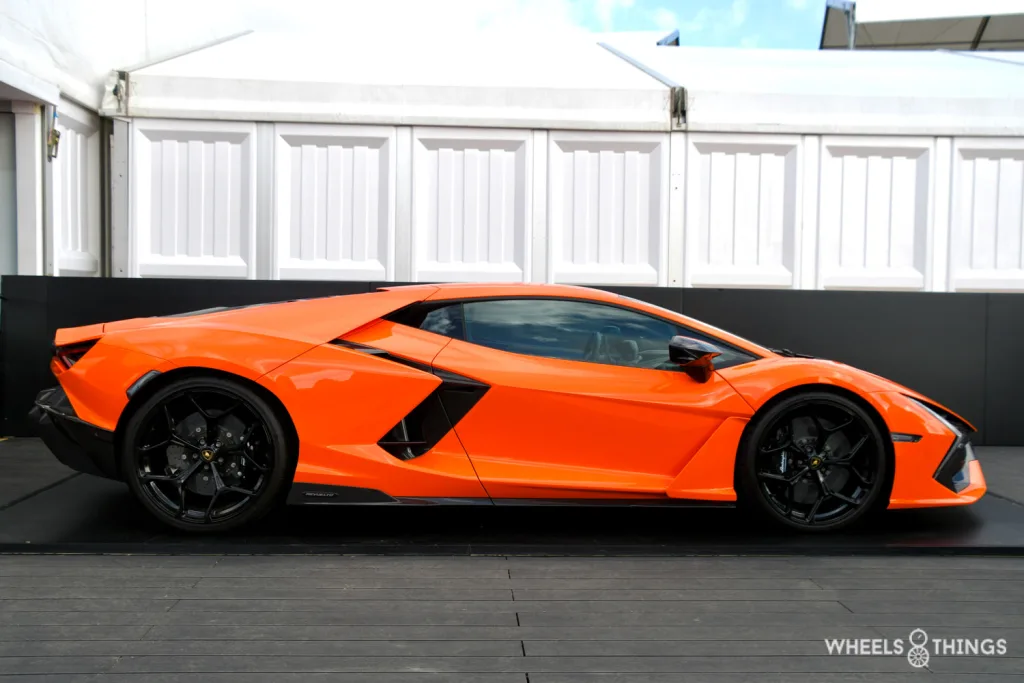
Lamborghini also had its just-proposed Revuelto with it that comes to replace the Aventador.
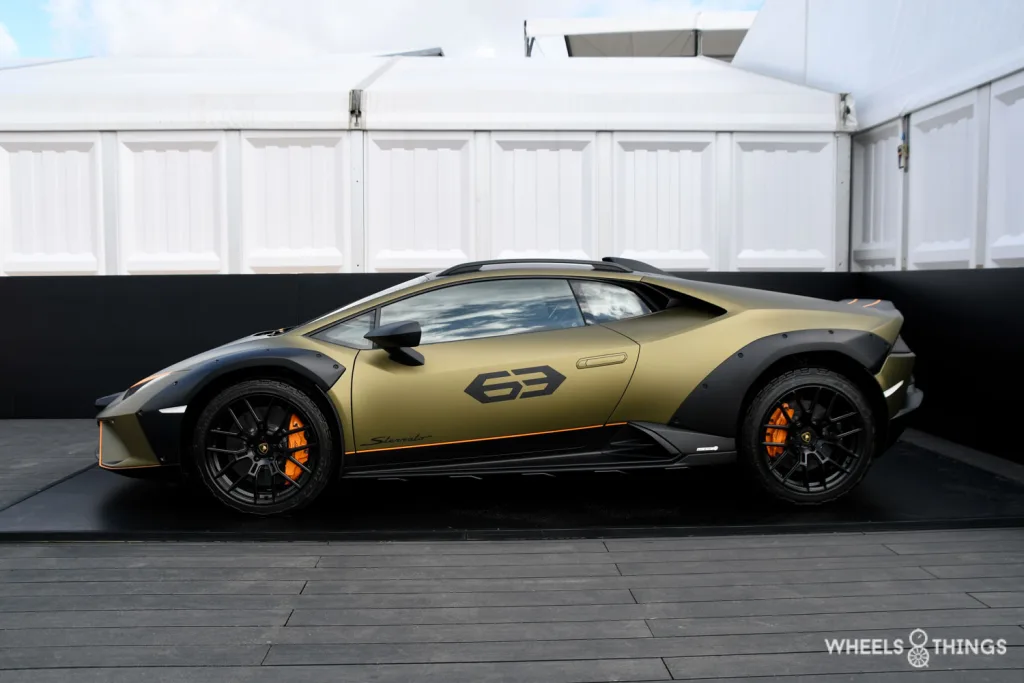
Those who prefer to drive it a bit more alongside the tarmac can do so from now on with the Huracan Sterrato. A raised version of their V10 model including roof racks and extra headlights. After Porsche with its “Dakar”, Lambo too is now targeting this niche in the sports car segment. But whether this is really necessary we doubt.
SUPERCAR RUN
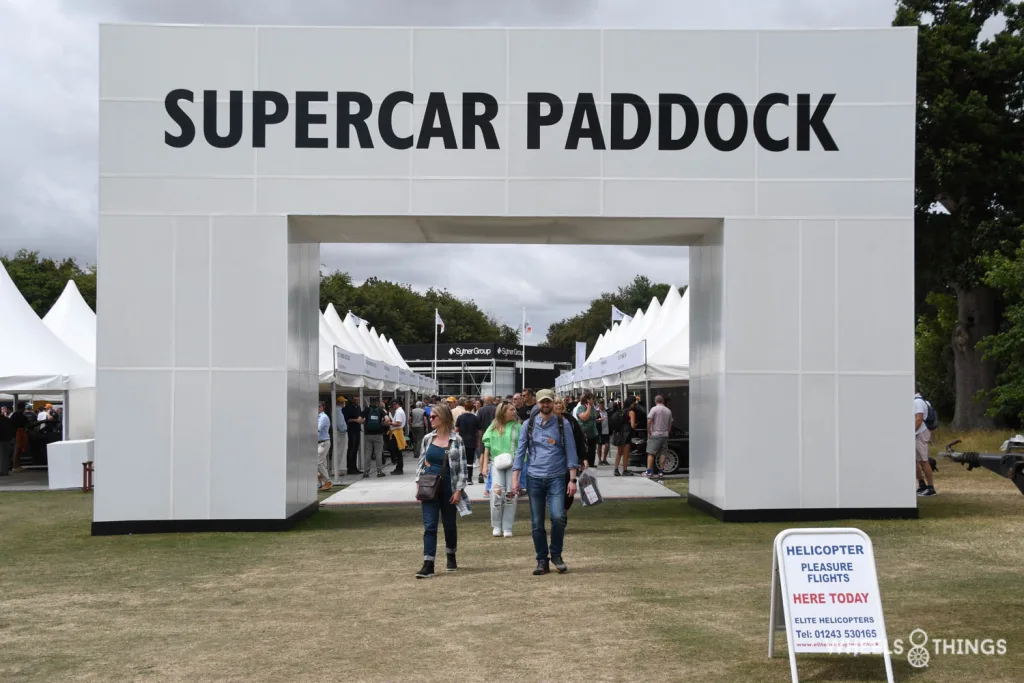
These Lambo’s were obviously on hand at the Supercar Run where we did see the most exclusive and exotic machines pass by. And Supercars create many dreams and at the FOS you do see things you see almost nowhere else.
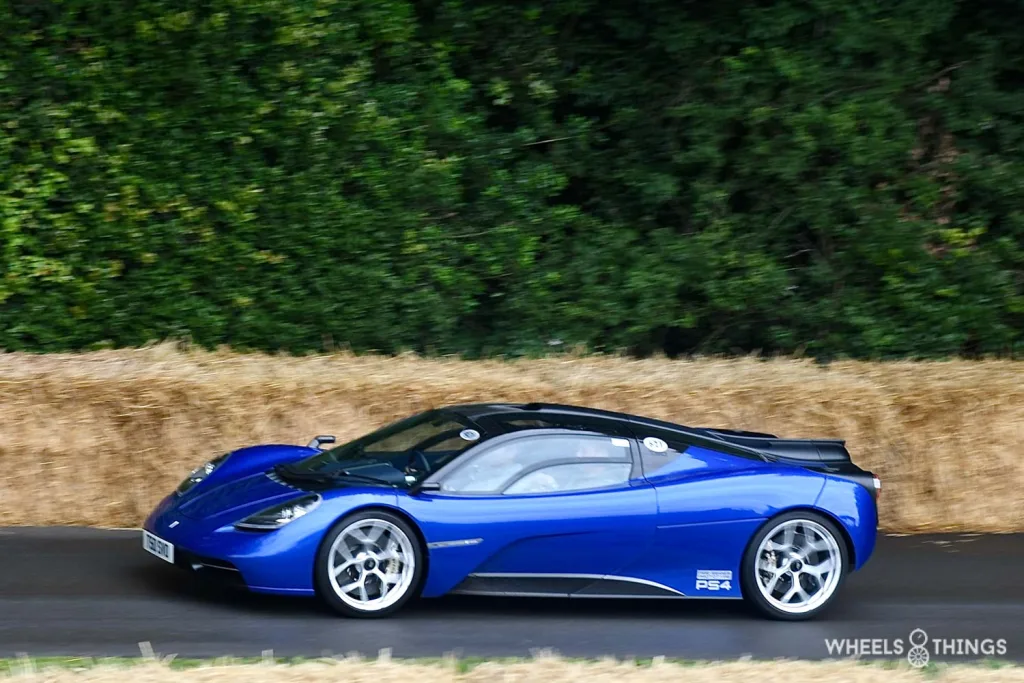
The Murray T50 with its atmospheric V12 engine revving 12,000 rpm was certainly the nicest-sounding of them all. This T50 is a masterpiece by Gordon Murray. You can find more info on it here.
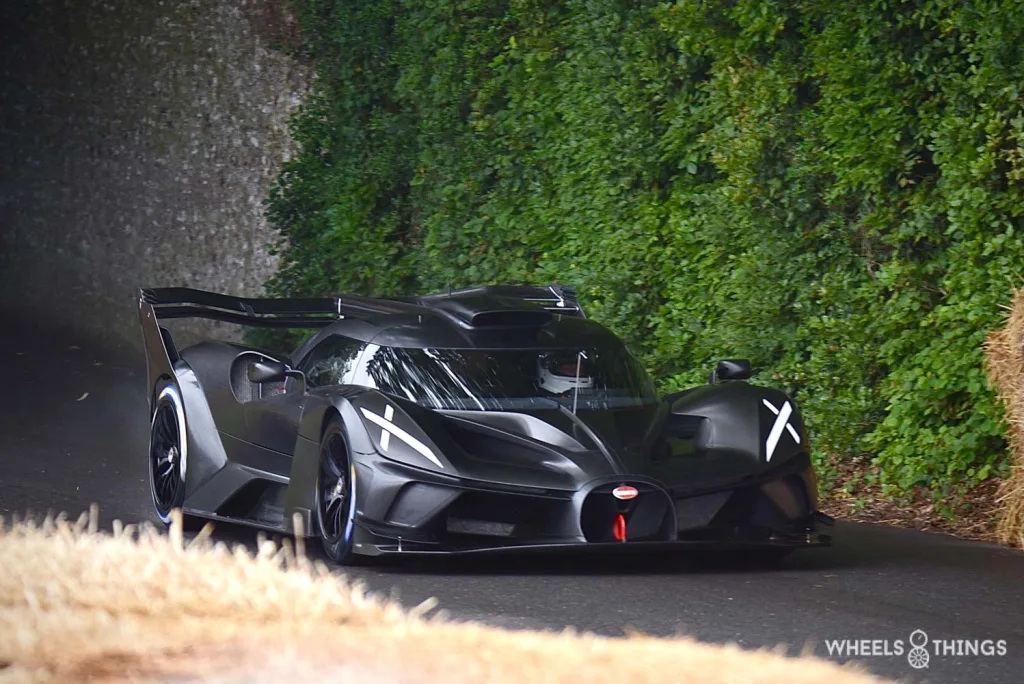
Bugatti had brought his “Bolide”. A kind of track car without permission for public roads. Ex Le Mans winner Andy Wallace was behind the wheel of this 1600 HP car that has a price tag of around 4 million euros. 40 units will be produced.
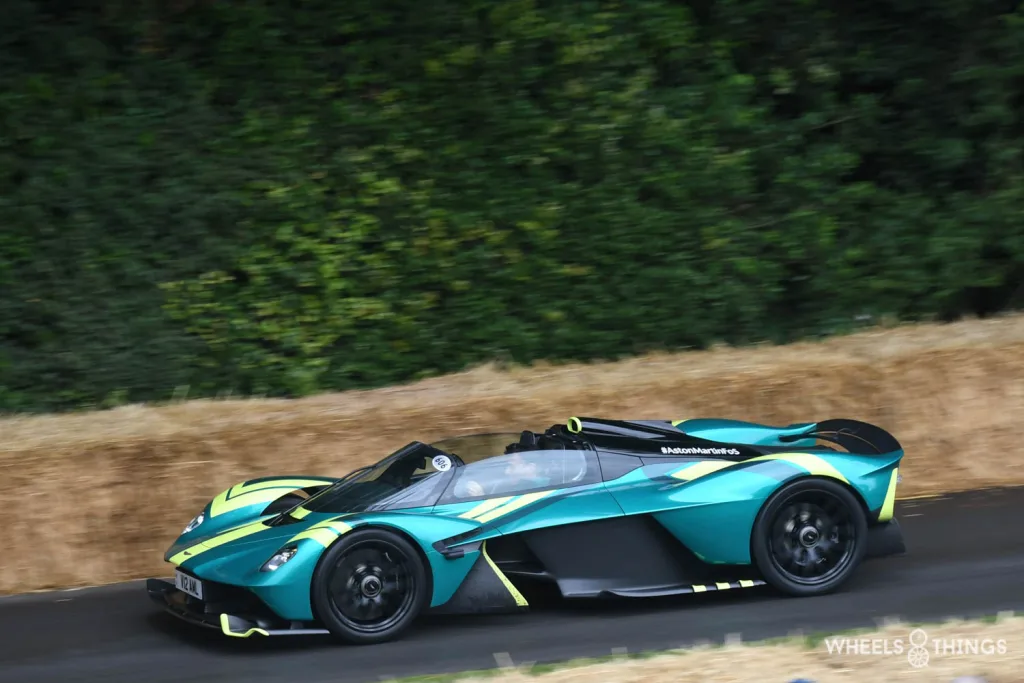
Then again, Aston Martin had its almost complete range at with the highlight being the new DB12 and the farewell version of the DBS dubbed Ultimate 770. And besides the “regular” Valkyrie, there was also a spider and the ultimate Pro model.
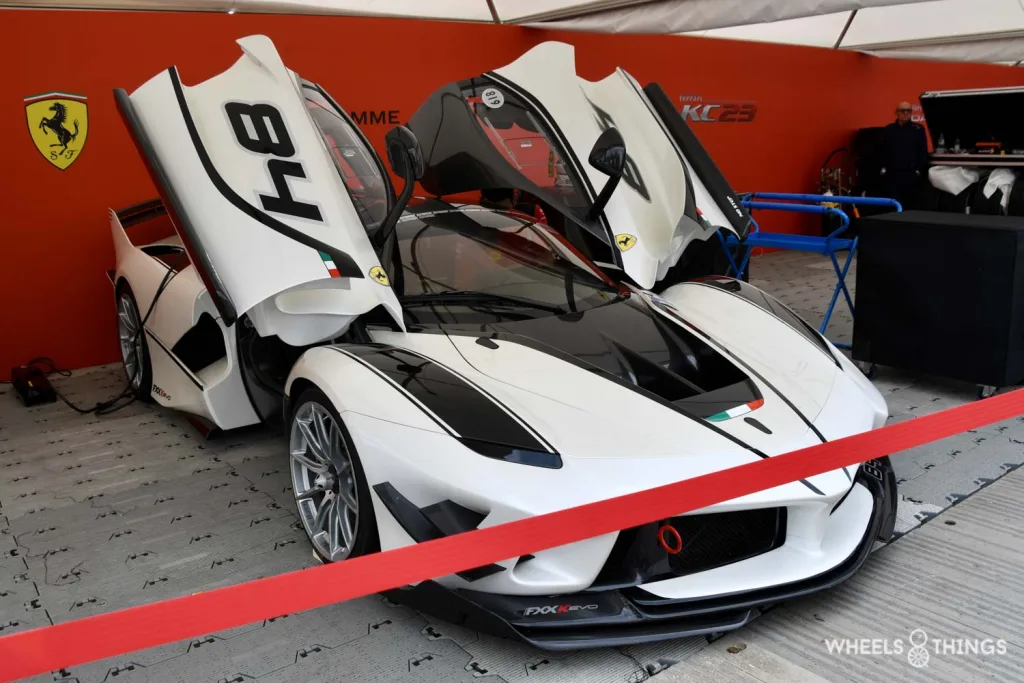
The numerical advantage was for Ferrari. They had brought almost their entire current range as well as some unique pieces like the Daytona SP3 and the 812 Competizione. But also their older models like the 599 XX Evo and FXX-K were there again.
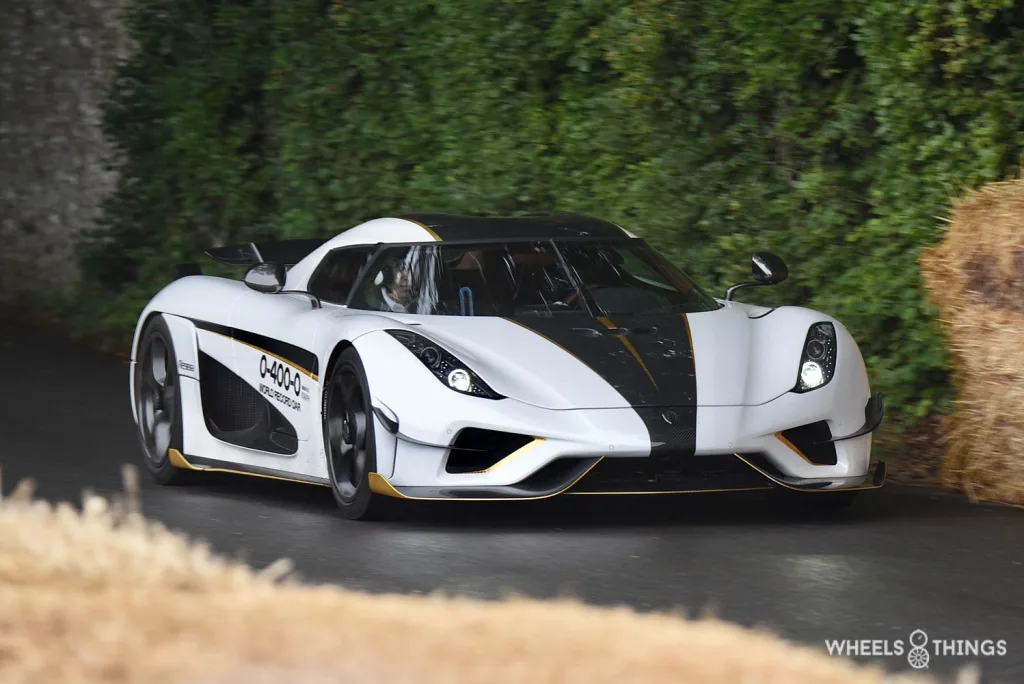
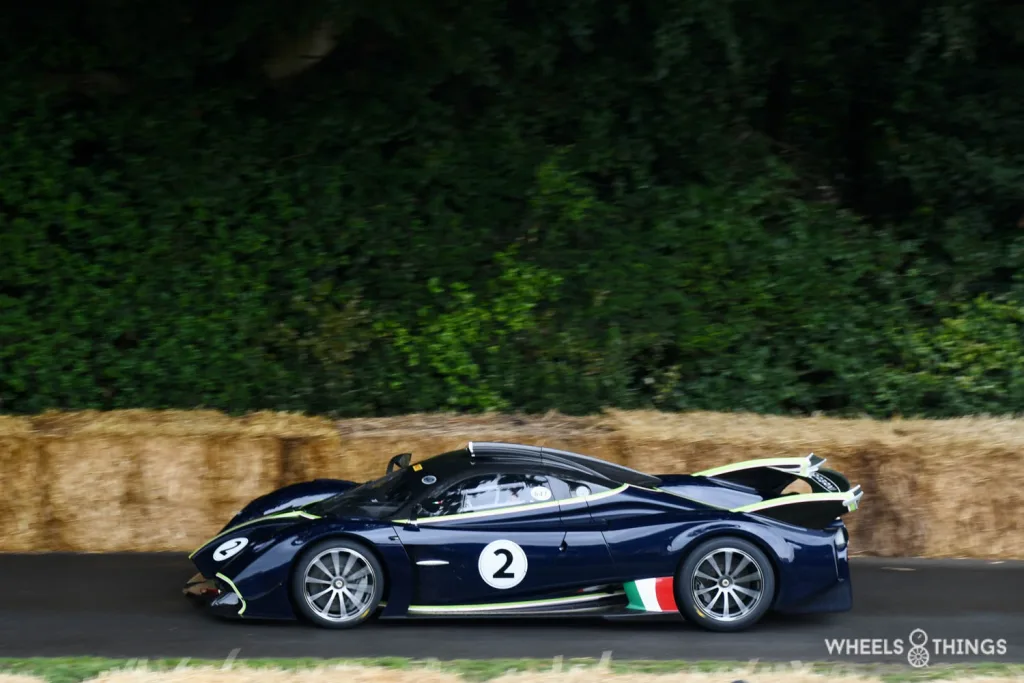
Pagani was also there with its Huayra R and Utopia and rival Koenigsegg with their Gemara, Jesko and Jesko Absolut.
What the new electric Rolls Royce Spectre came to do in this series is still not clear to us. Is not directly a supercar and spectator experience was not really there either.
911
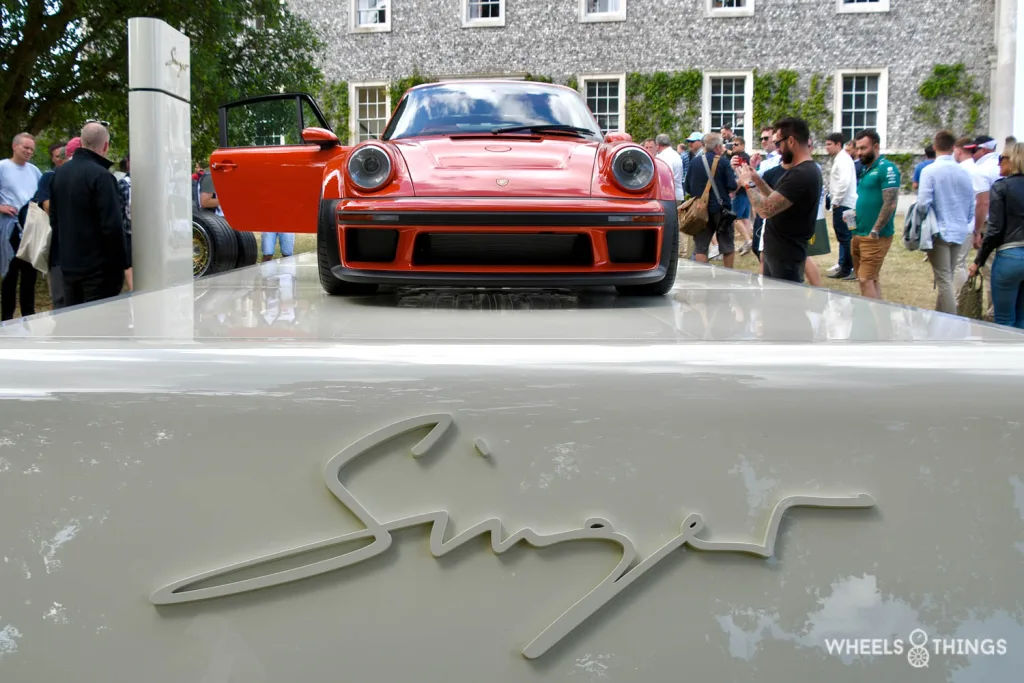
Now the Porsche 911 is not exactly one of my most favourite sports cars but I still want to make an exception for these two versions.
SINGER DLS STUDY
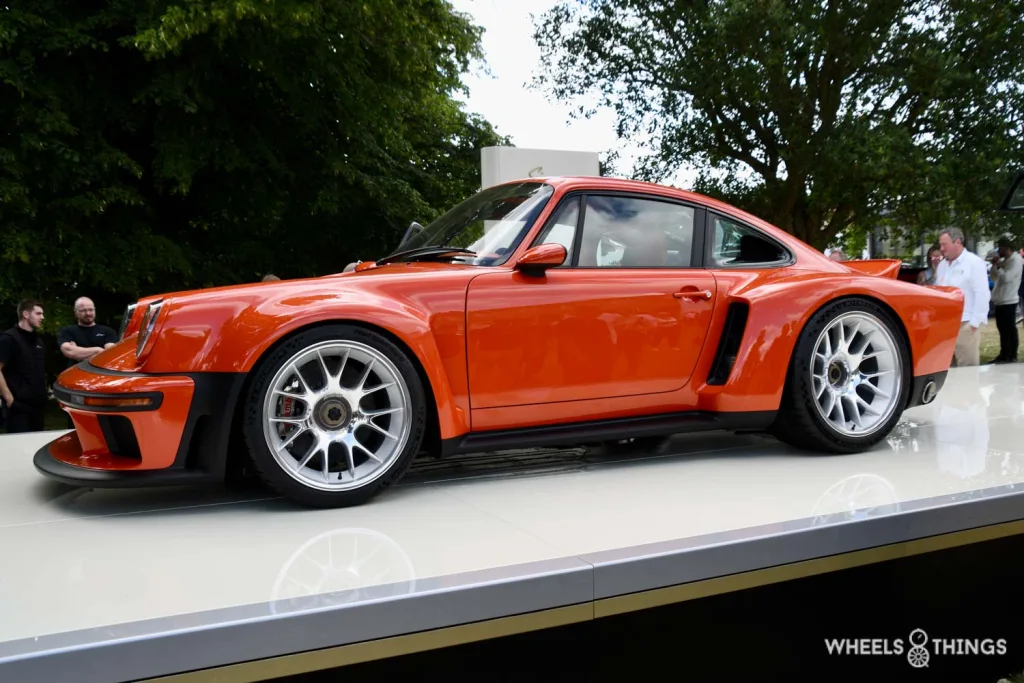
By now, we know Singer for its custom-made and hand-built creations based on the Porsche 911. Until now, these have been improved versions of regular street versions of the 911.
Today, Singer goes one step further with this DLS Study. Based on a 964 series, they make a version that is fully in line with the 934 and 935 racing models from the 1977/1978s. A widened bodywork, entirely in carbon is a contemporary interpretation of these iconic racing models.
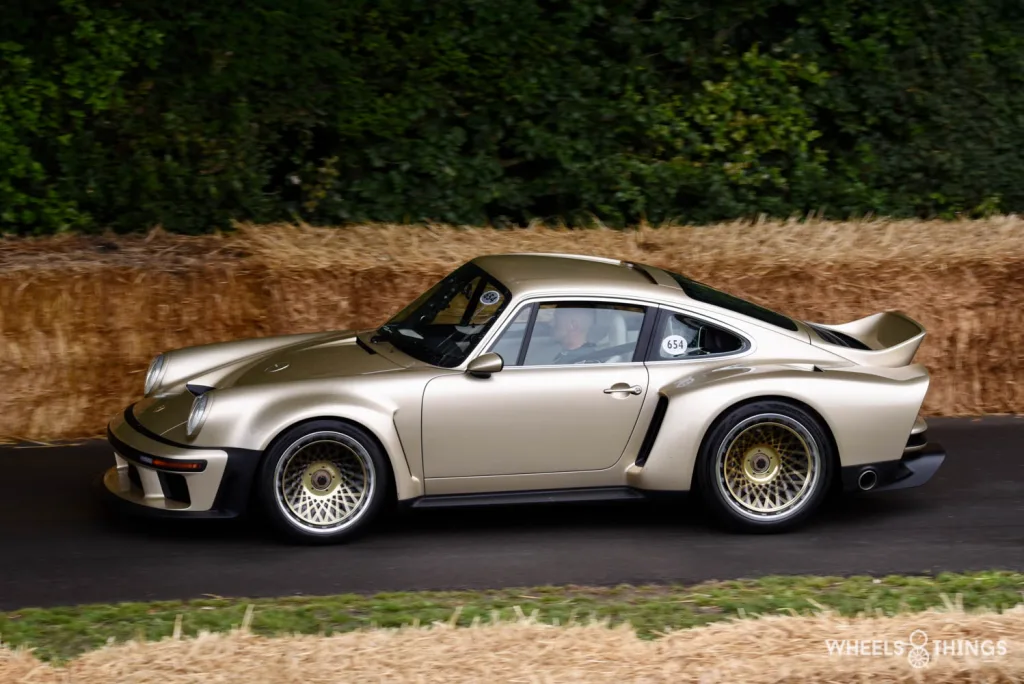
This DLS comes standard with the small “duck spoiler” but can be supplied with the large Group 5 wing as an option, and this for track use.
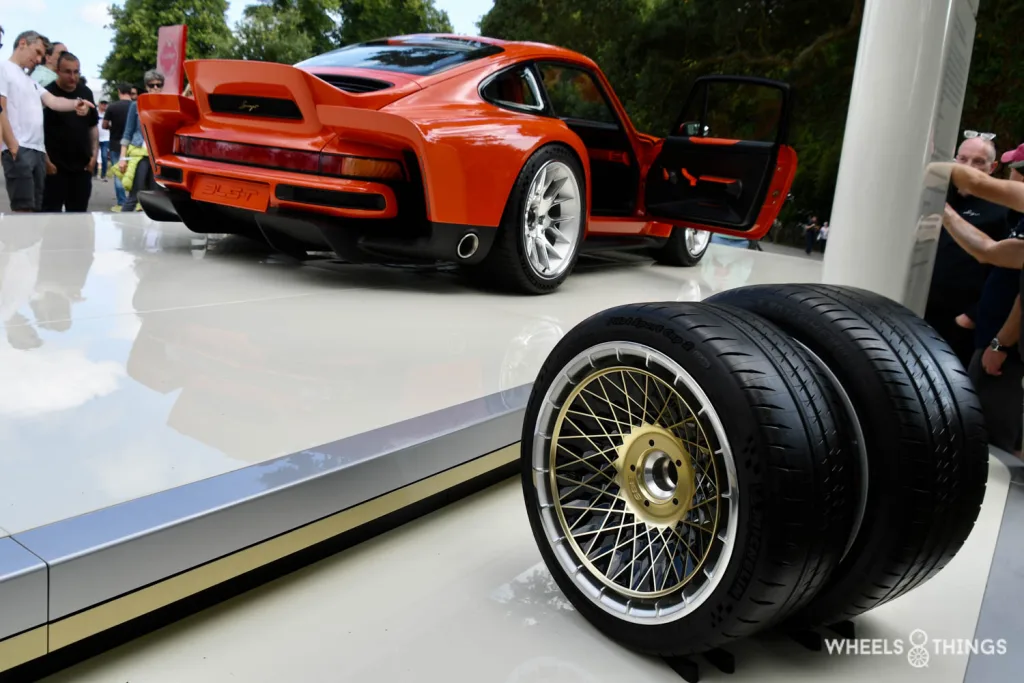
The BBS rims, in the then-current design with the aerodynamic wheel covers, complete the picture.
930 TURBO TAG LANZANTE
Paul Lanzante needs no further introduction. He and a hastily assembled team won the 1995 24 Hours of Le Mans with the Mclaren F1 GTR. This winning Mclaren was on the Mclaren stand.
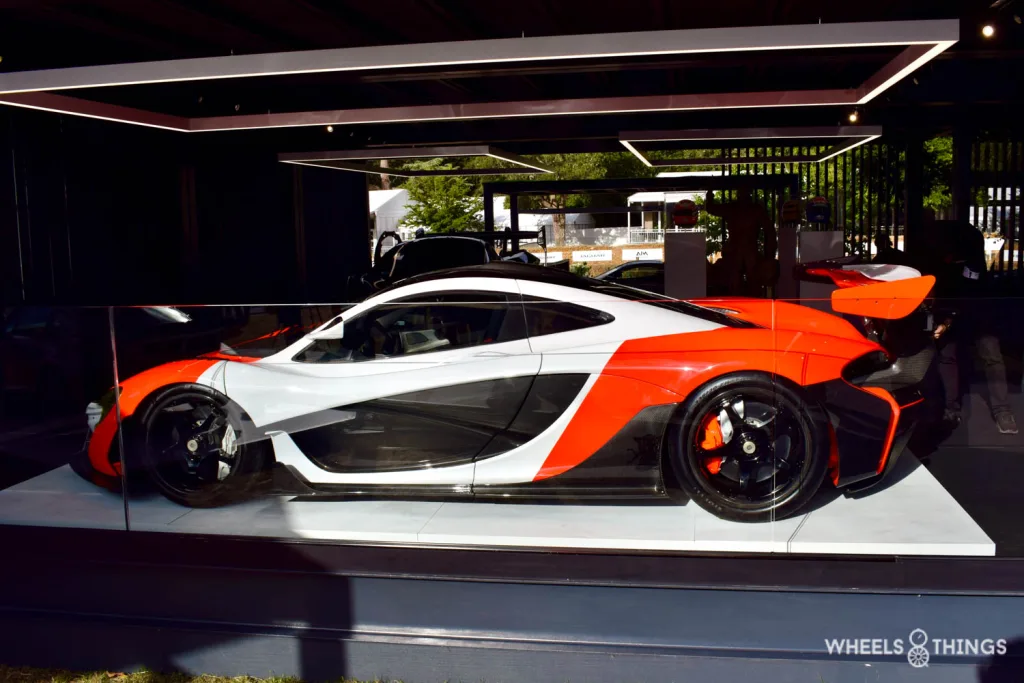
Meanwhile, Lanzante has become a household name in the automotive world. He is the specialist on everything and related to F1 and the F1 GTR. Maintenance, repairs and even restorations are no problem for his team. The F1 was followed by the P1 and Paul had brought a few of those too.
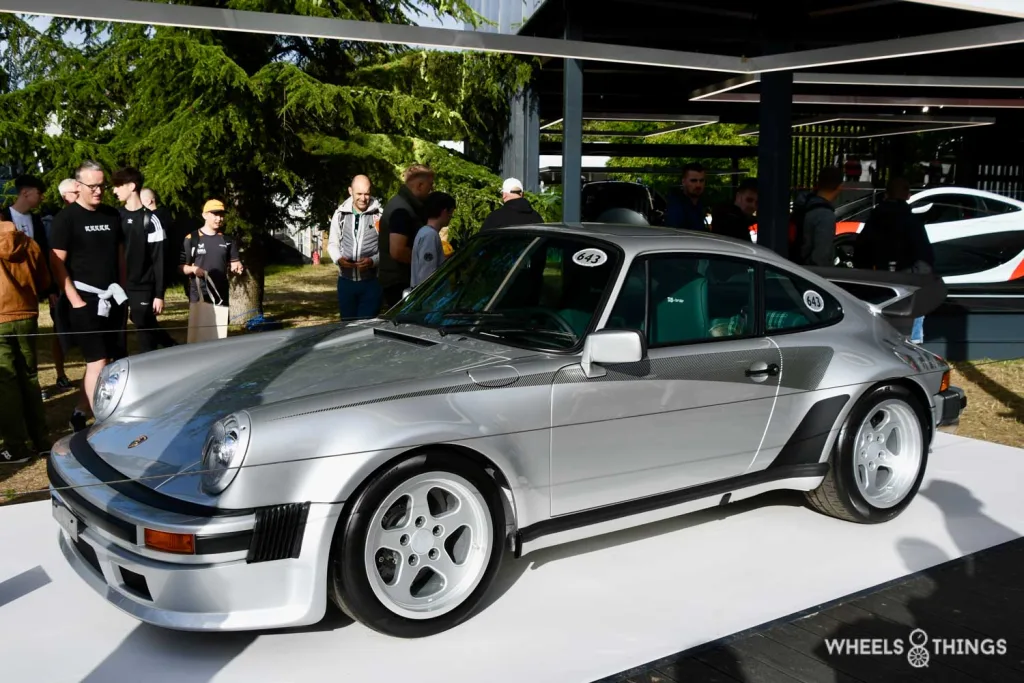
Also on this really beautiful stand was a Porsche 930 turbo, the very first series 911 with turbo. But the standard 300 HP were still not enough as this one was fitted with a mid-80s TAG Formula Porsche 1. This idea comes further from the original prototype 930 in which an F1 engine was fitted and intended for engine development.
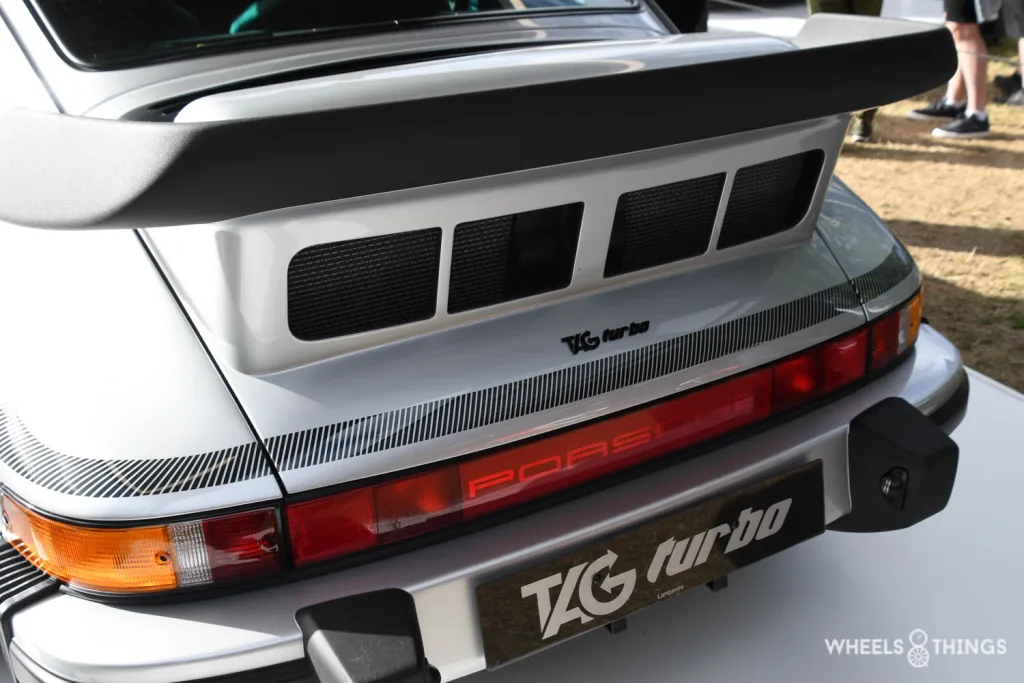
Lanzante was able to snap up 11 of these engines via TAG and, after an overhaul, they will be fitted in a modified 930. The original 900 hp are no longer there but with a turbo pressure of 3 bar, 500 are still in stock. And these are more than enough because this 930 also weighs 250 kg less than its series brother.
CONSTRUCTORS
Every year we were amazed at the imposing buildings the car brands had erected for this yet only 4-day event. In the past, all major brands were present at the FOS.
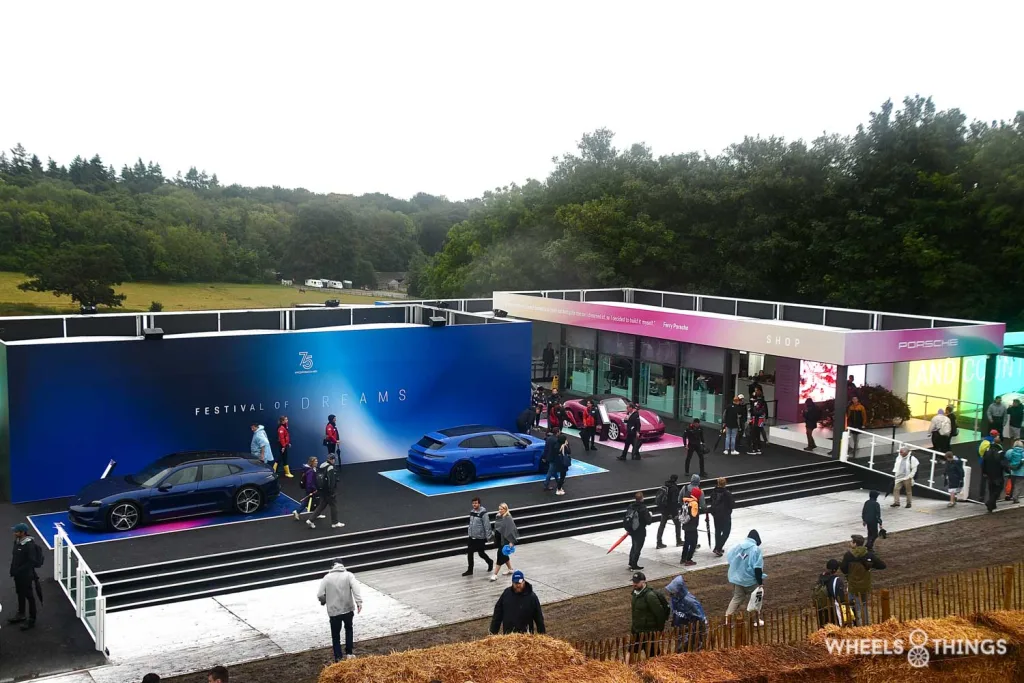
This year, however, we had to note that some were missing after all. For instance, we did not find Mercedes’ previously rather large stand. Audi, Toyota, Nissan, Volkswagen and Skoda were also absent. BMW was still there with its M Town and Renault was also present but with a much smaller stand.
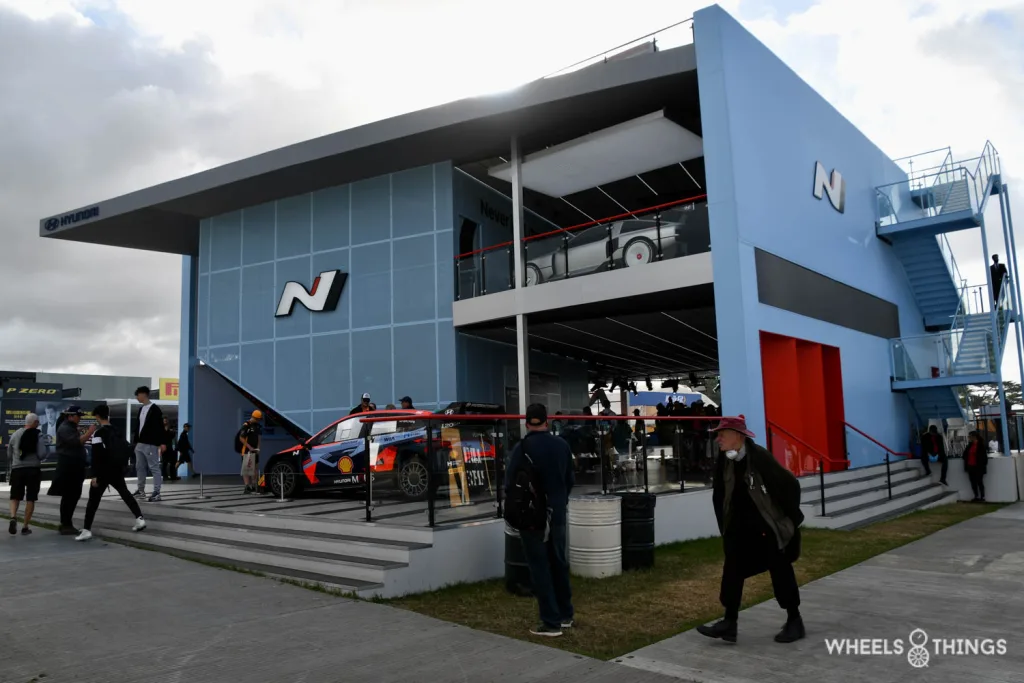
These empty seats were then filled by a number of new brands mainly in the electric and Chinese category. But Hyundai also had a notable presence this year and this both with their new models on the track and their stand. Genesis’ compatriots were also looking for market share.
FORREST RALLYSTAGE
At the very top of the Goodwood hill we find the Hannu Mikkola-designed rallystage. A sort of special stage from a rally reminiscent of the drives through the forests of the former RAC rally in Great Britain.
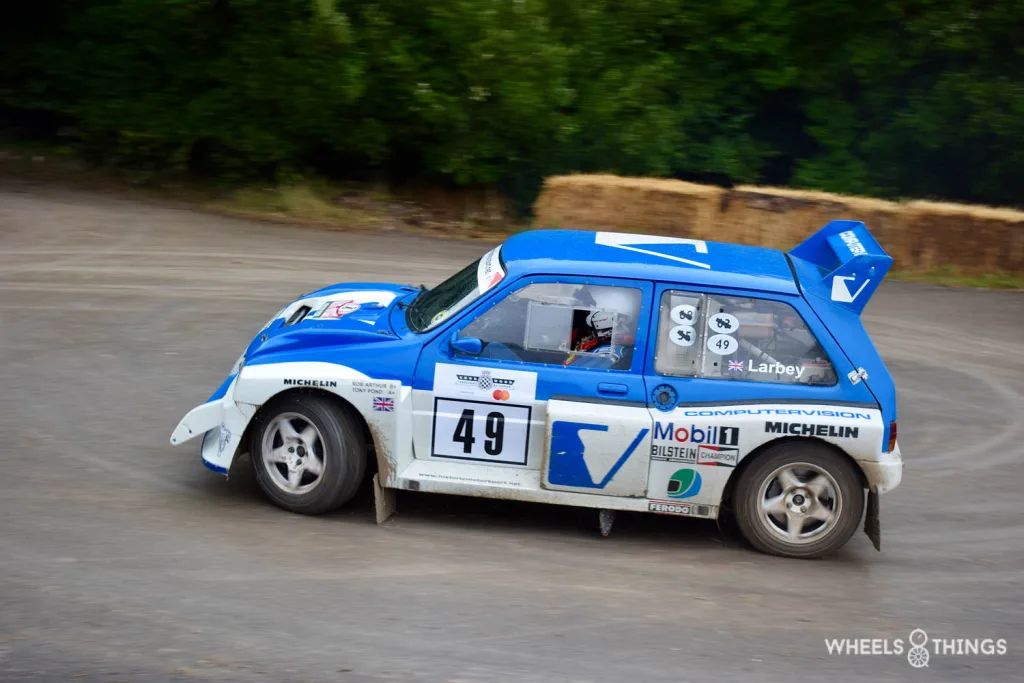
Every year we see some of the finest rally cars taking part and this ranges from a simple Mini Cooper to the legendary Group B models and even some current WRC cars.

Pilots can join for four days ( or three this year ) and try of set a fast time. Lots of spectacle and lots of dust were the result.
OFF ROAD ARENA
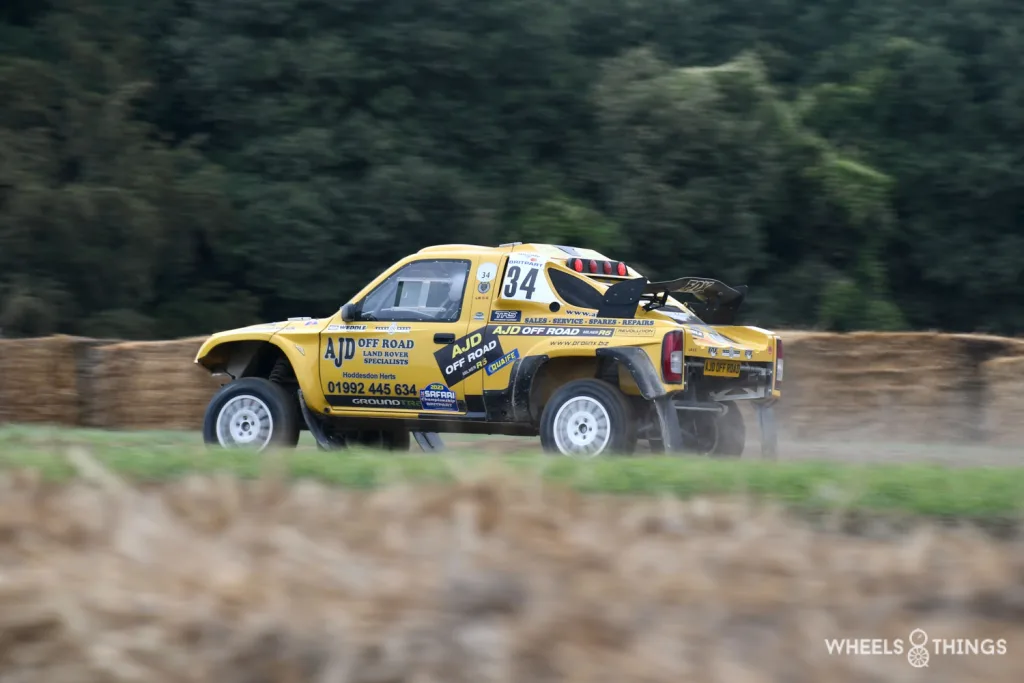
Slightly lower down the hill, in turn, is the off-road circuit where people jump around to their hearts’ content with some kind of home-made off-road vehicles, most of them based on a Land Rover.
DRIFTKHANA
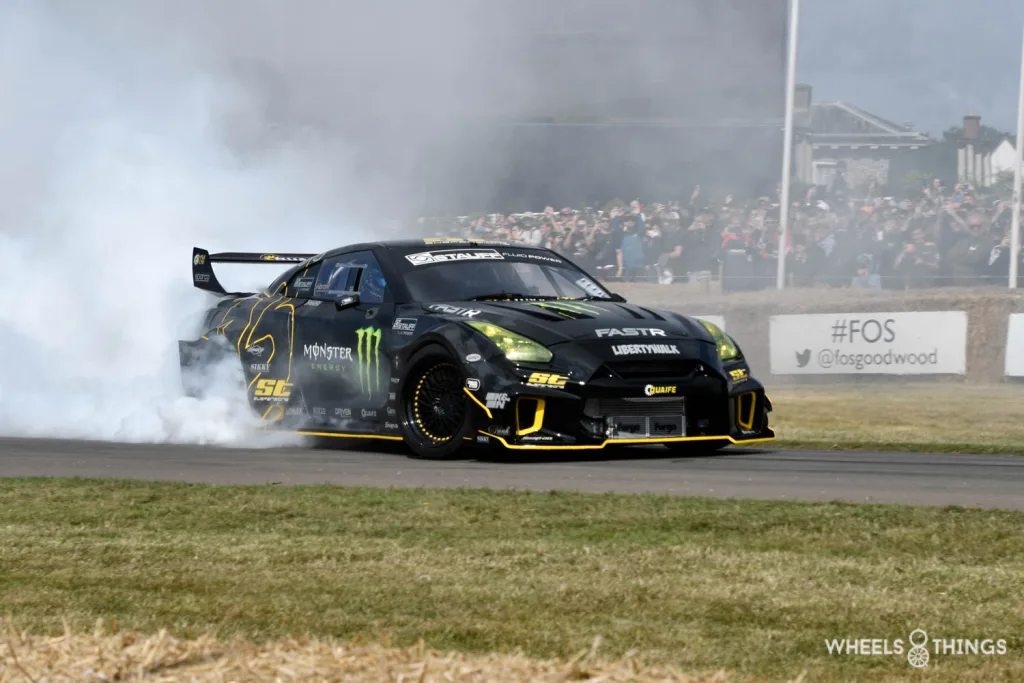
Far fewer participants in the Driftkhana series but seven is apparently enough to provide plenty of spectacle.
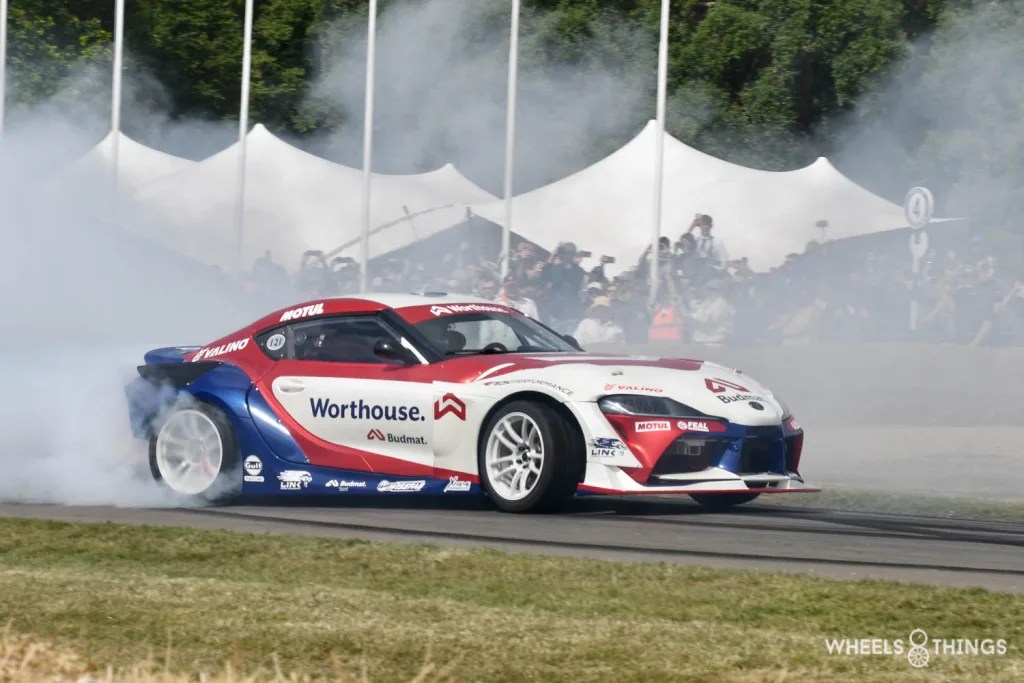
The drift men, who really almost drive the audience crazy with their fiercely evolved cars with monster power, have since become a fixture at the FOS.
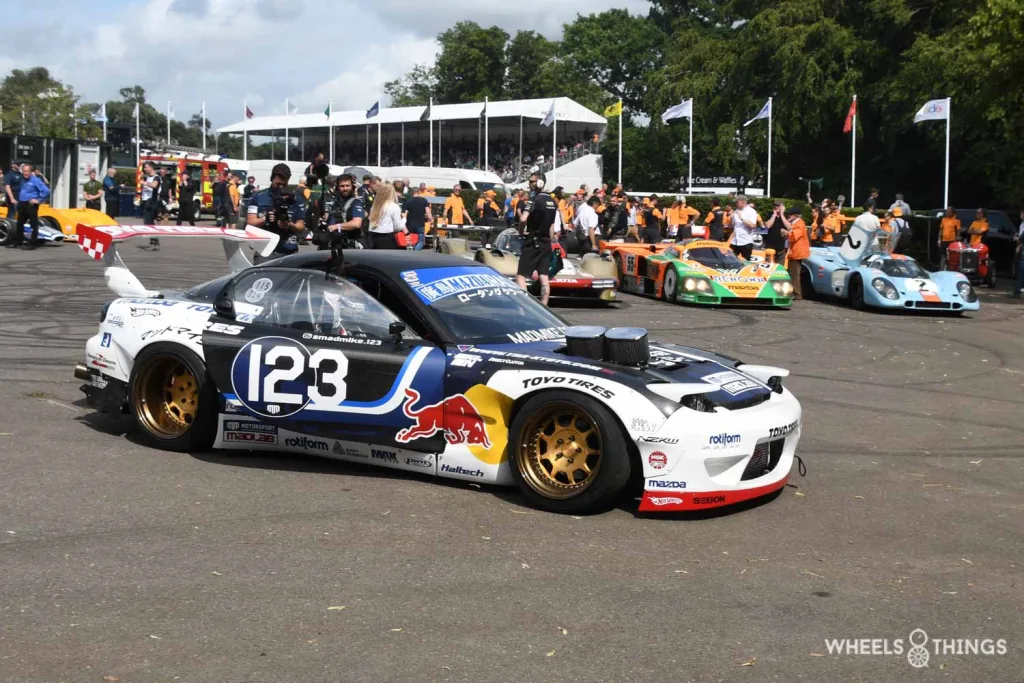
“Mad Mike” had made another crossing from Australia to the UK with his Mazda RX 7 for the first time after the pandemic, and the sound of his wankel engine could be heard far and wide in the region.
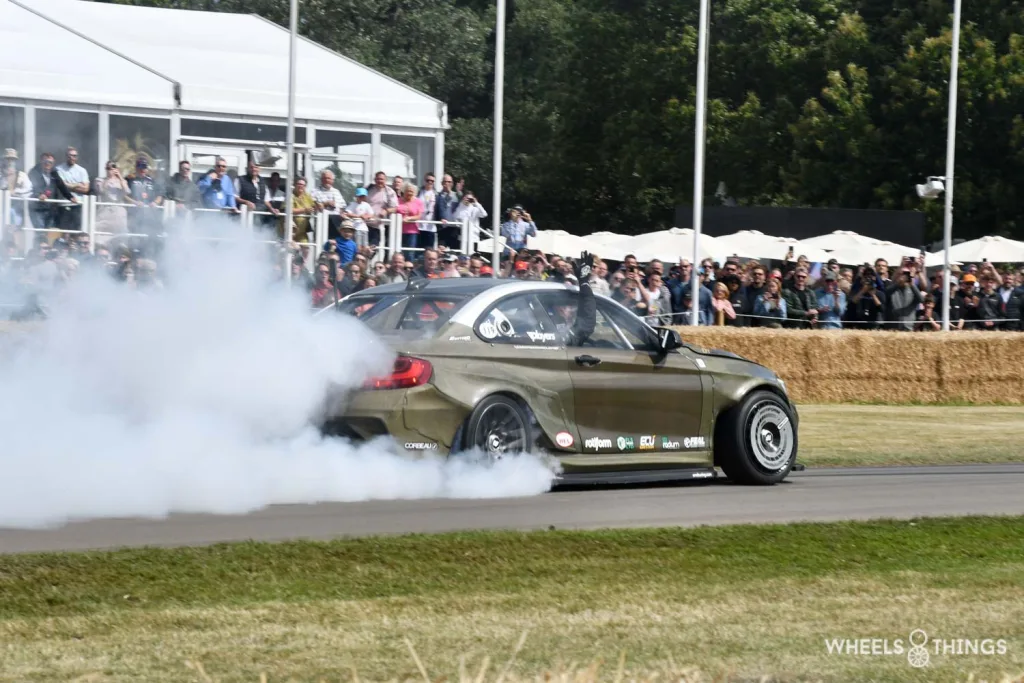
And you see the craziest creations among them. A BMW M2, fitted with a carbon bodywork, equipped with a Toyota engine with 1000 HP.
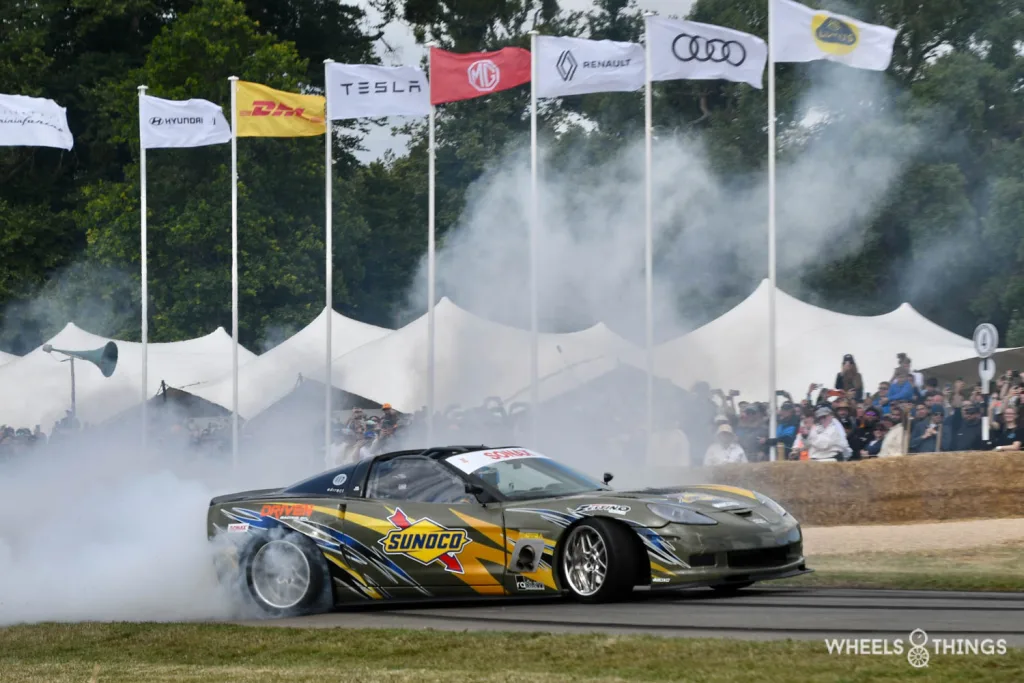
Or a 1000 HP Corvette, equipped with a twin wankel engine mated to a sequential gearbox.
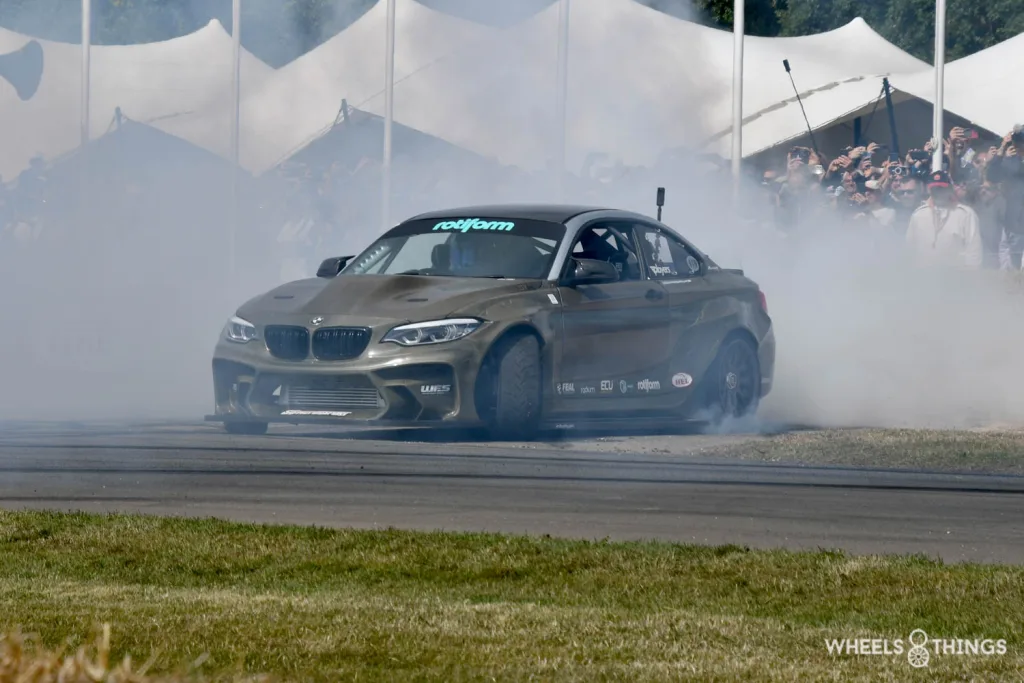
These gentlemen rotate through up to 40 bands per weekend.
CONCLUSIE
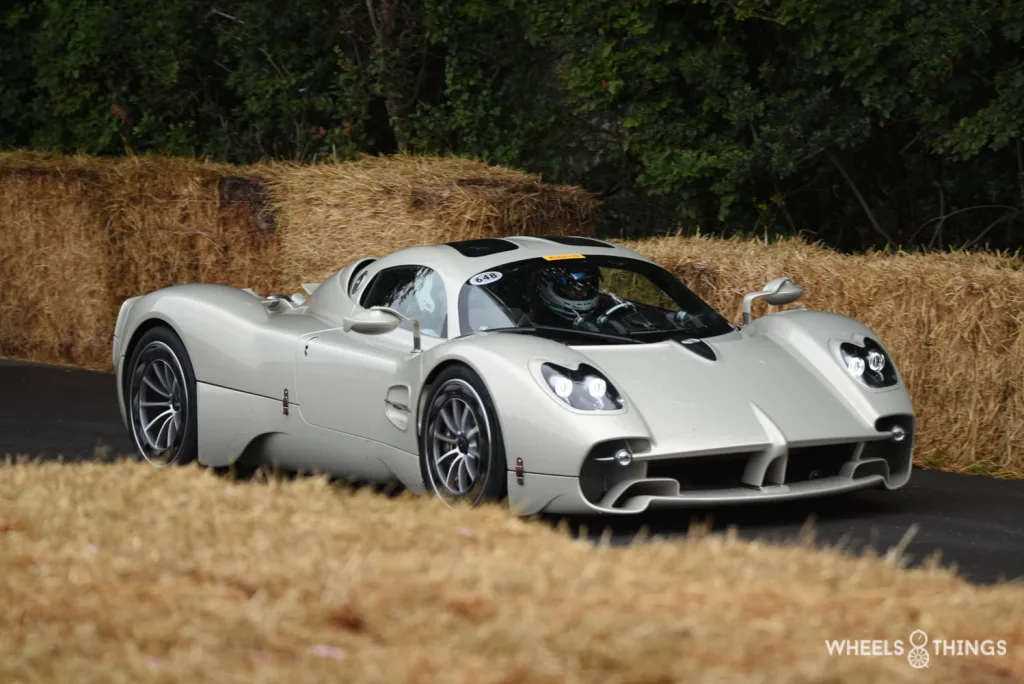
The Festival of Speed 2023 was one that could hark back to pre-pandemic editions. Like many other events, the FOS had to find its way back to the top. And they certainly succeeded in this and this even without Saturday’s top day.
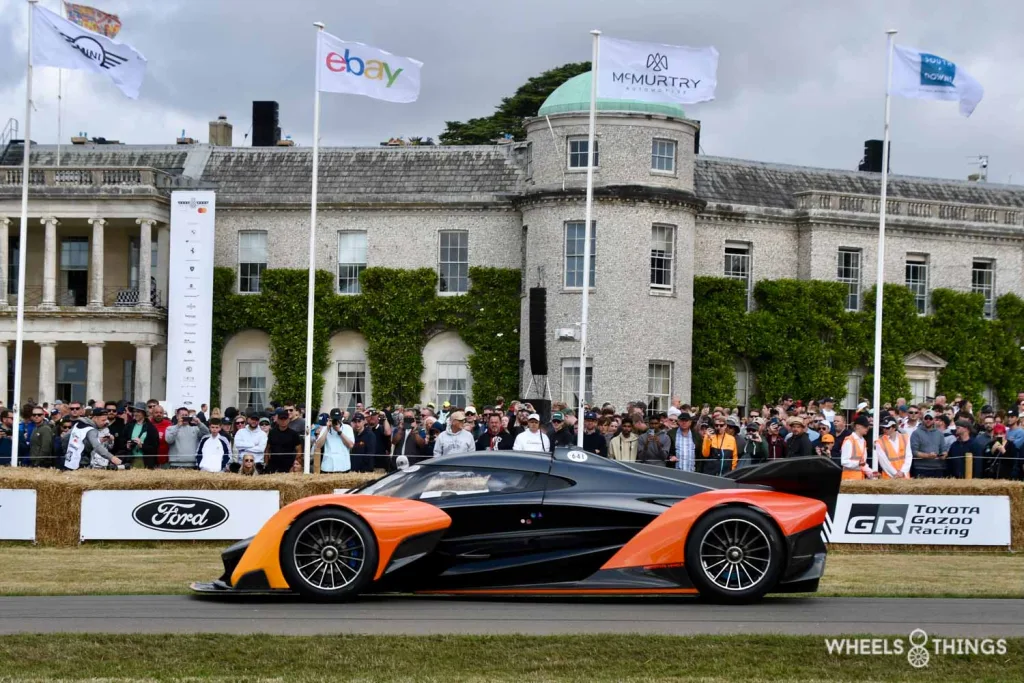
And we repeat: if you do one a year: don’t hesitate, it’s at Goodwood and at the Festival of Speed that you should be.
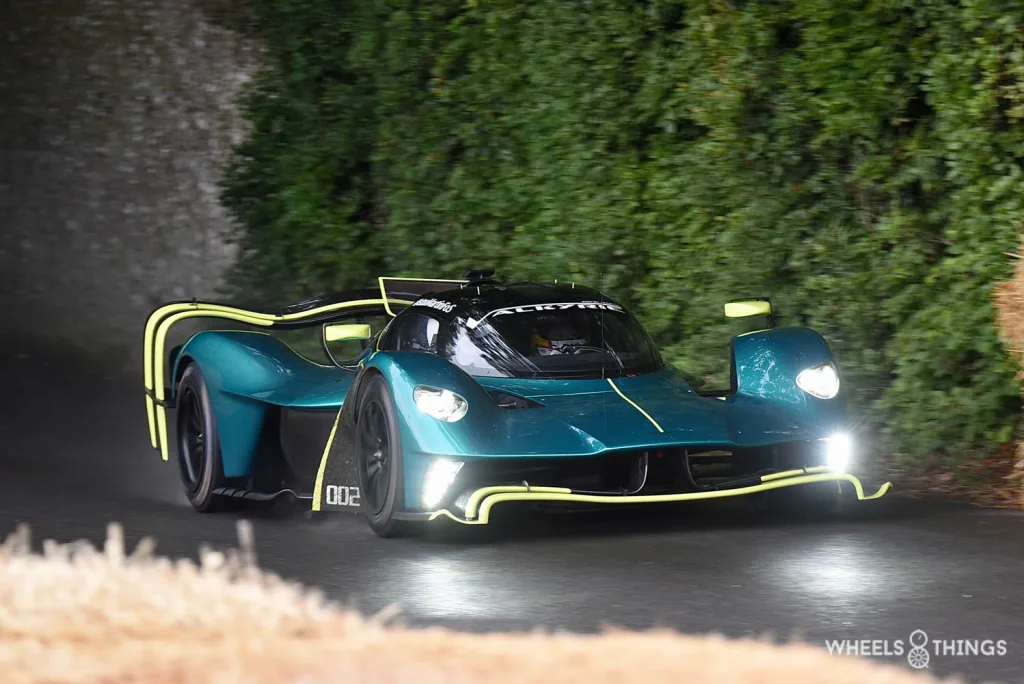
You immediately forget the many traffic jams you have to face once you enter the venue and then it is 100% pure experience. And we were not alone in this opinion as the event was completely sold out beforehand.
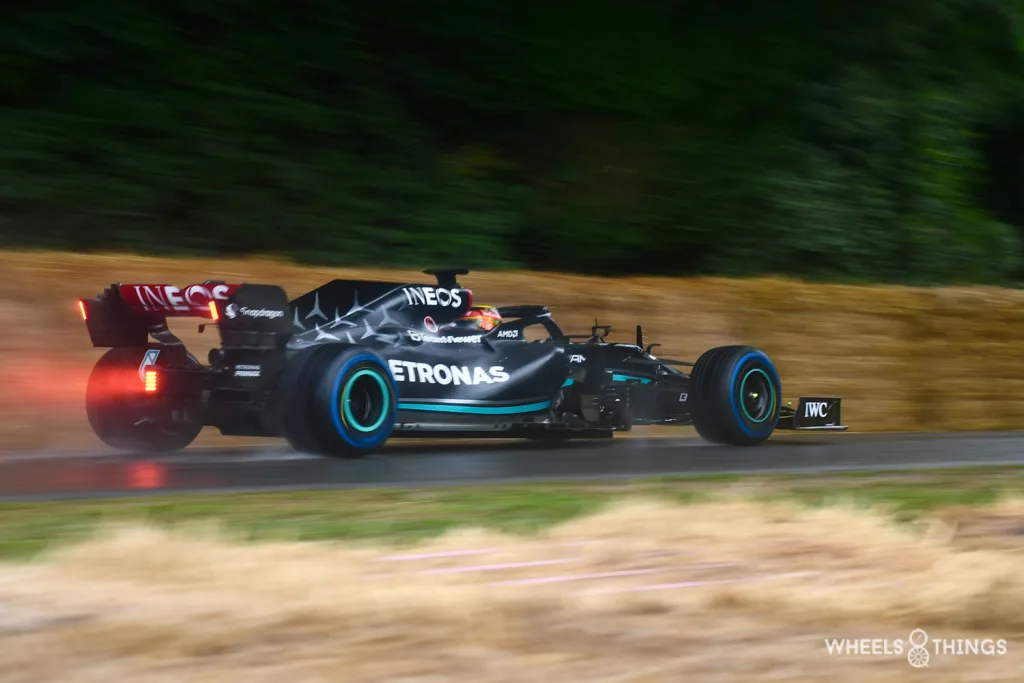
The cancellation of Saturday was obviously a bummer but even with 75% speed, the Festival of Speed remains unique and a top event. And, of course, you still have clappers like Pebble Beach or the Villa d’ Este but the Festival of Speed is still above that. This is simply the best car and motorsport event in the world.
